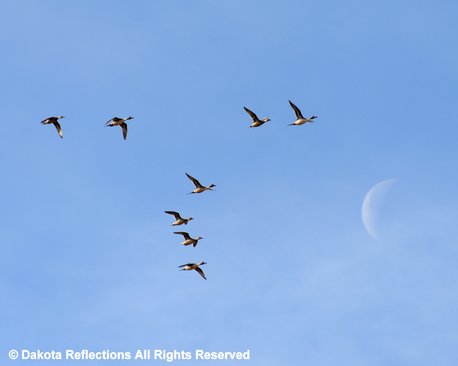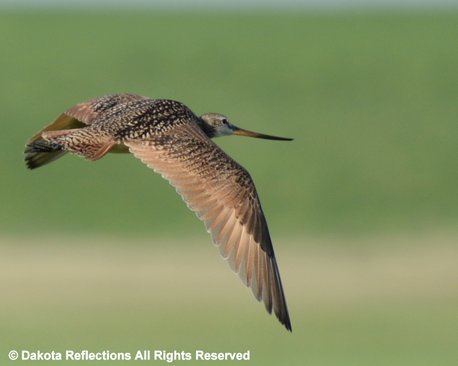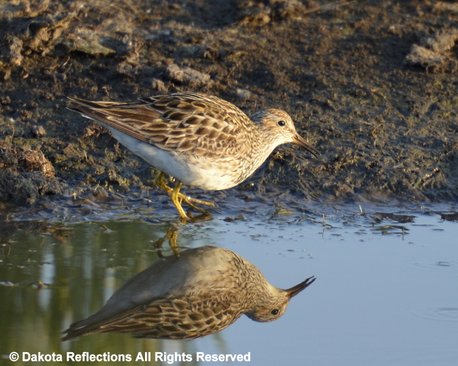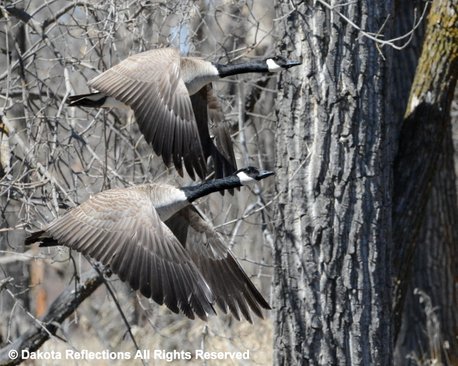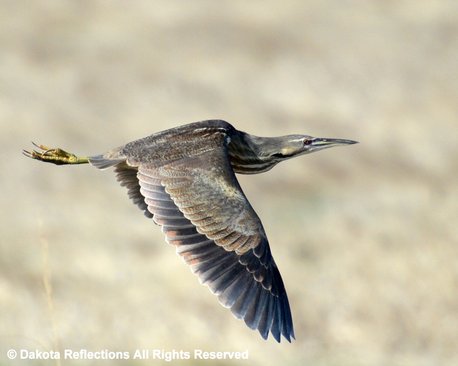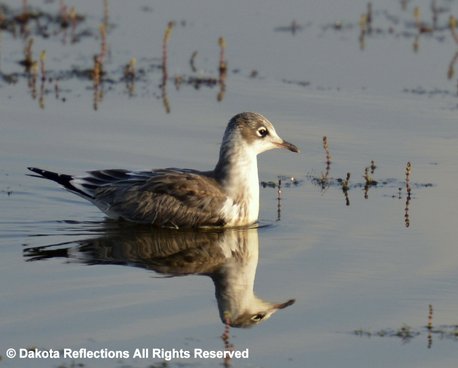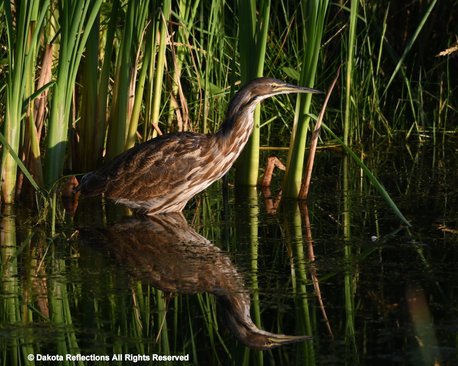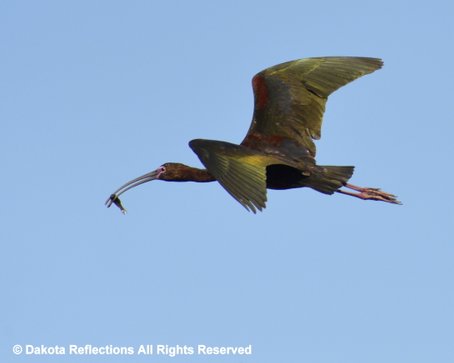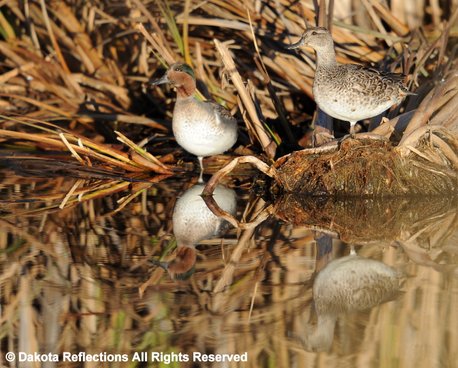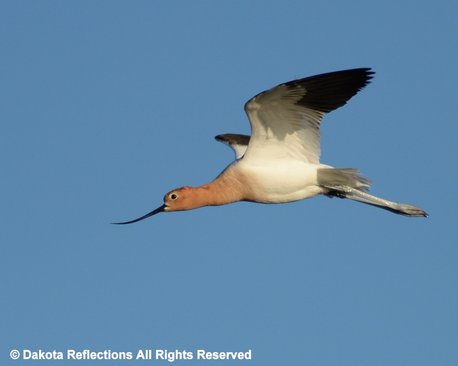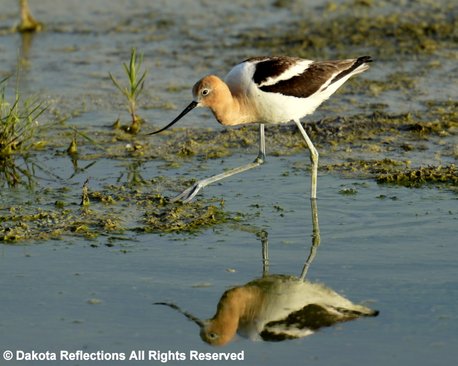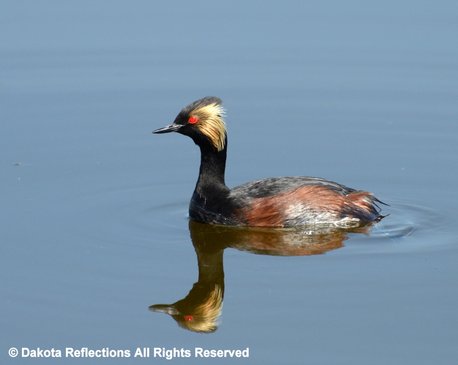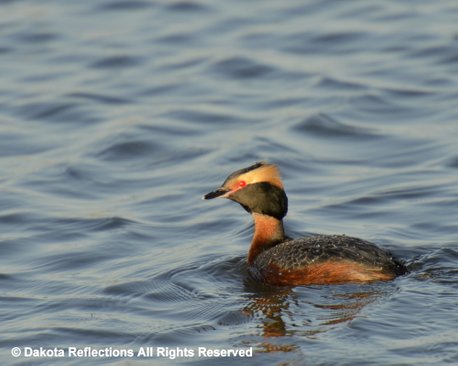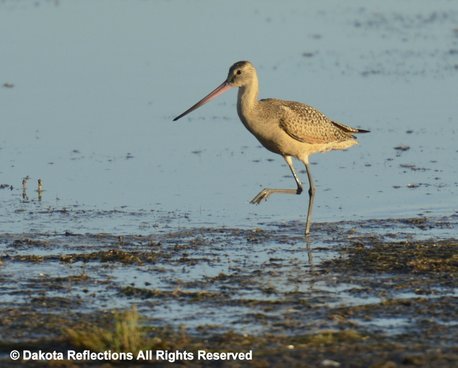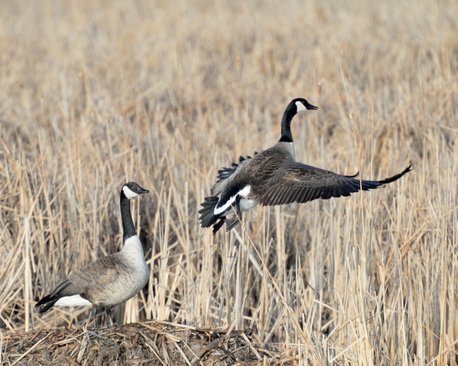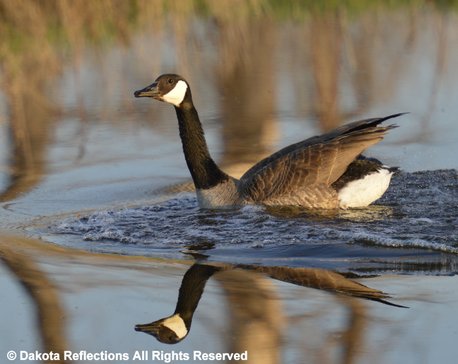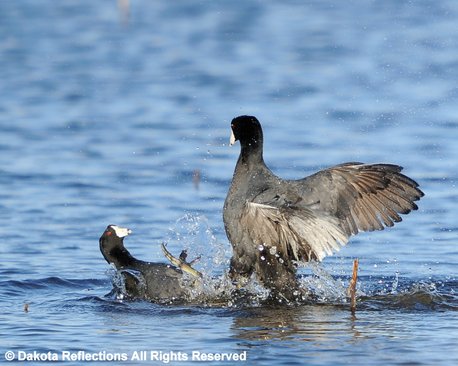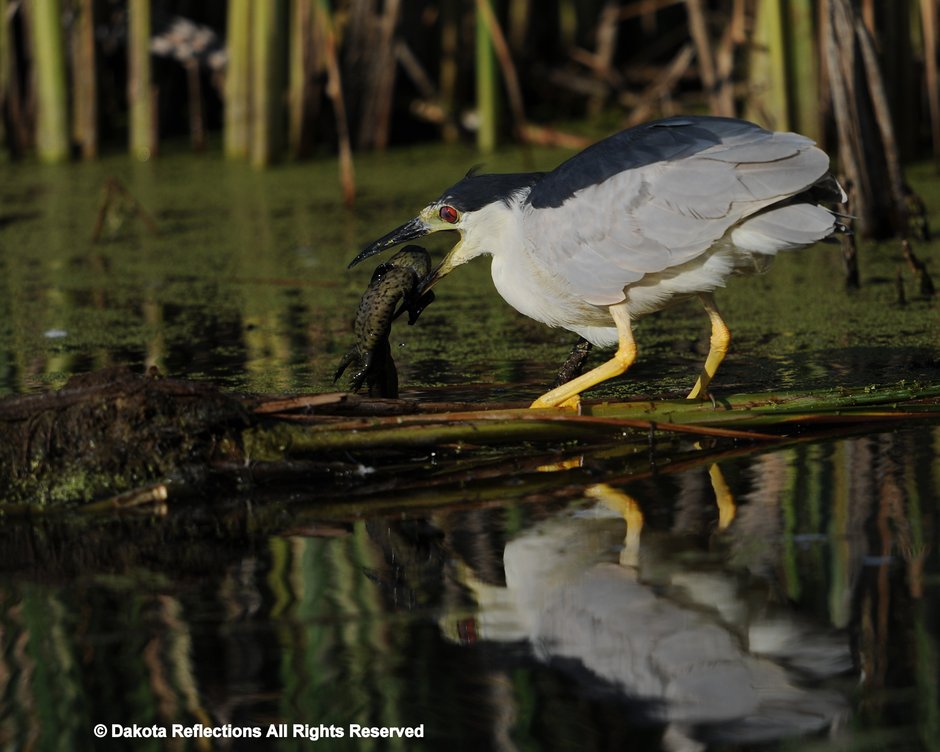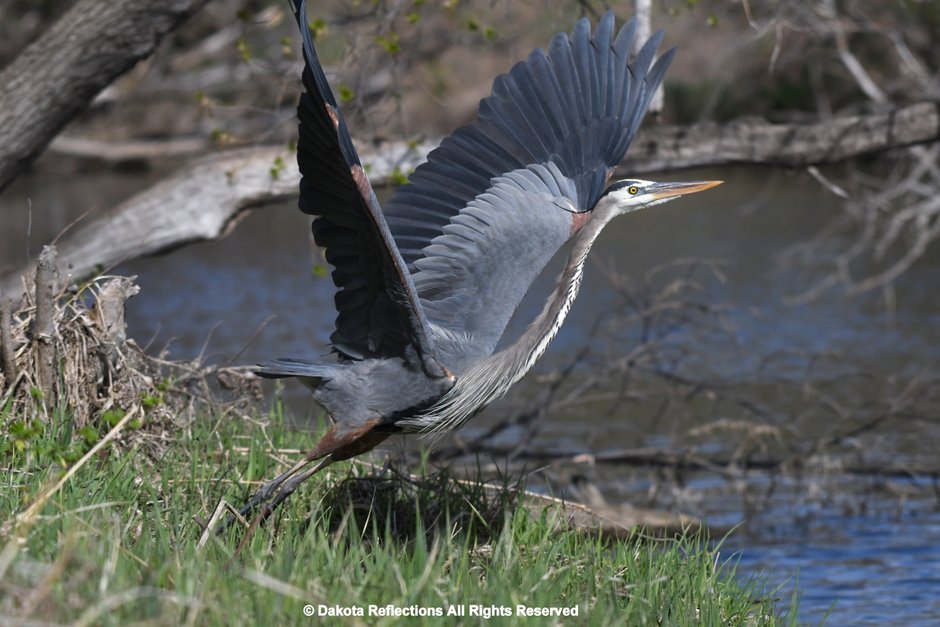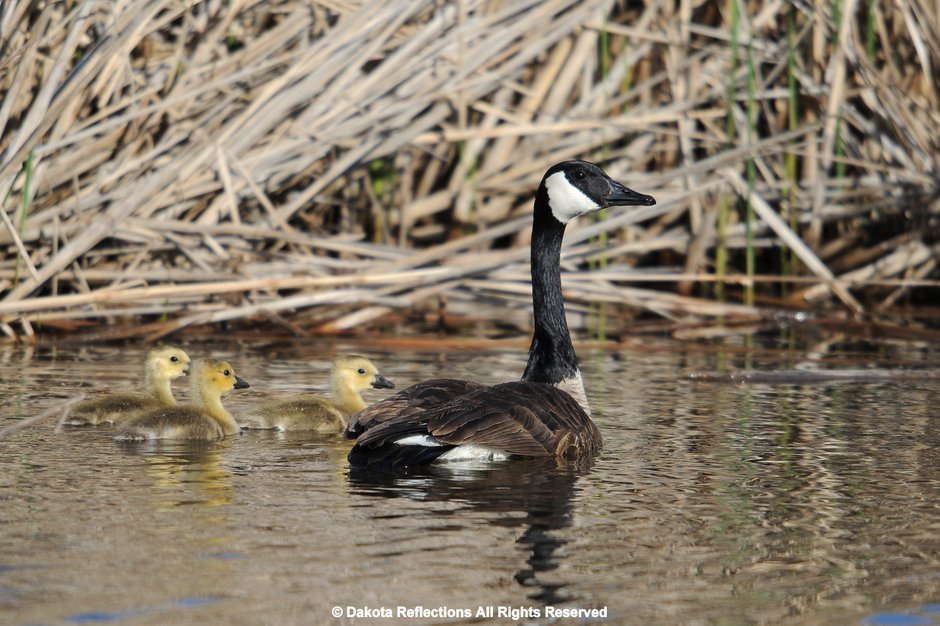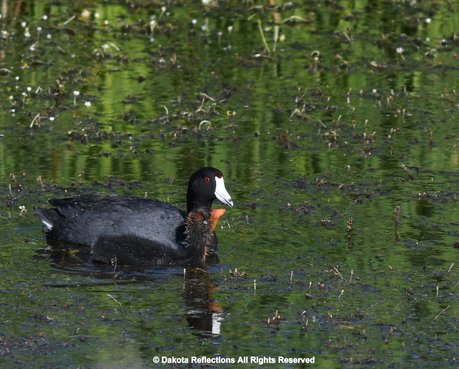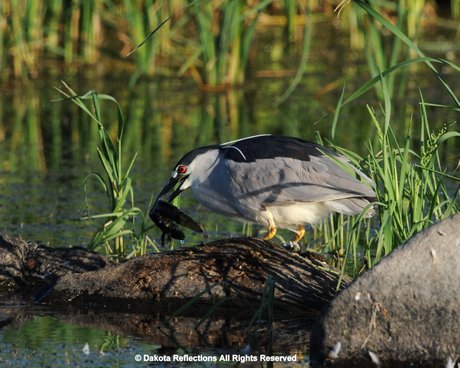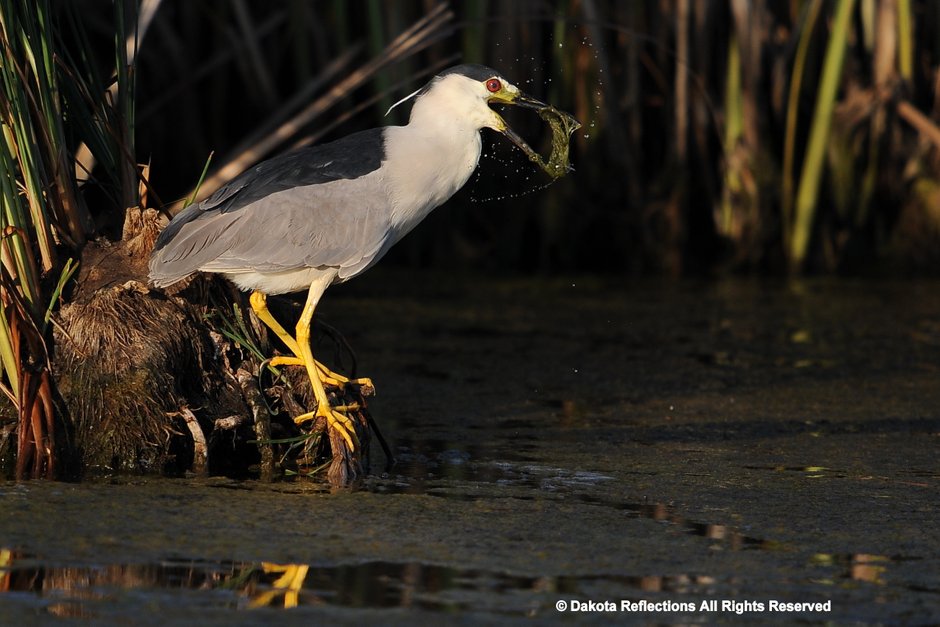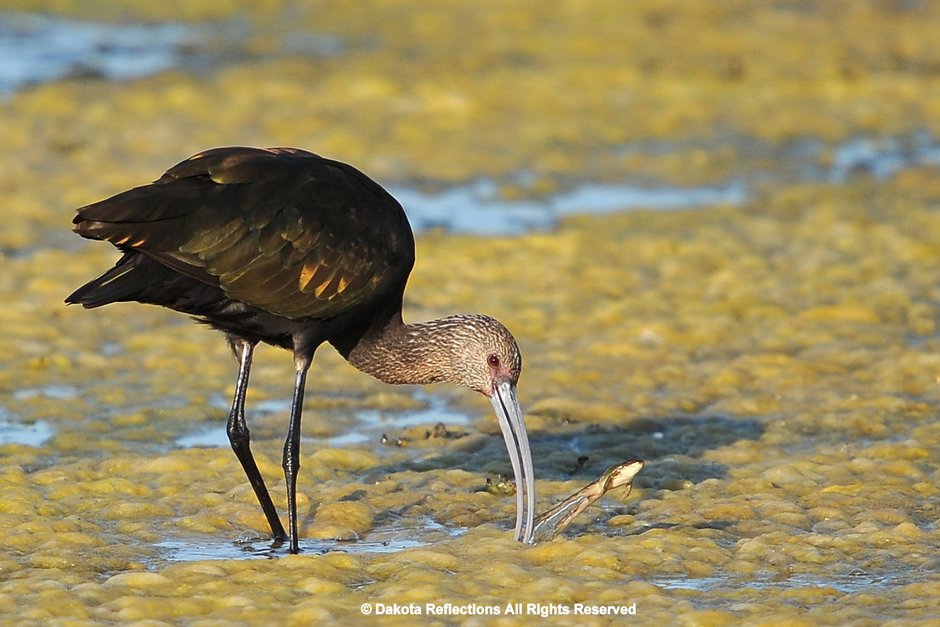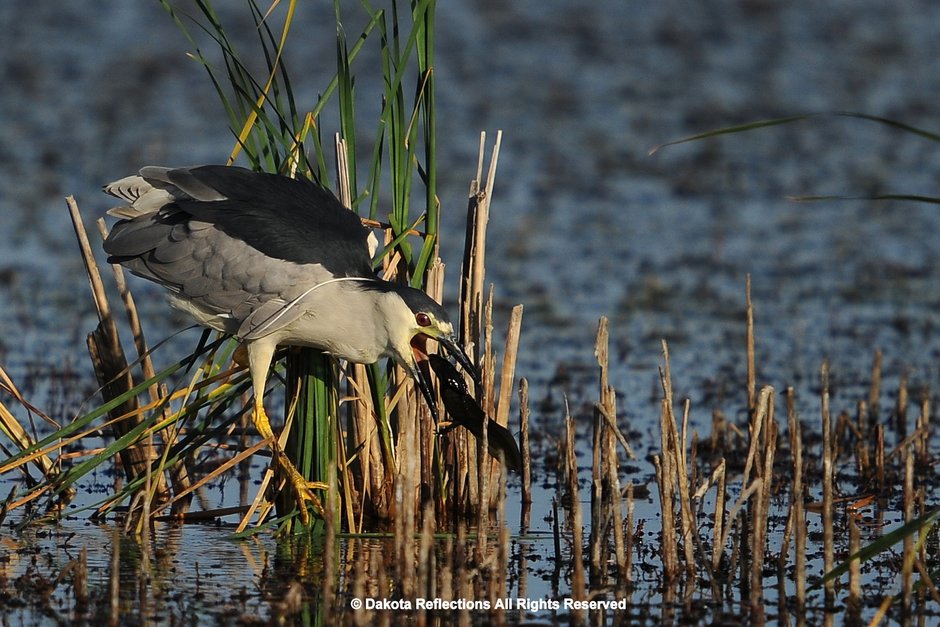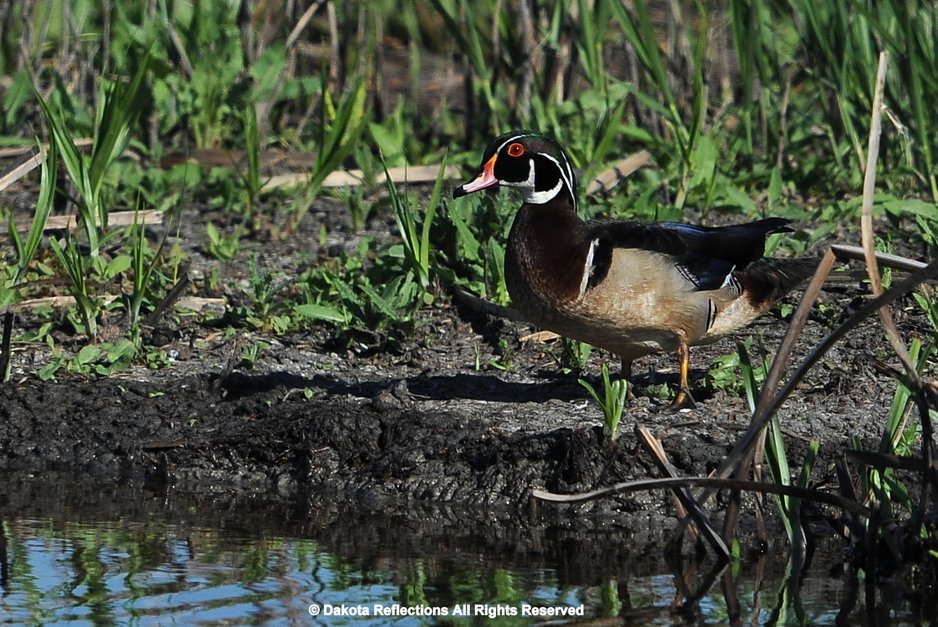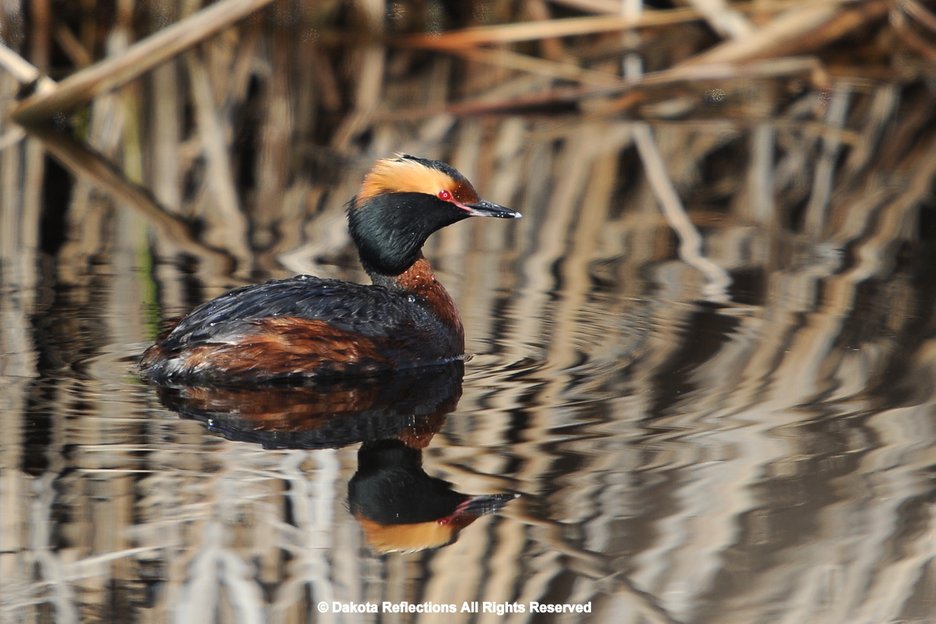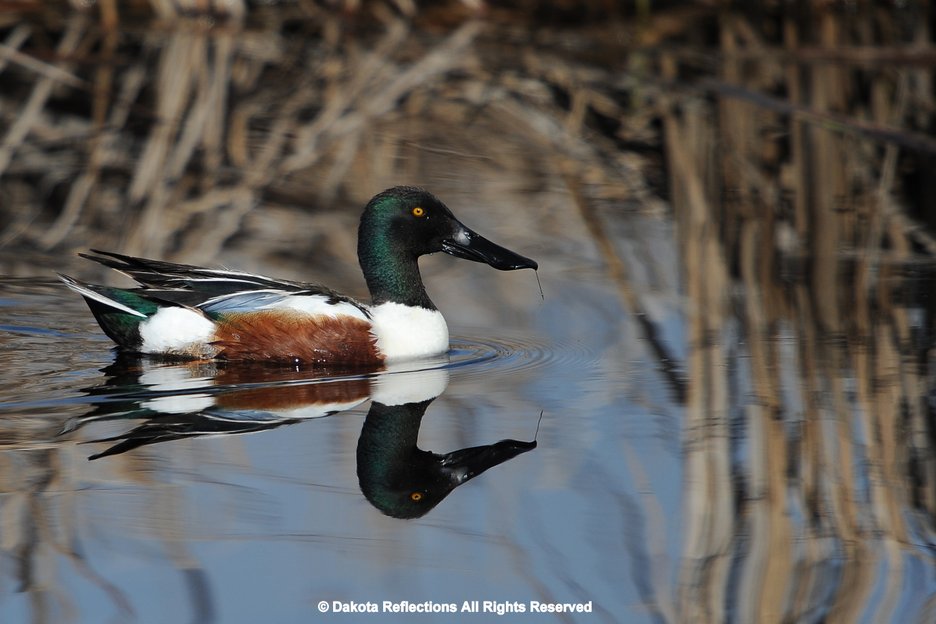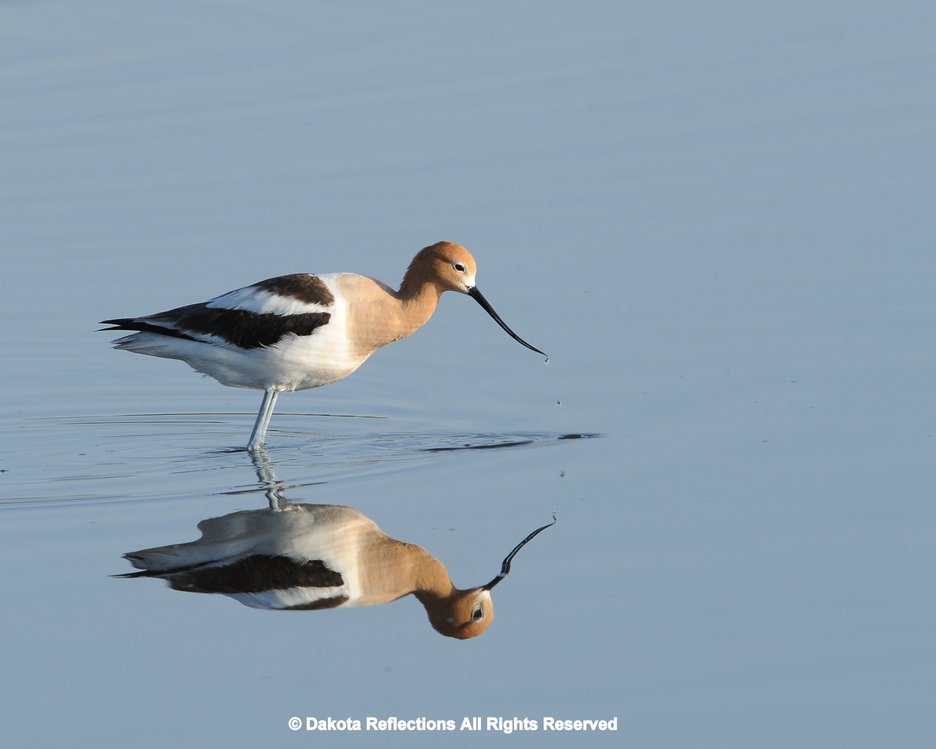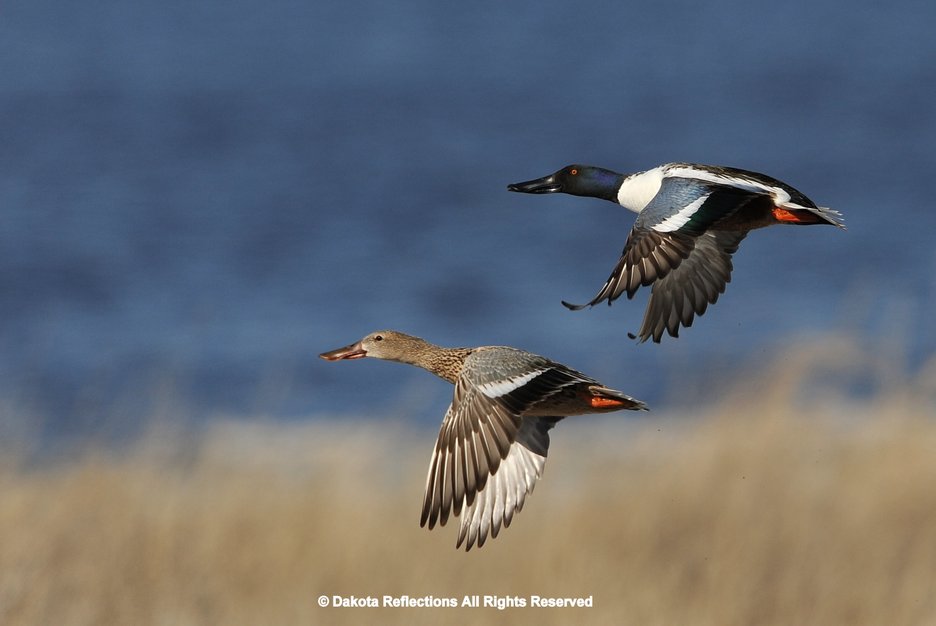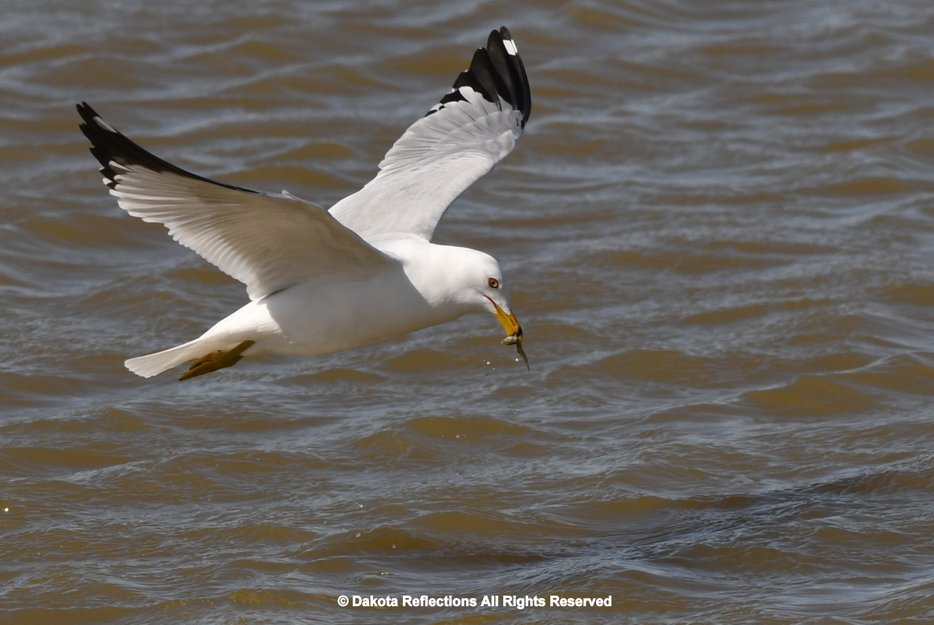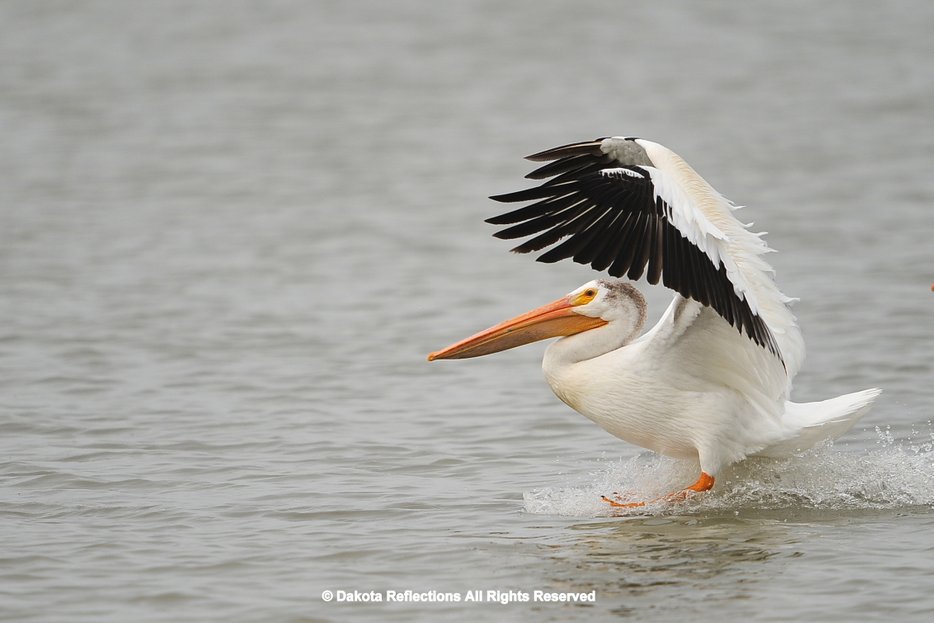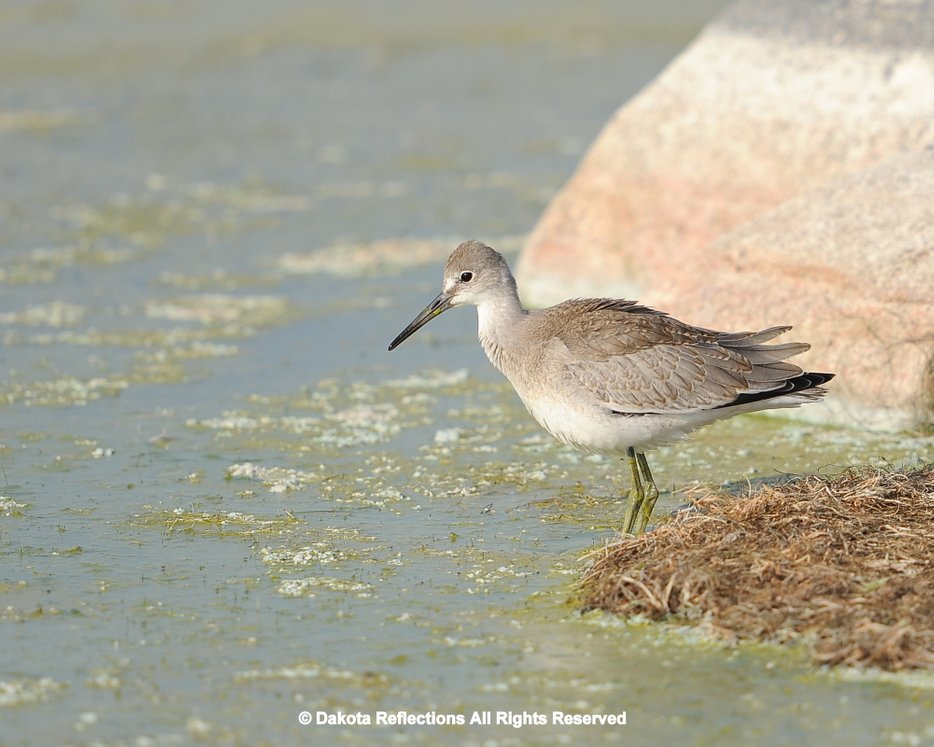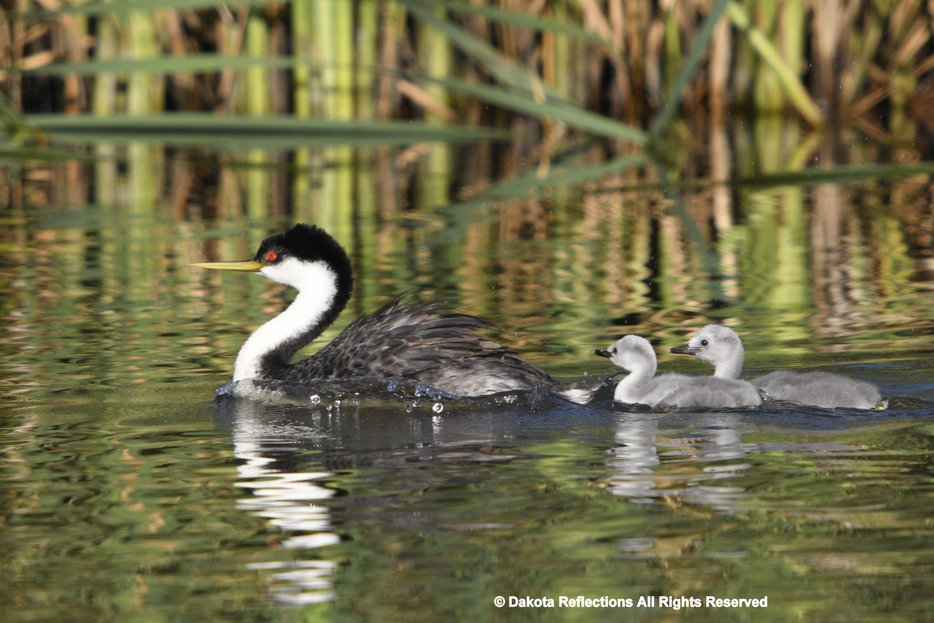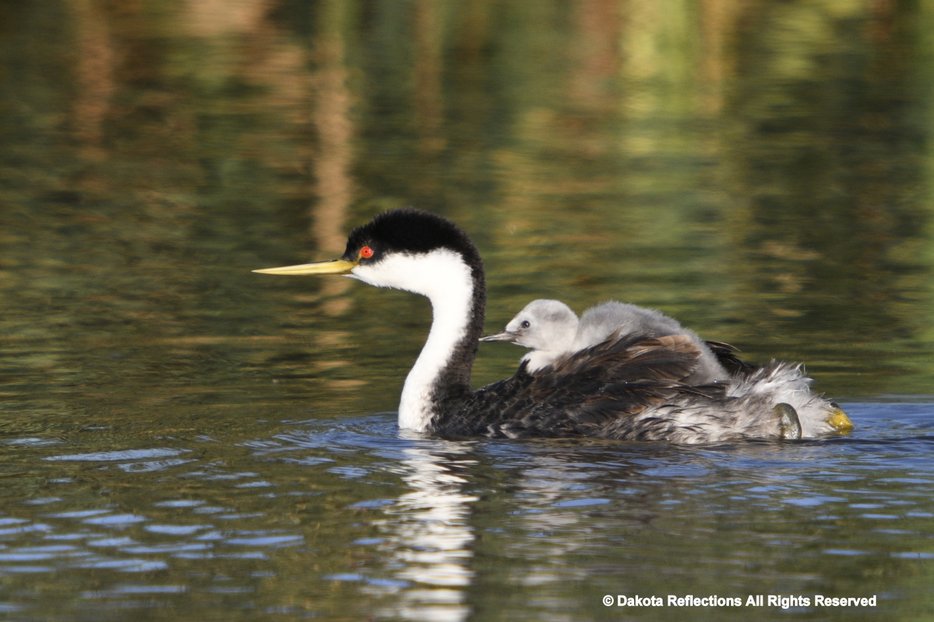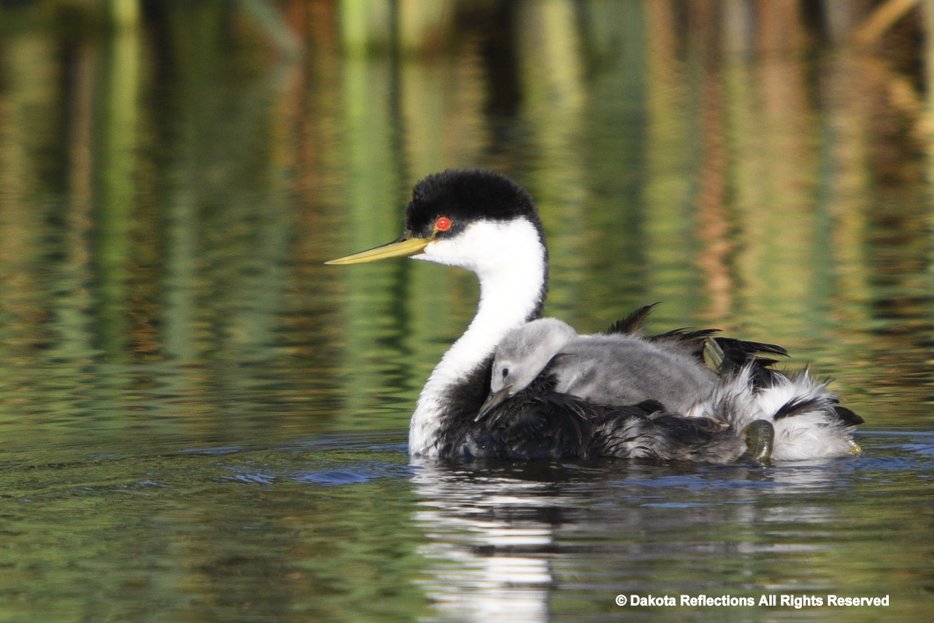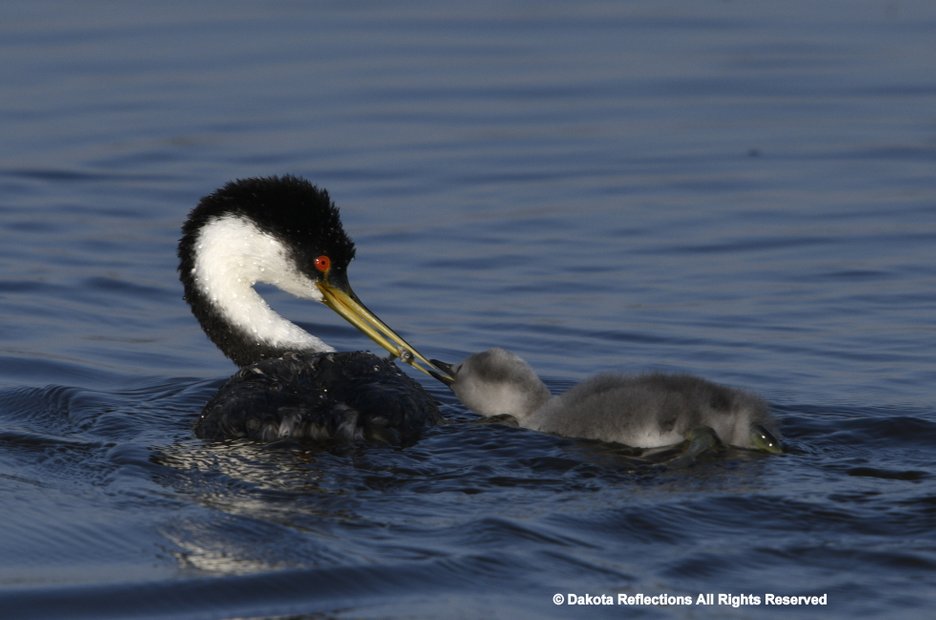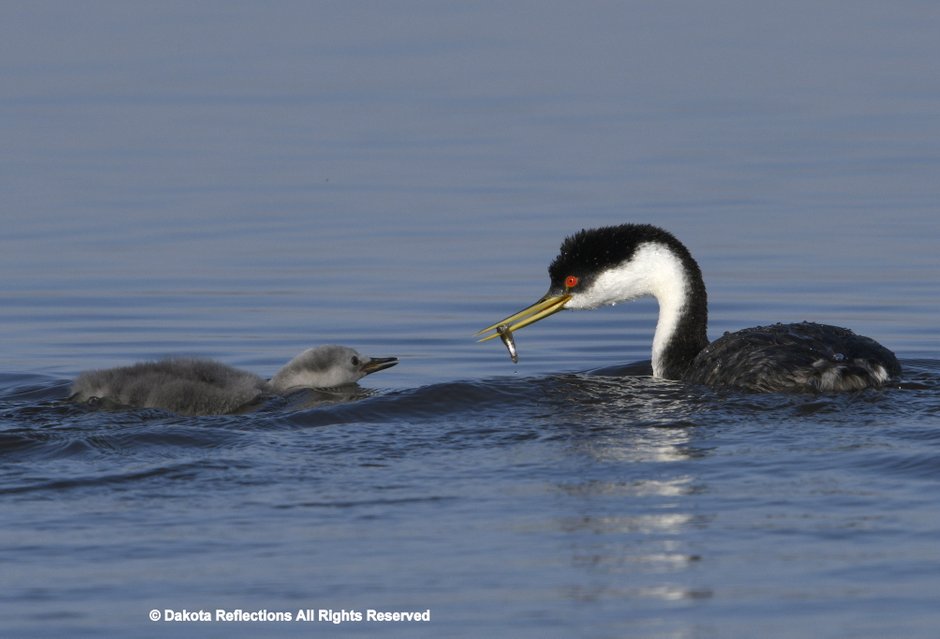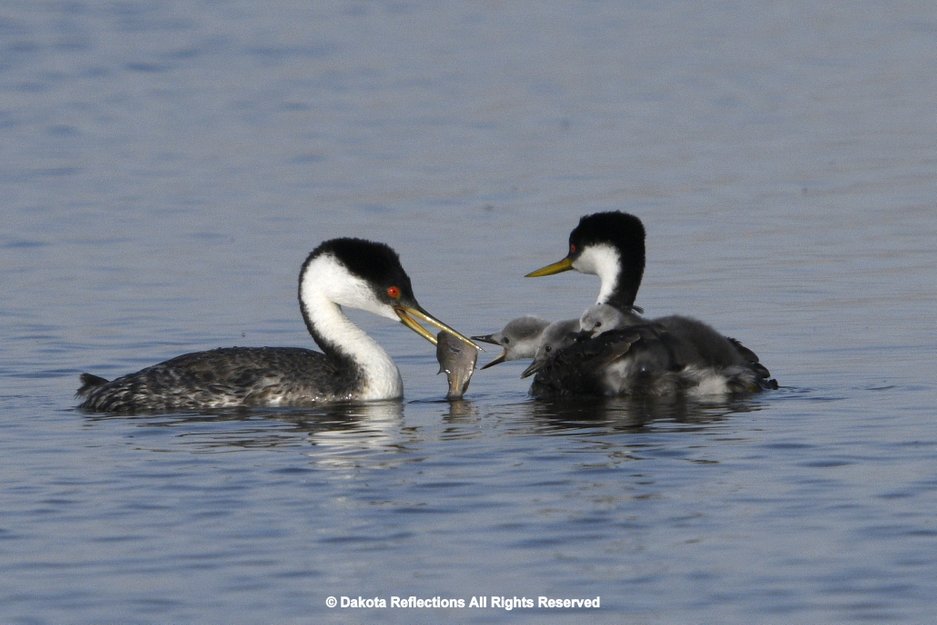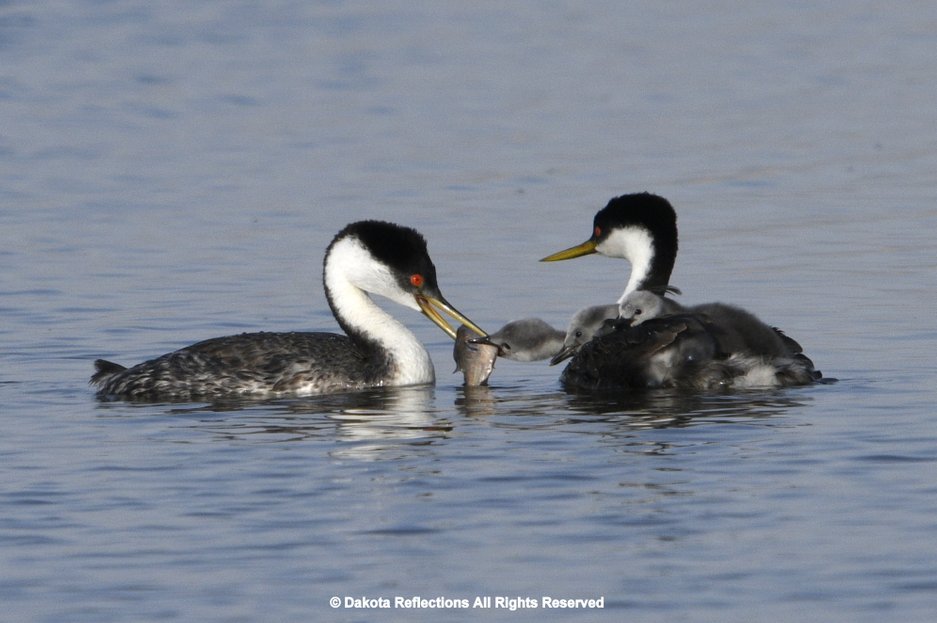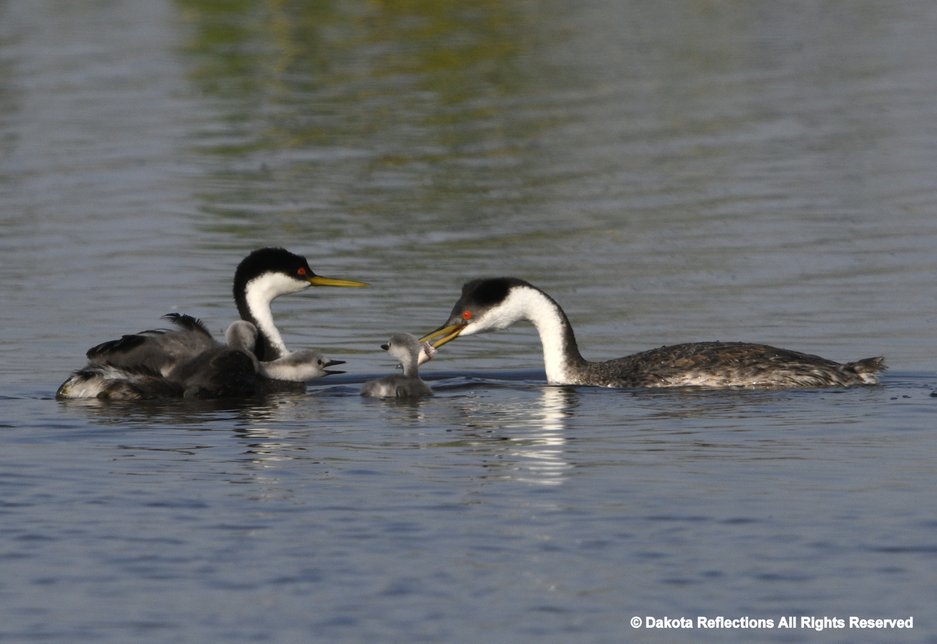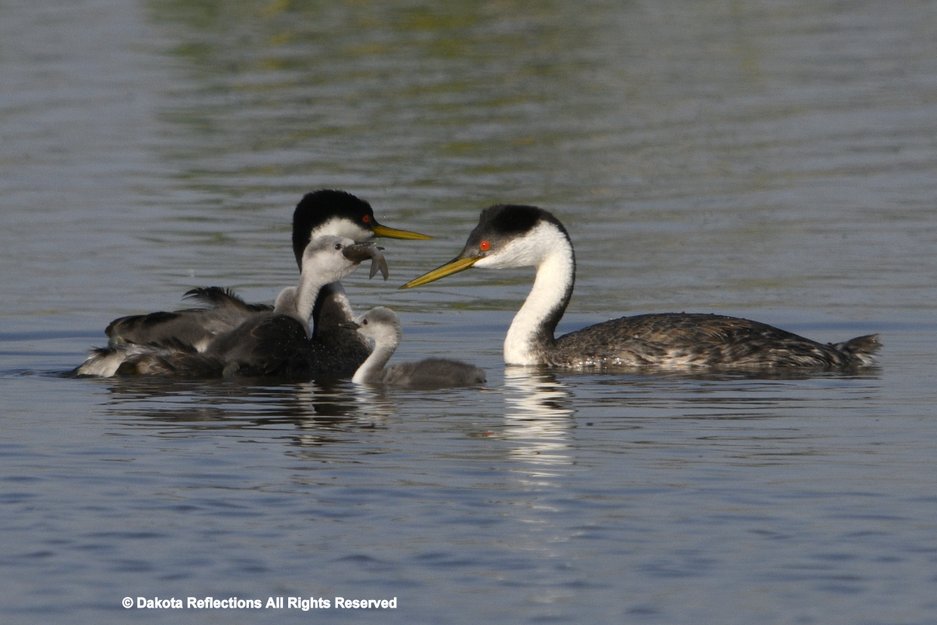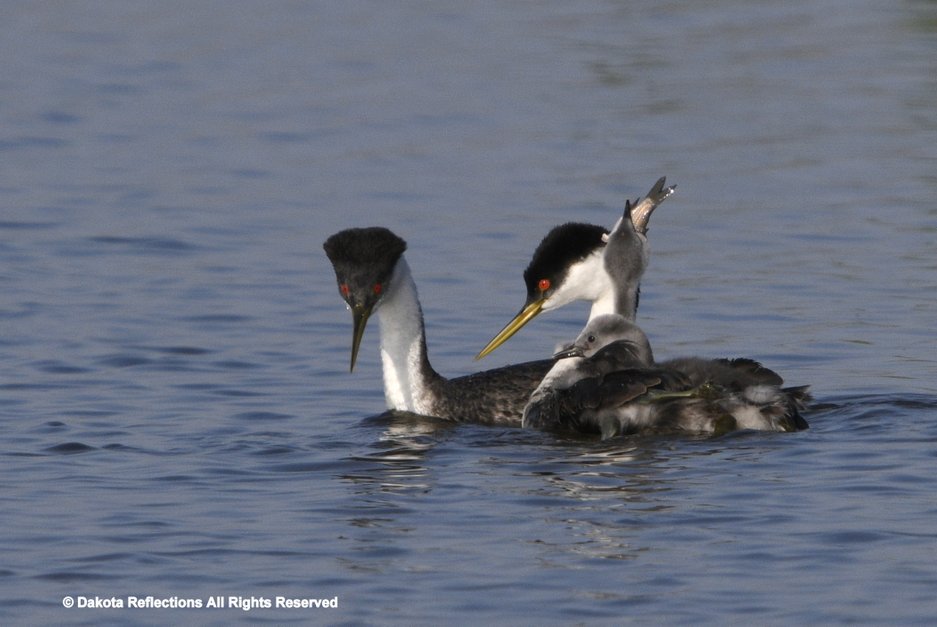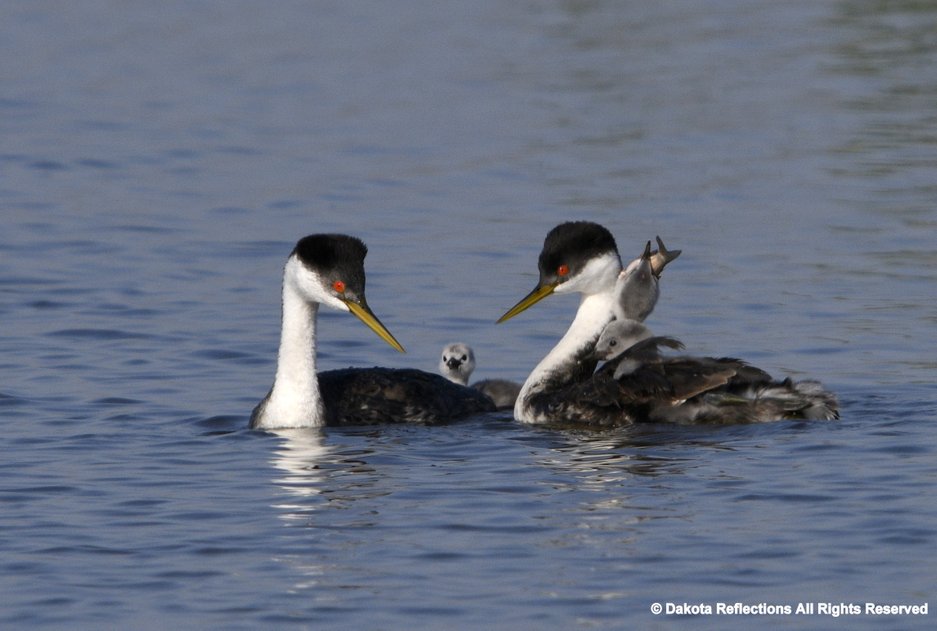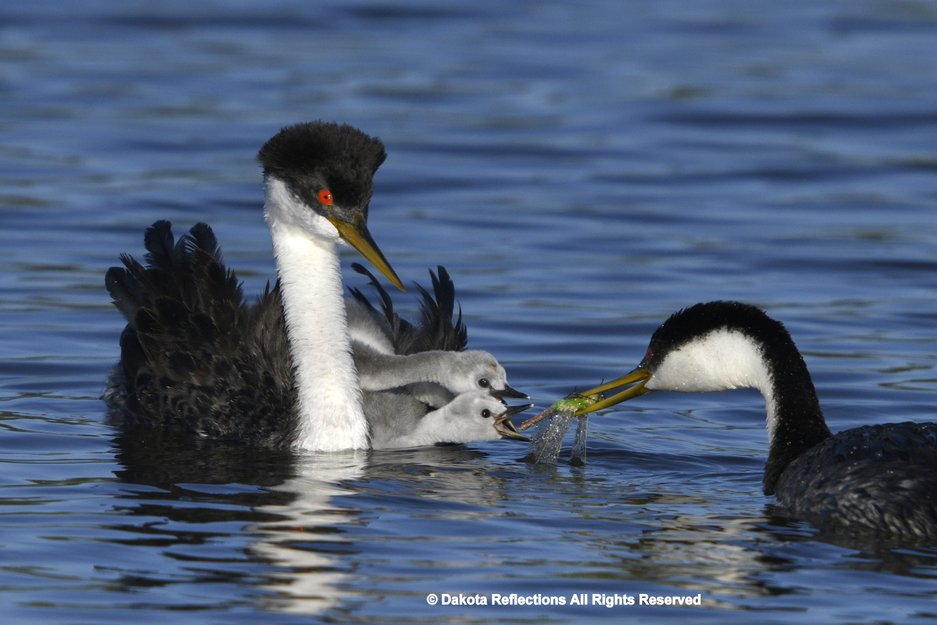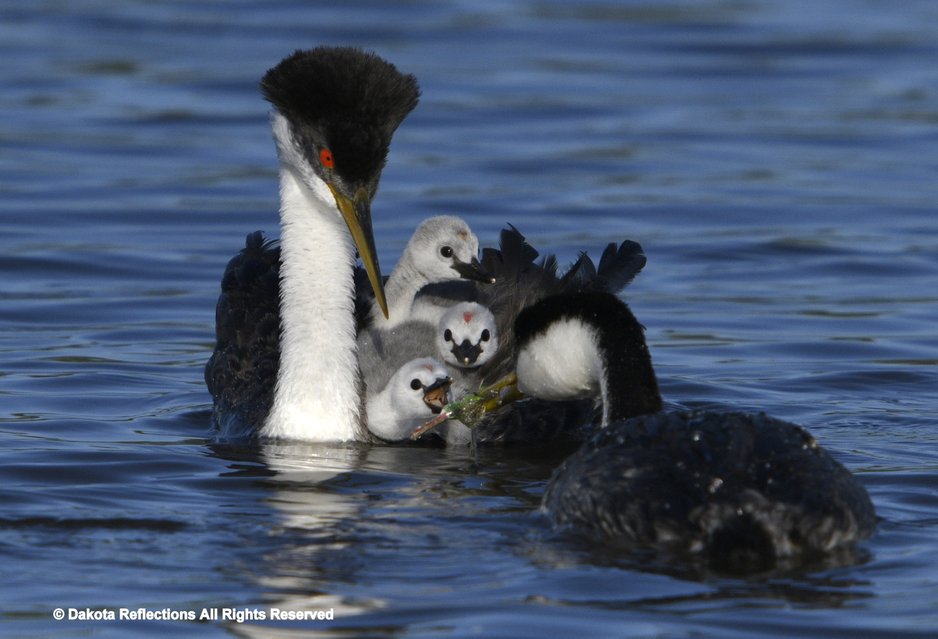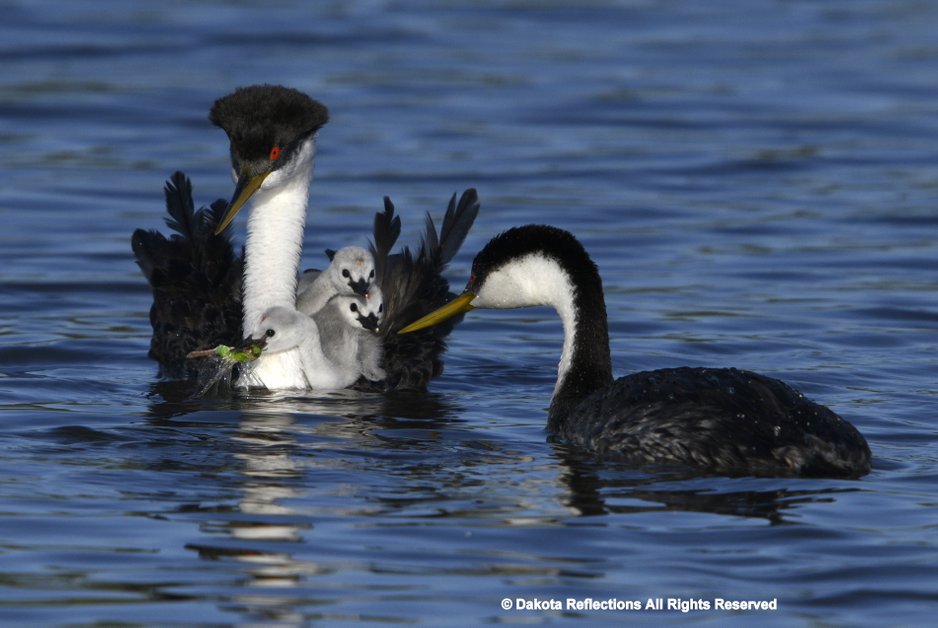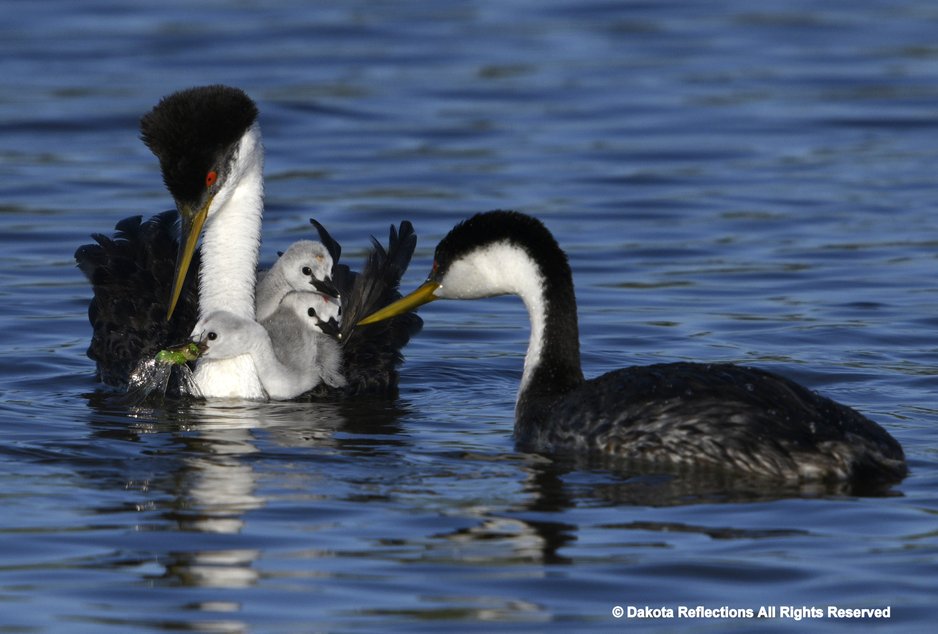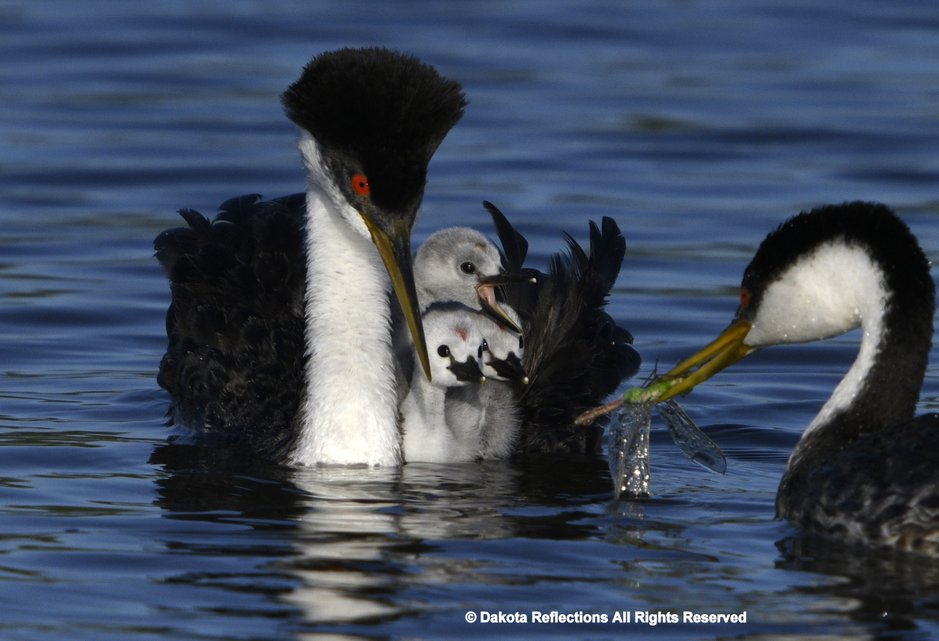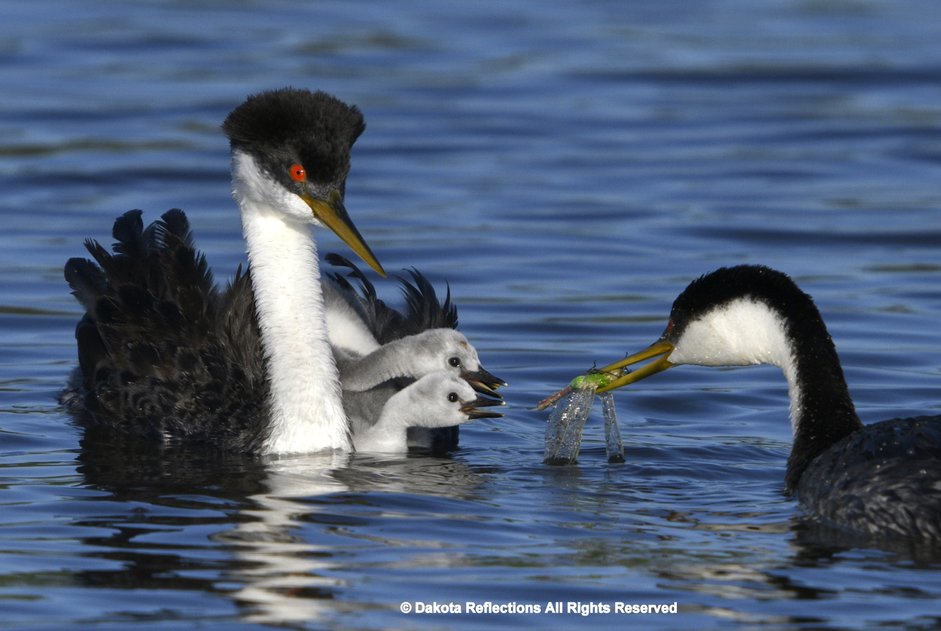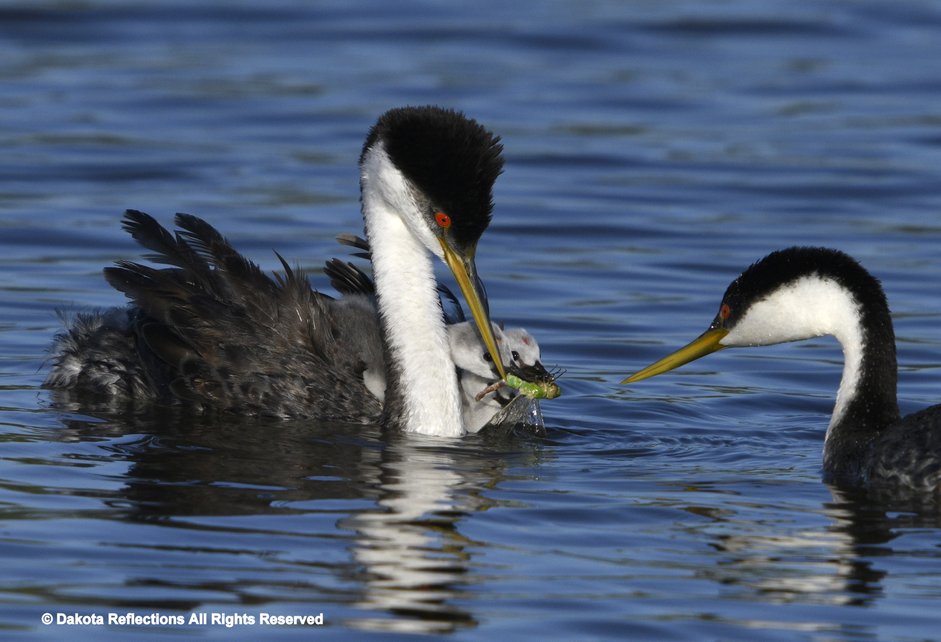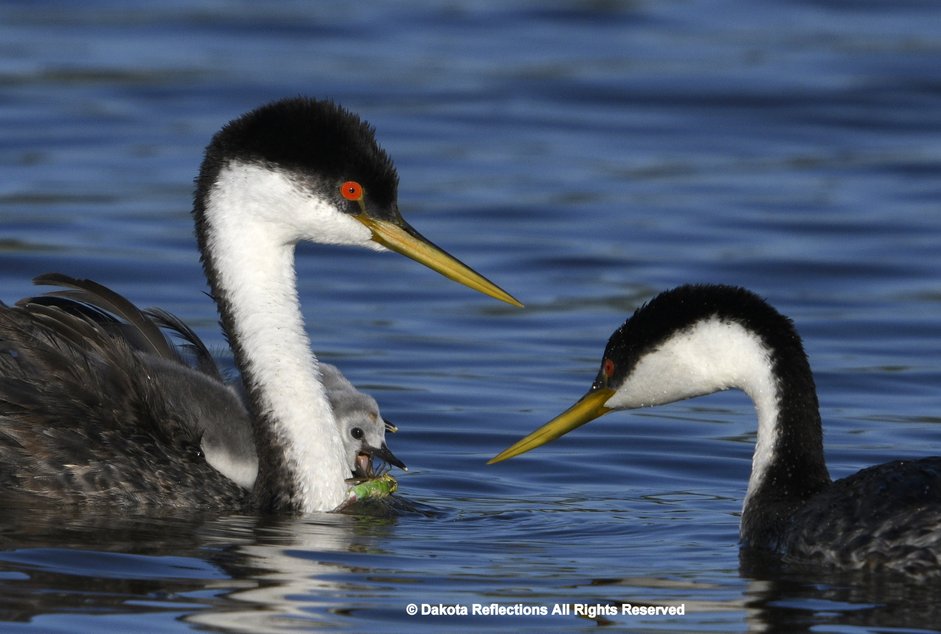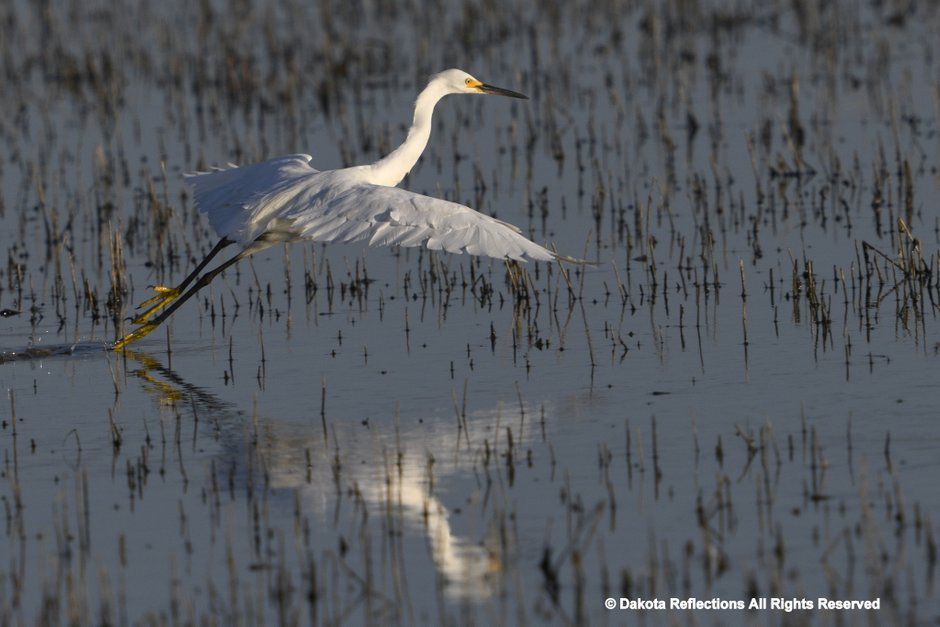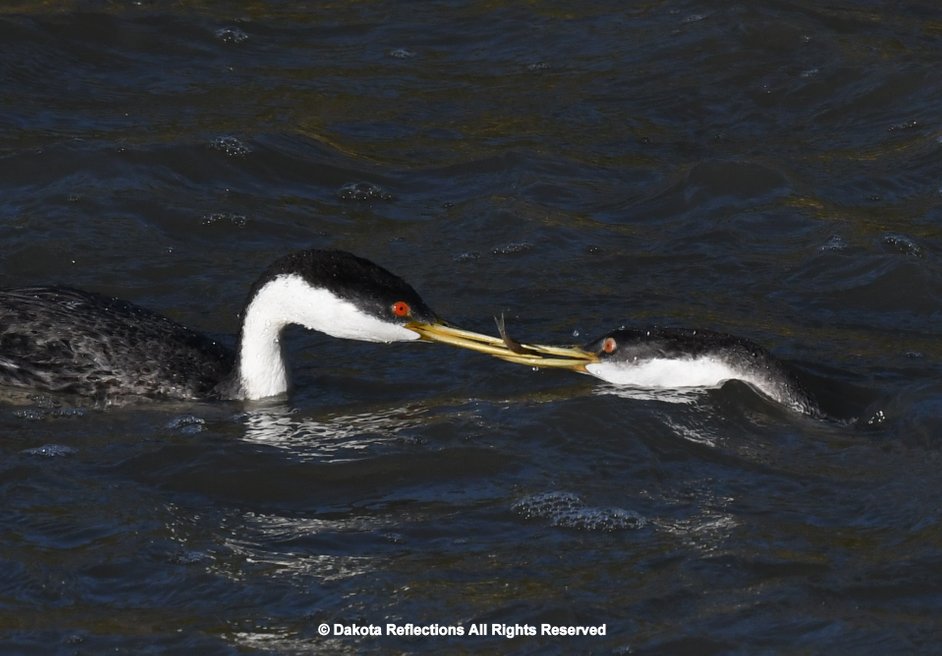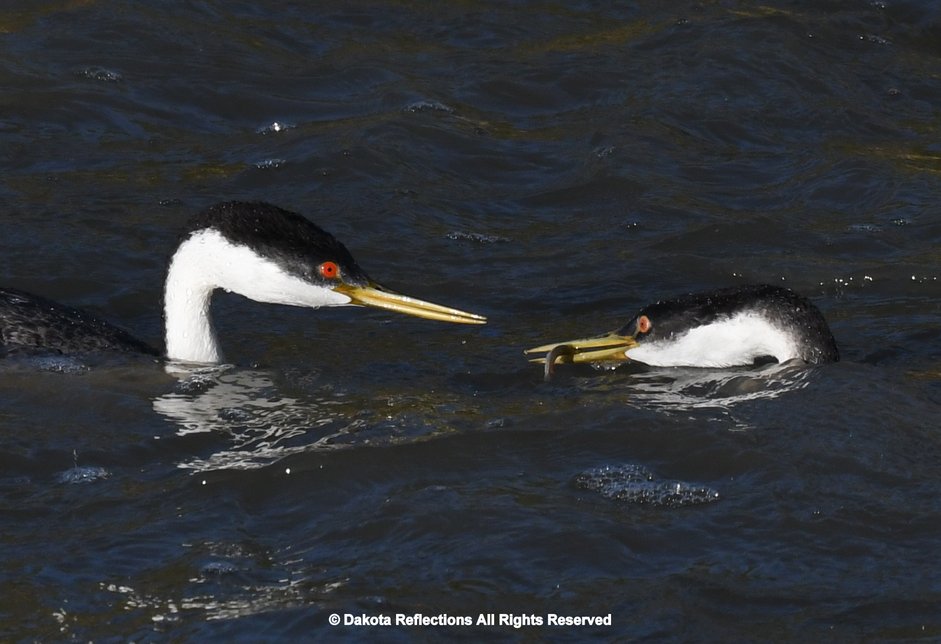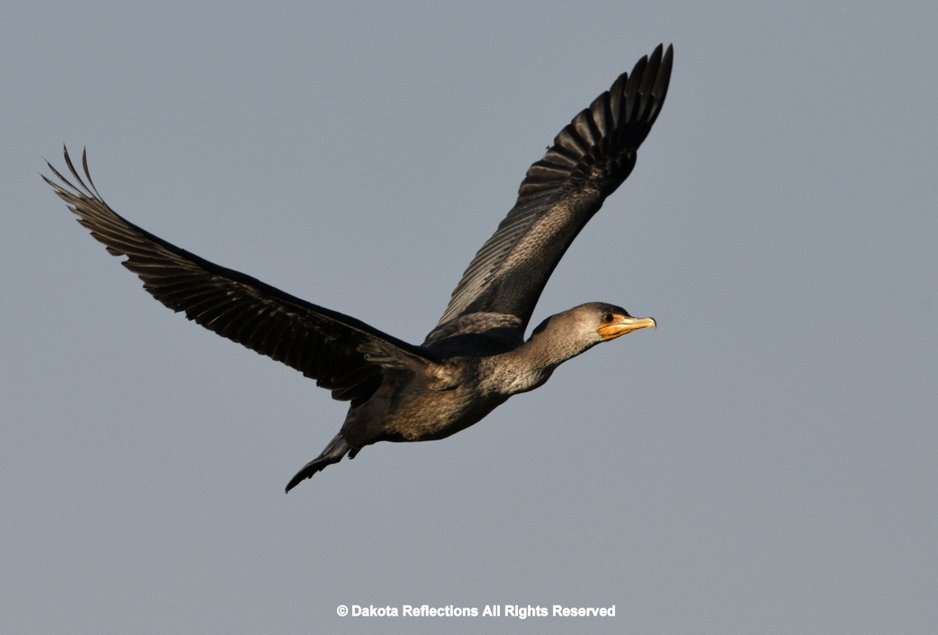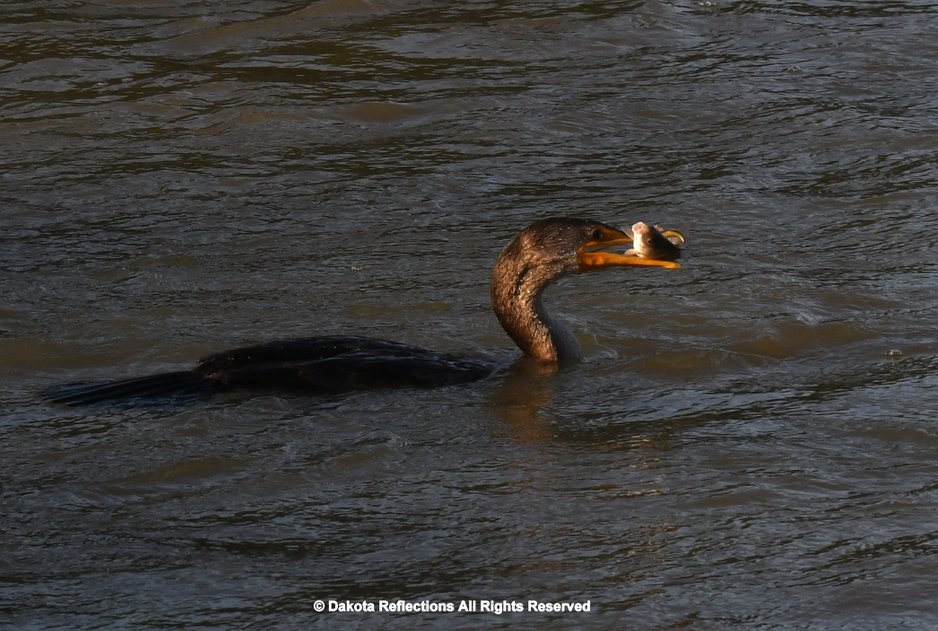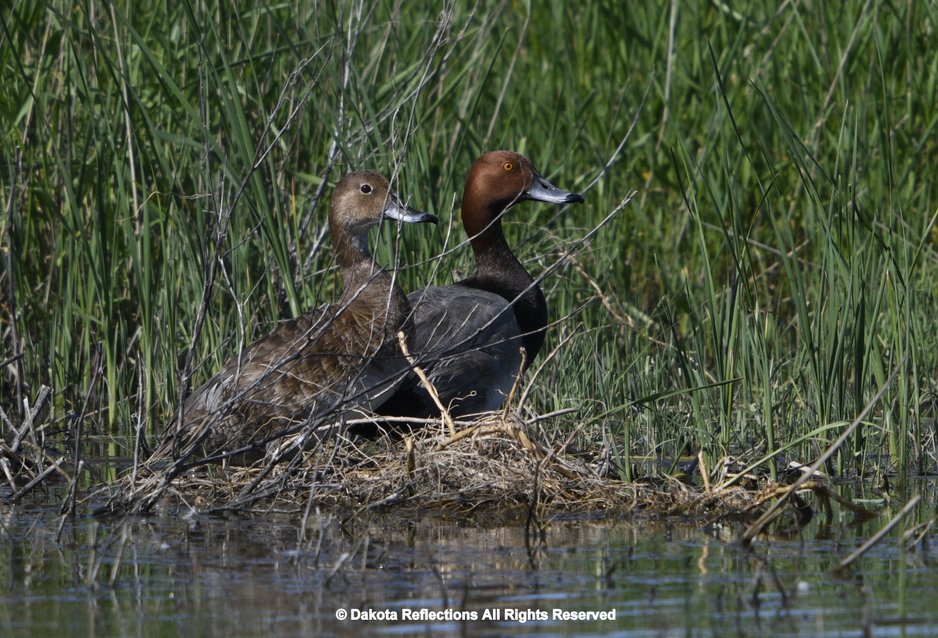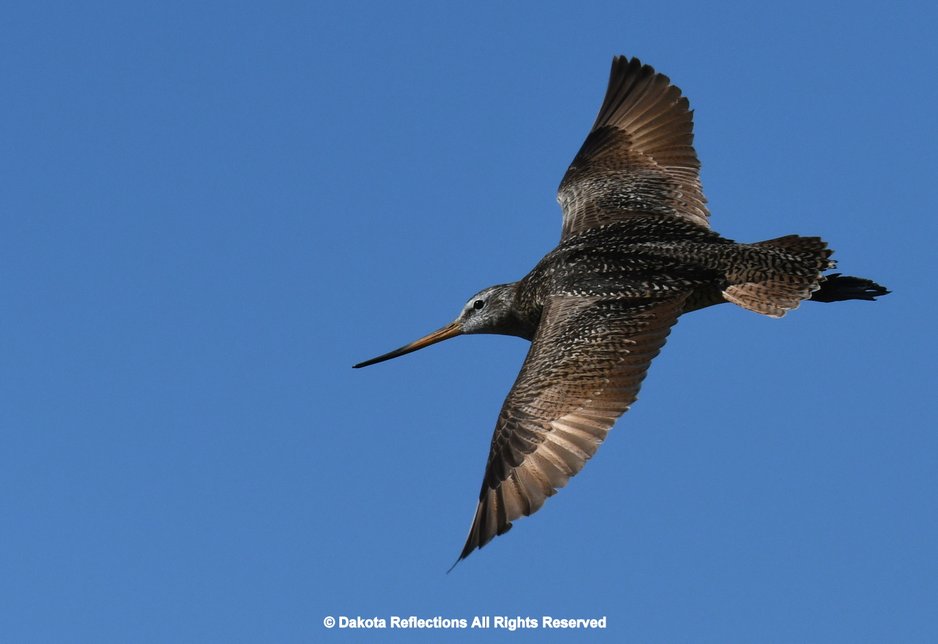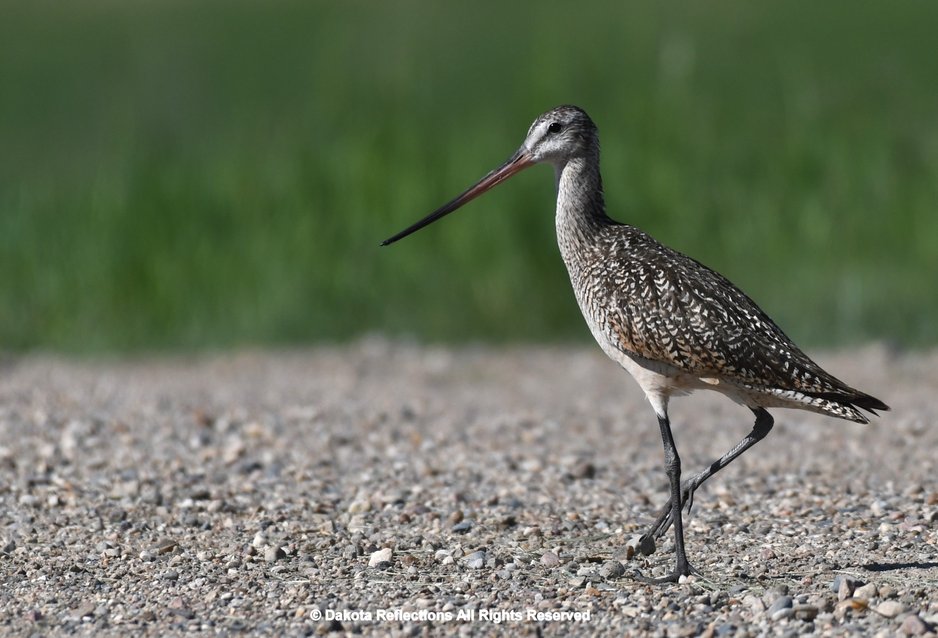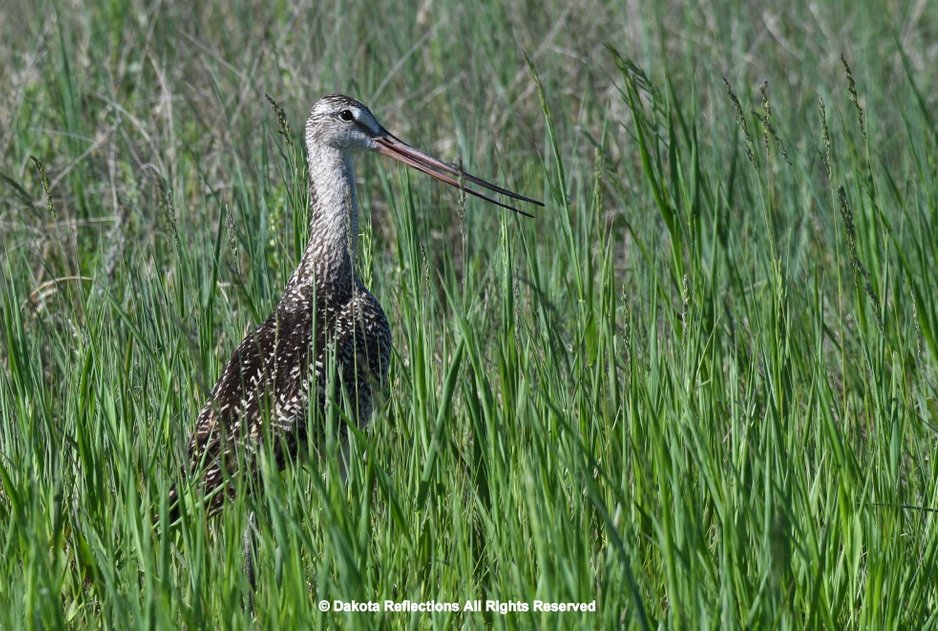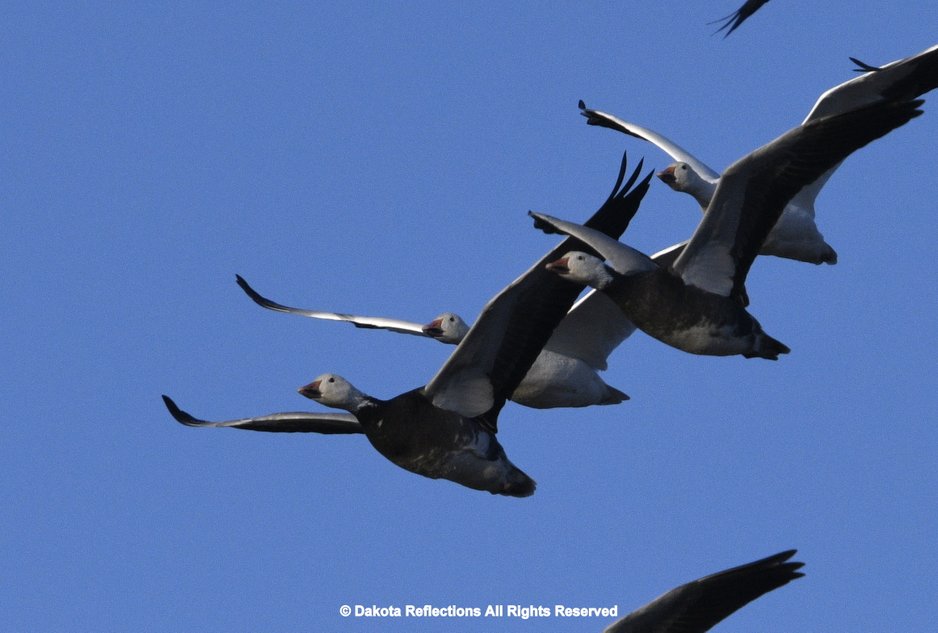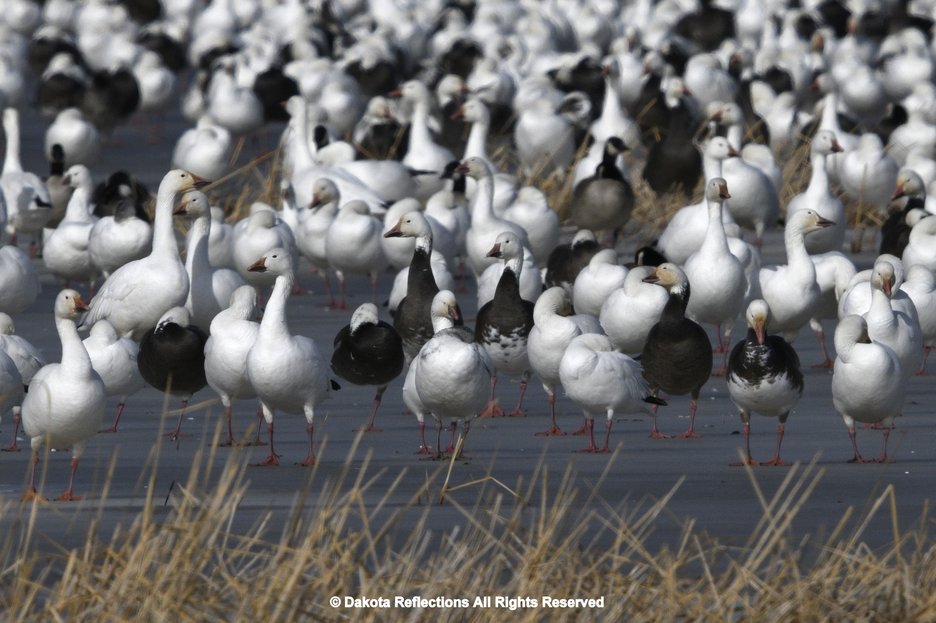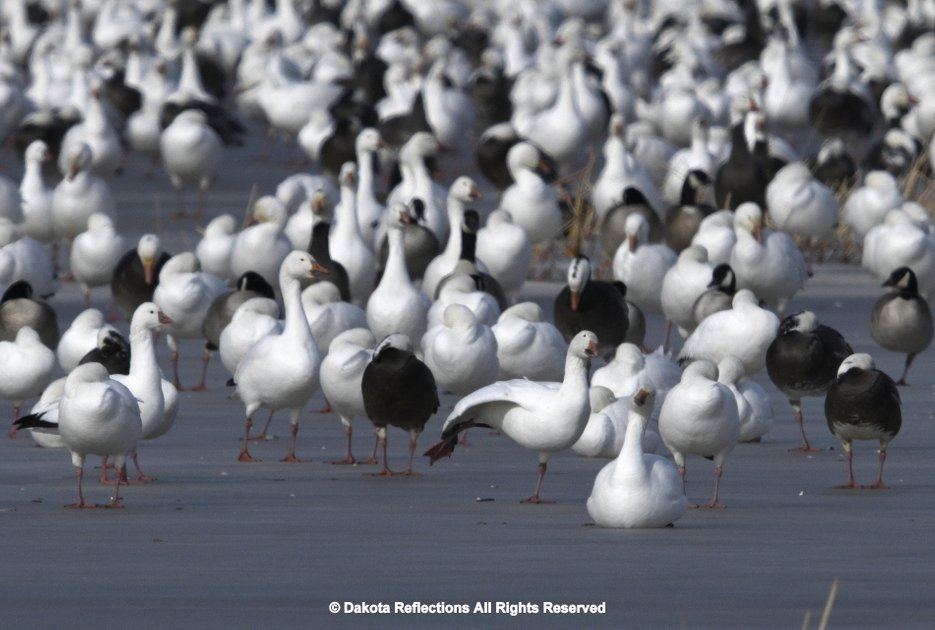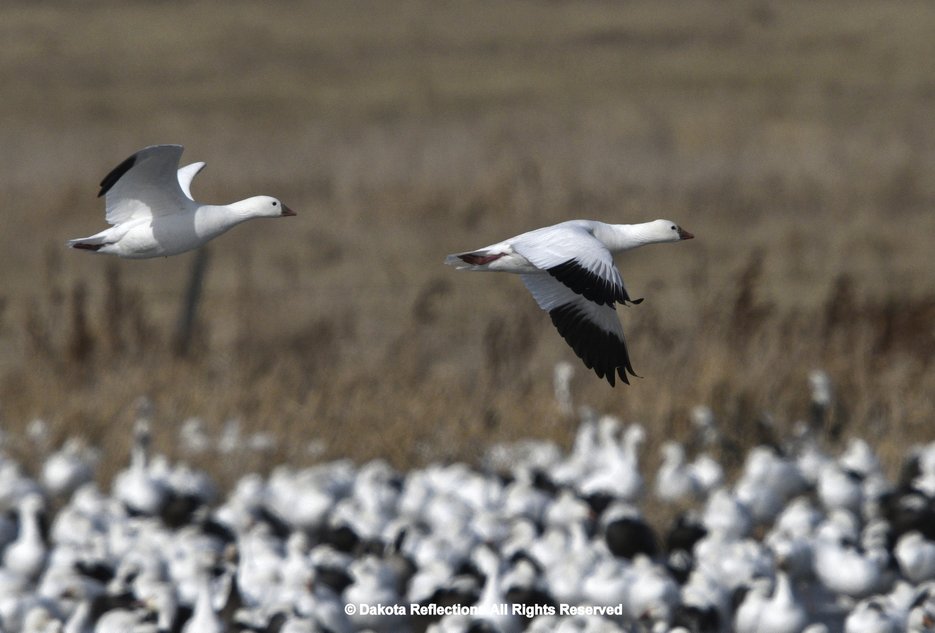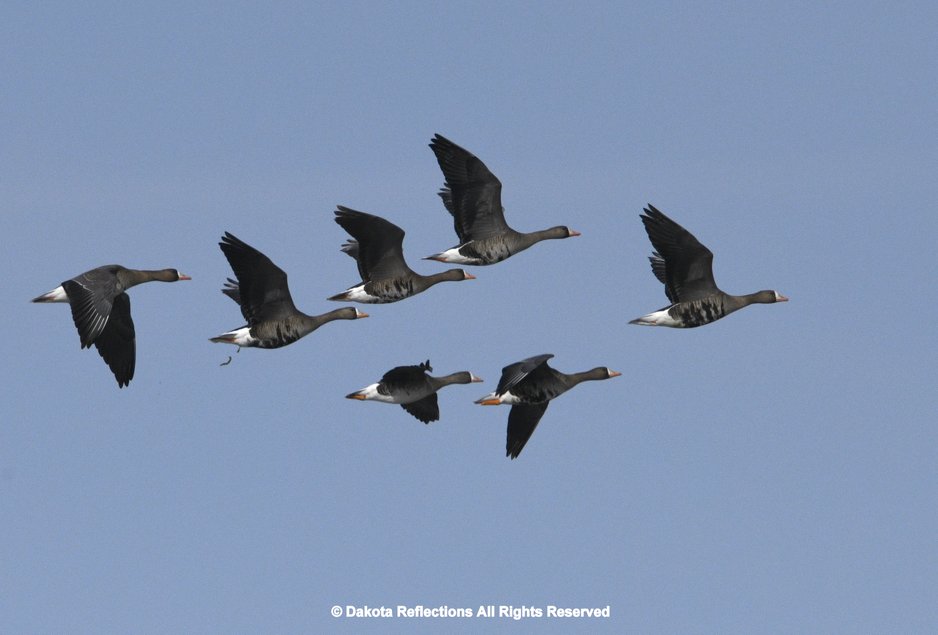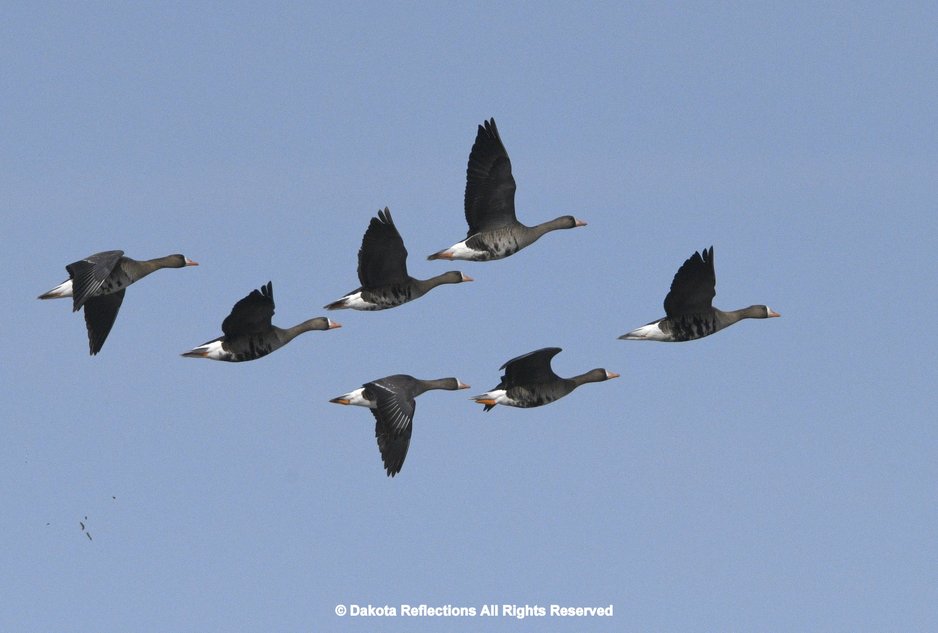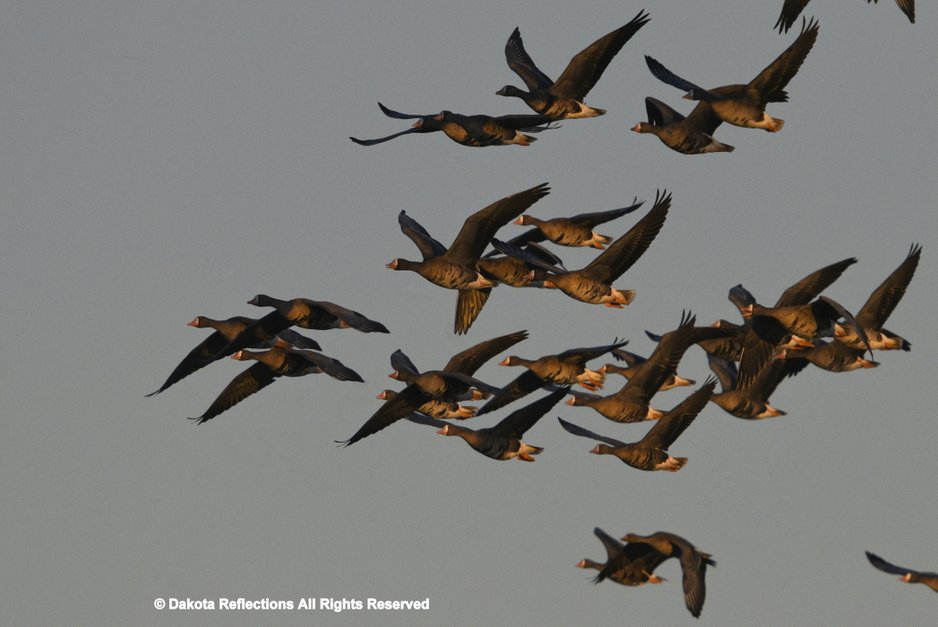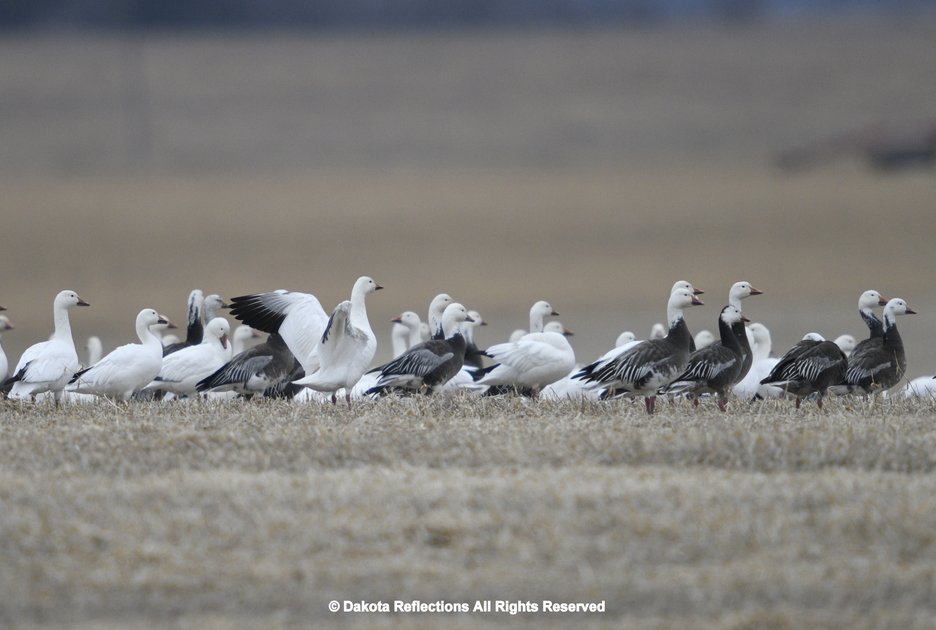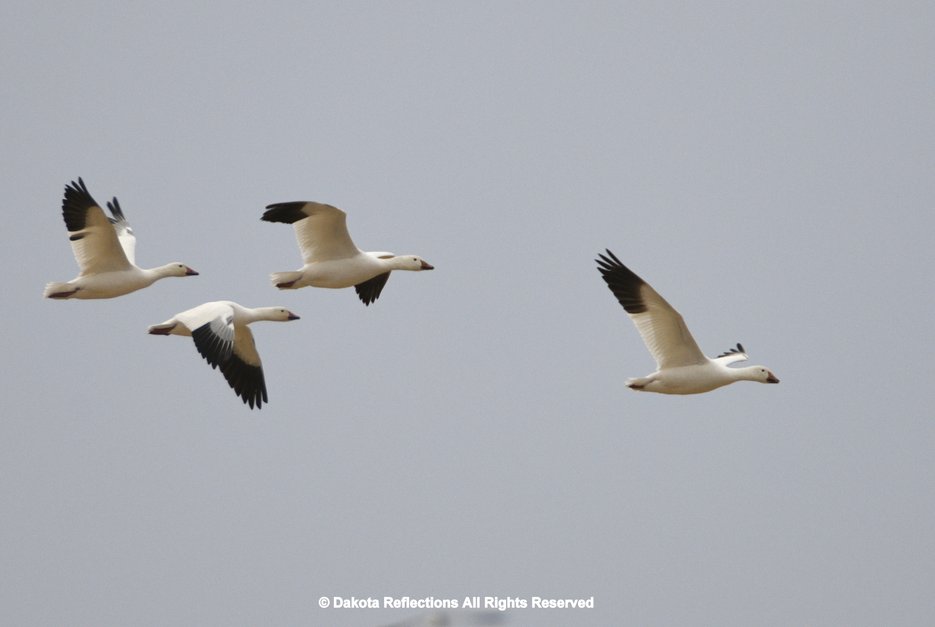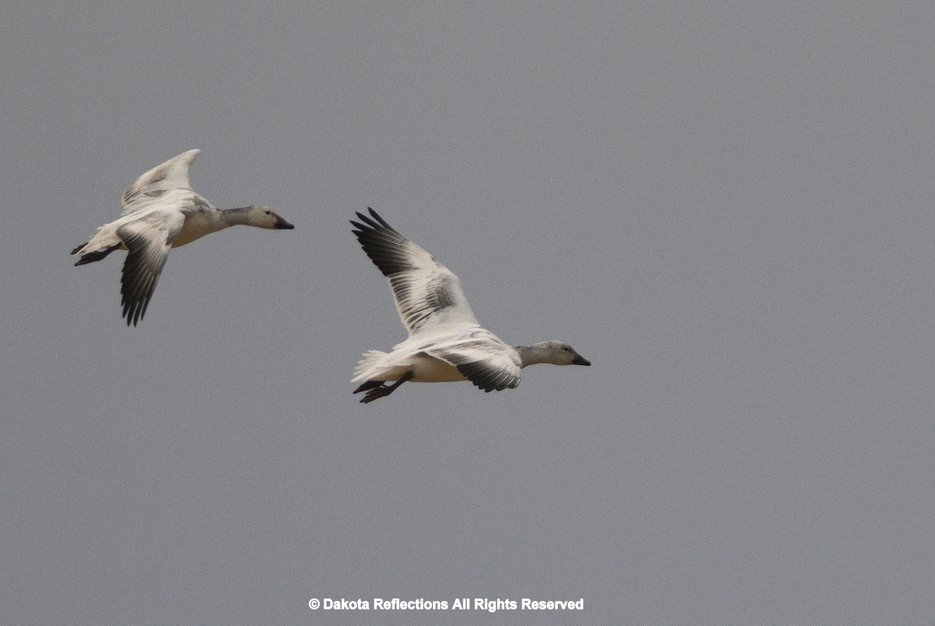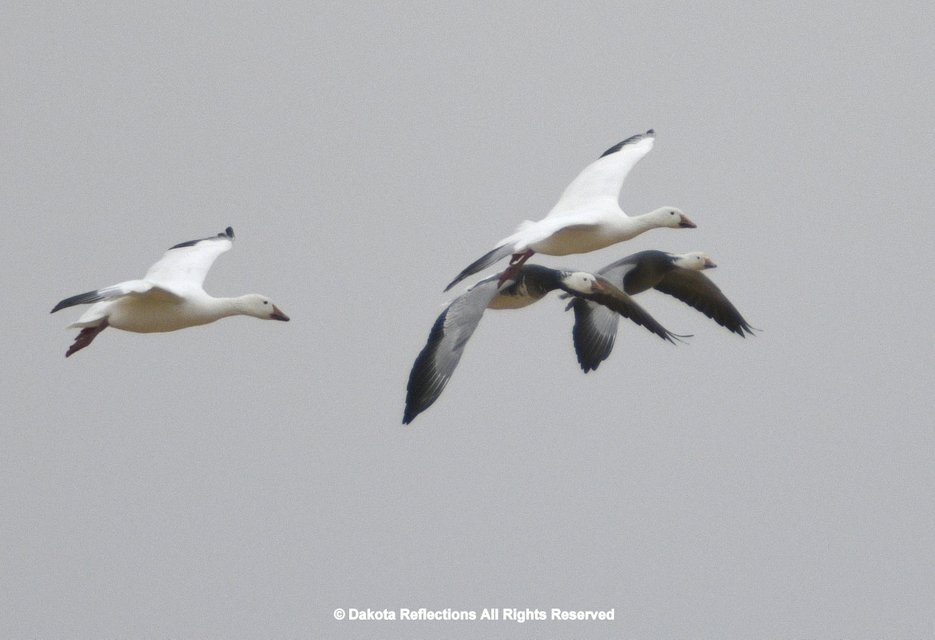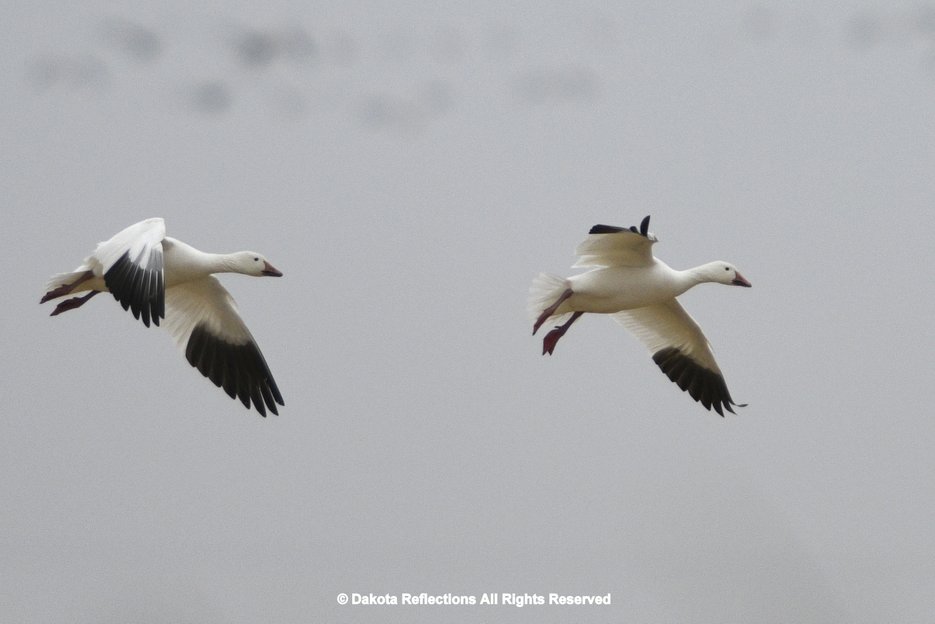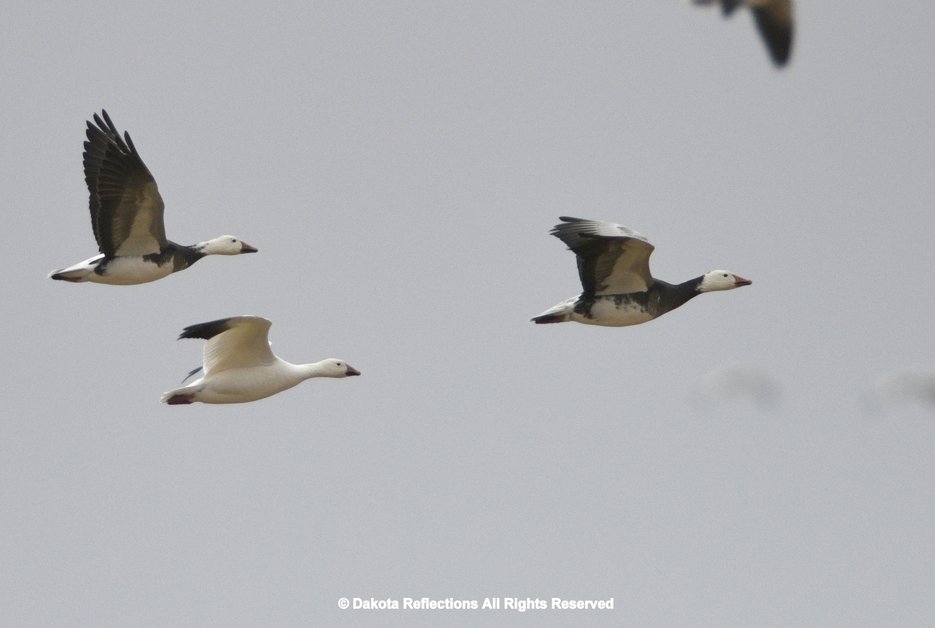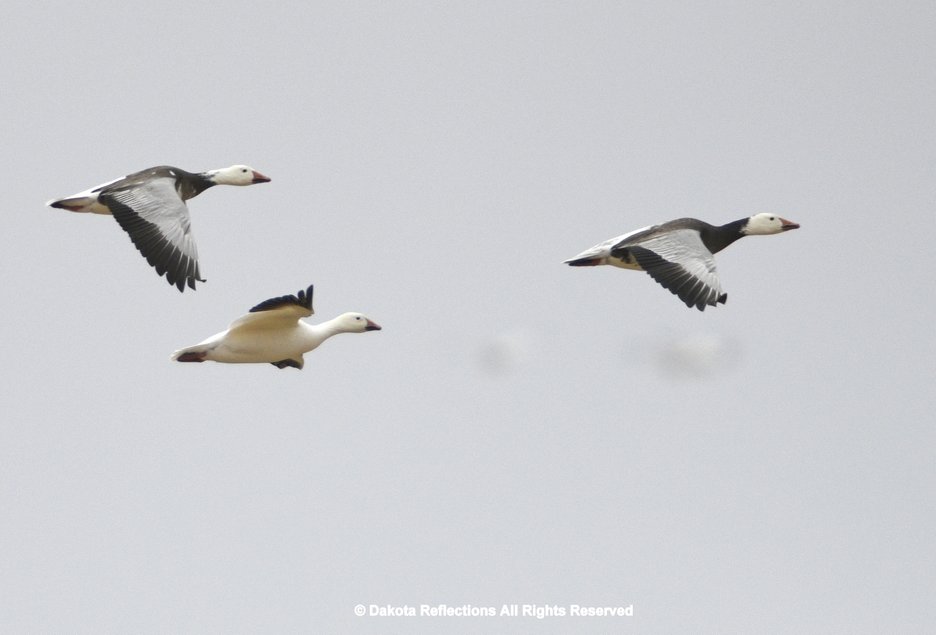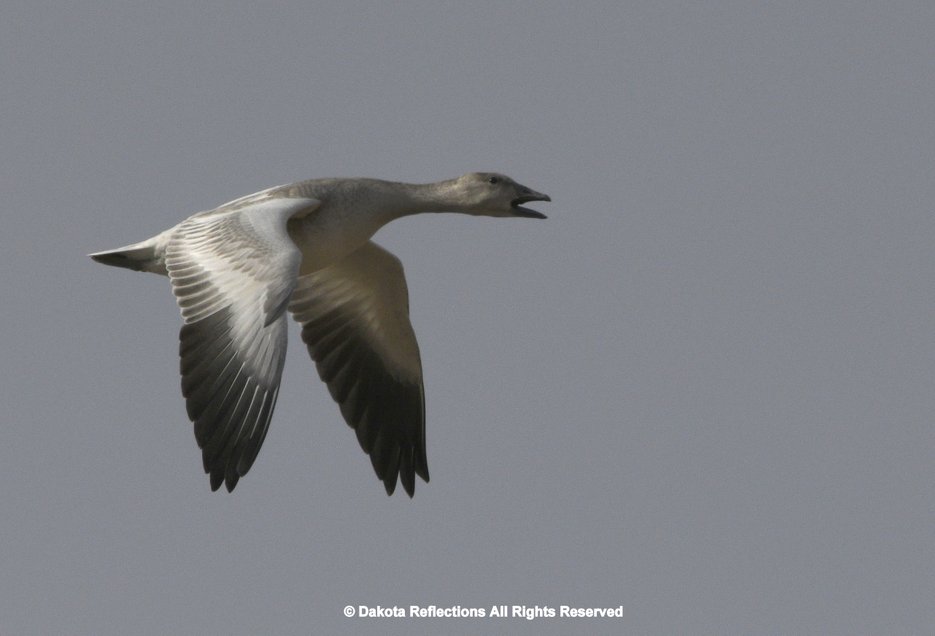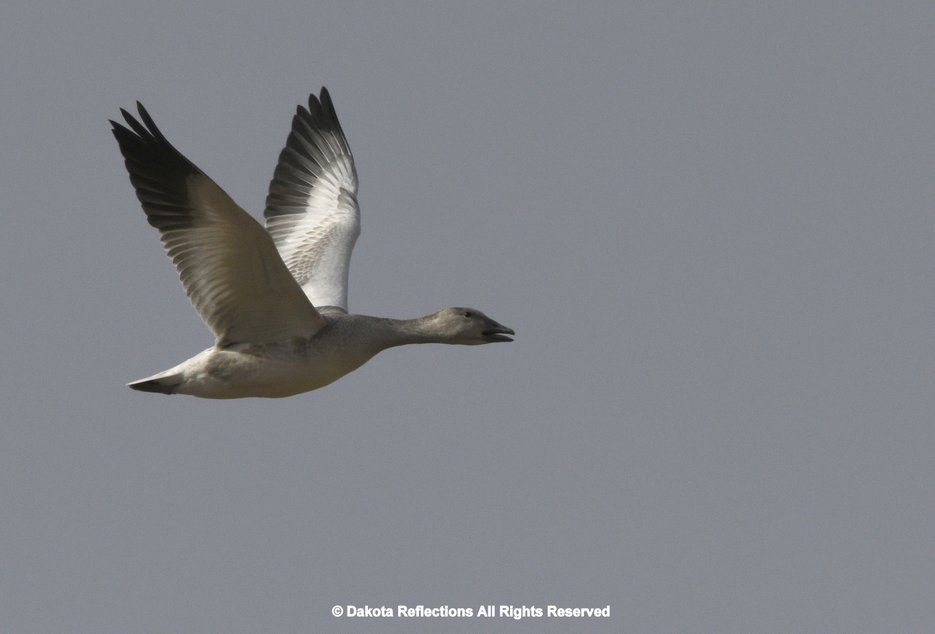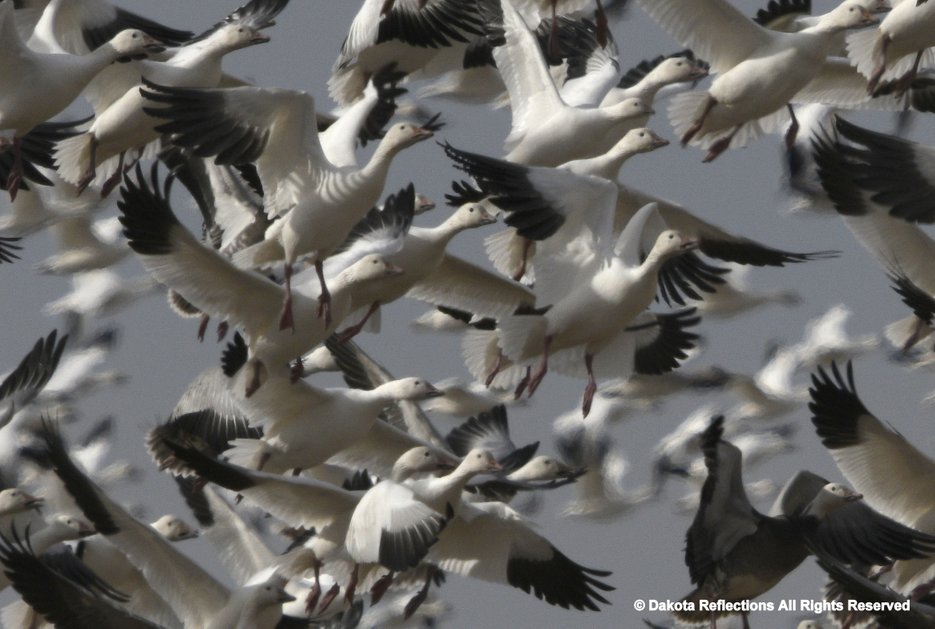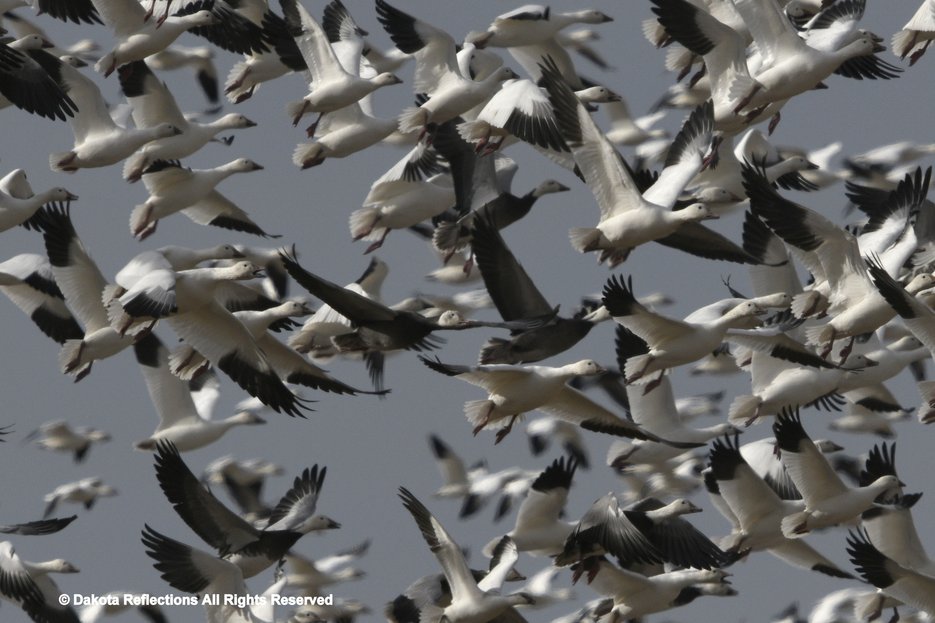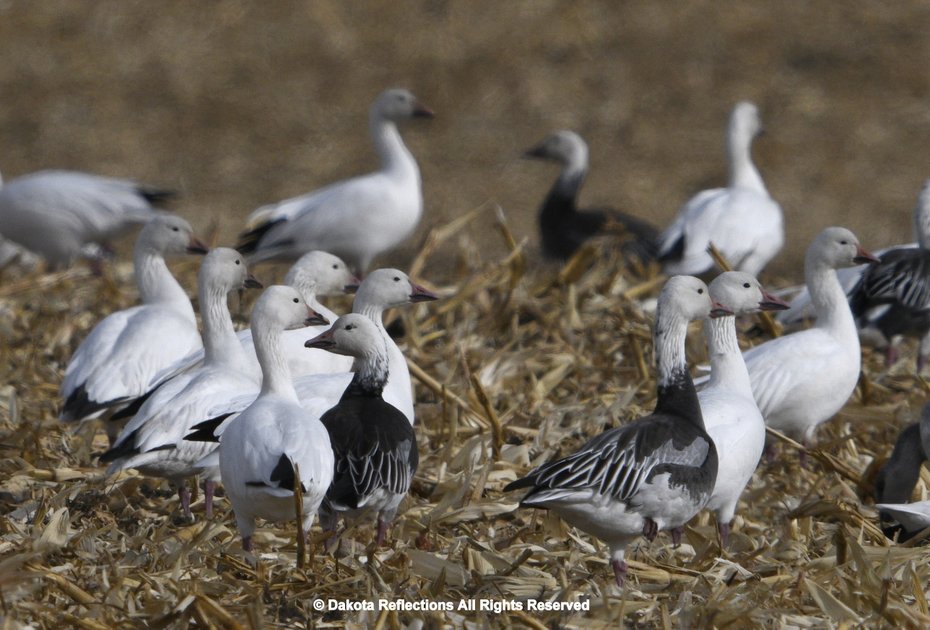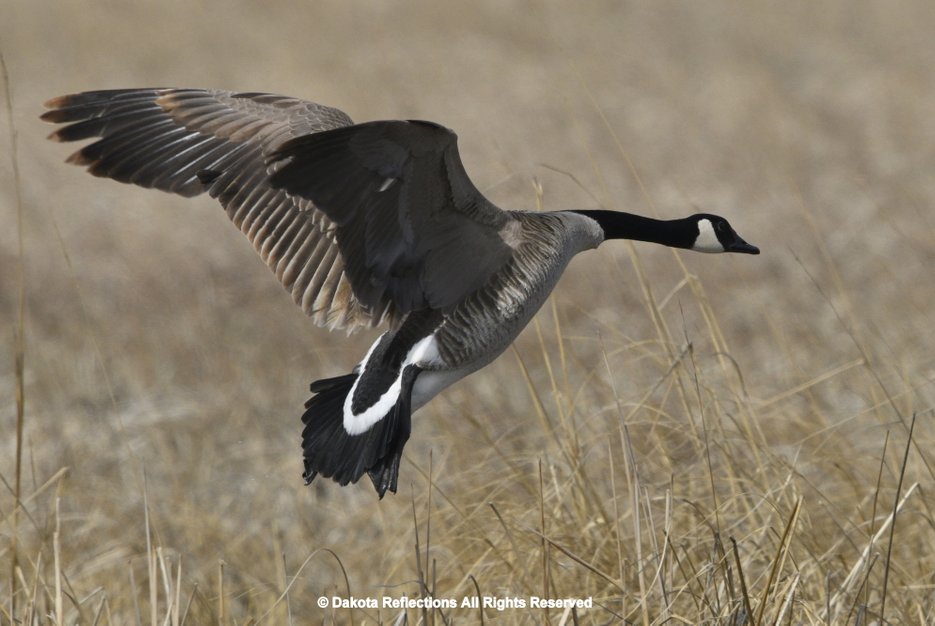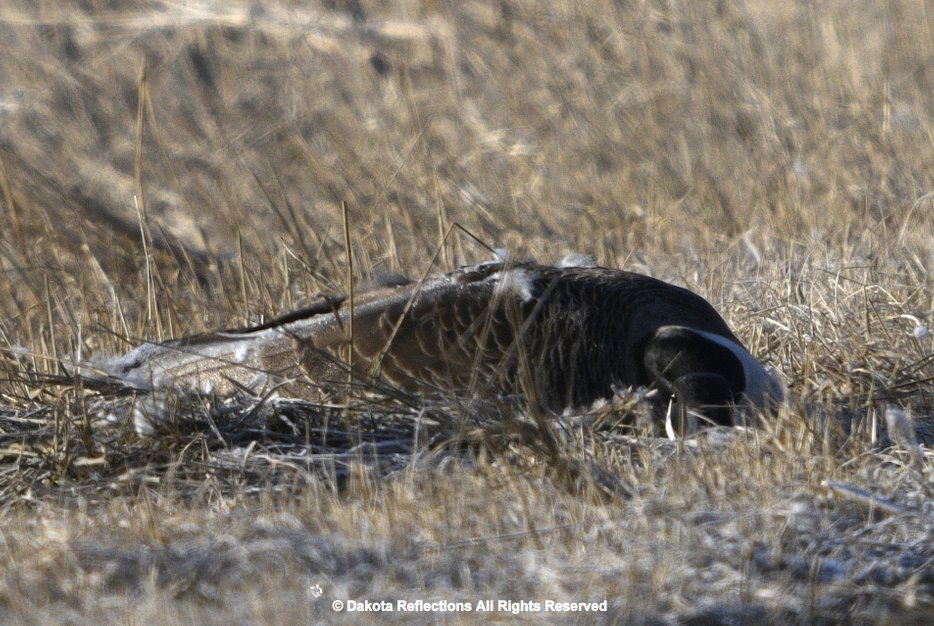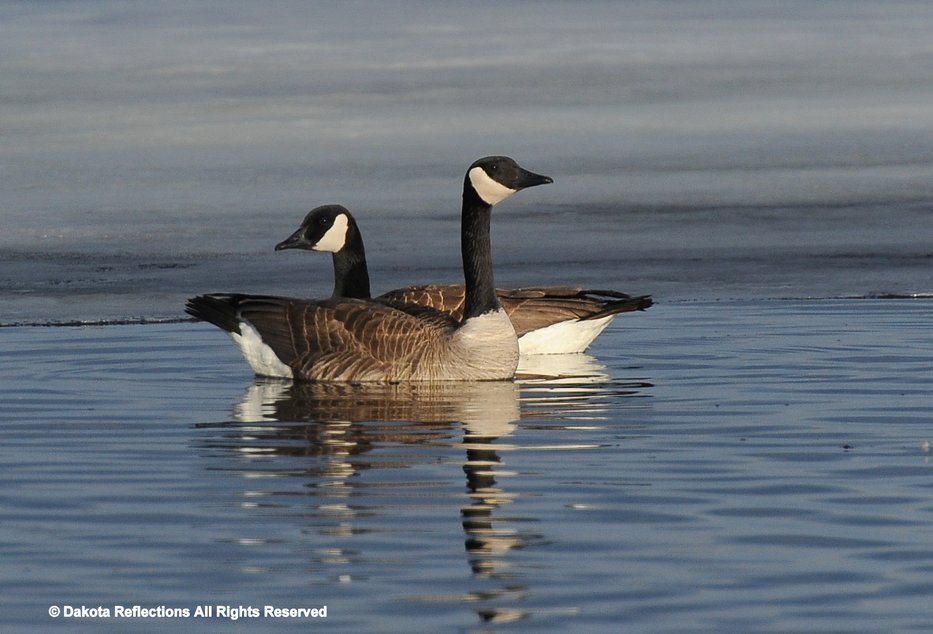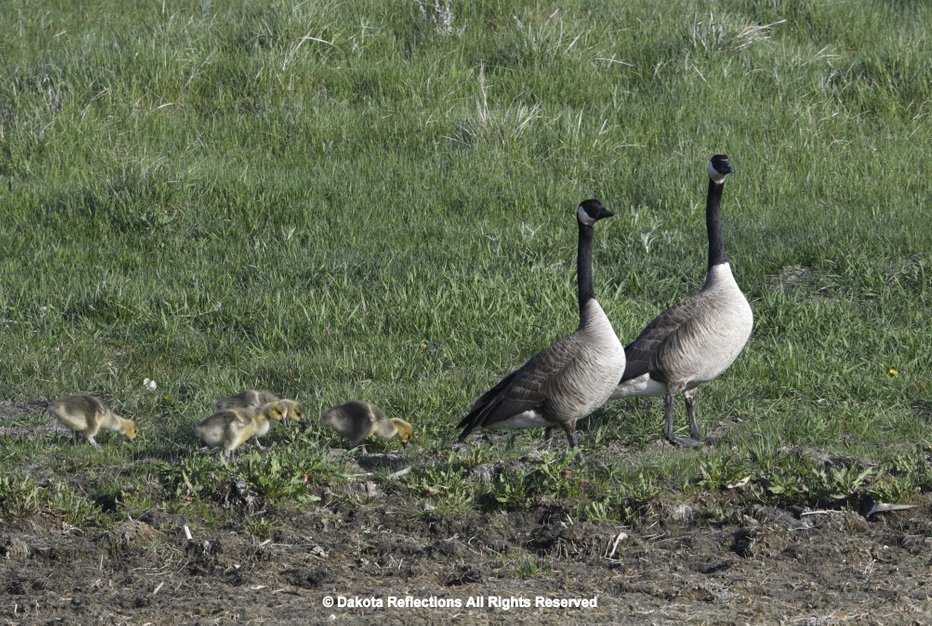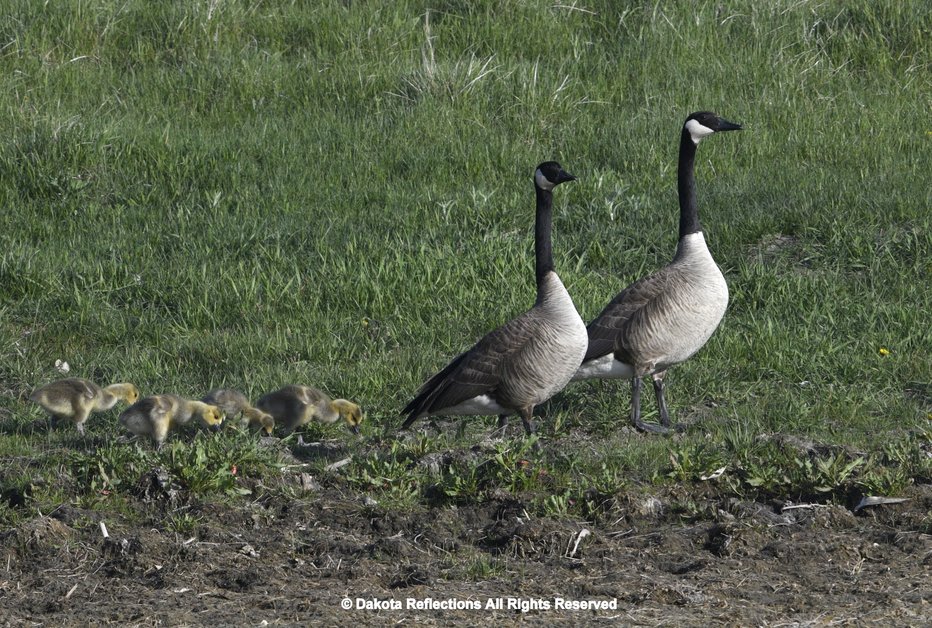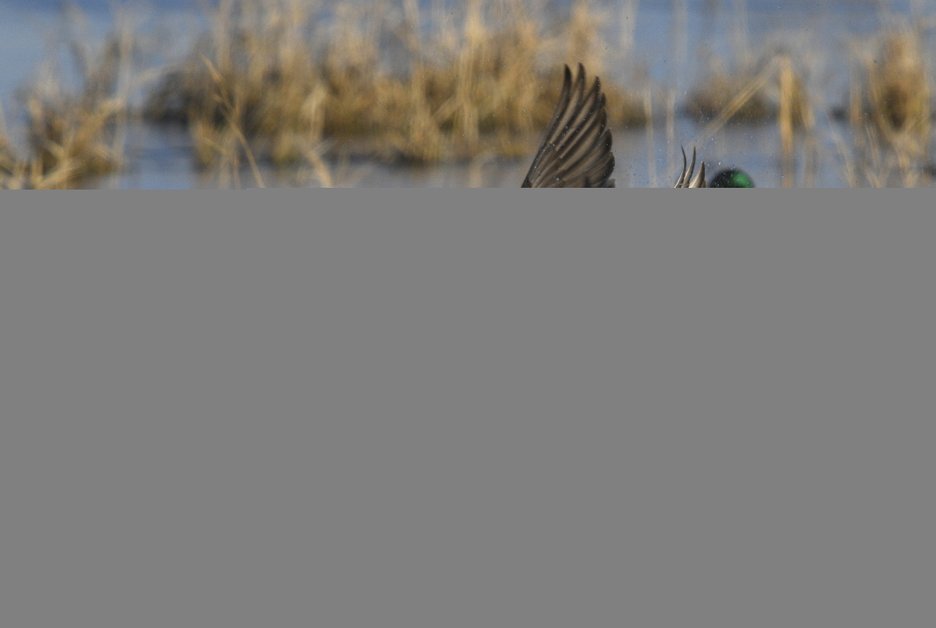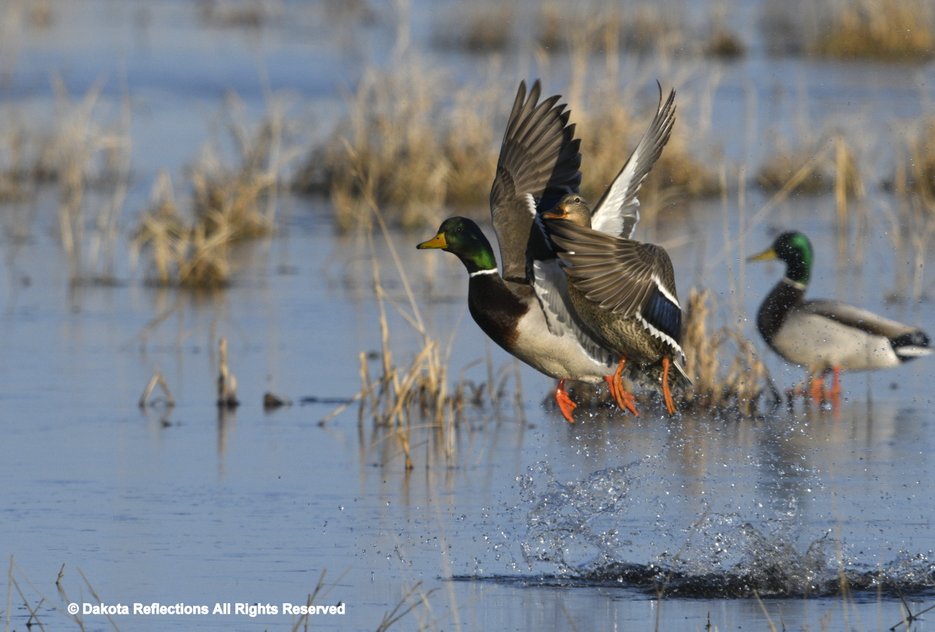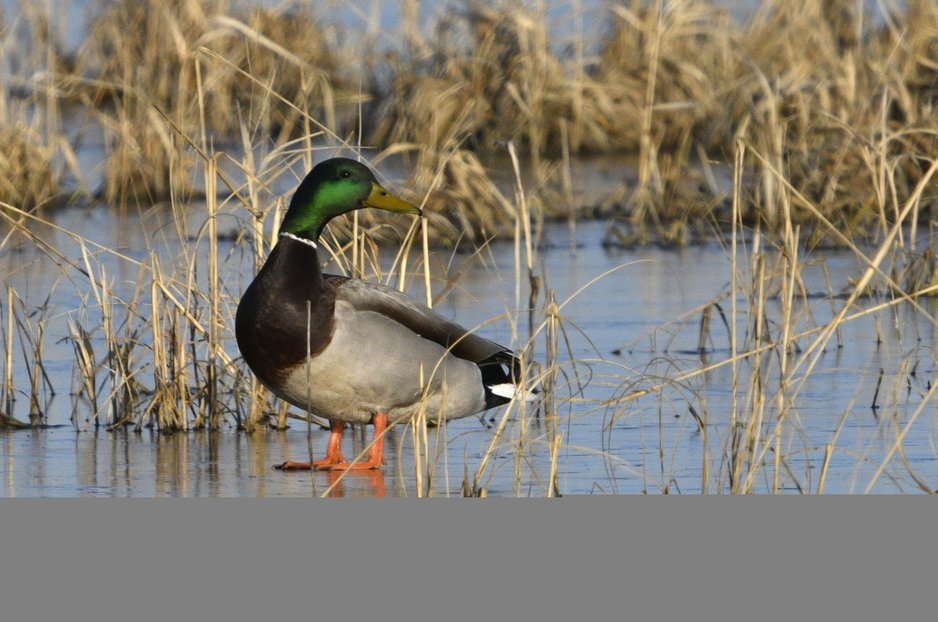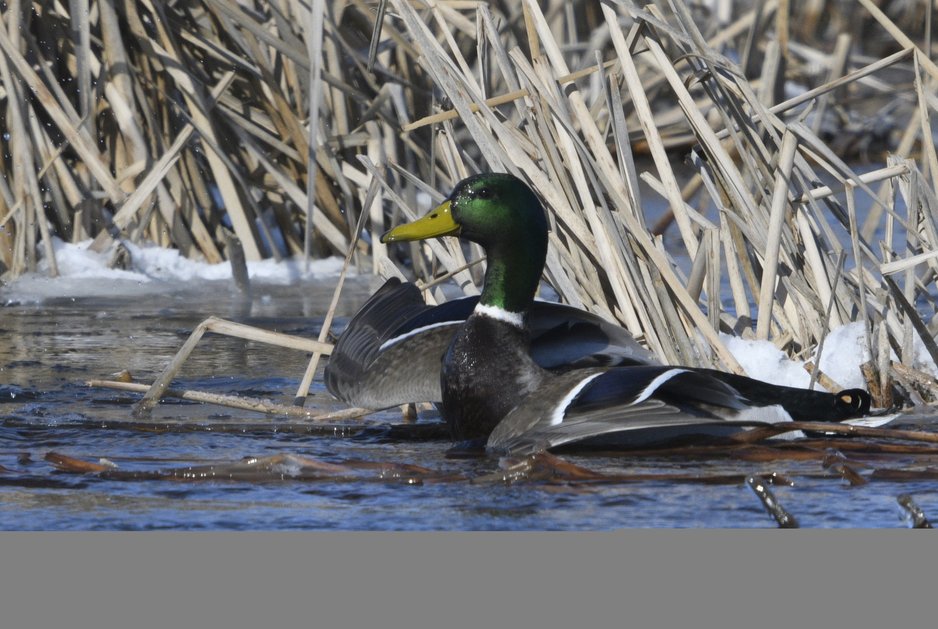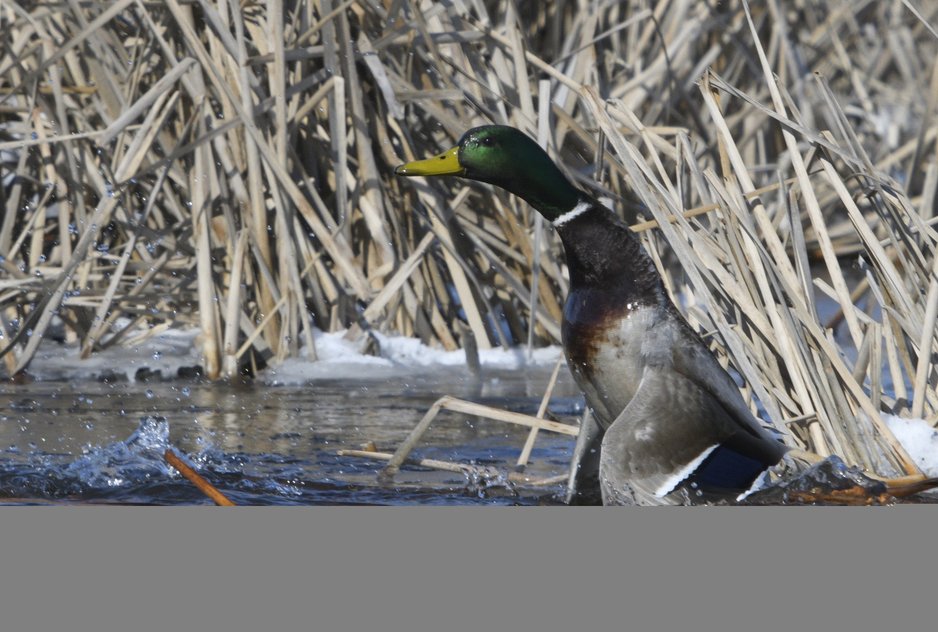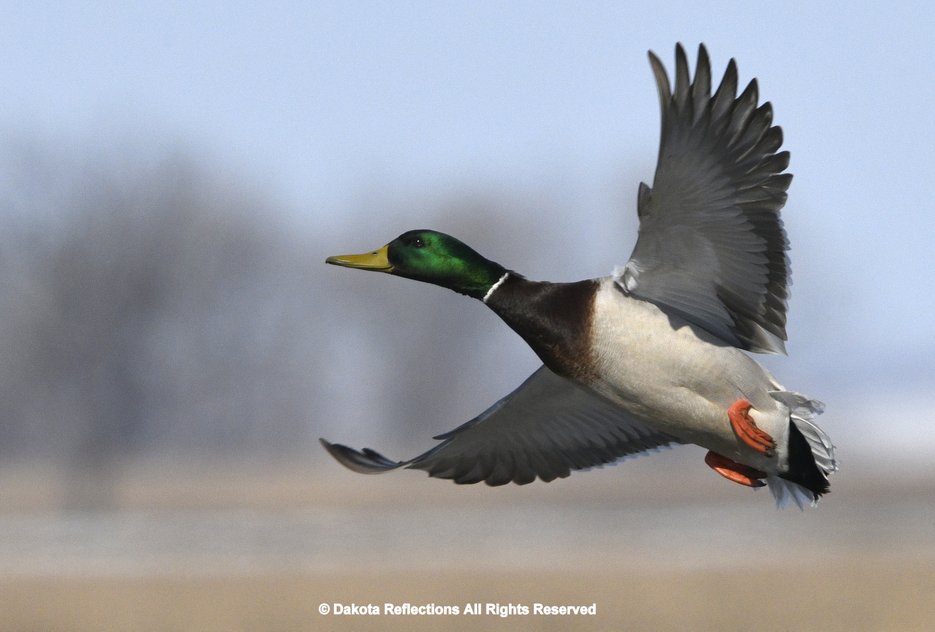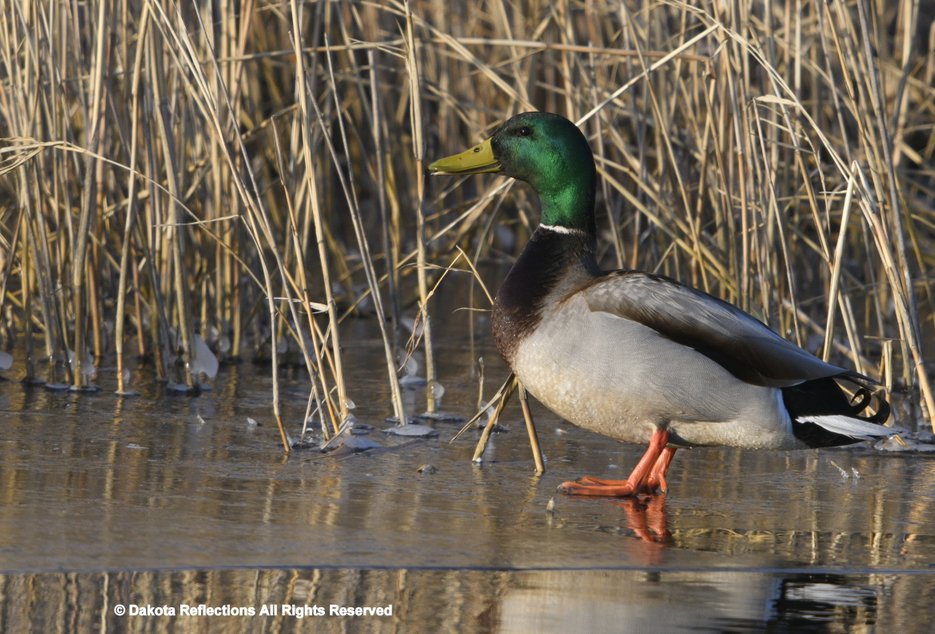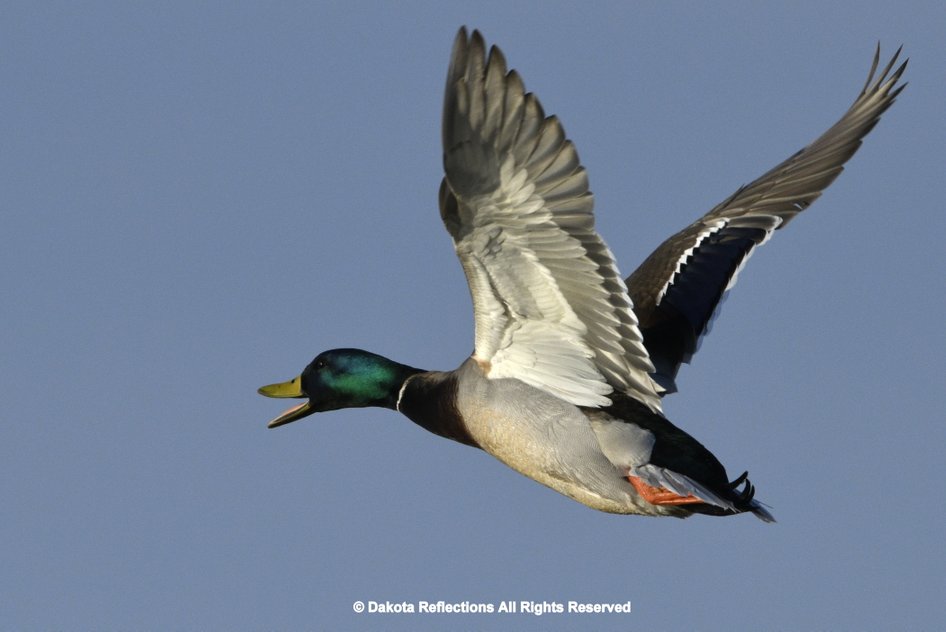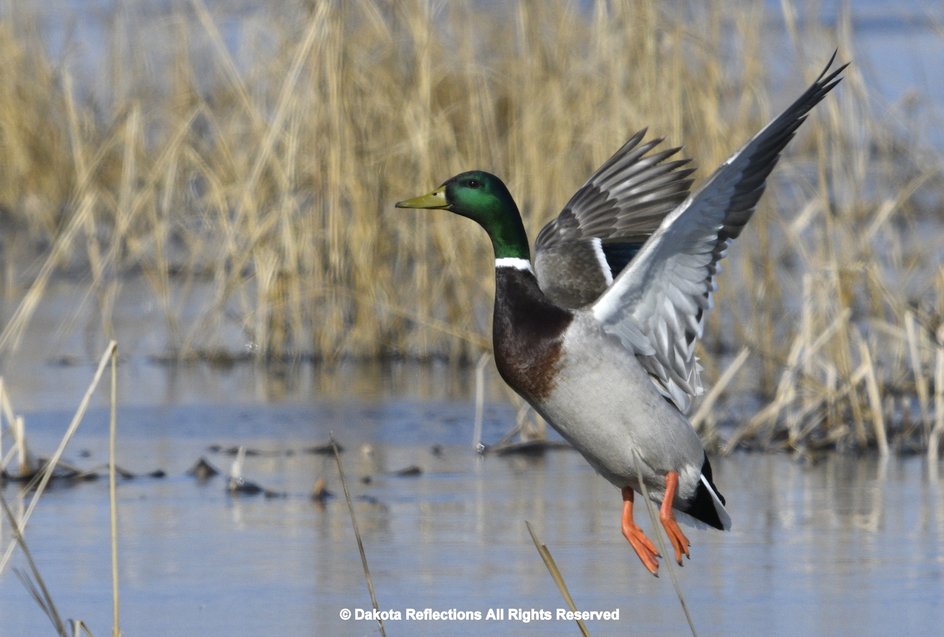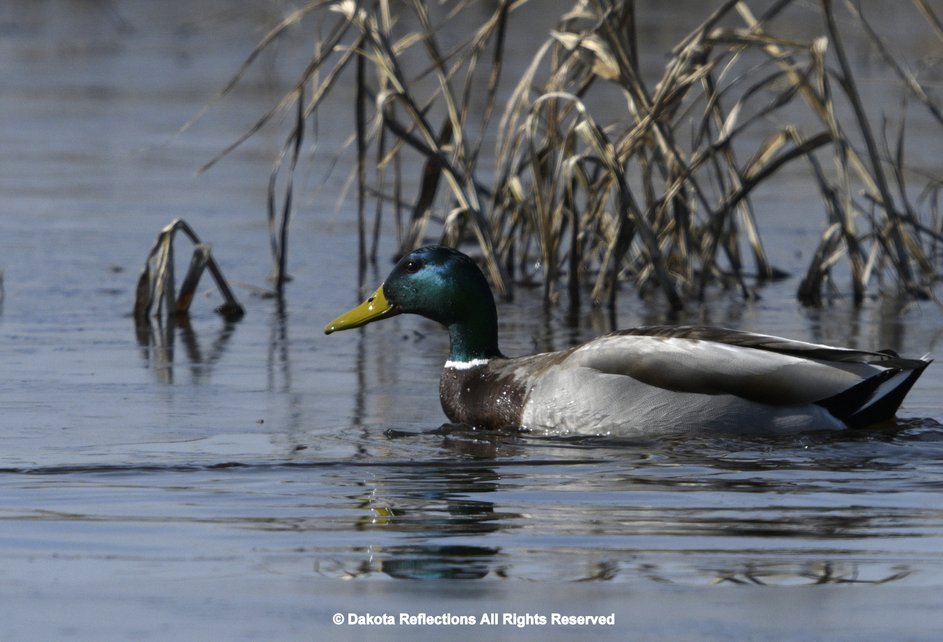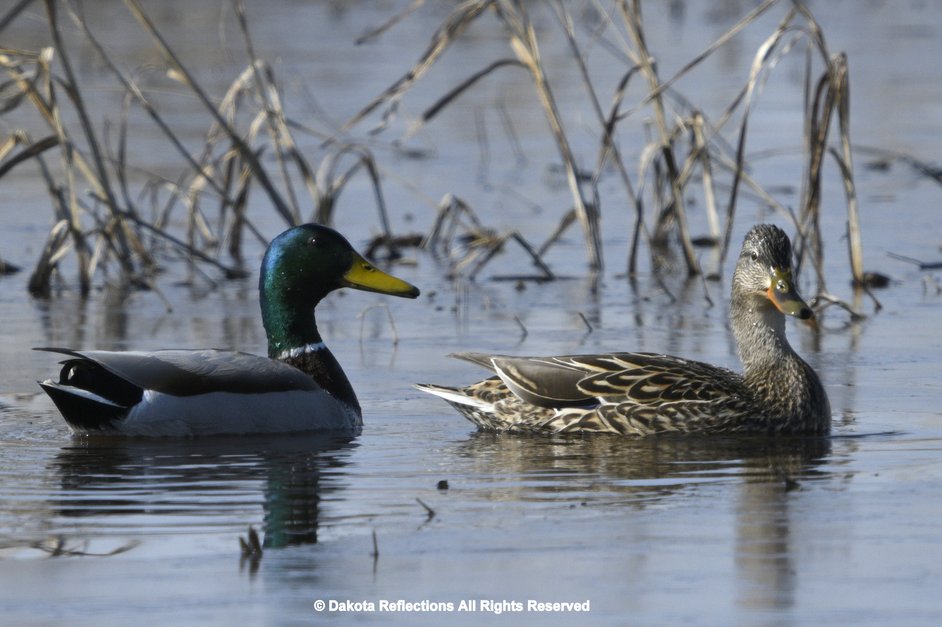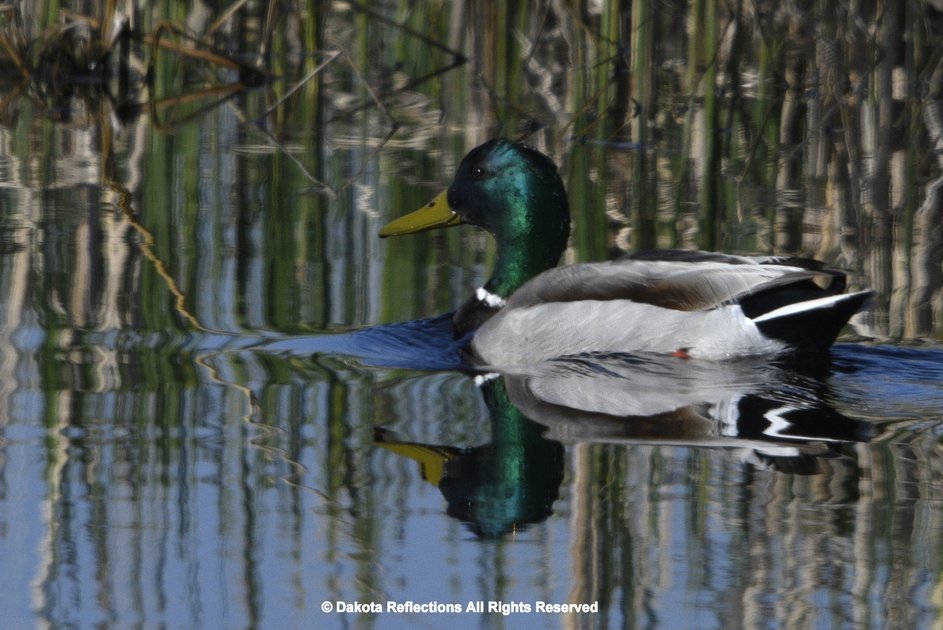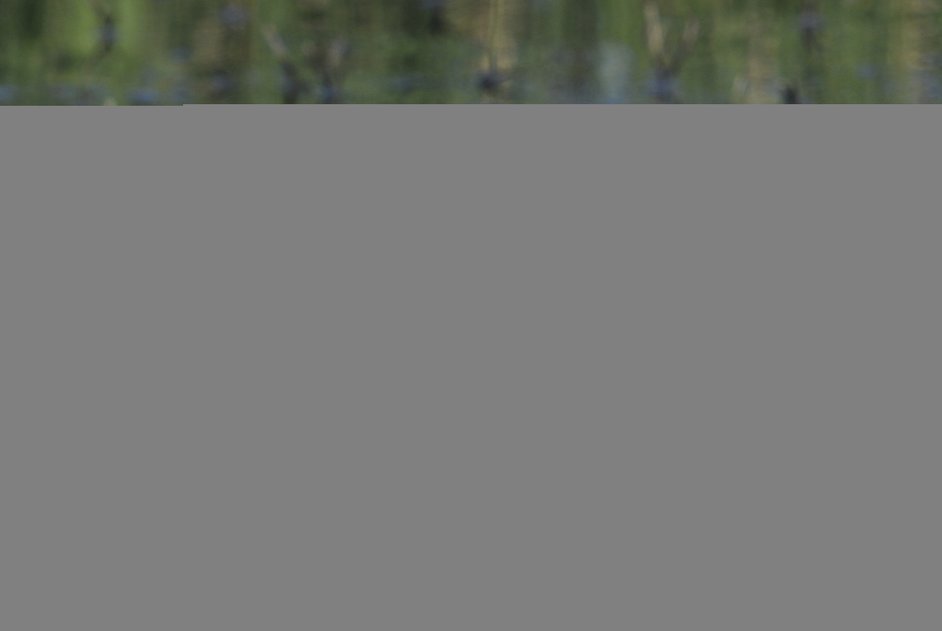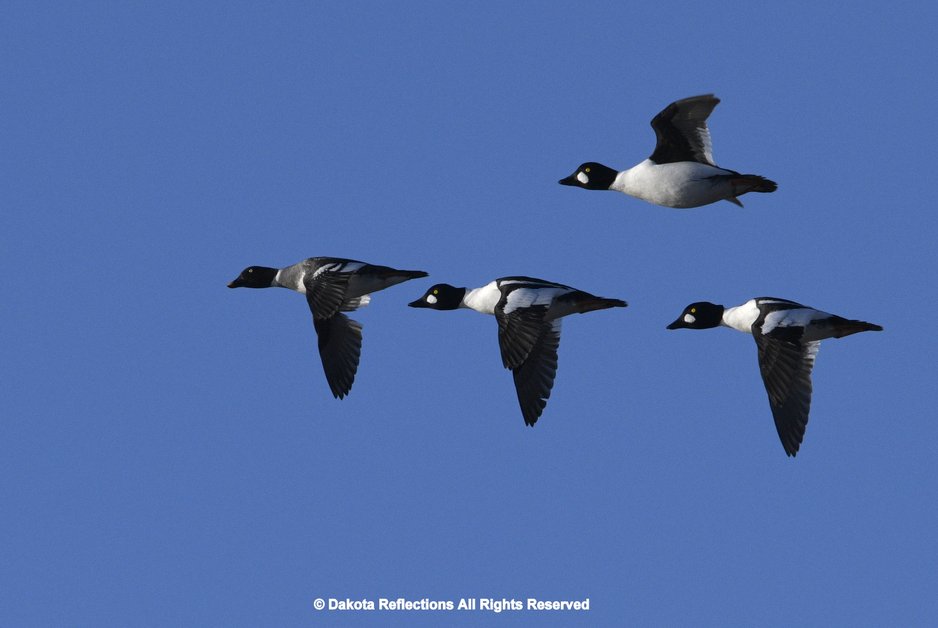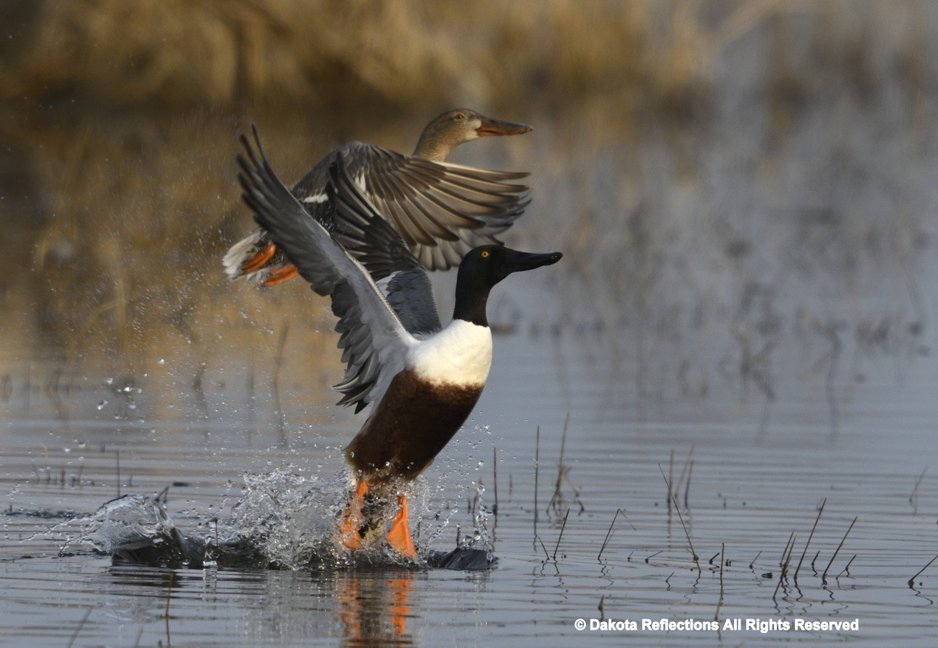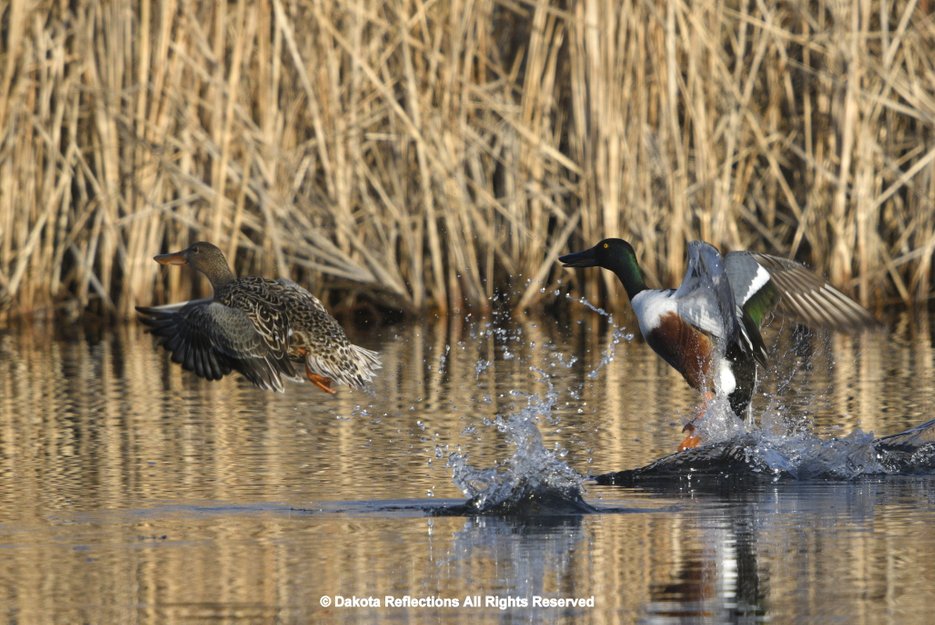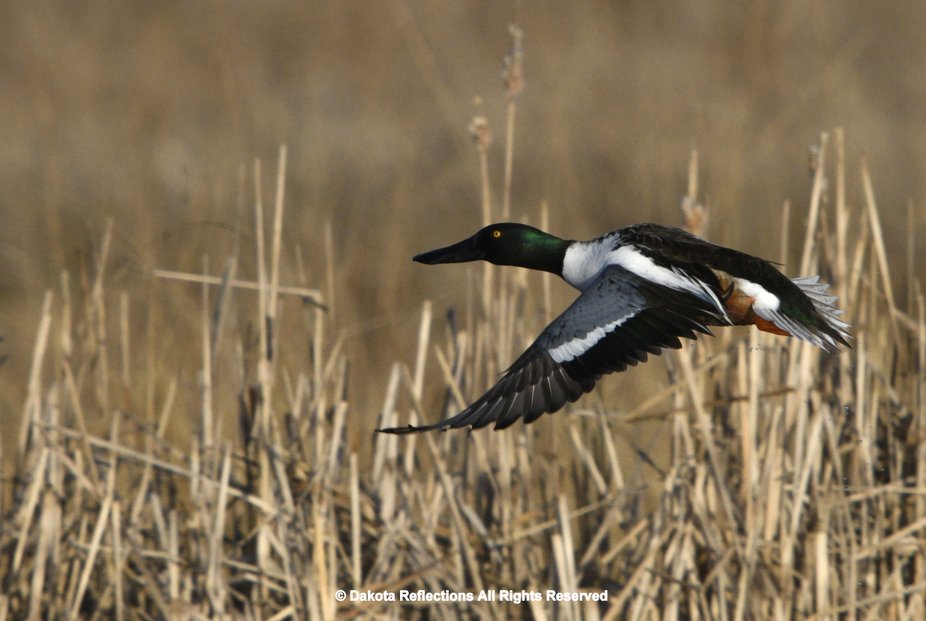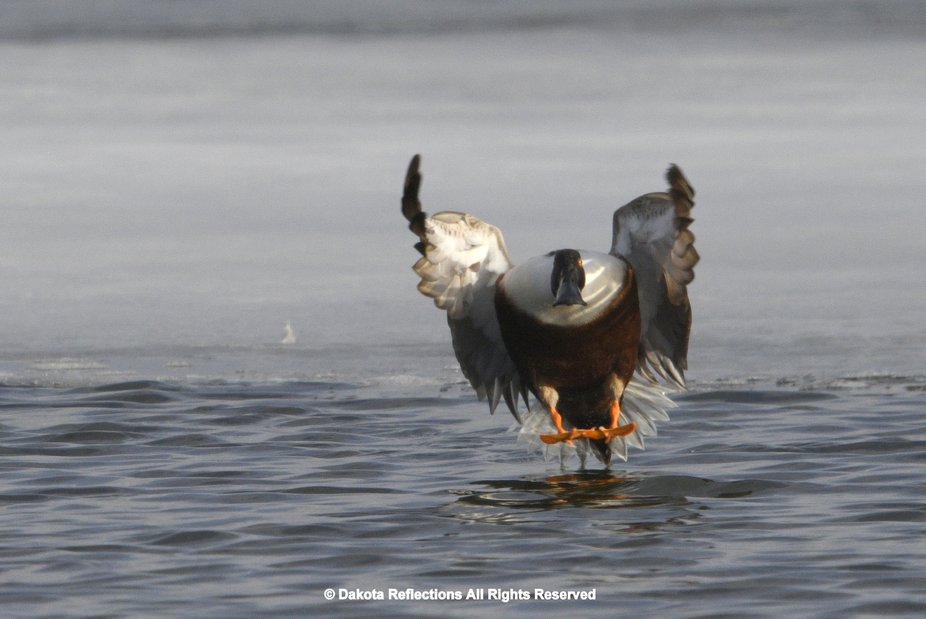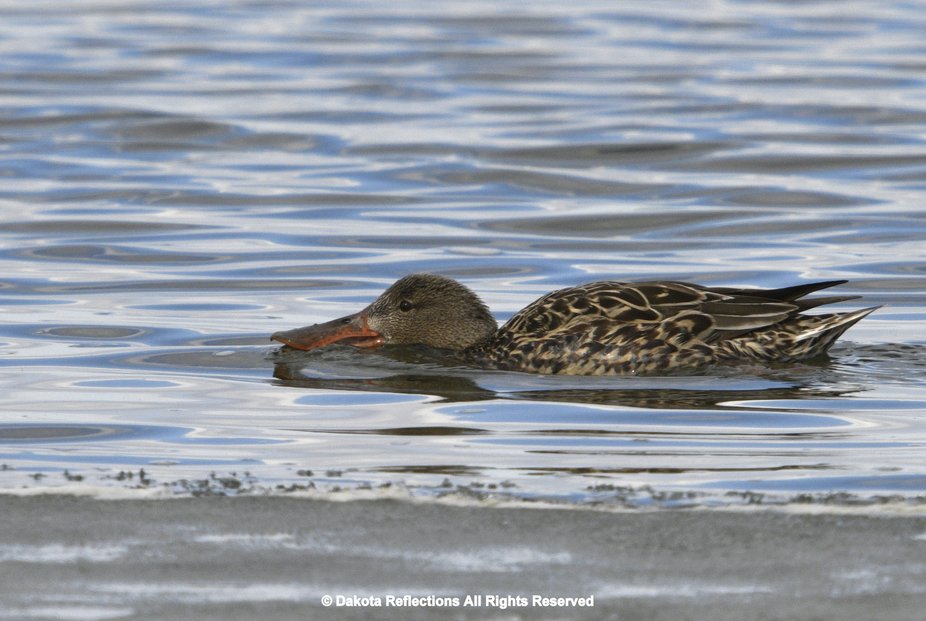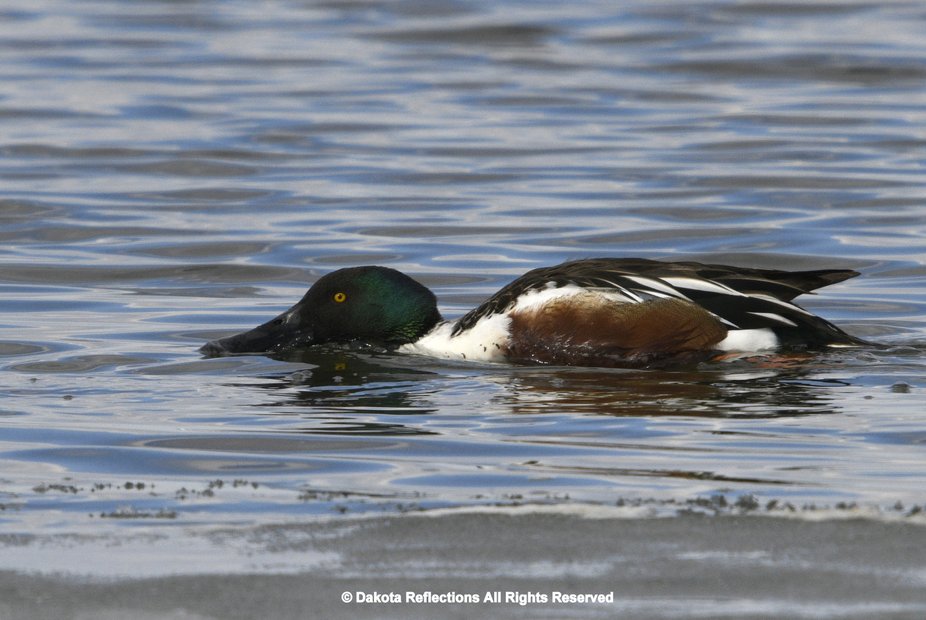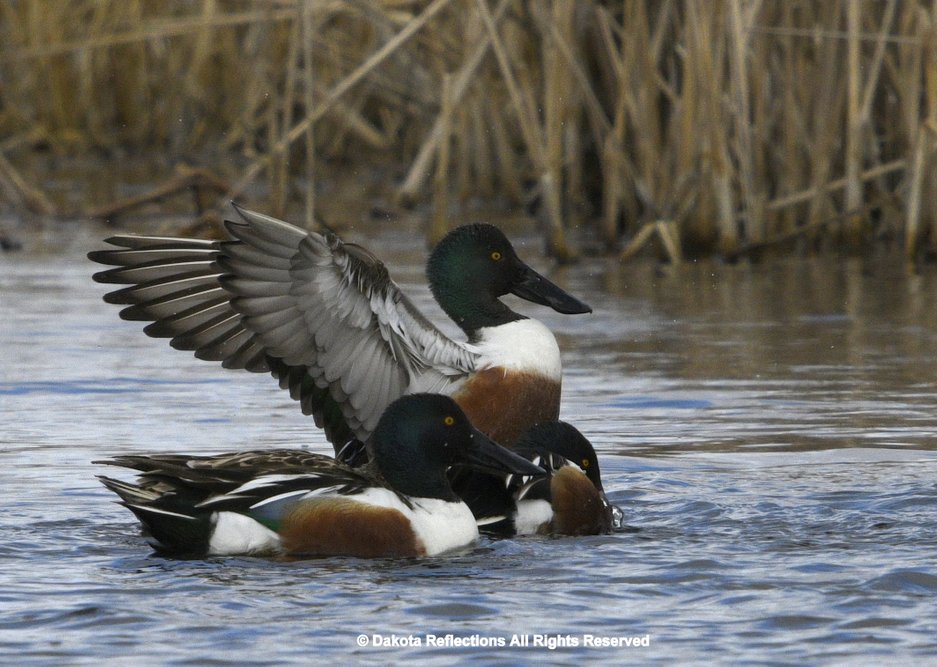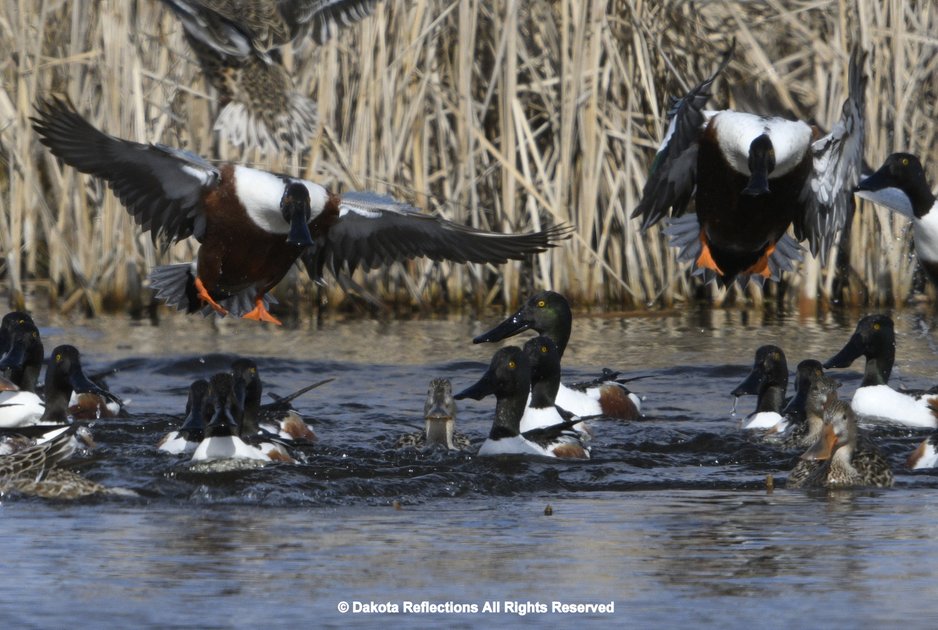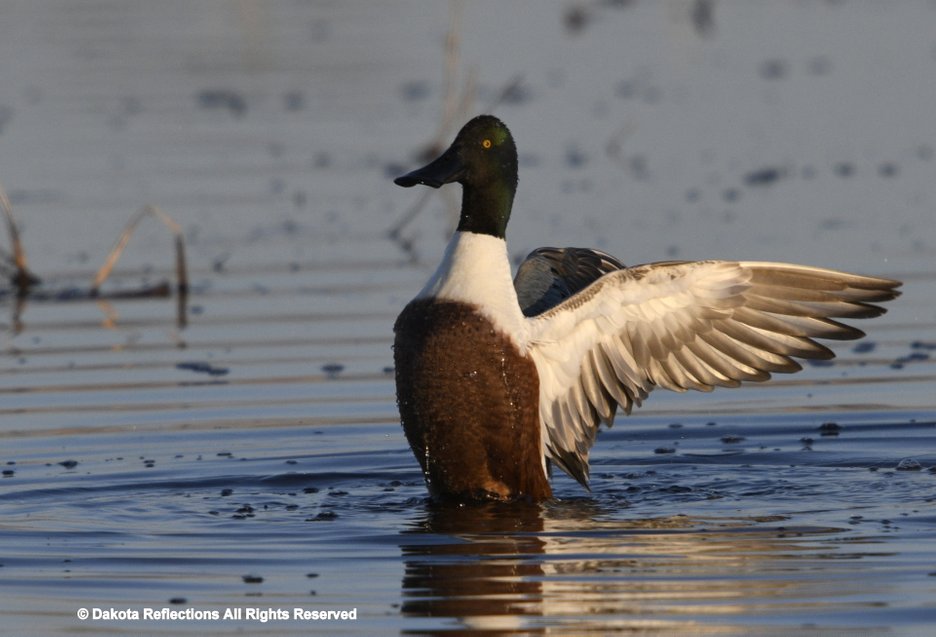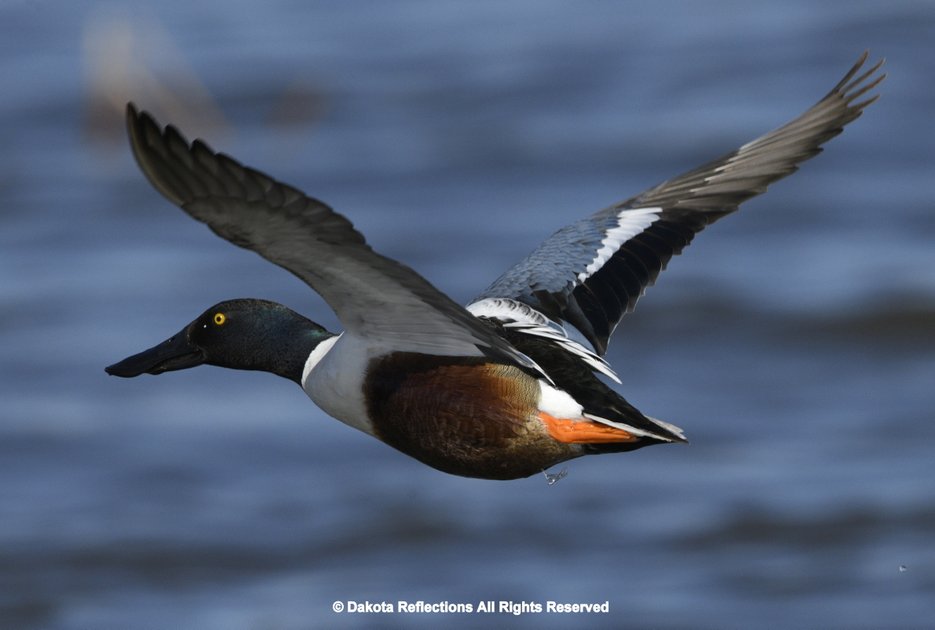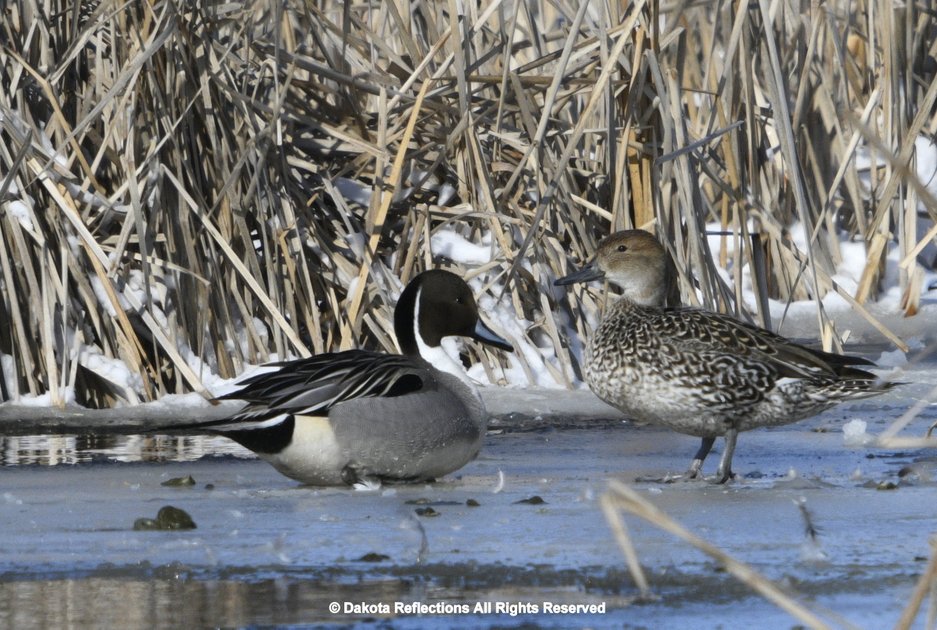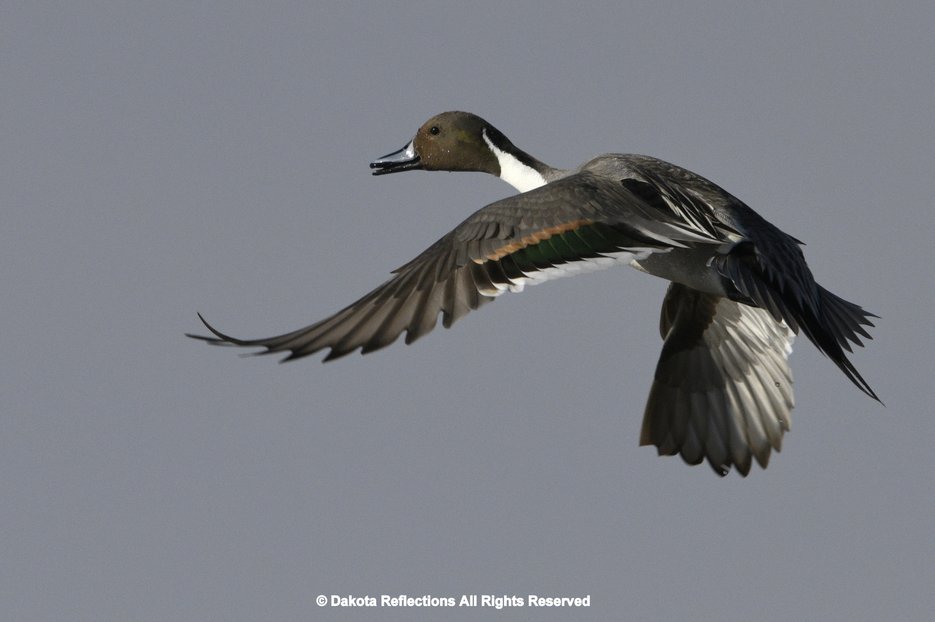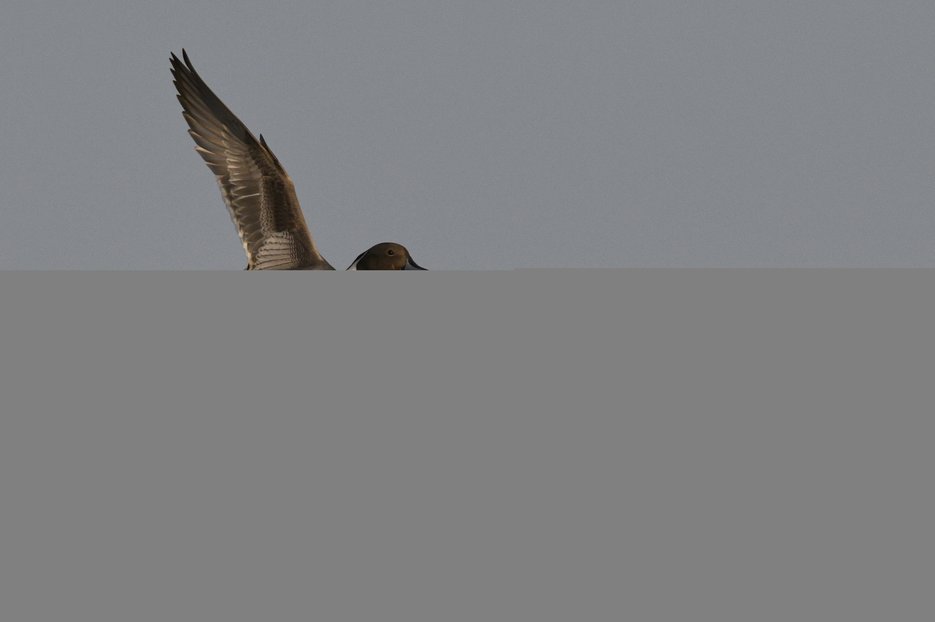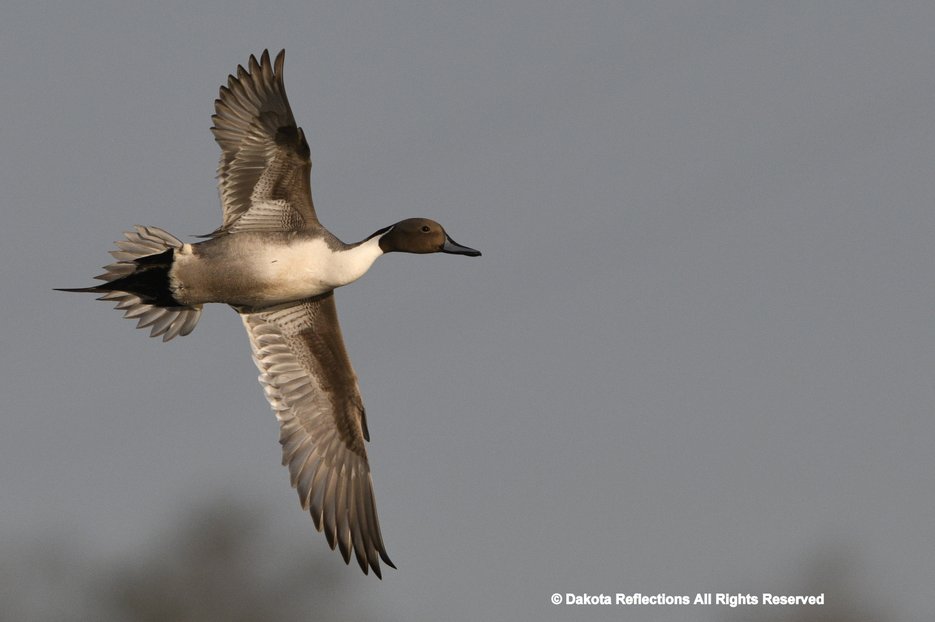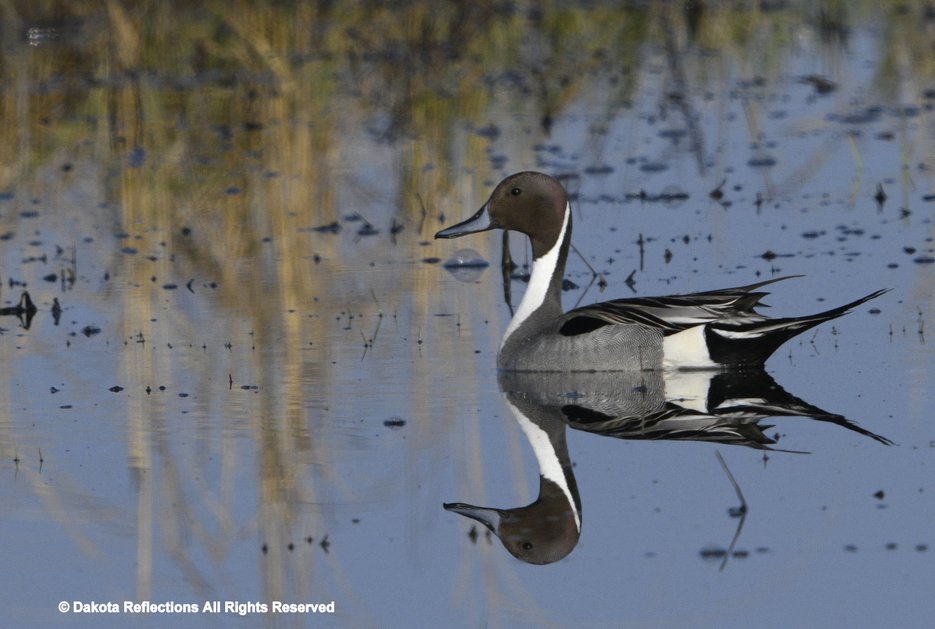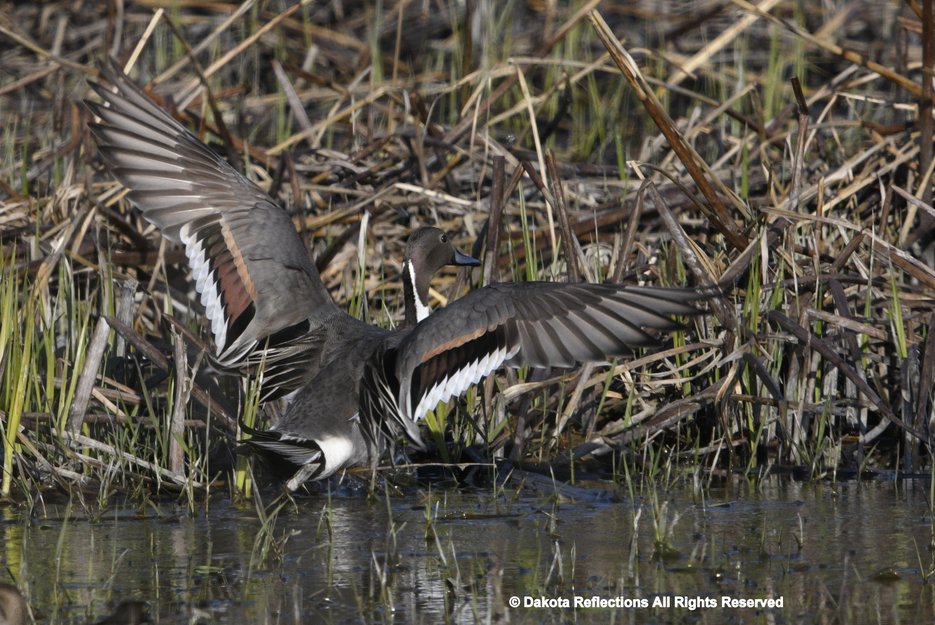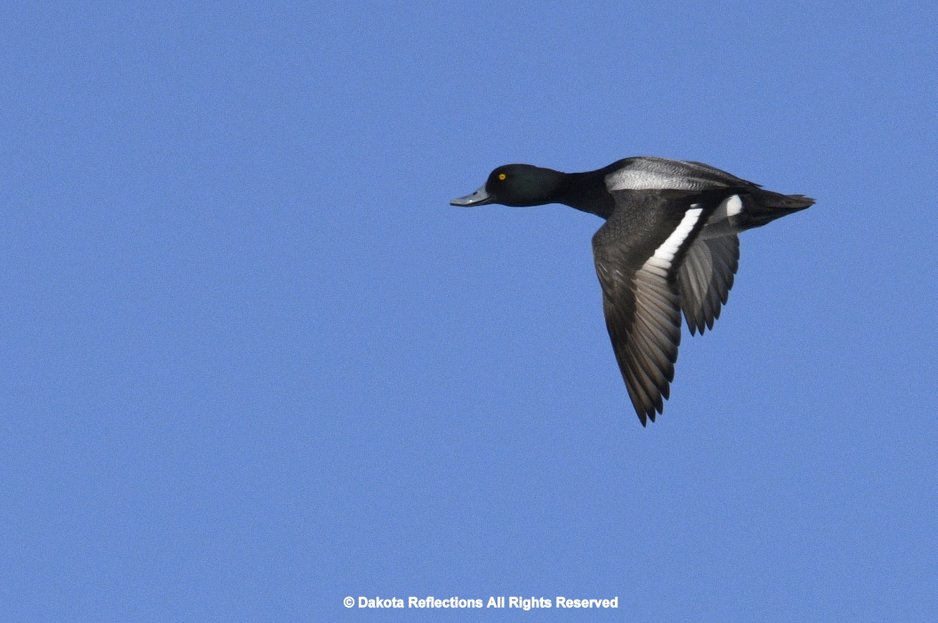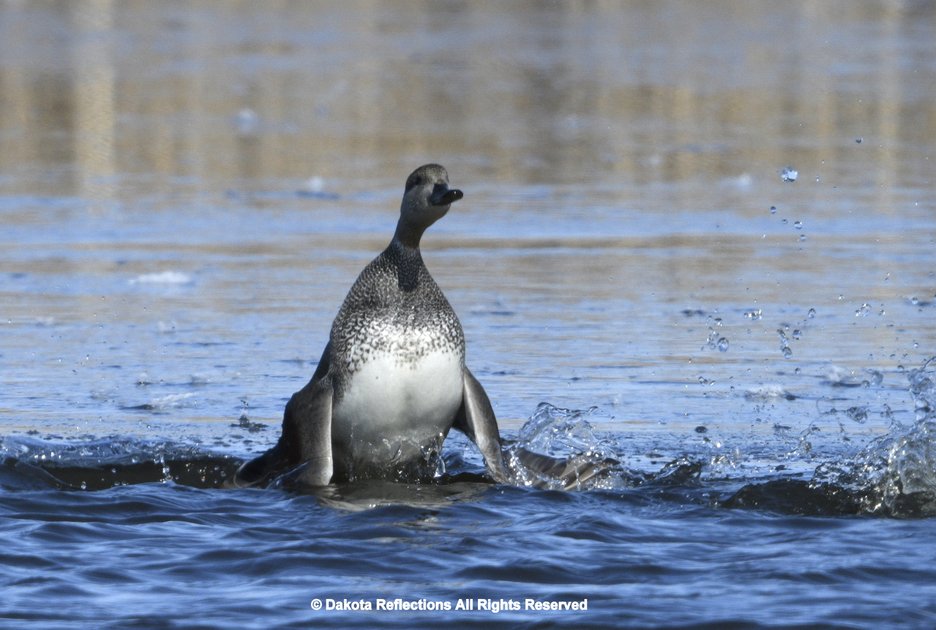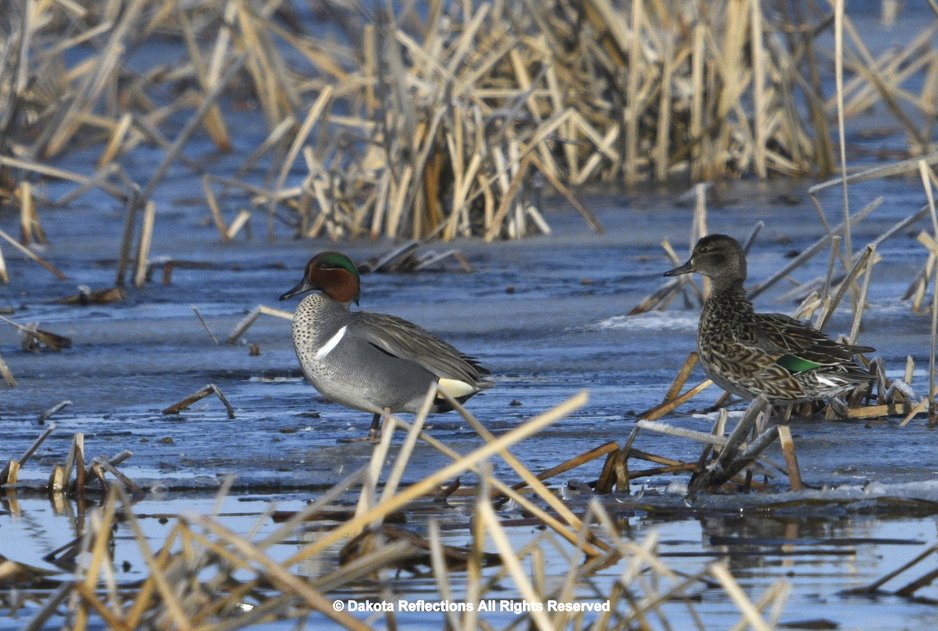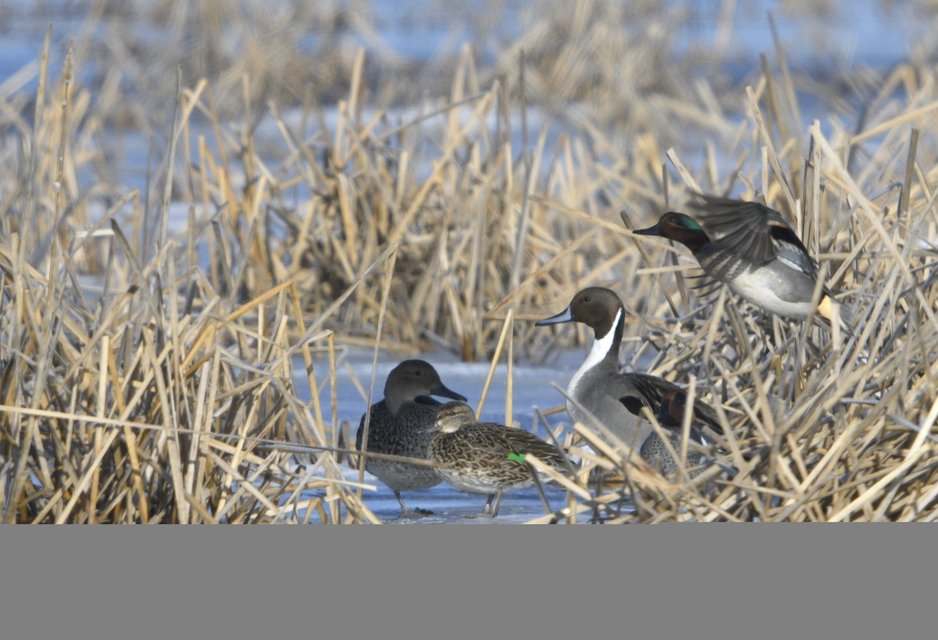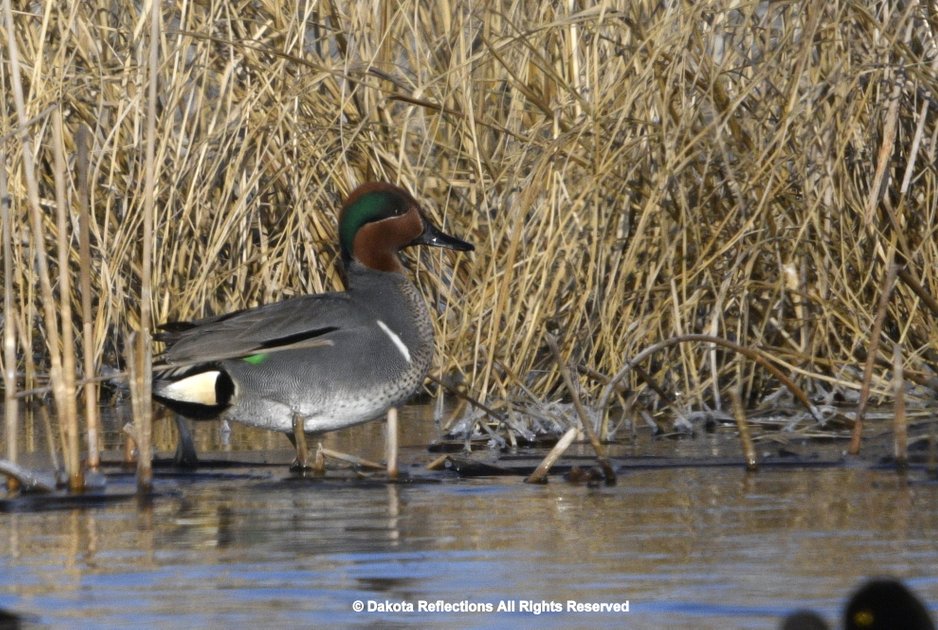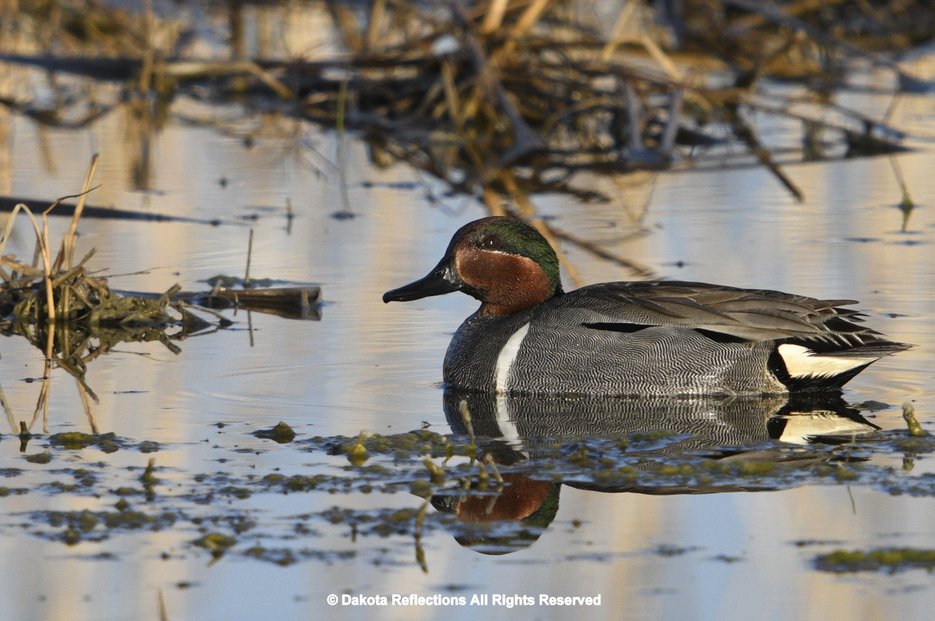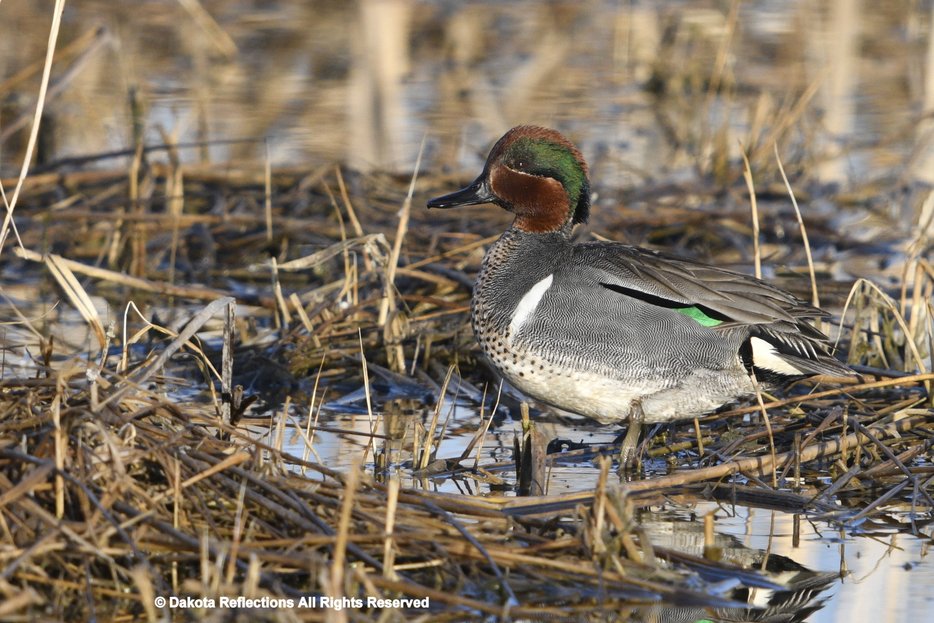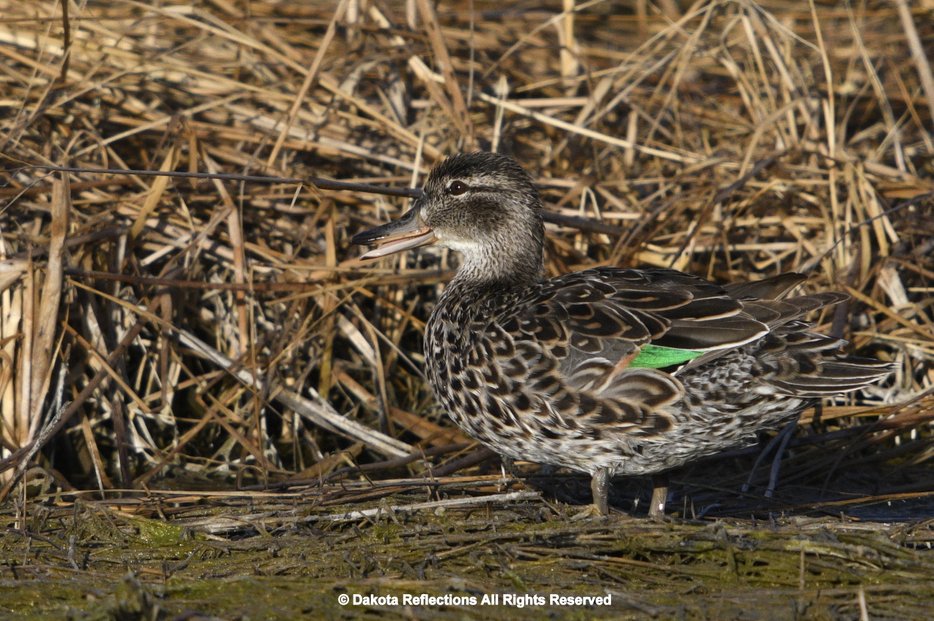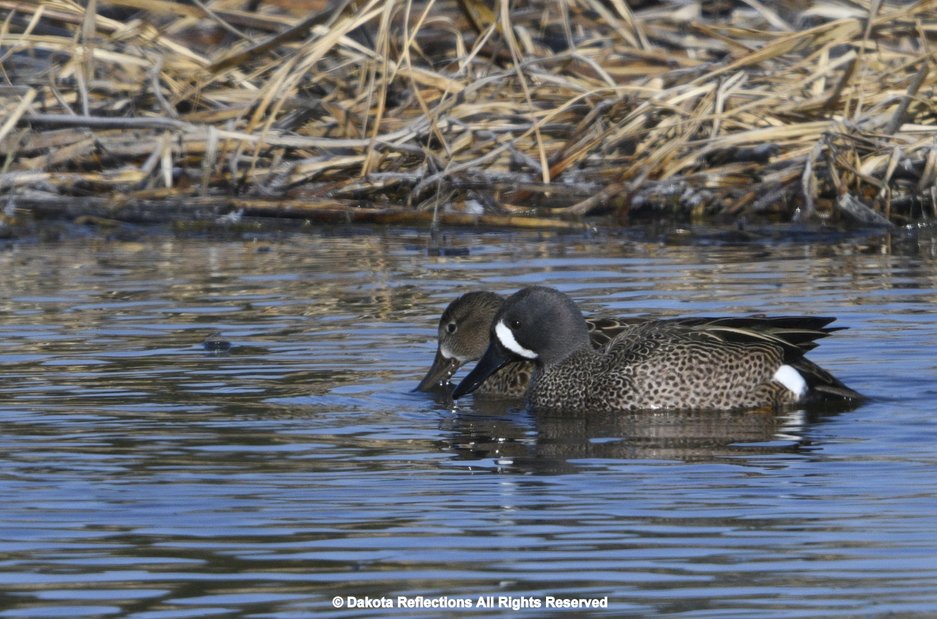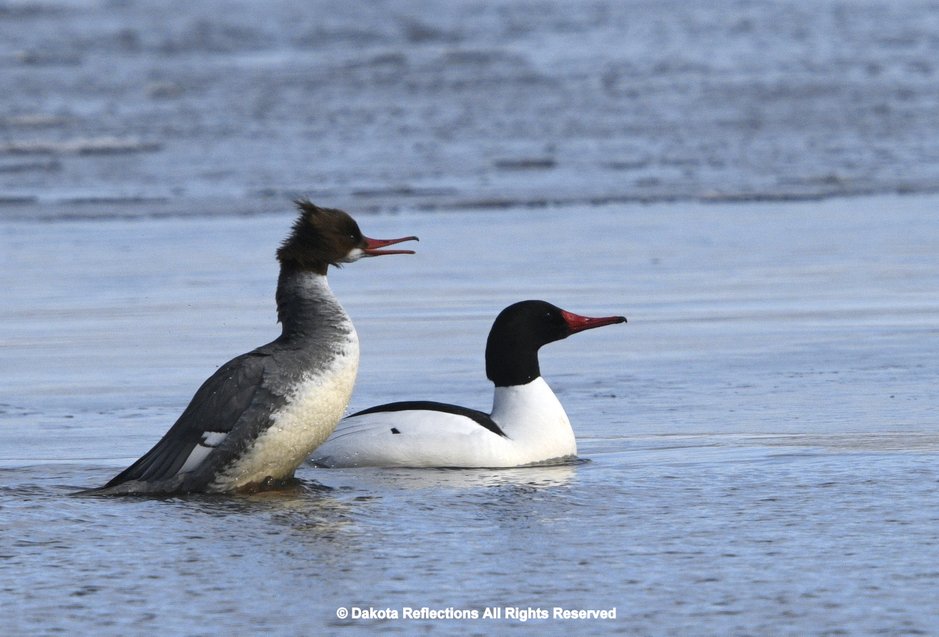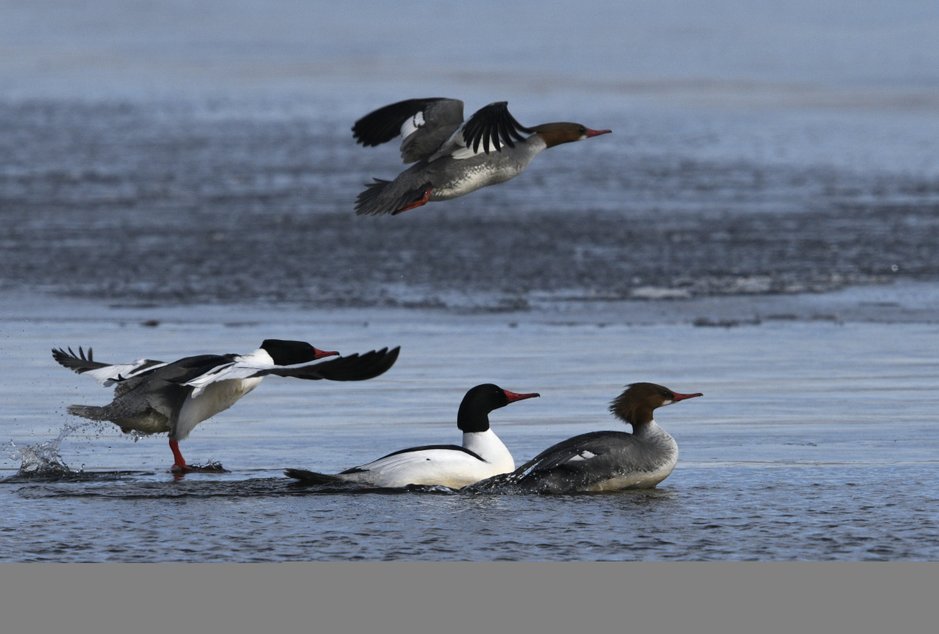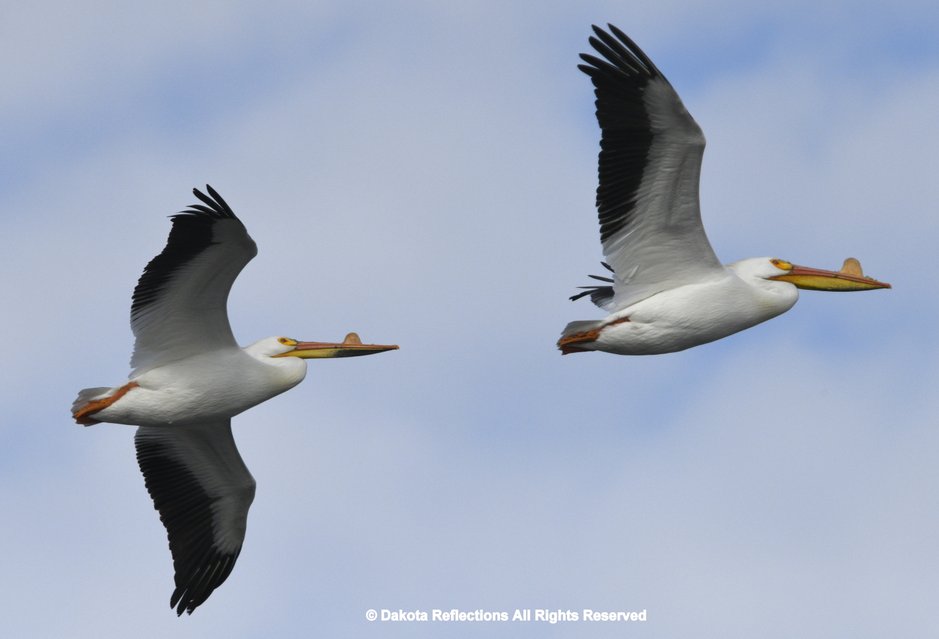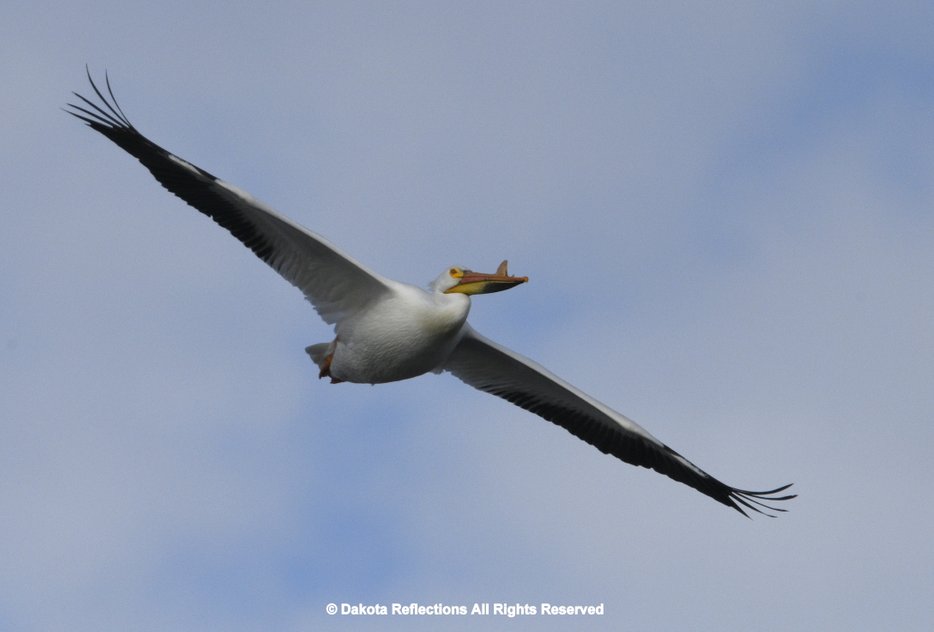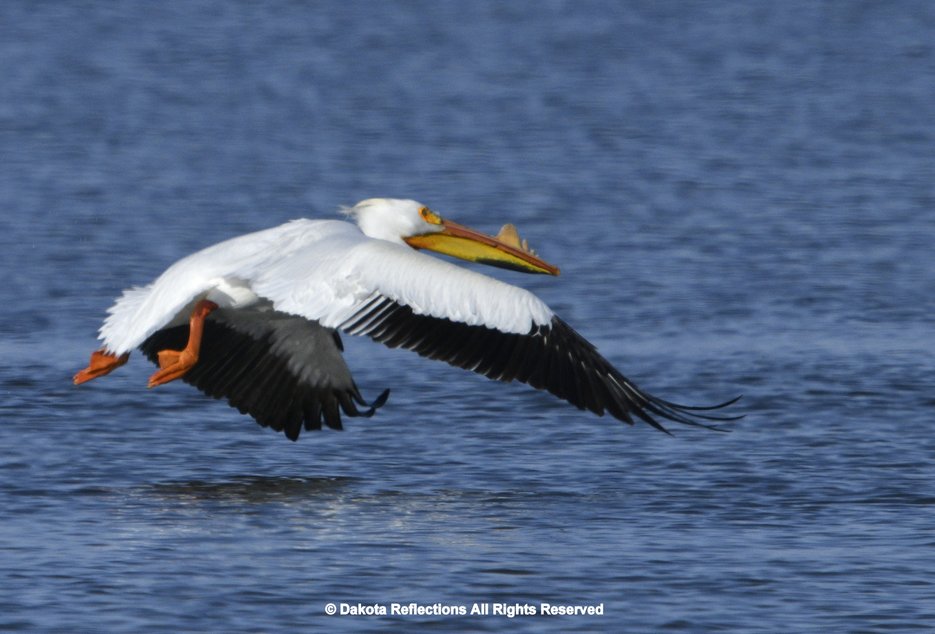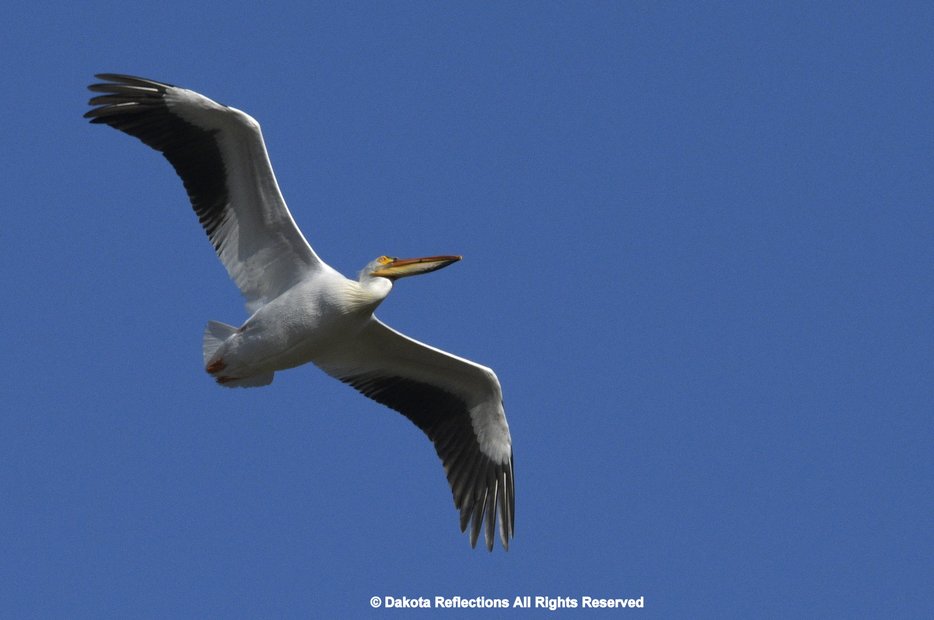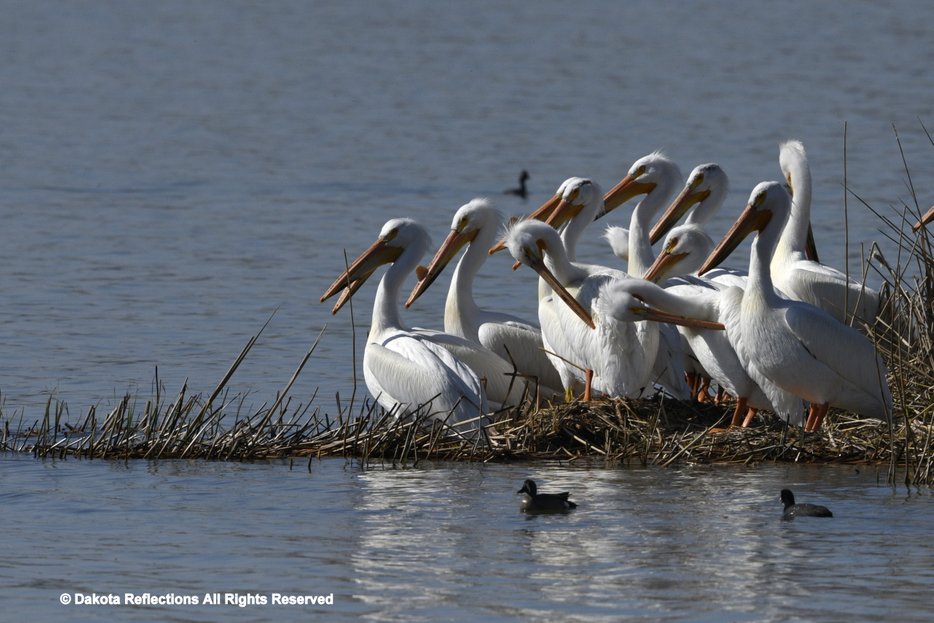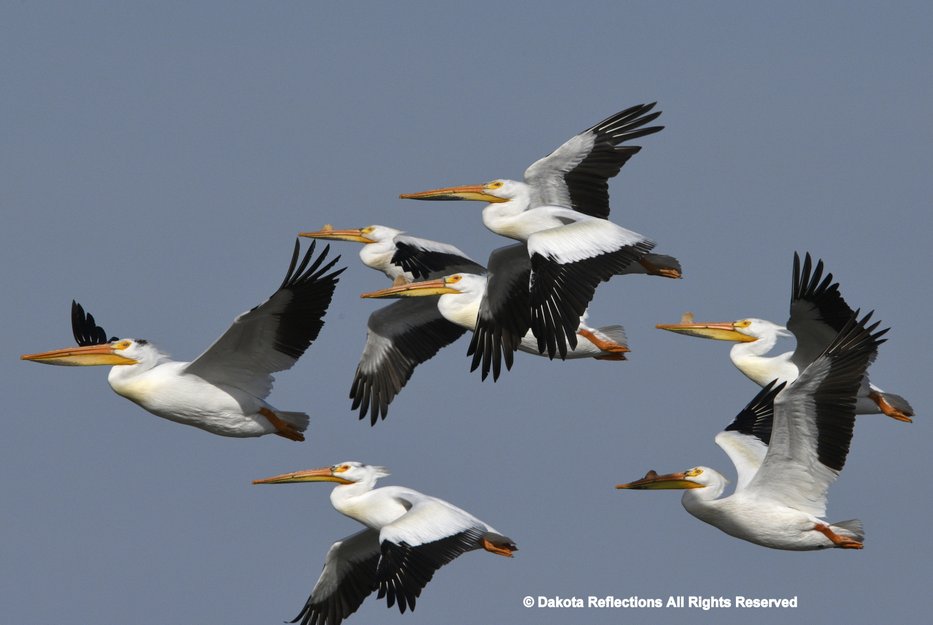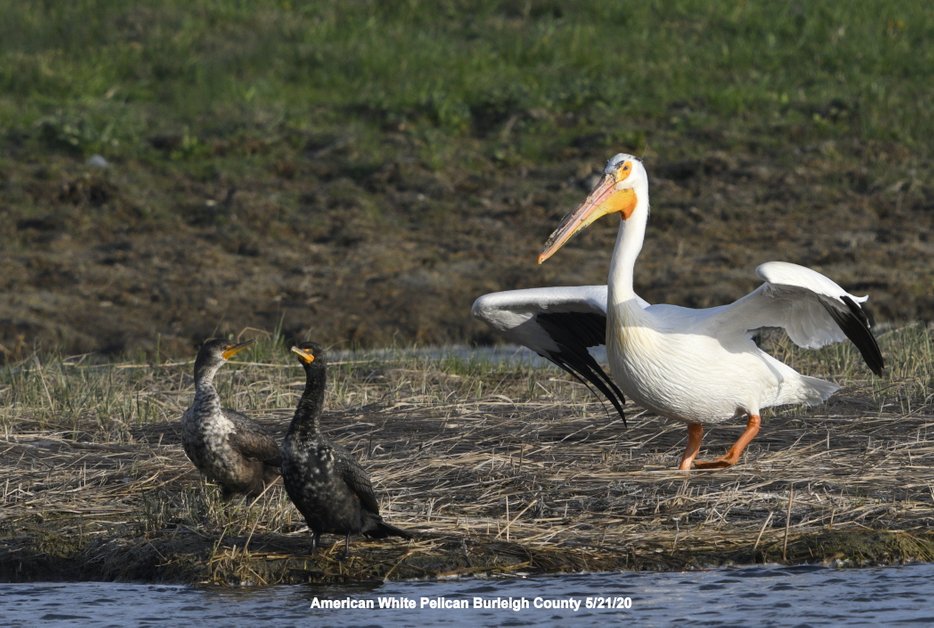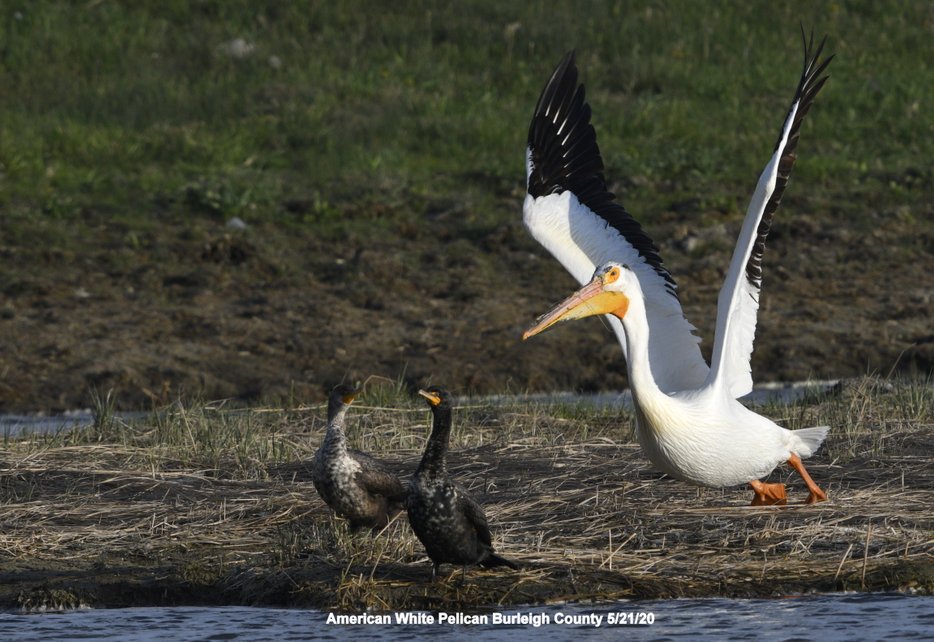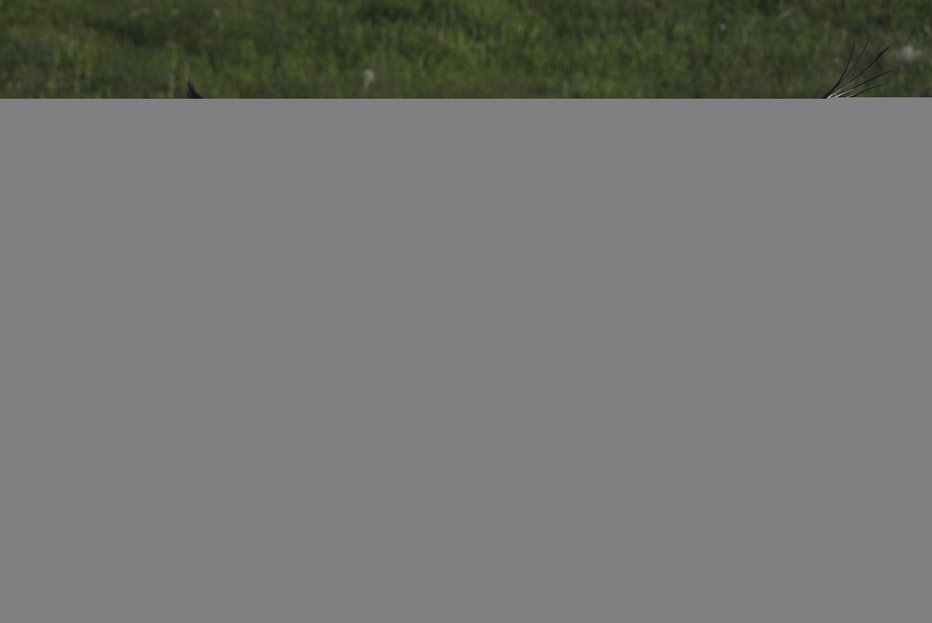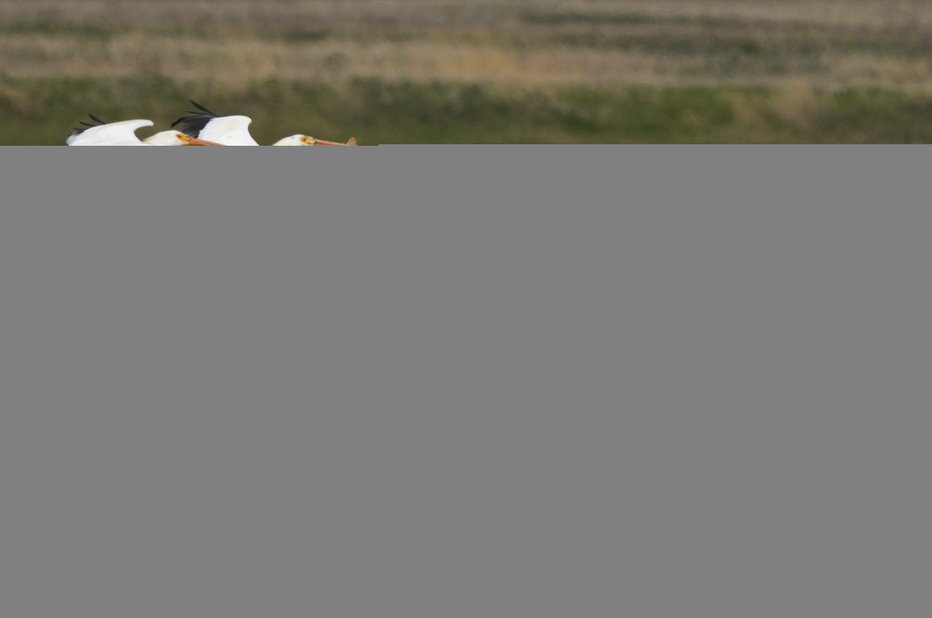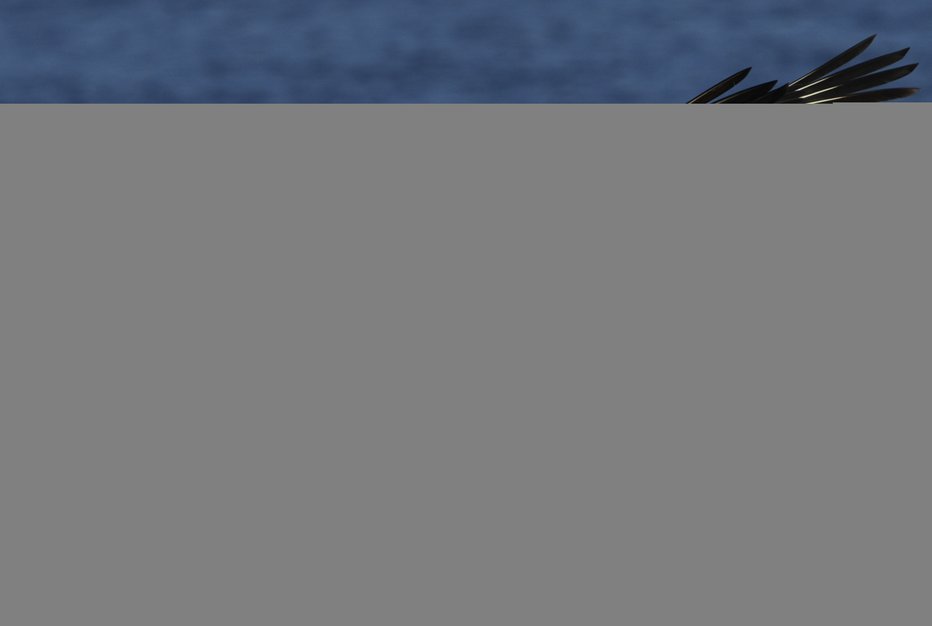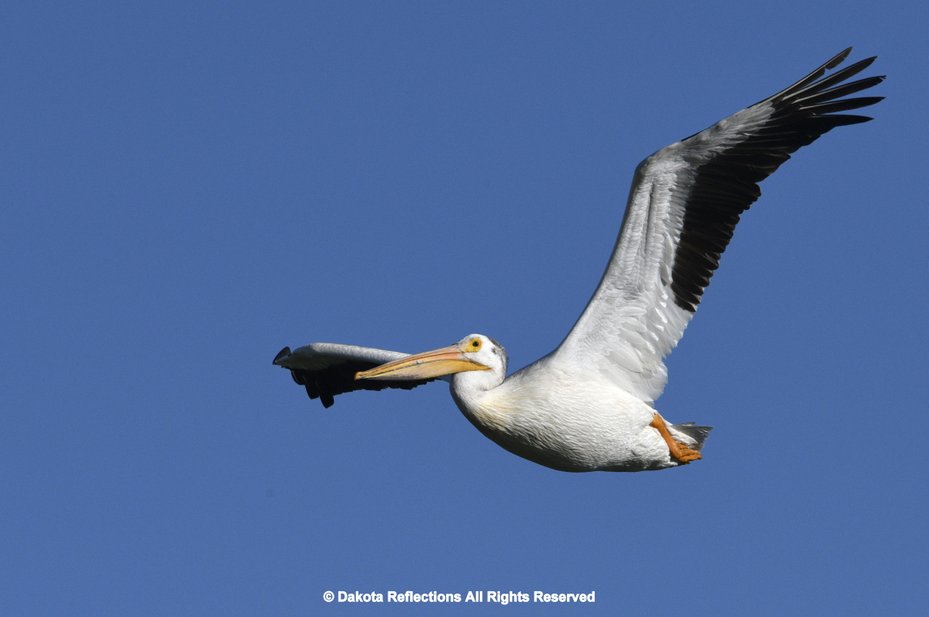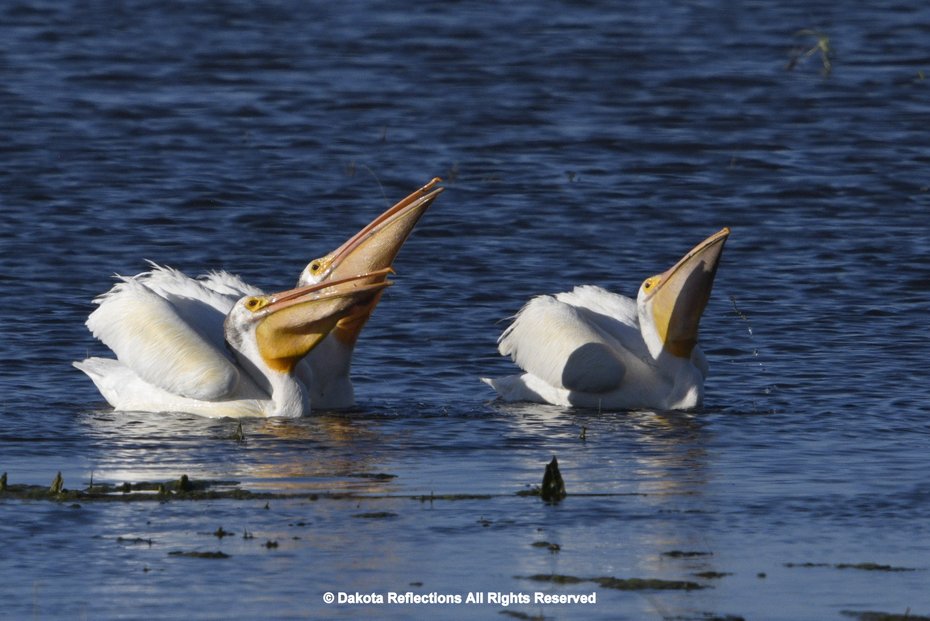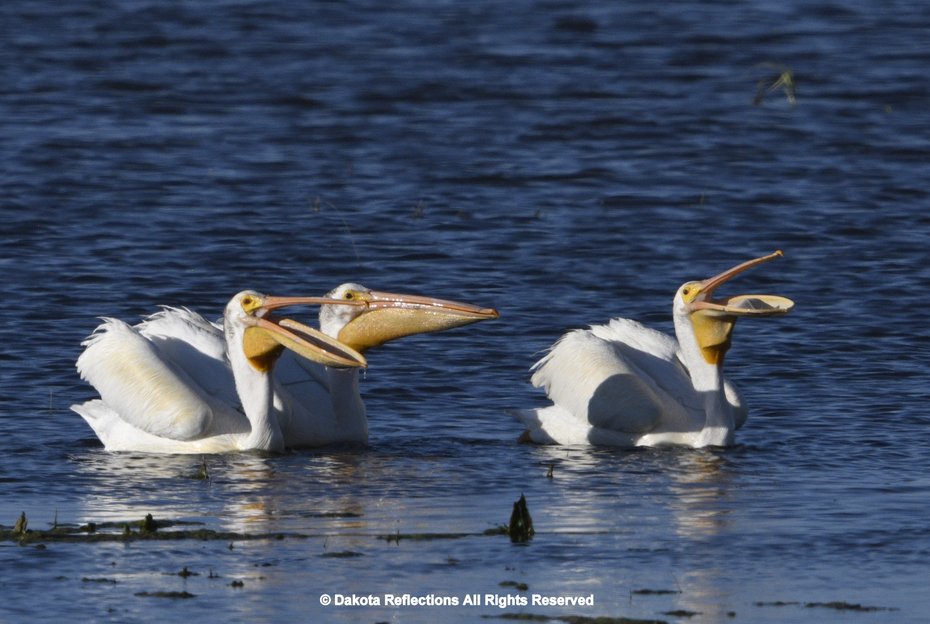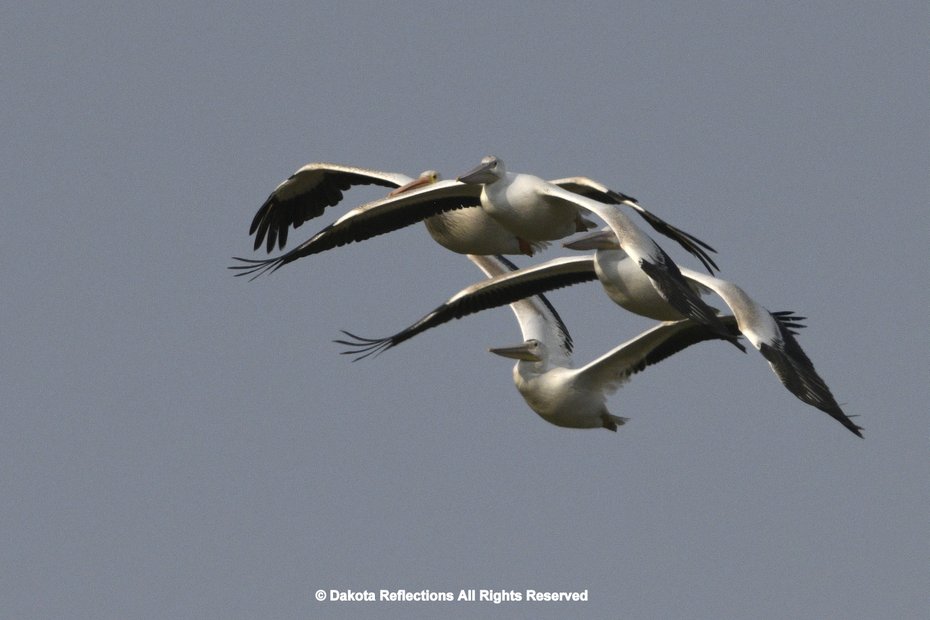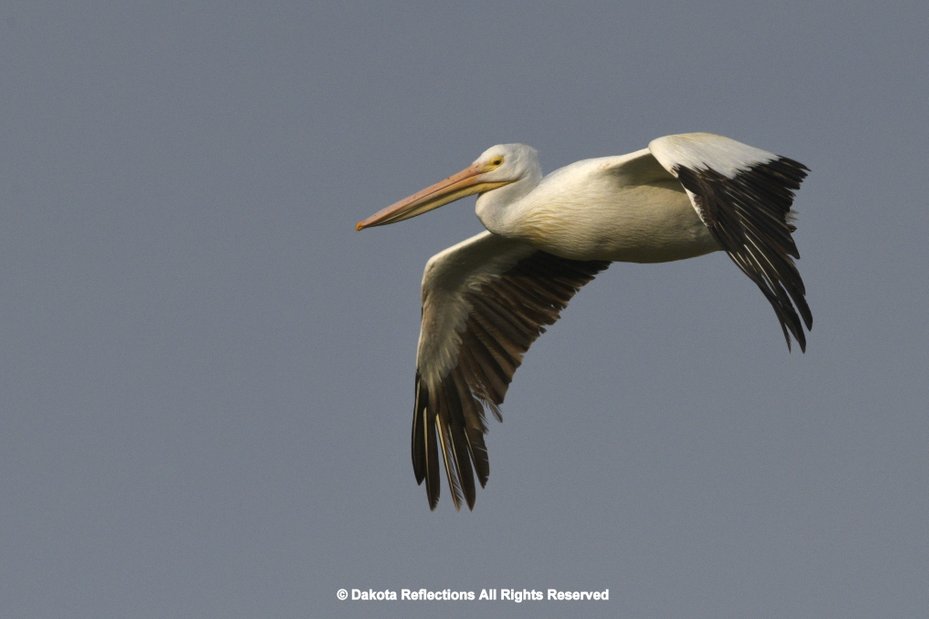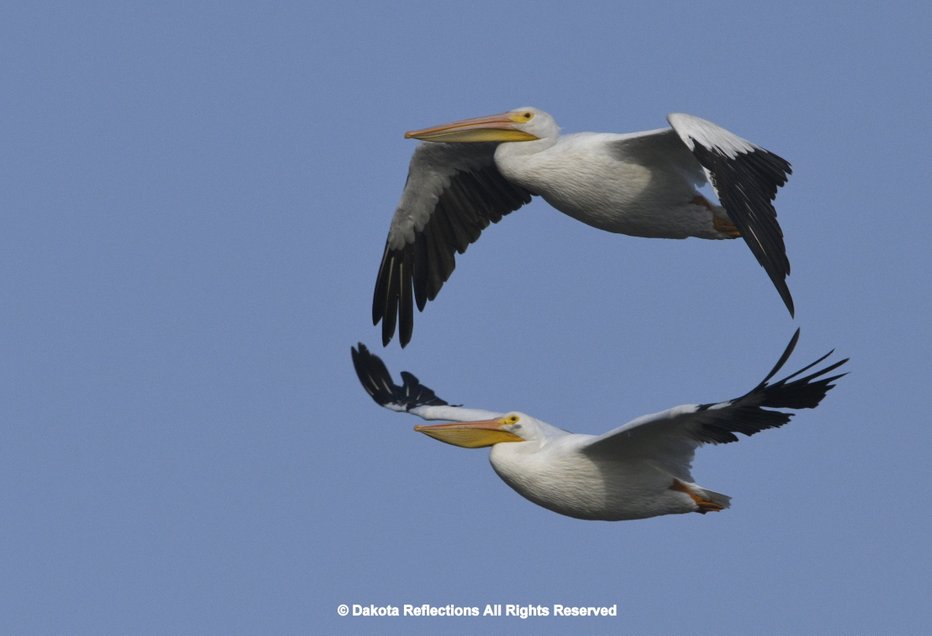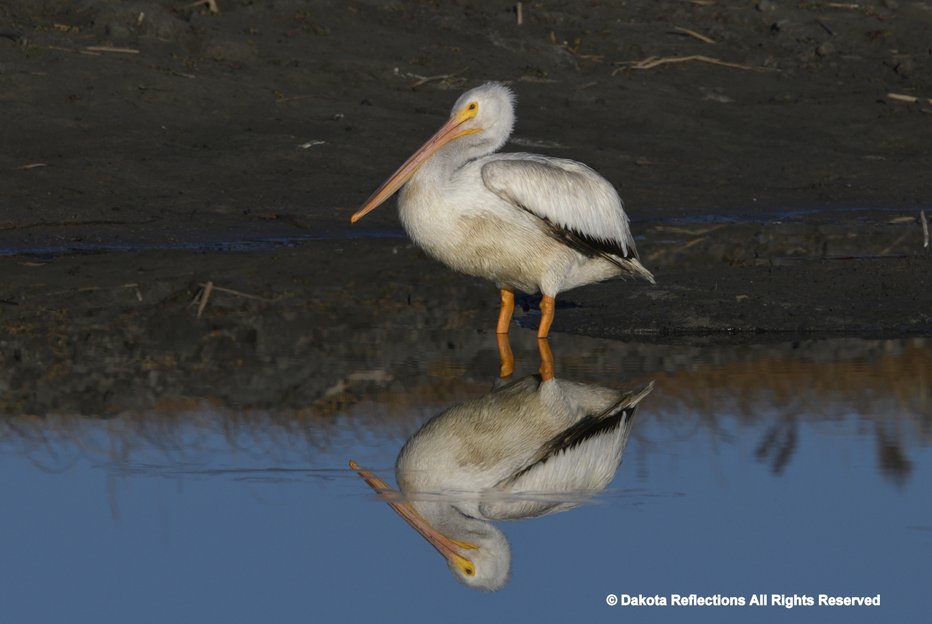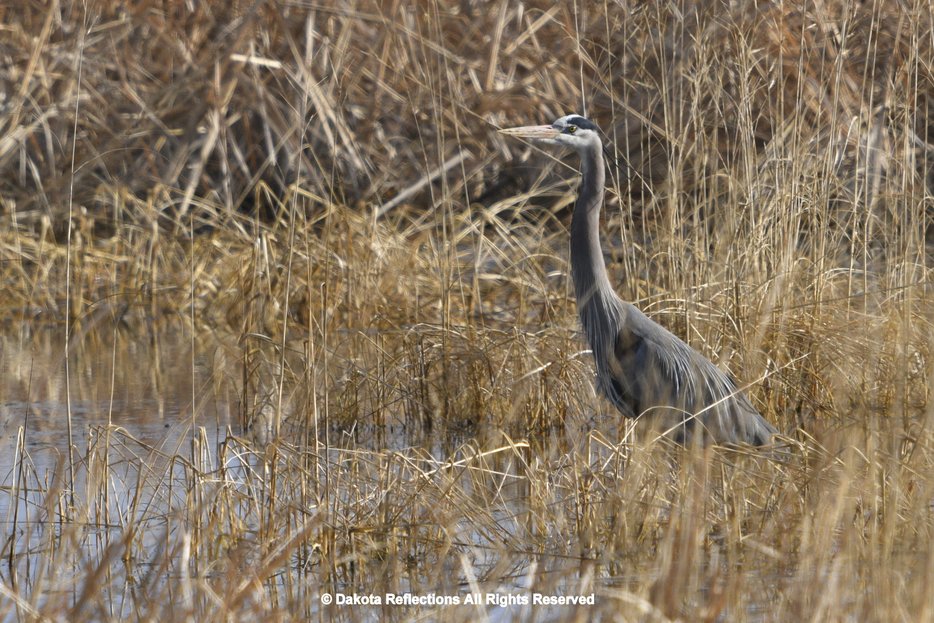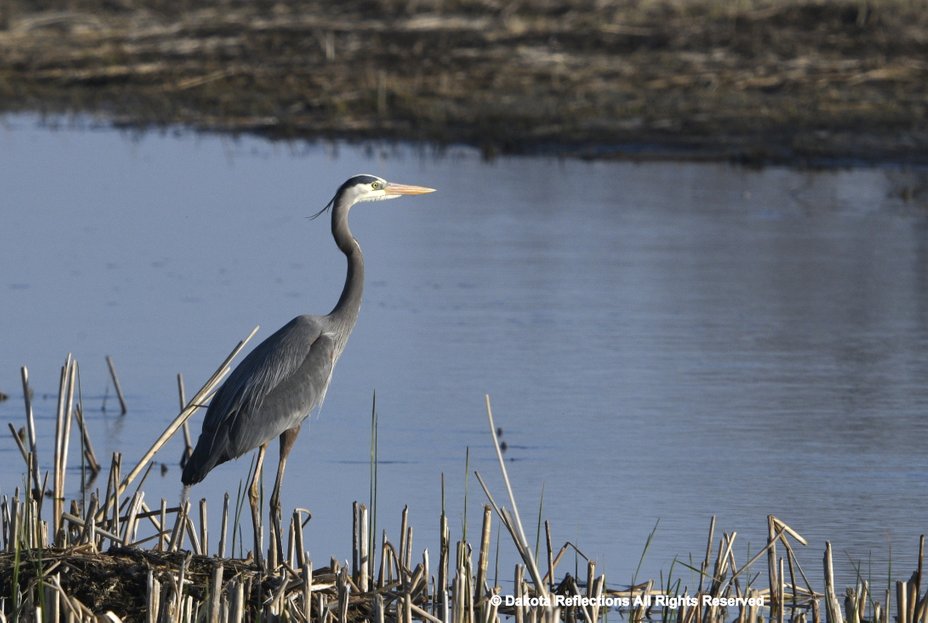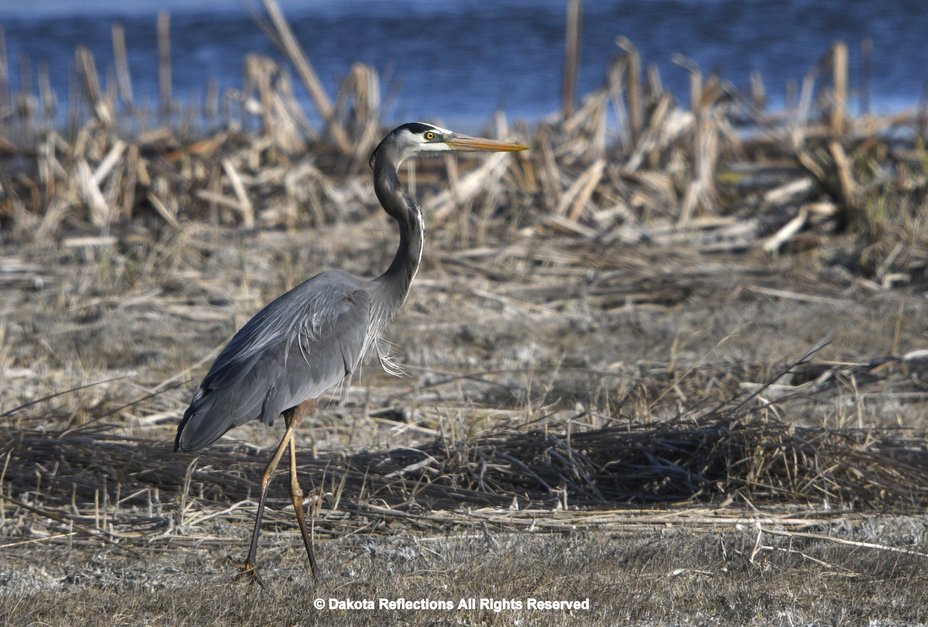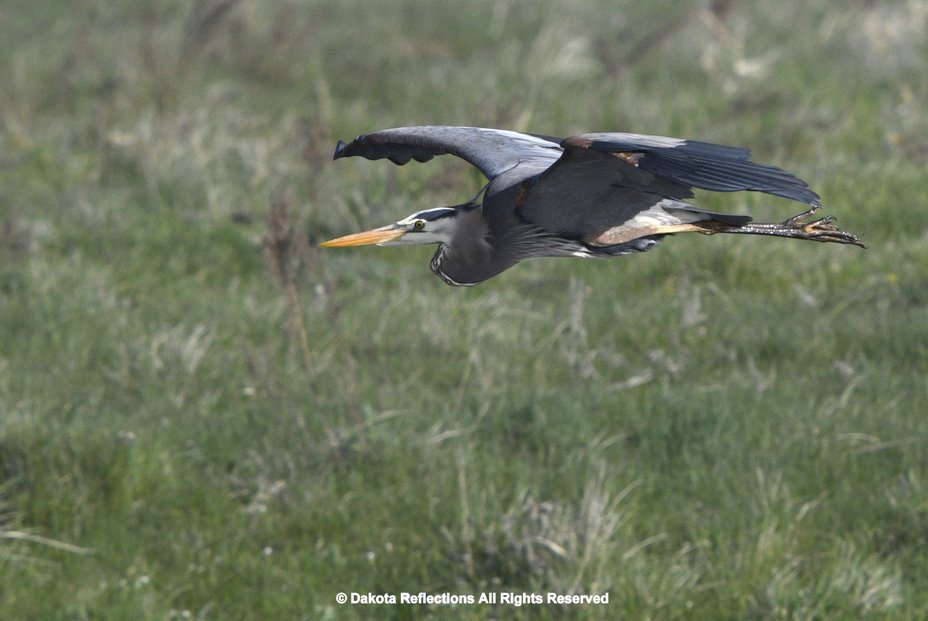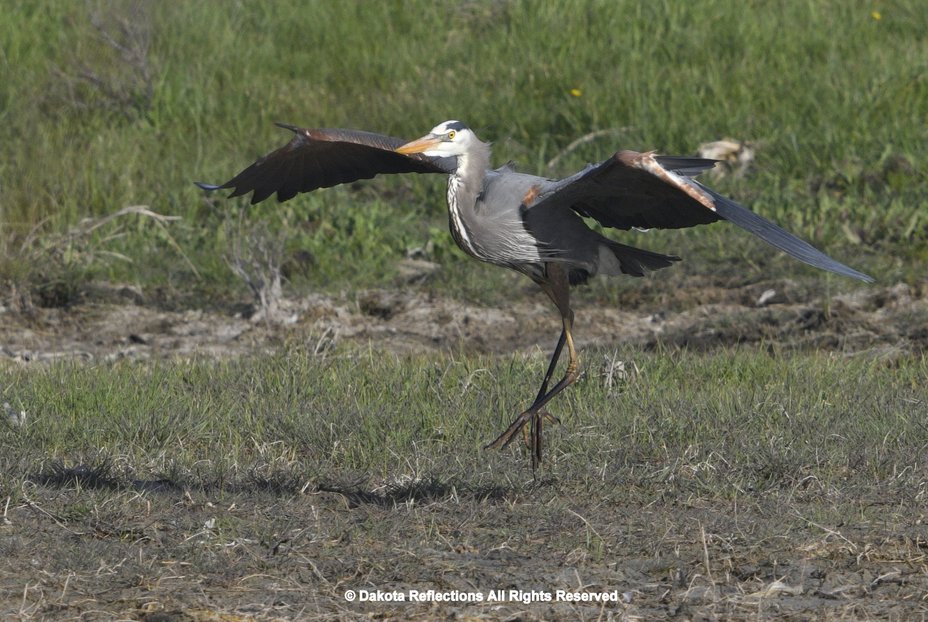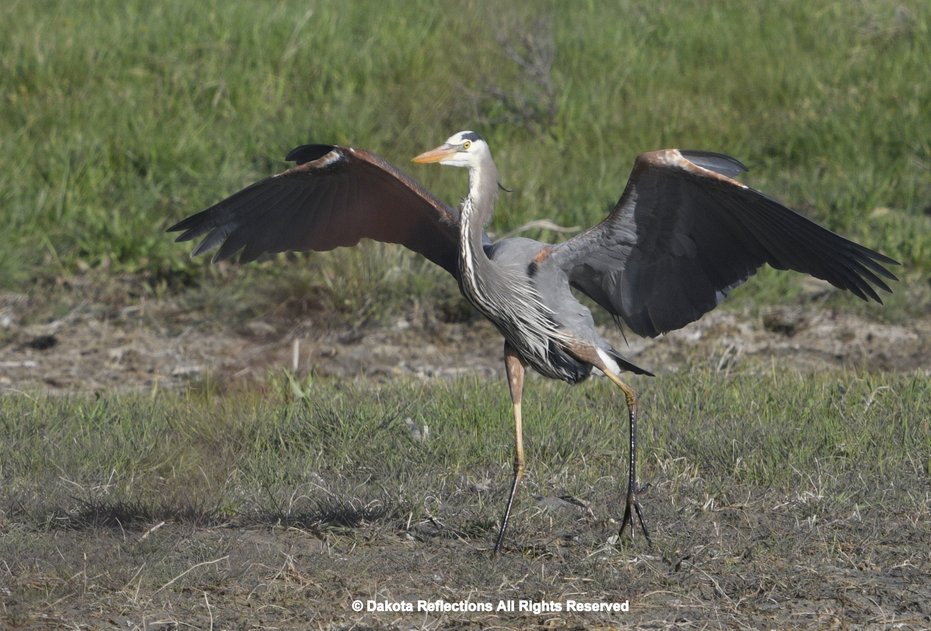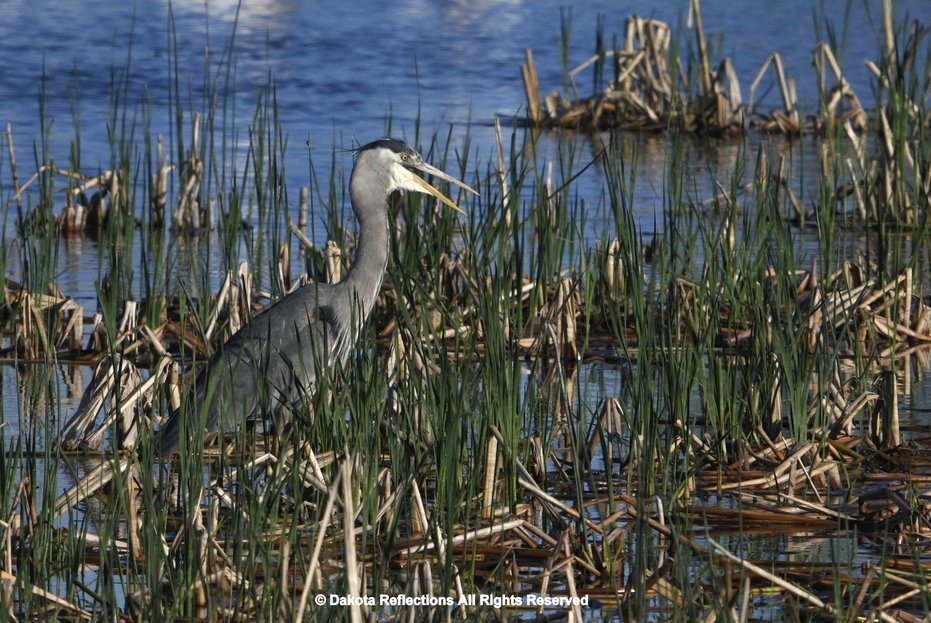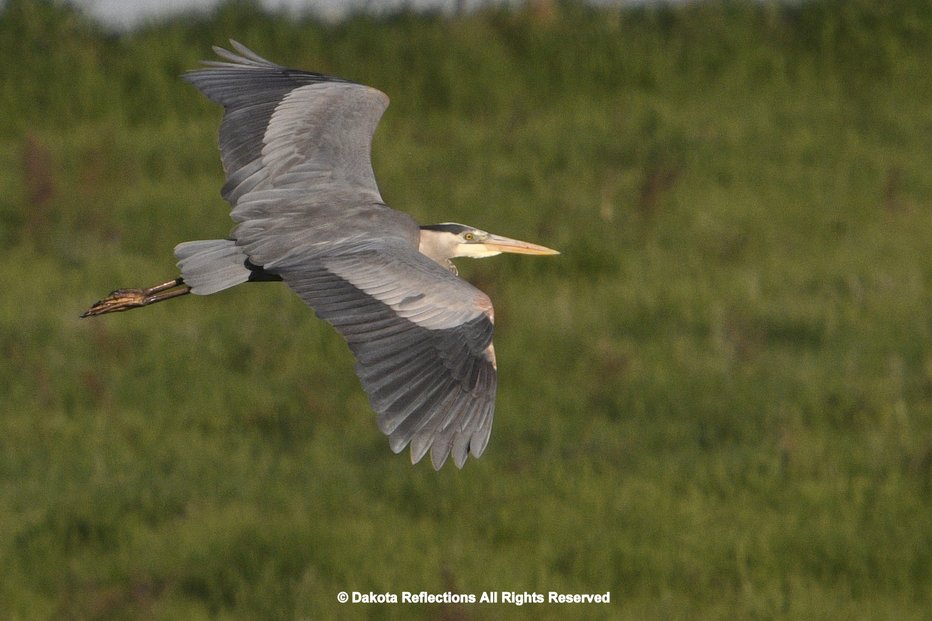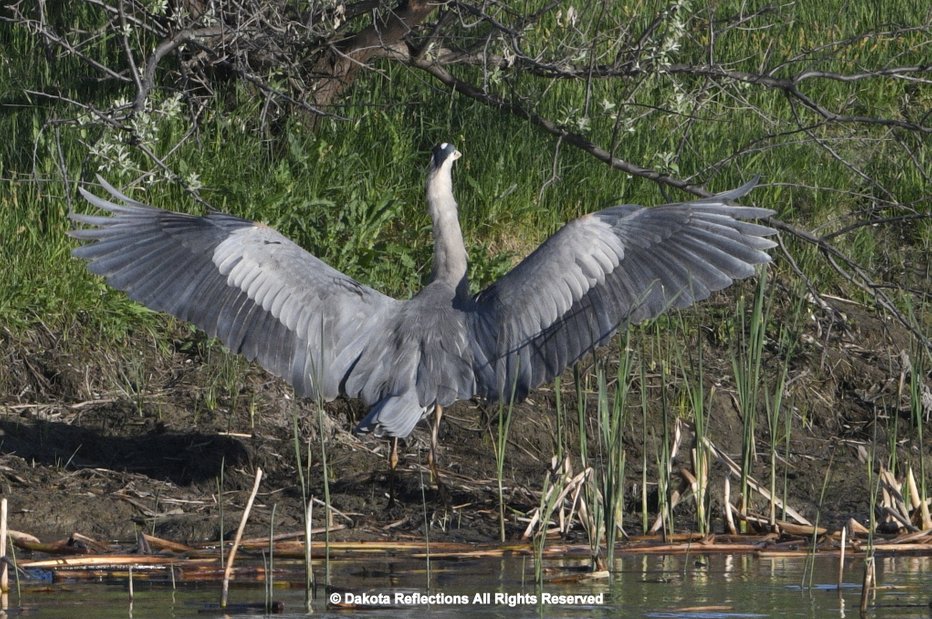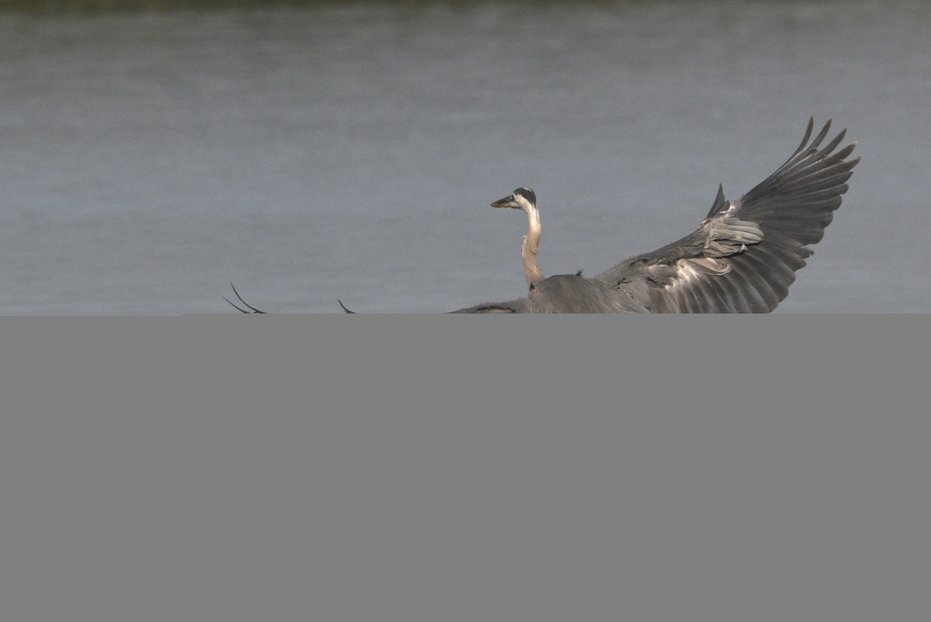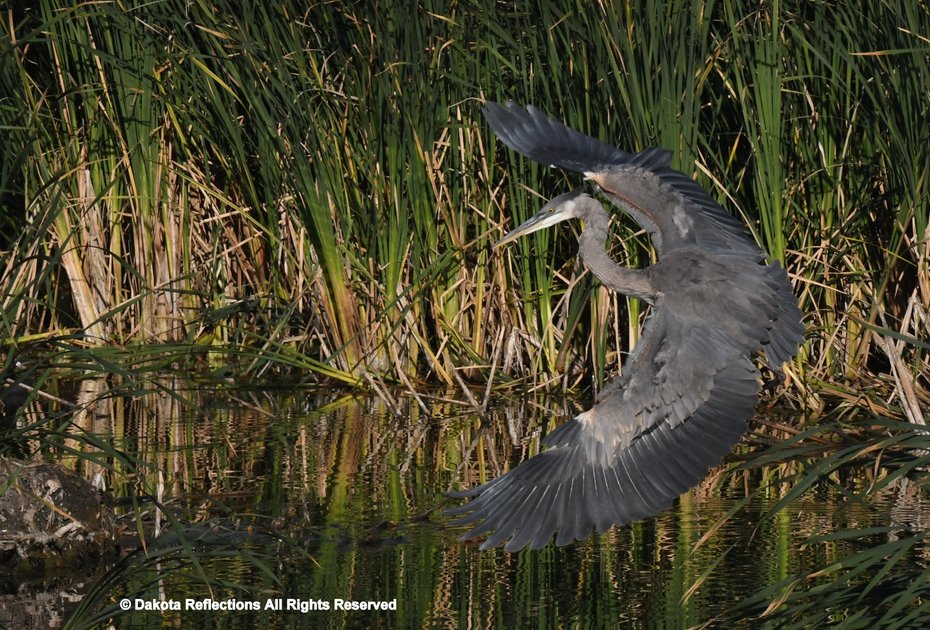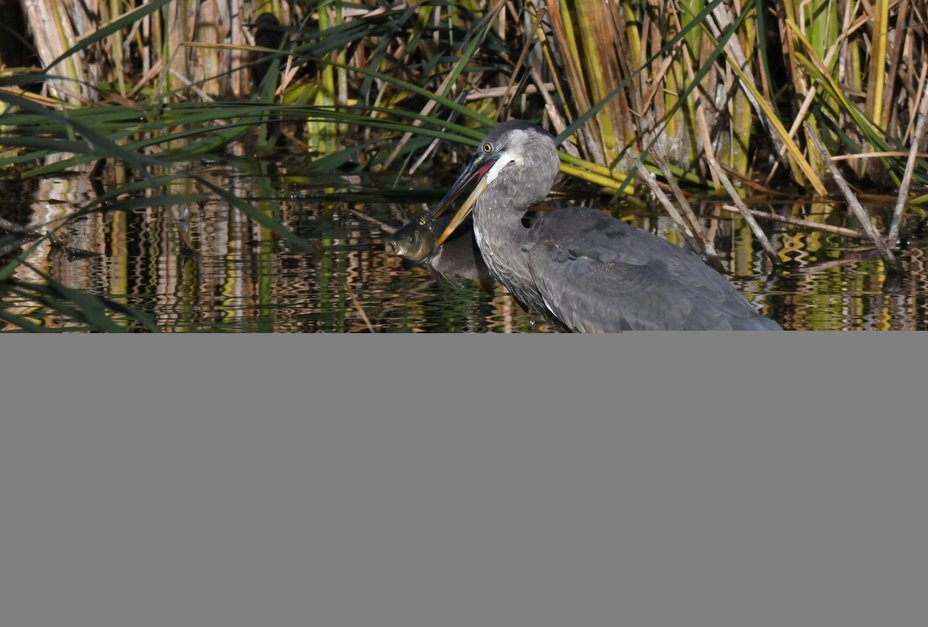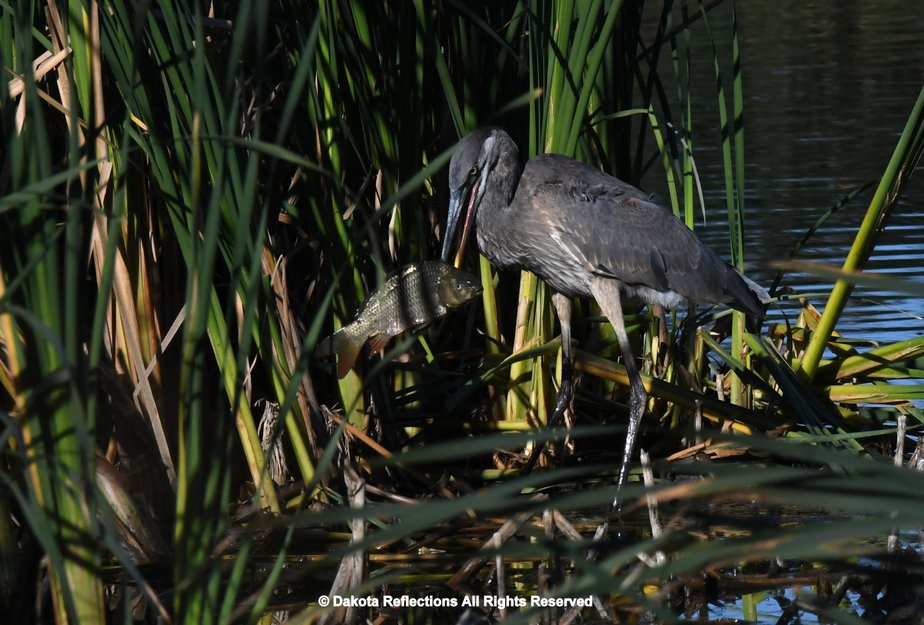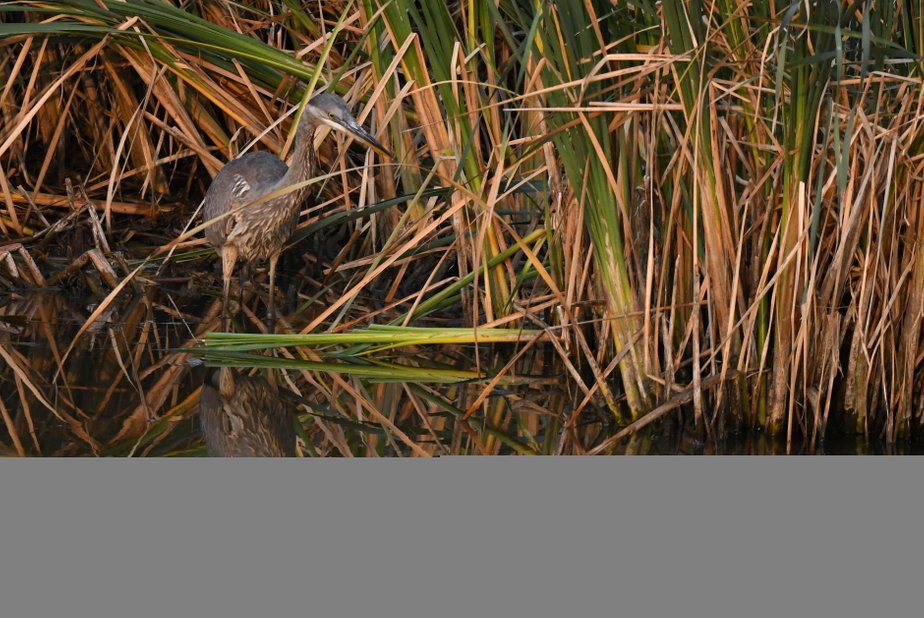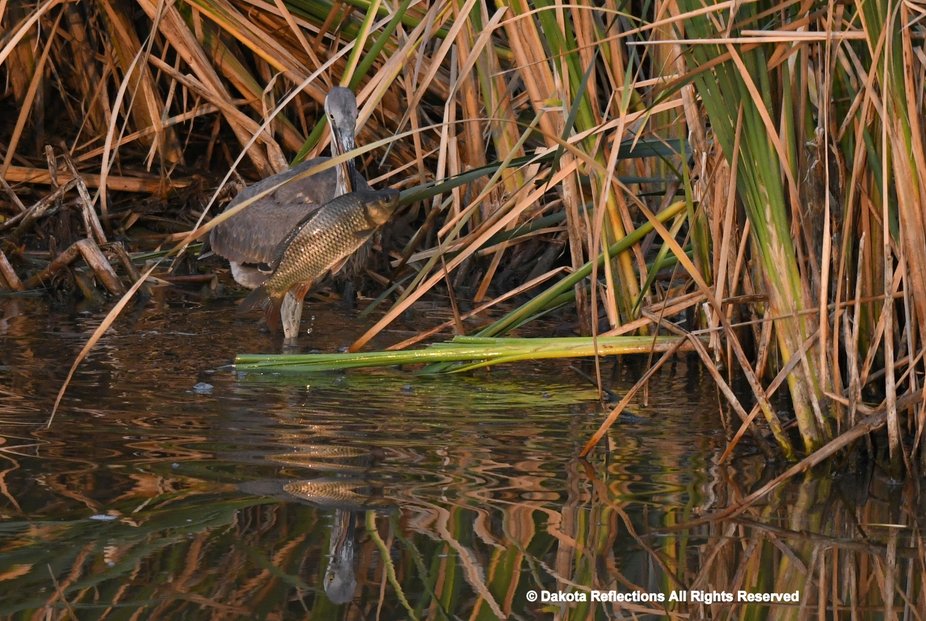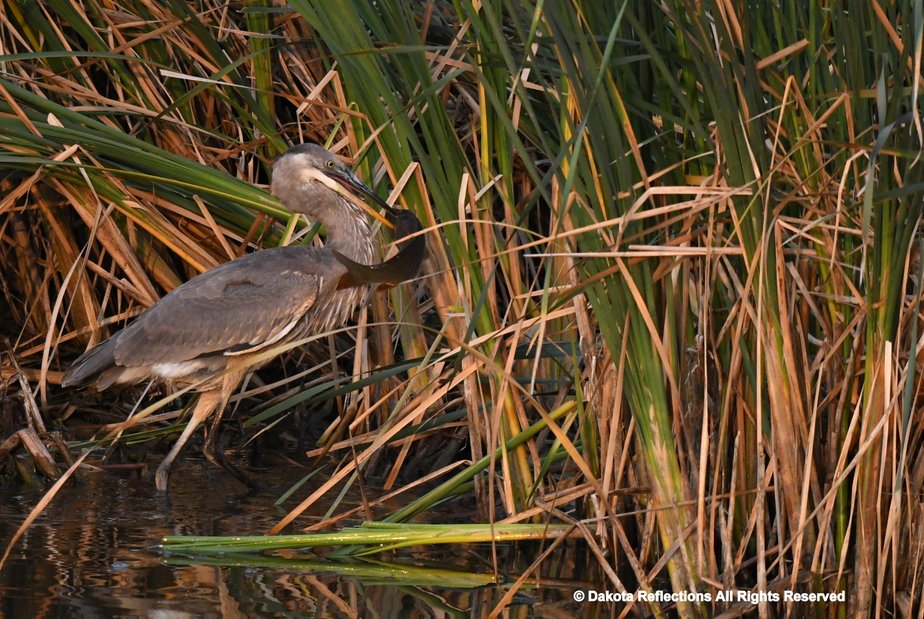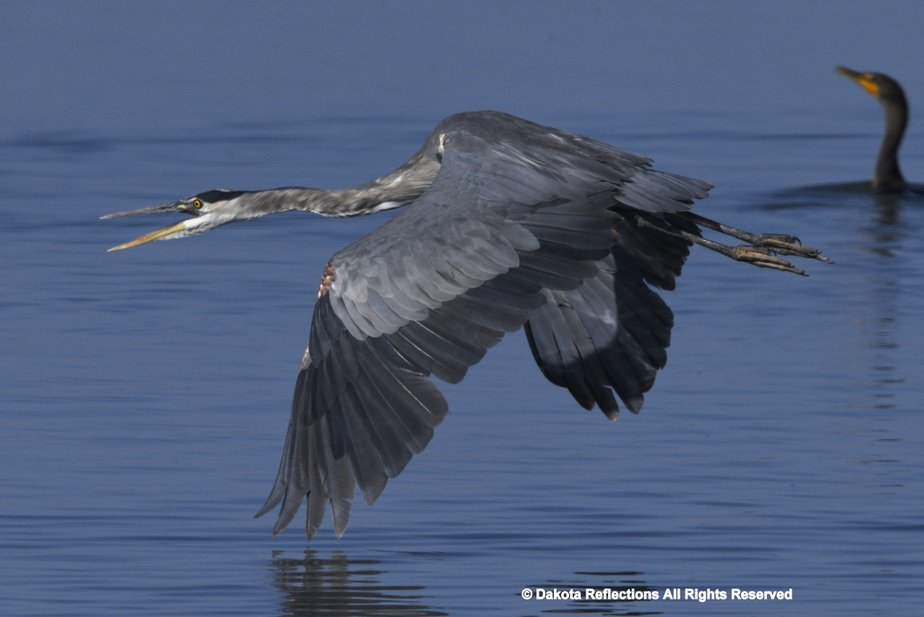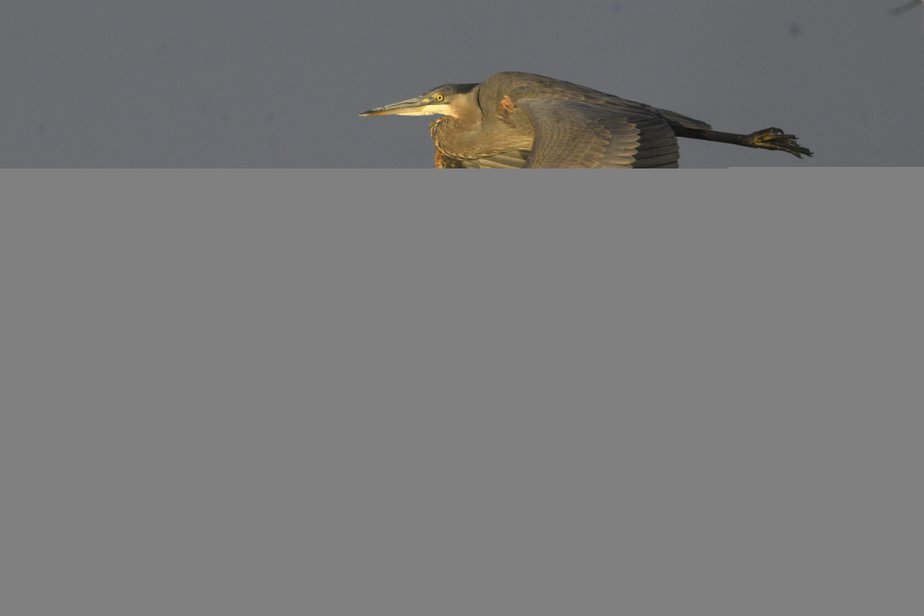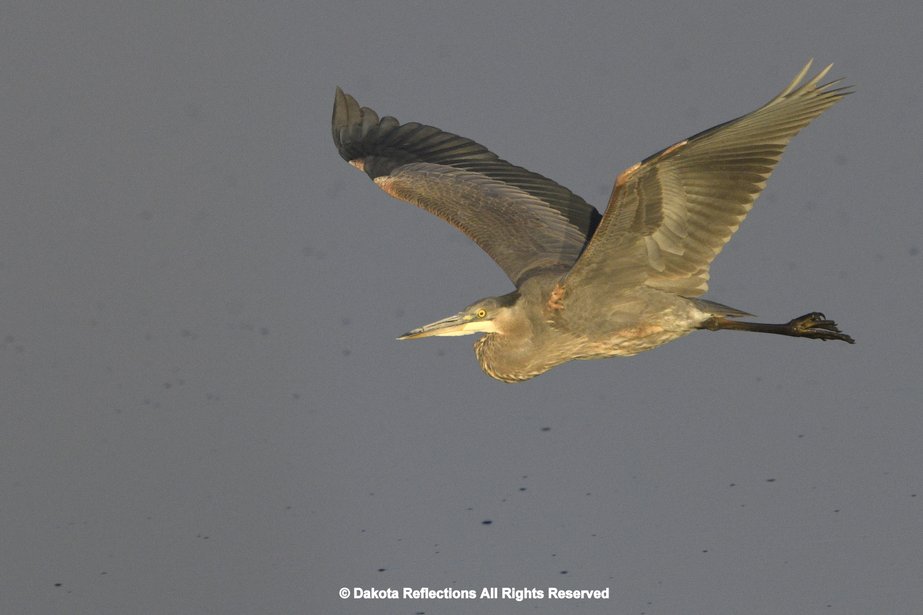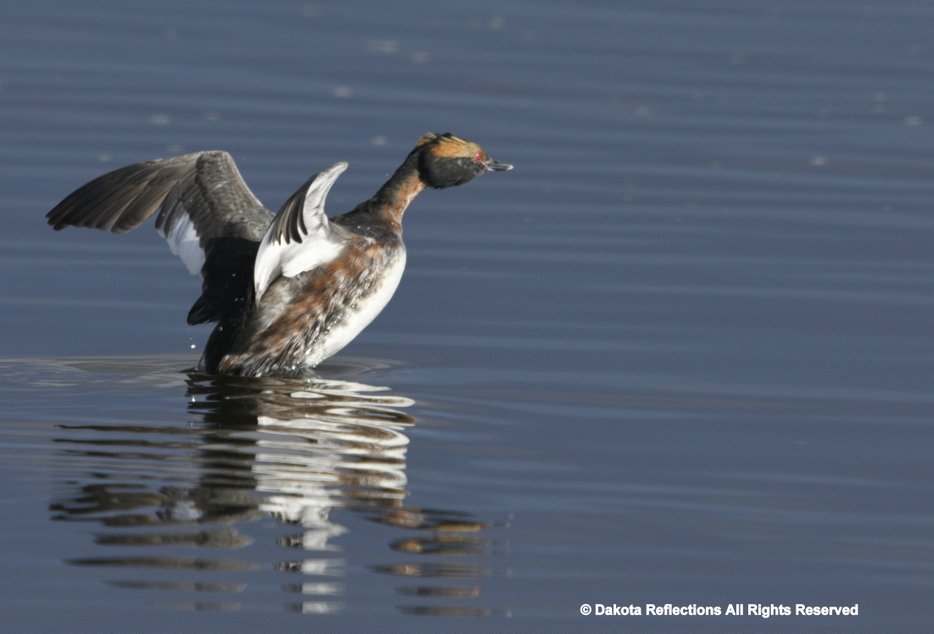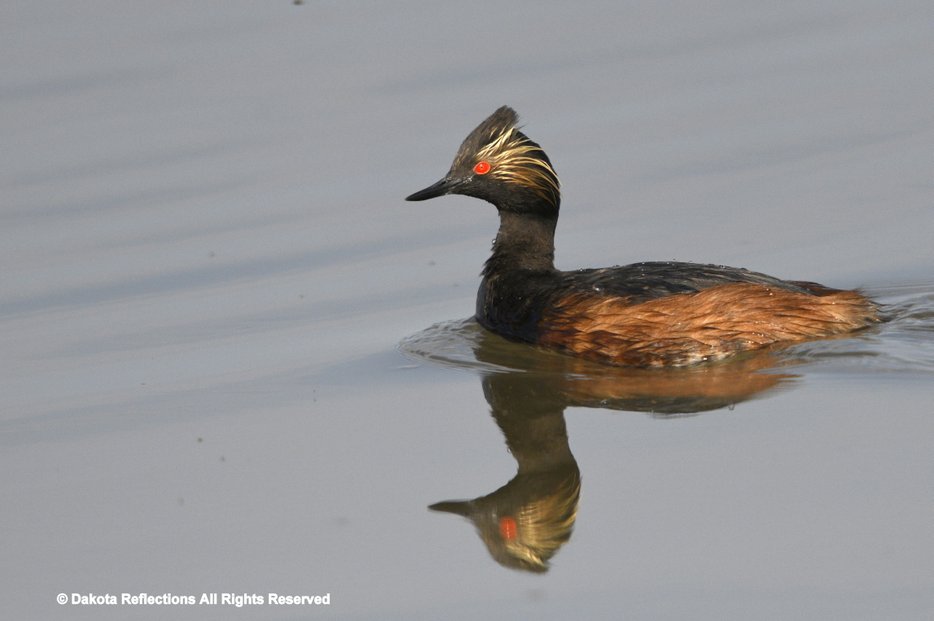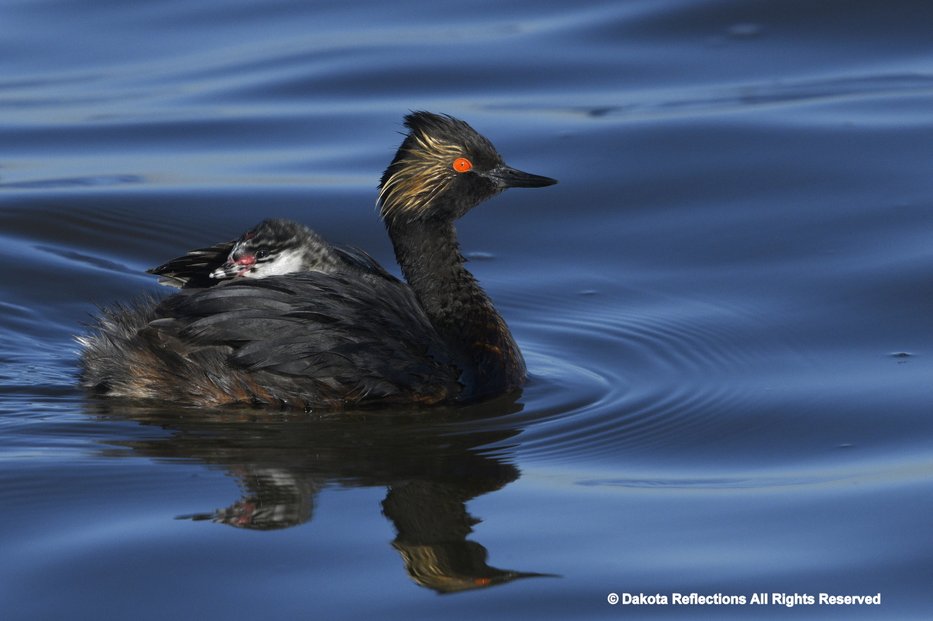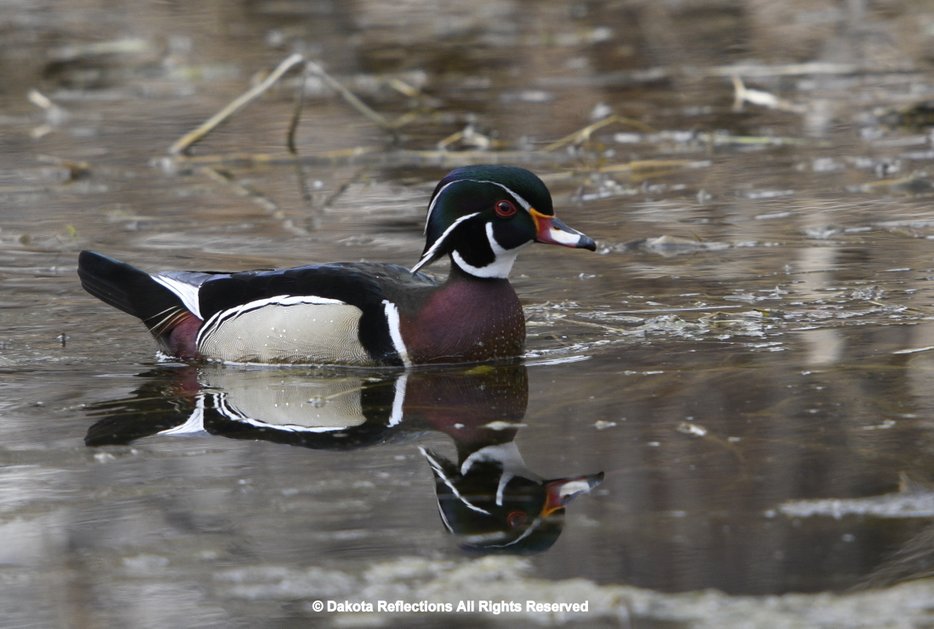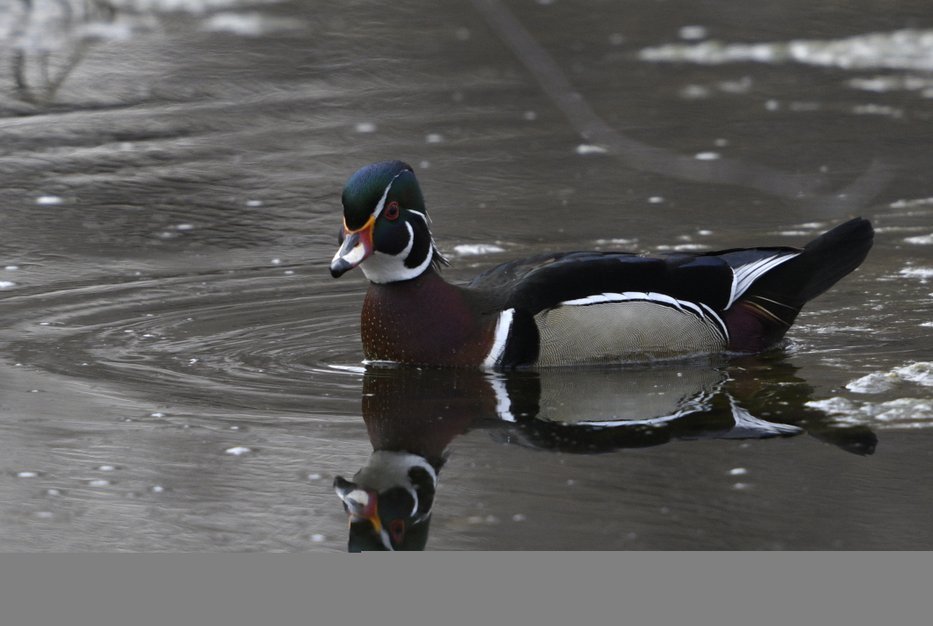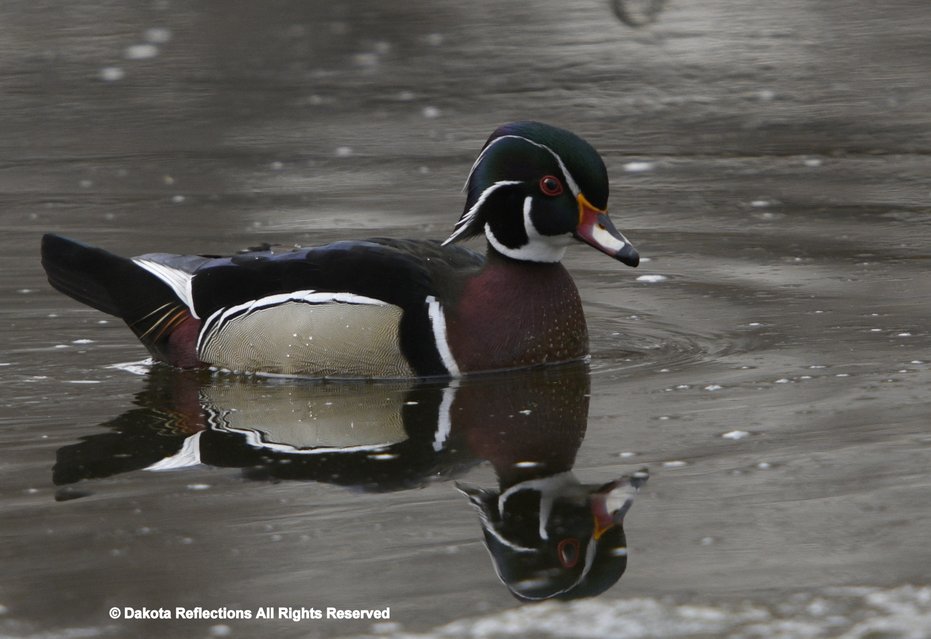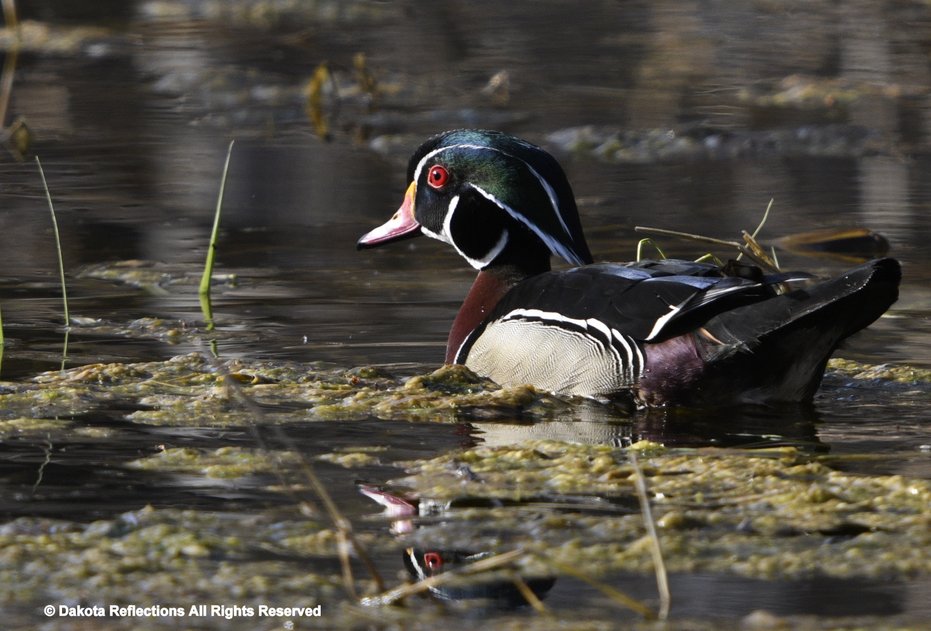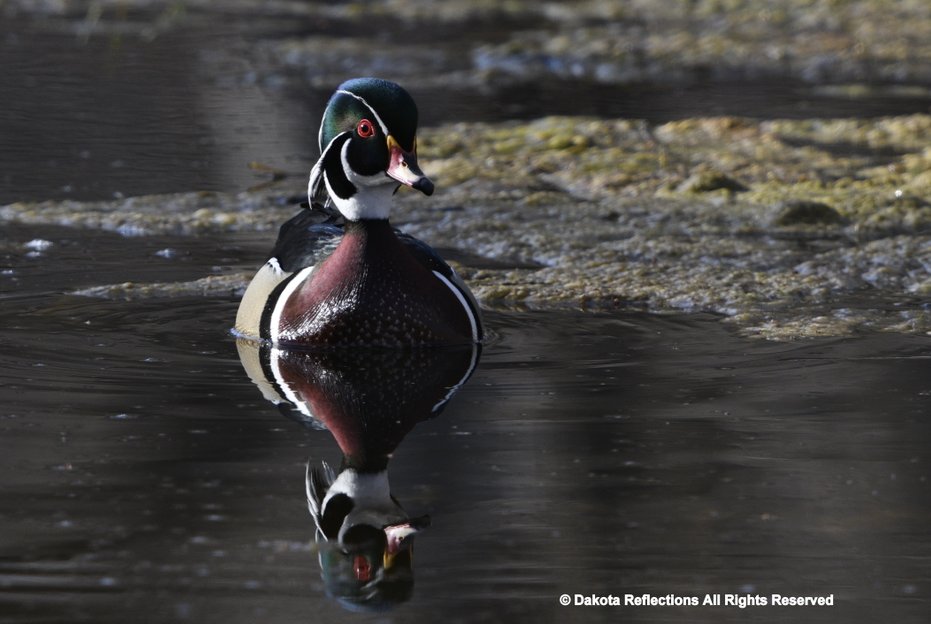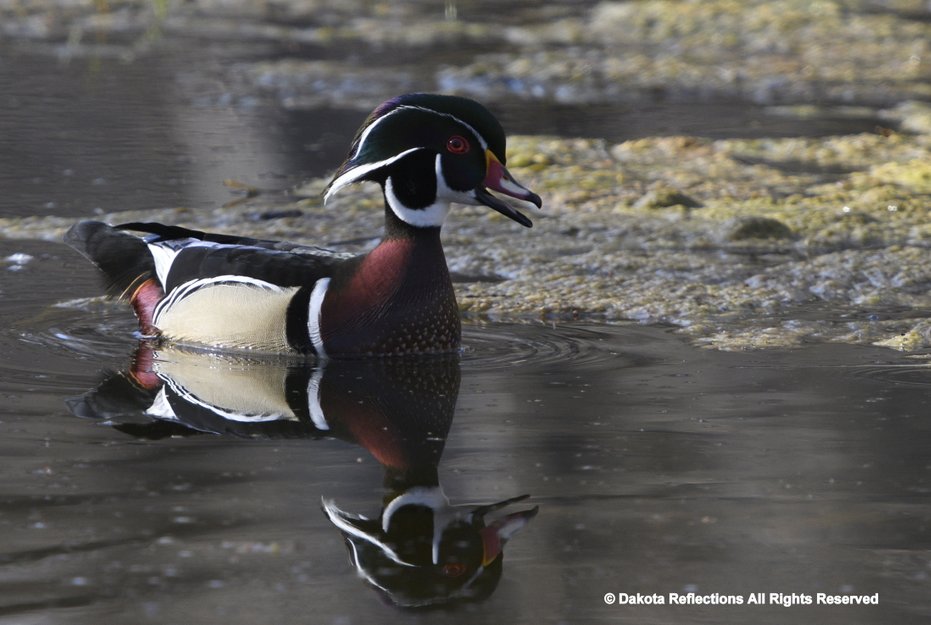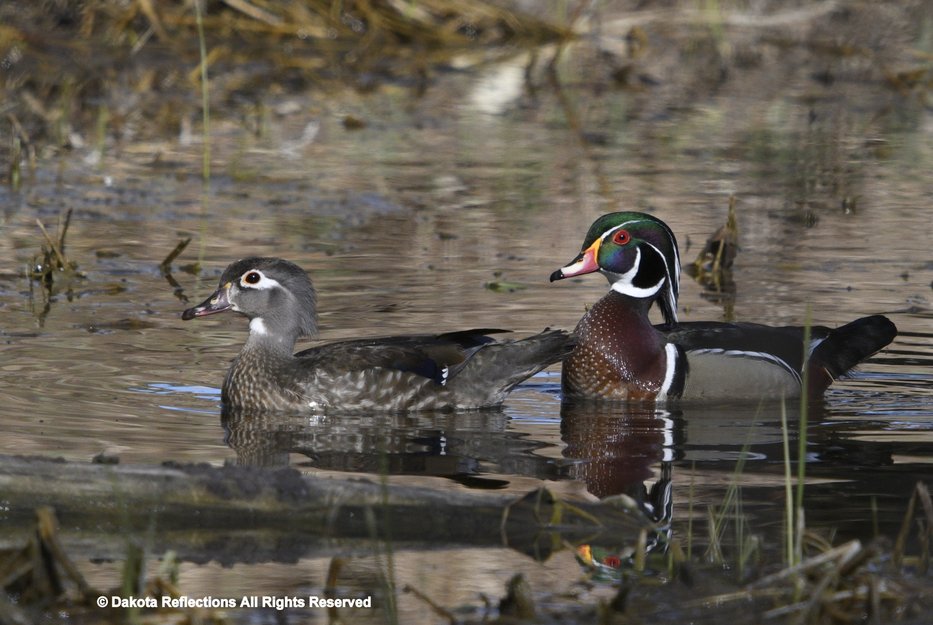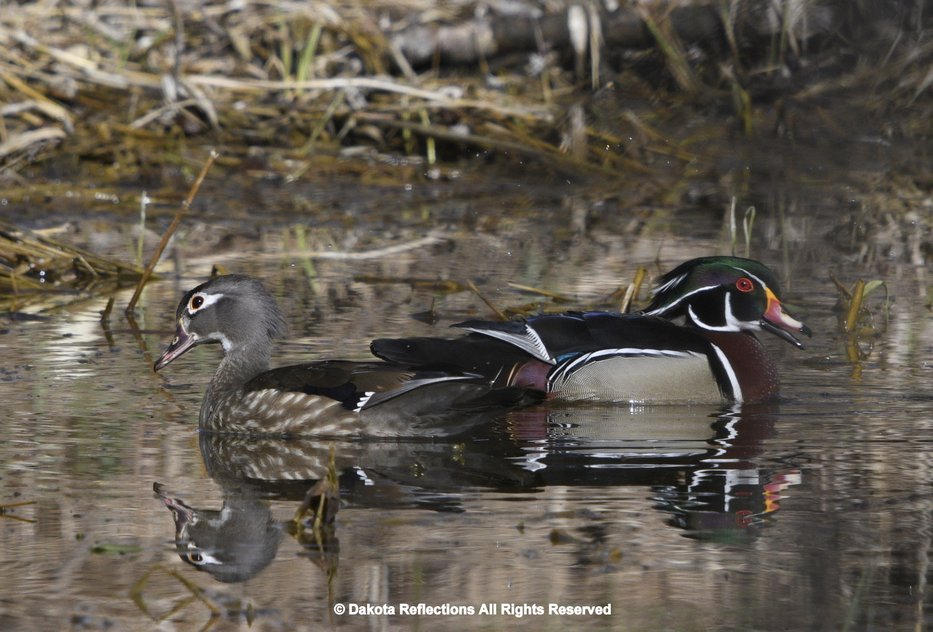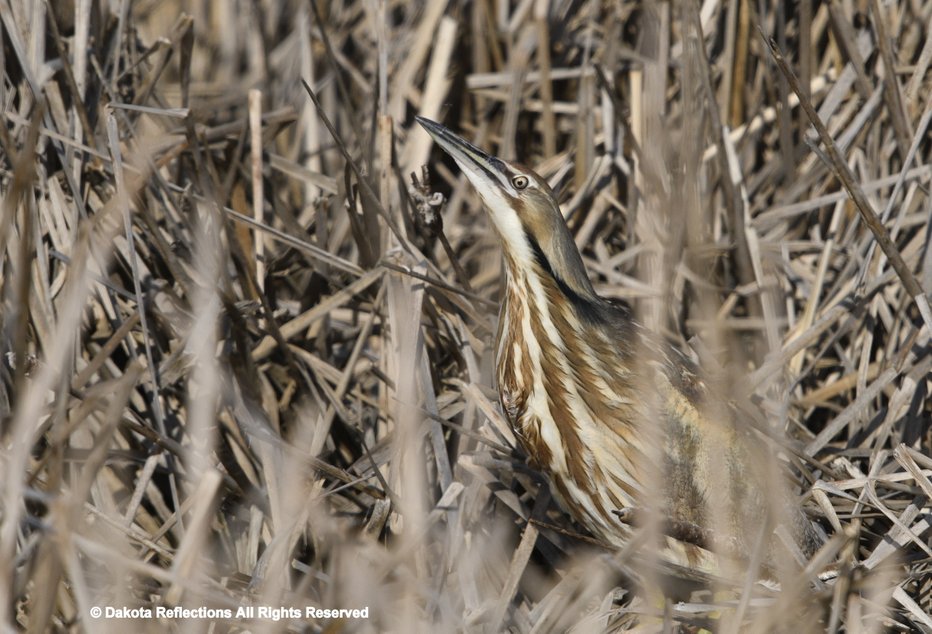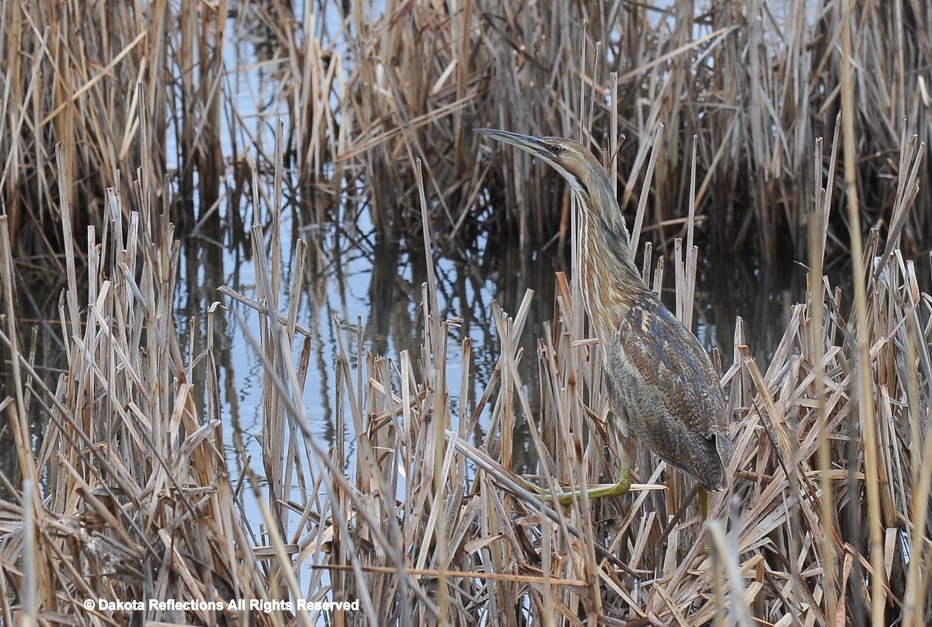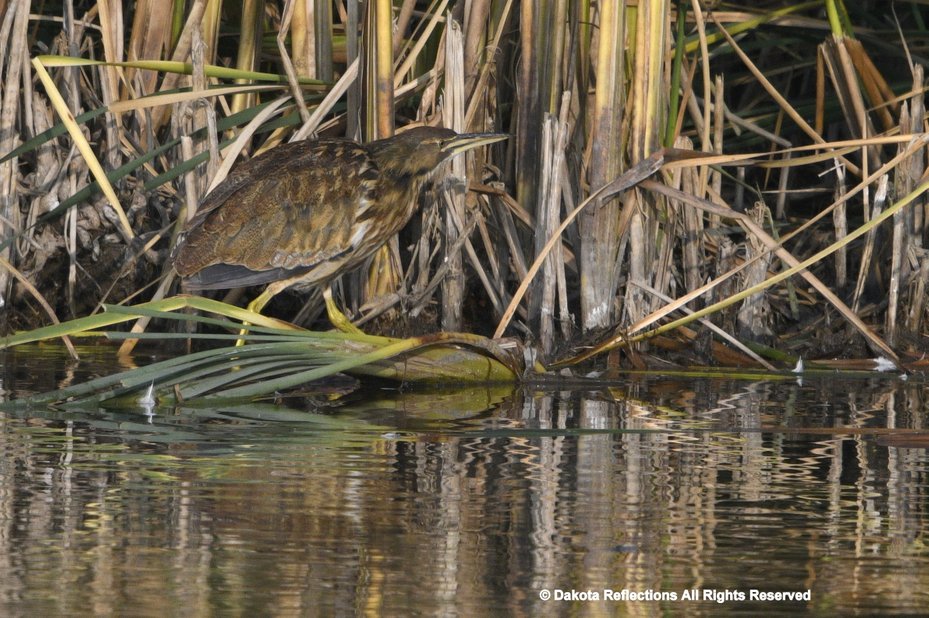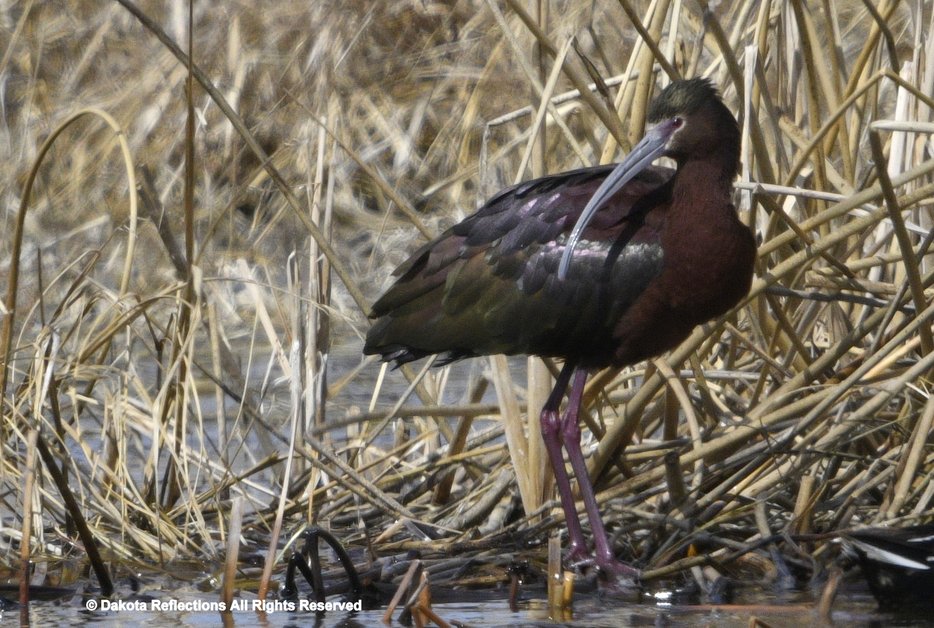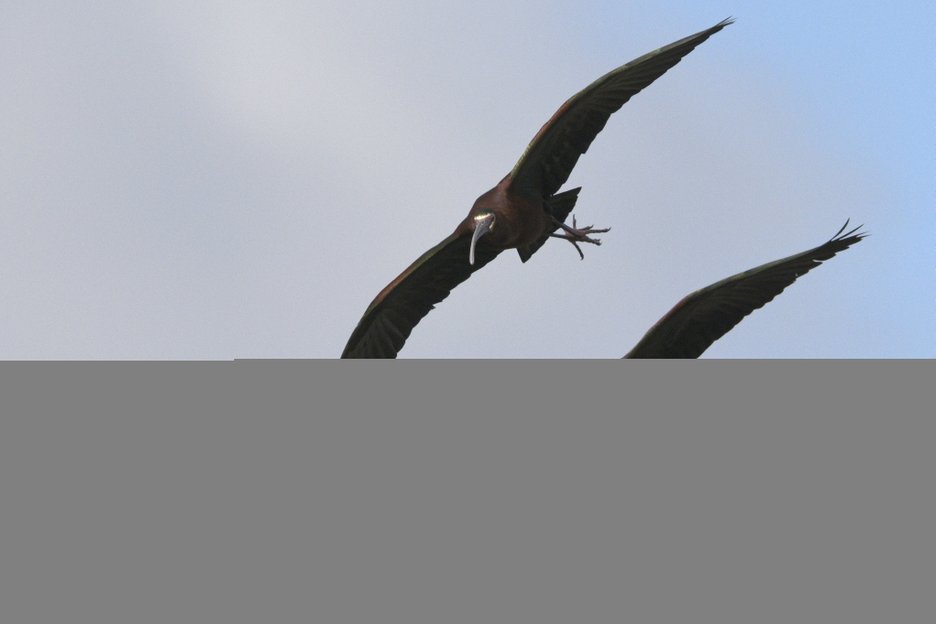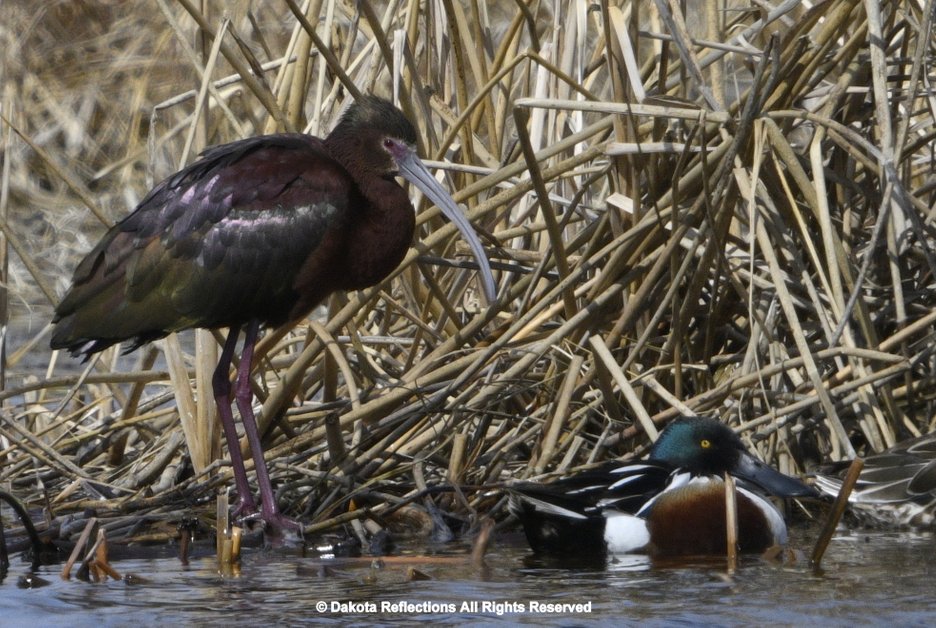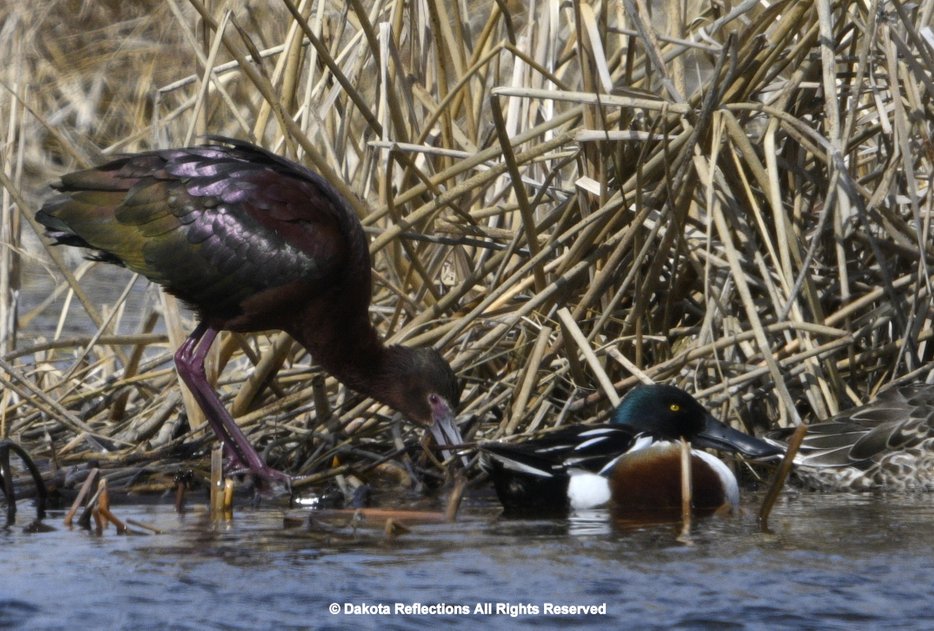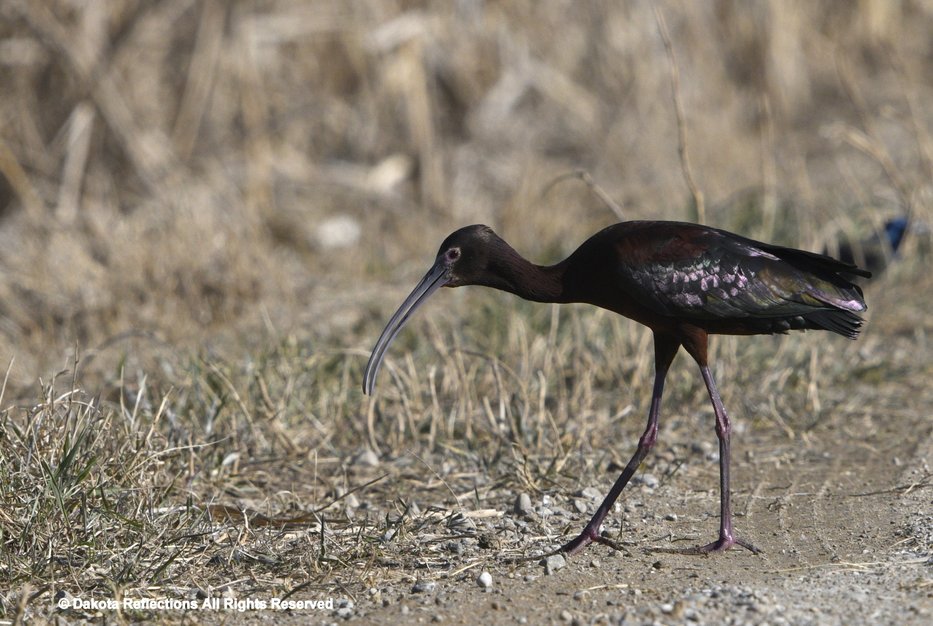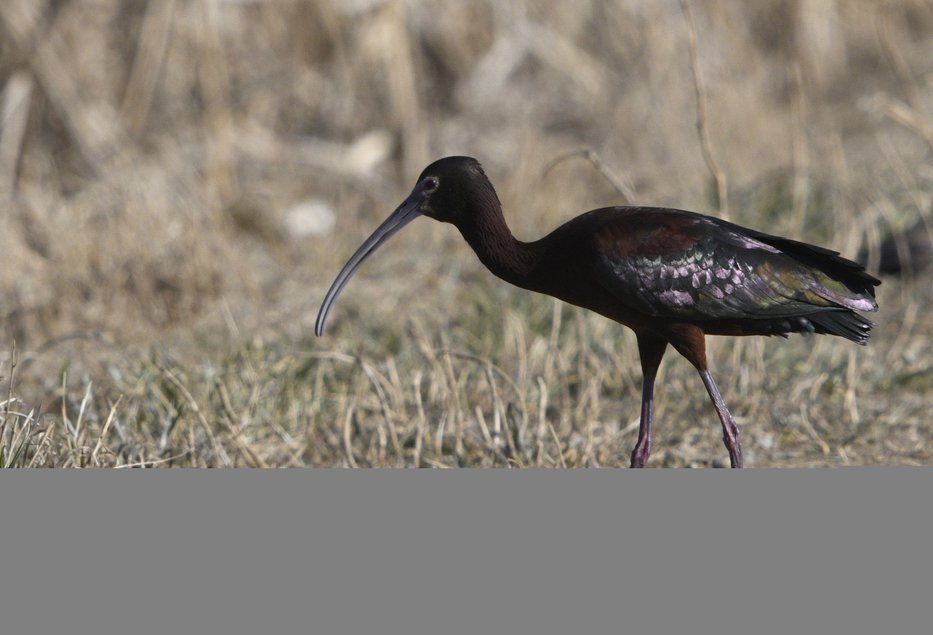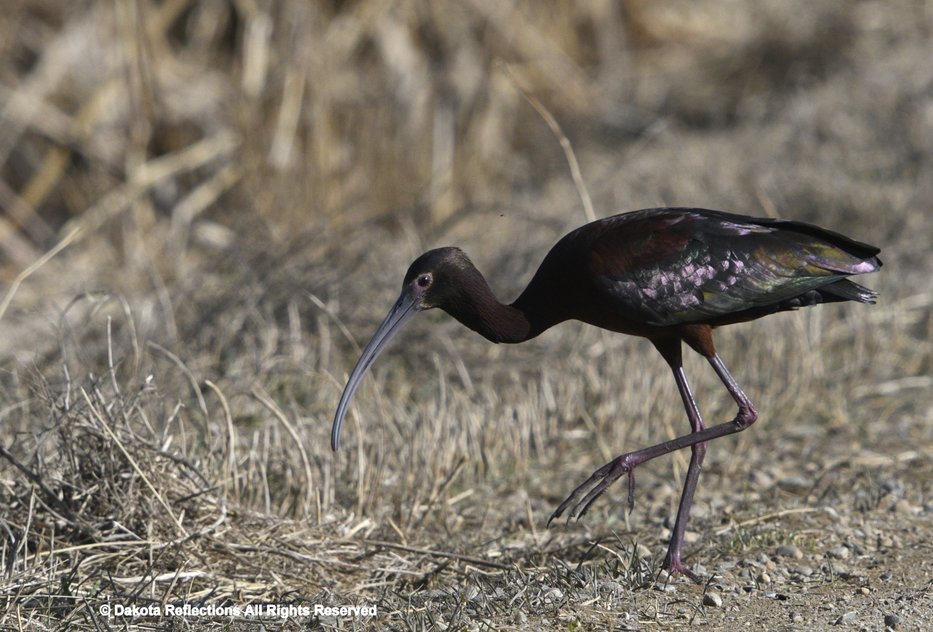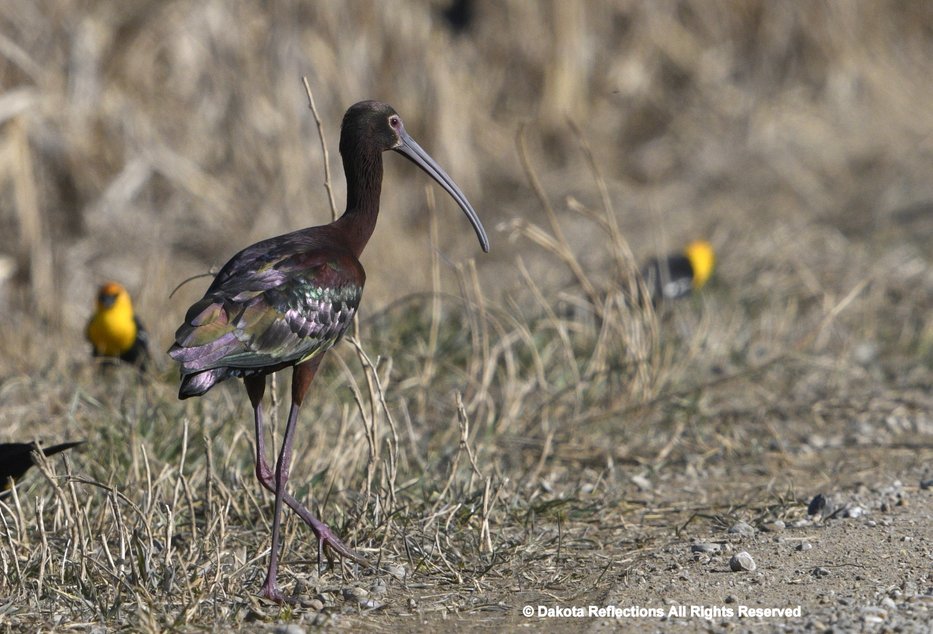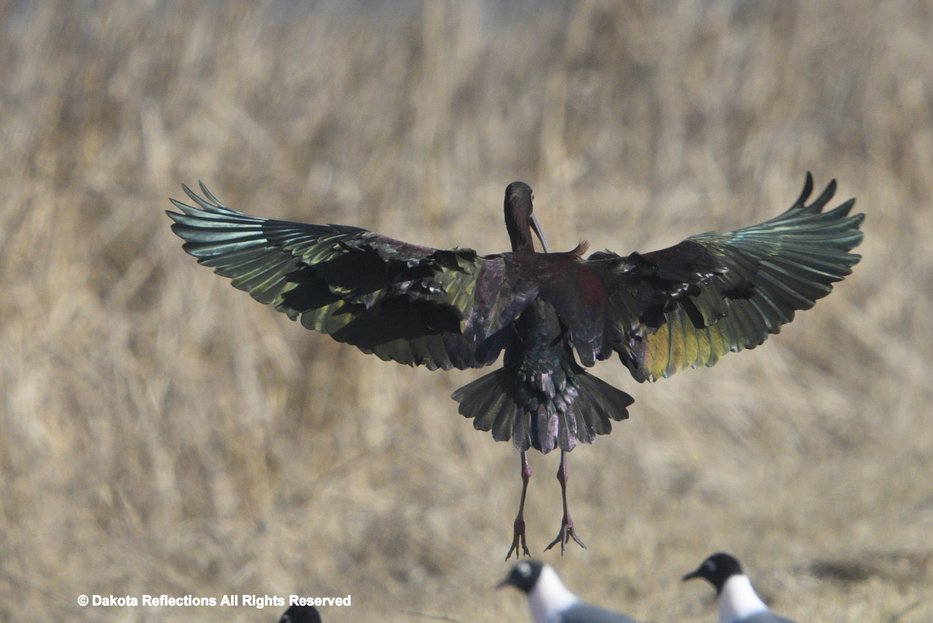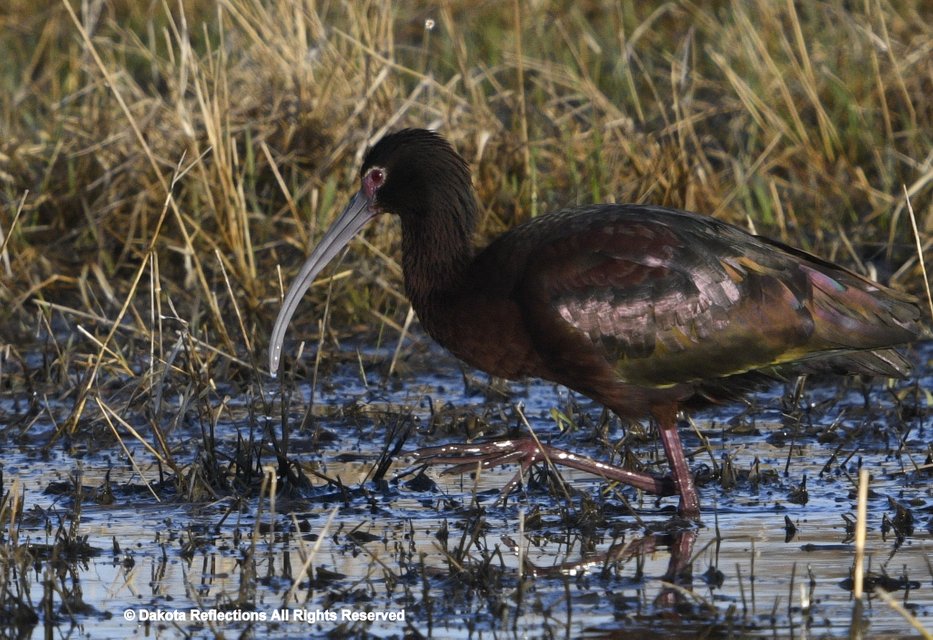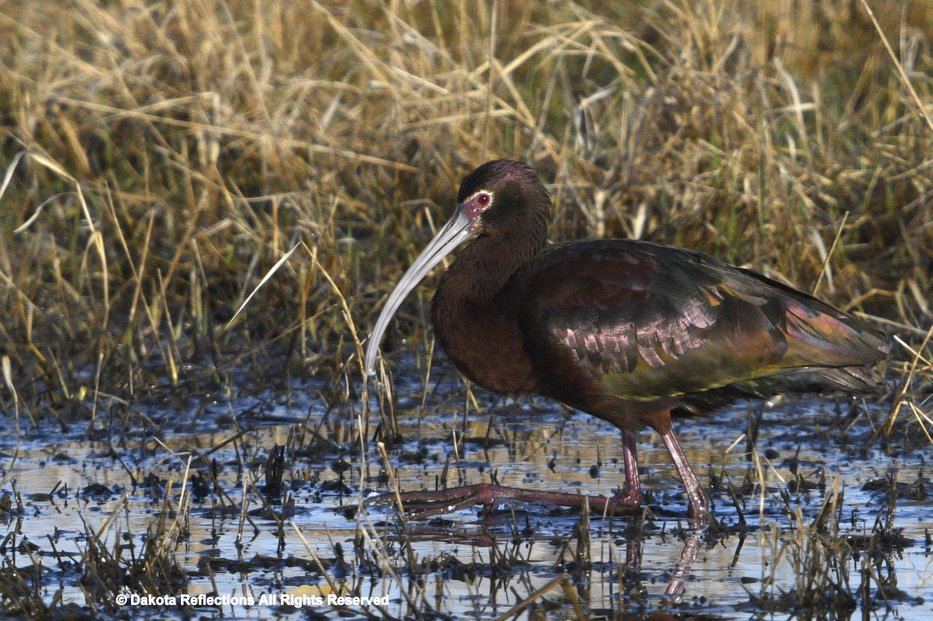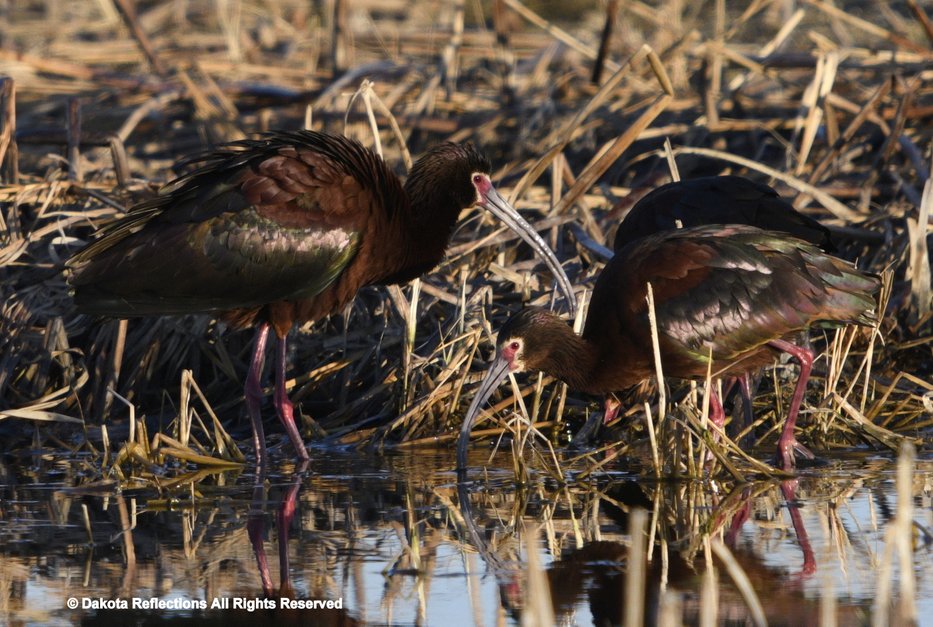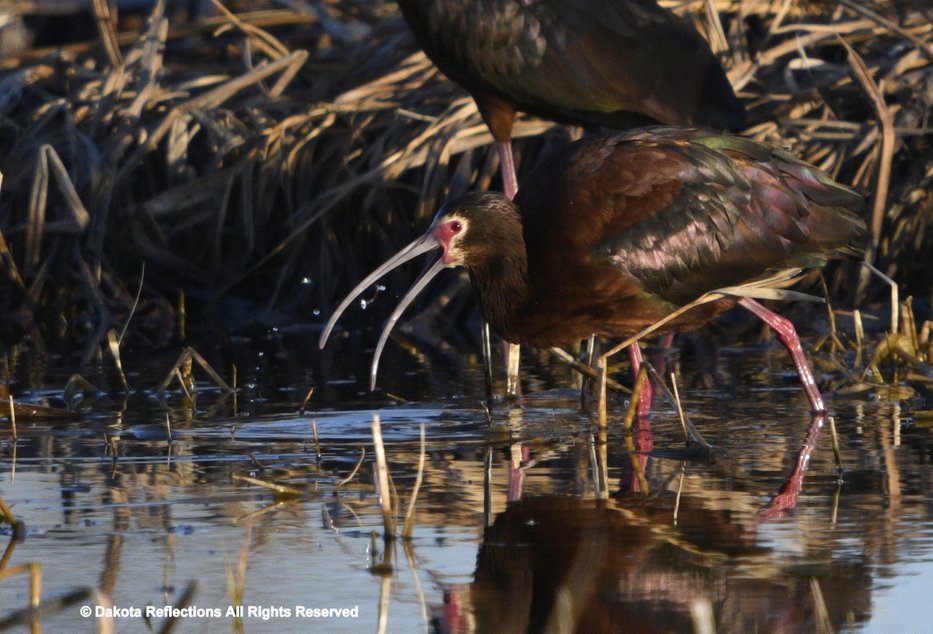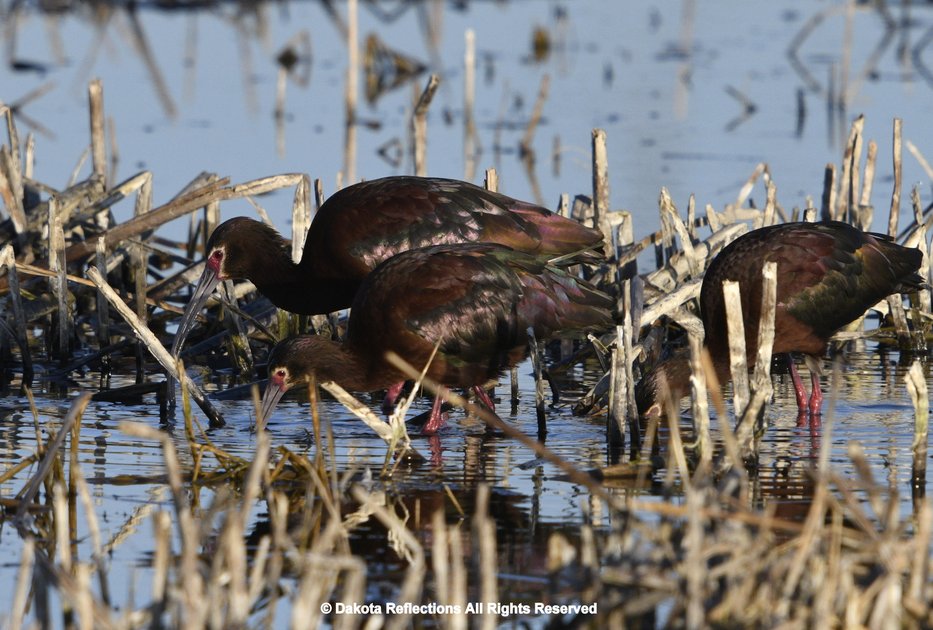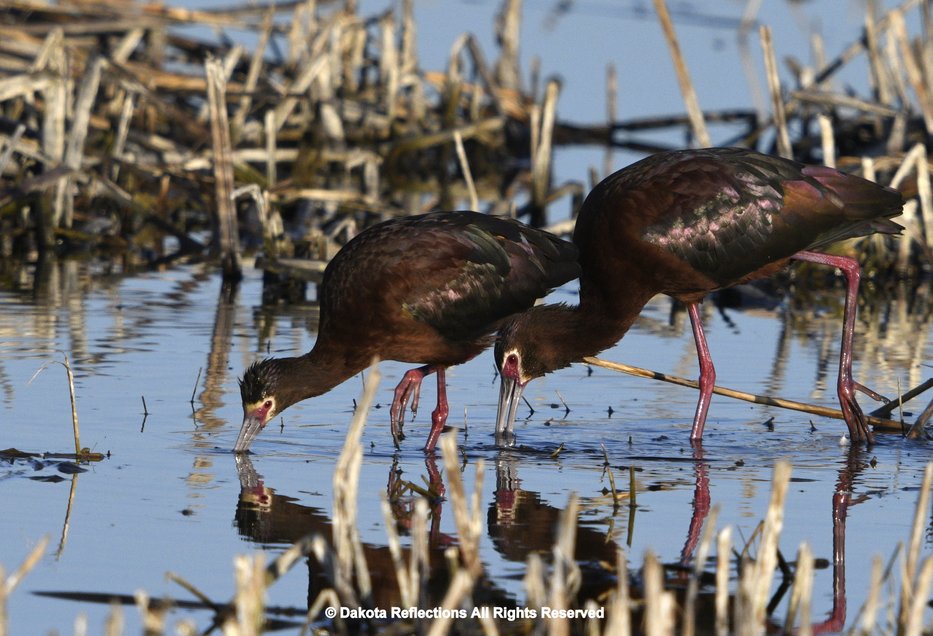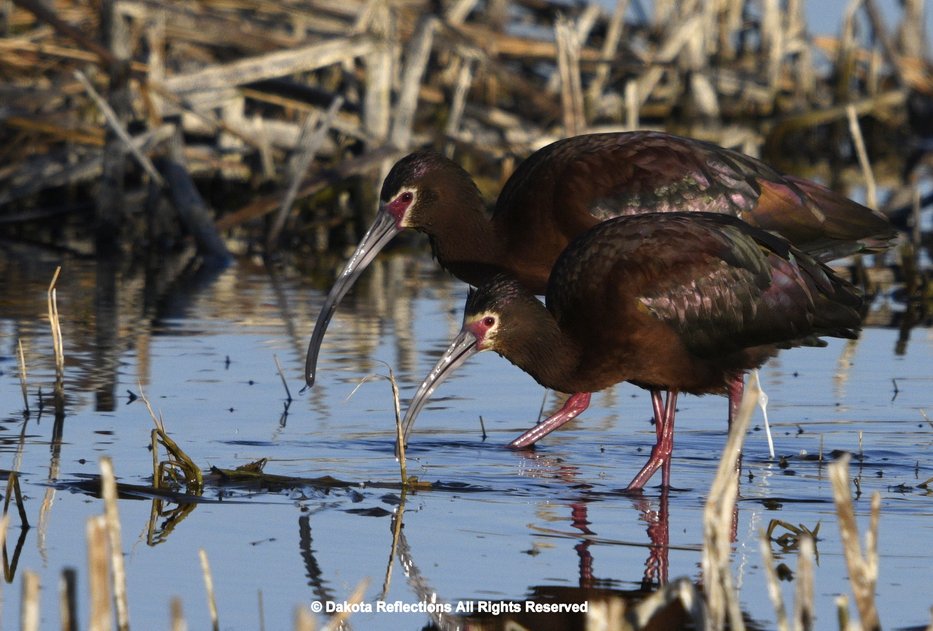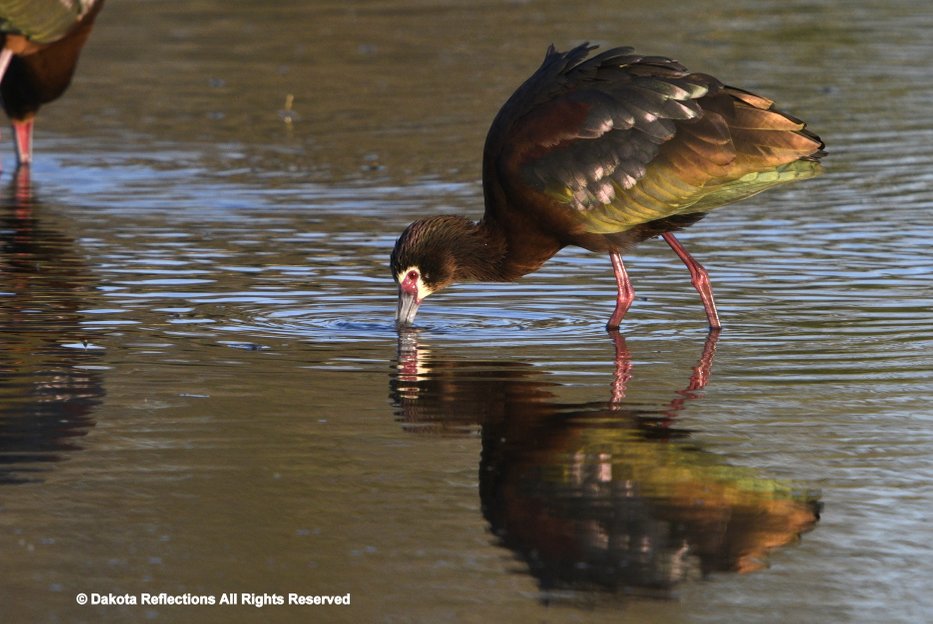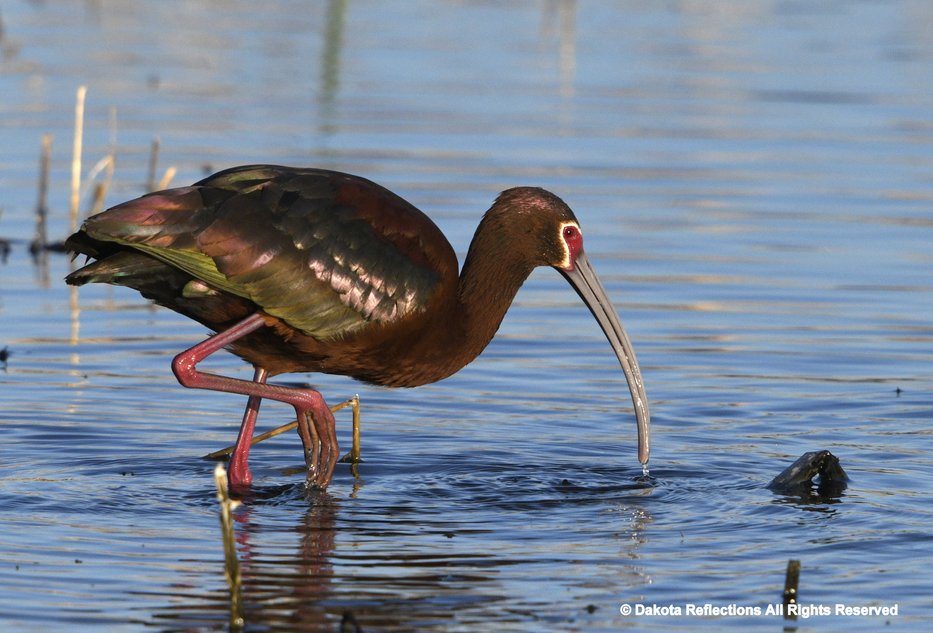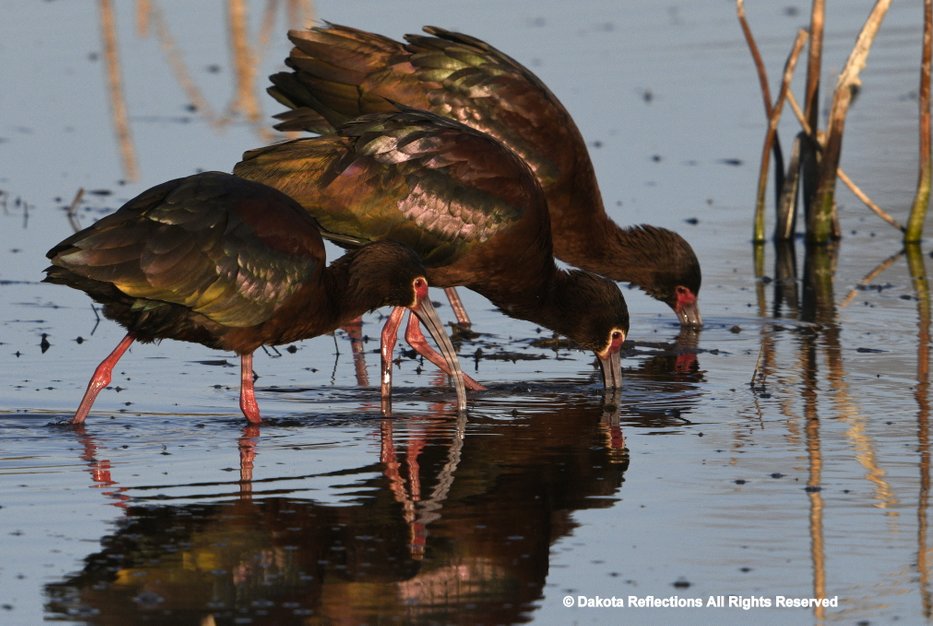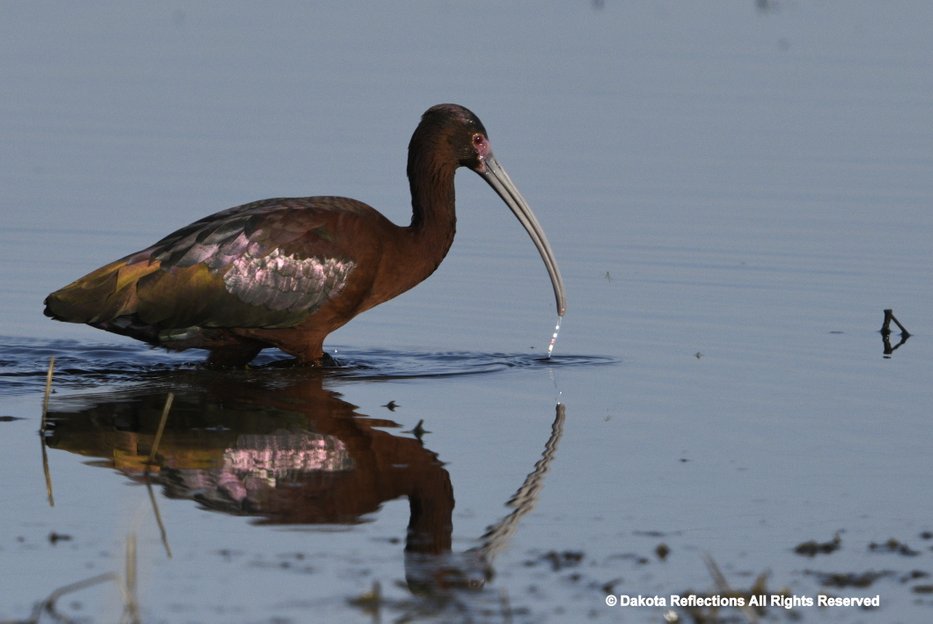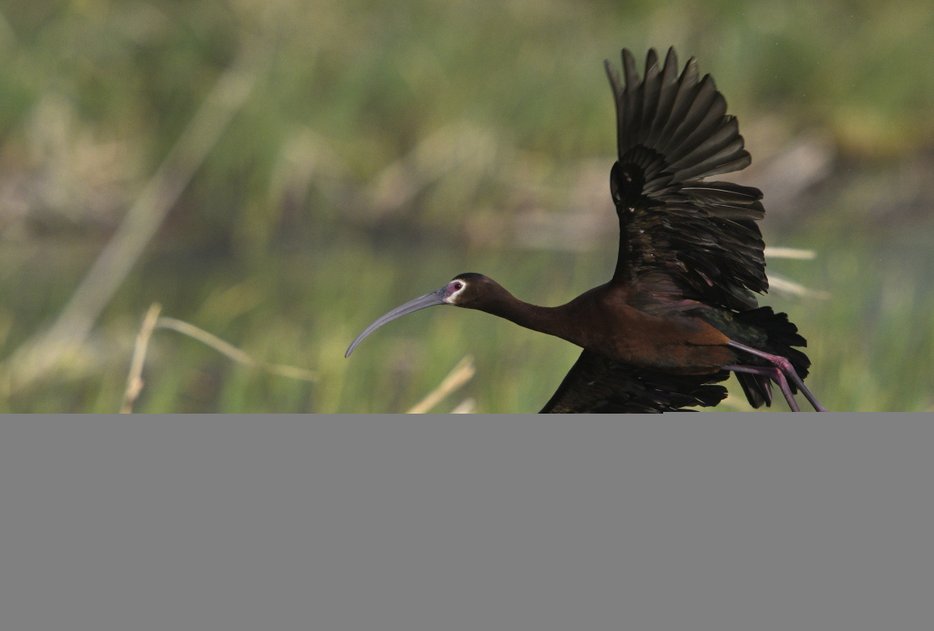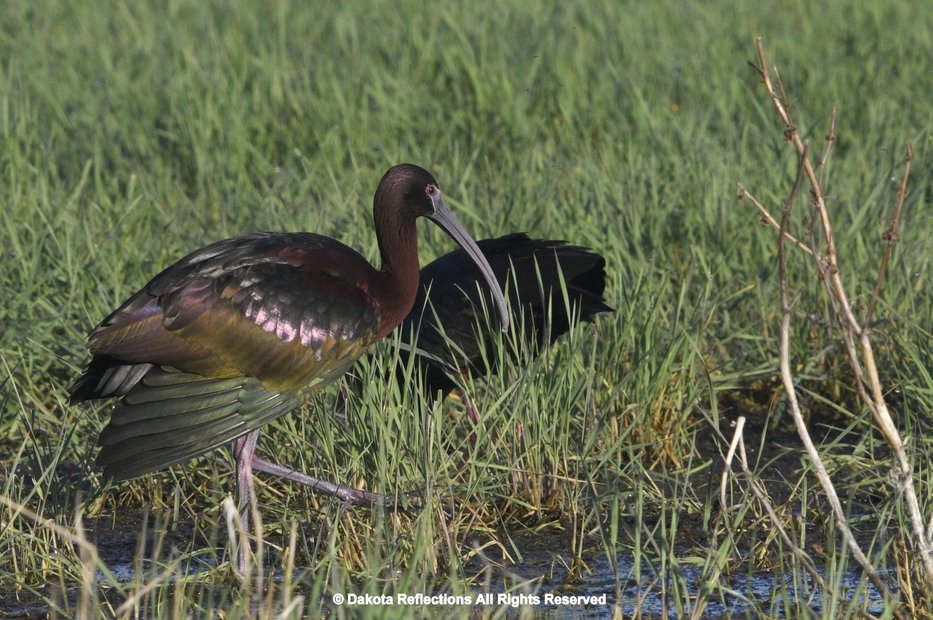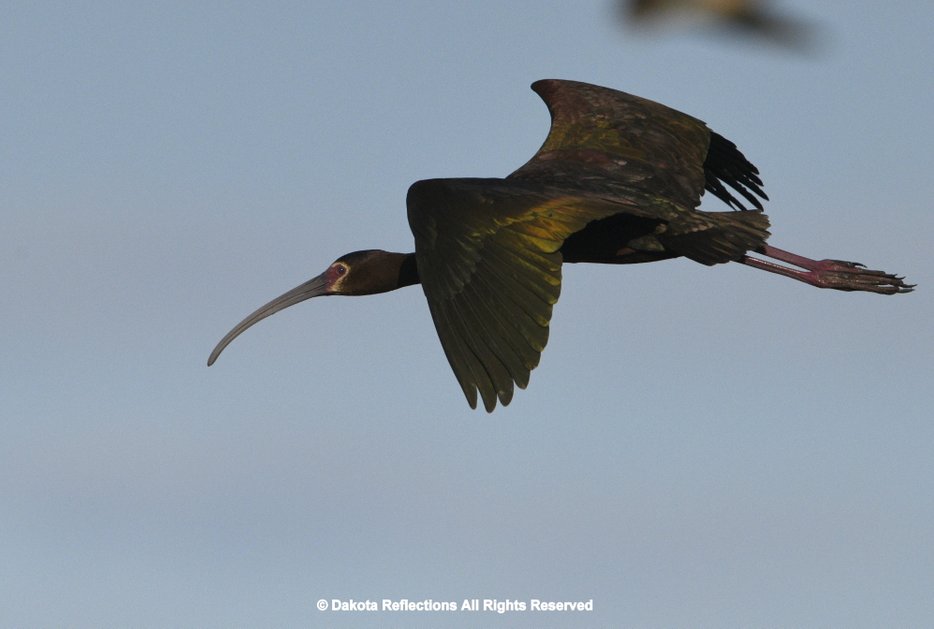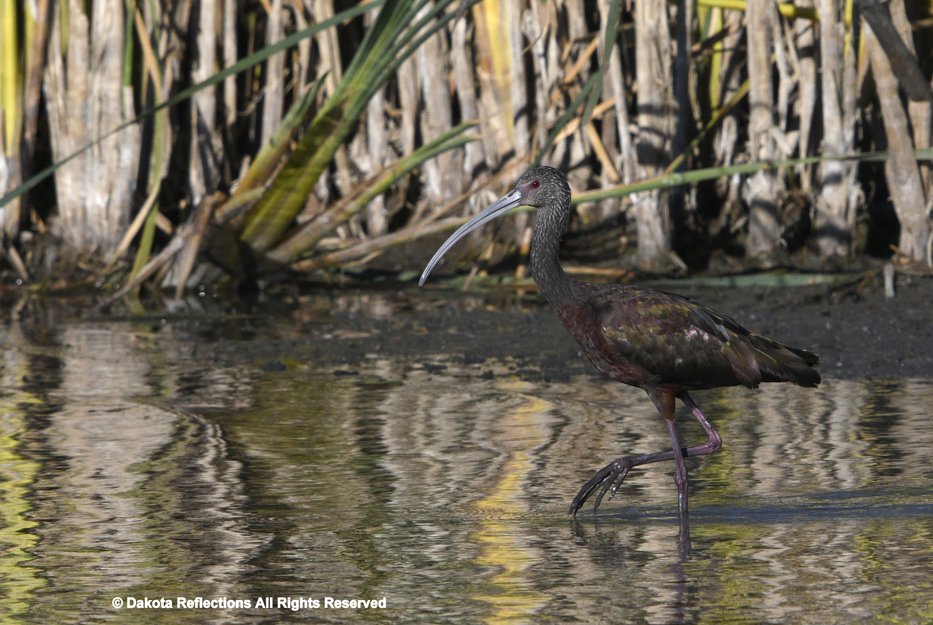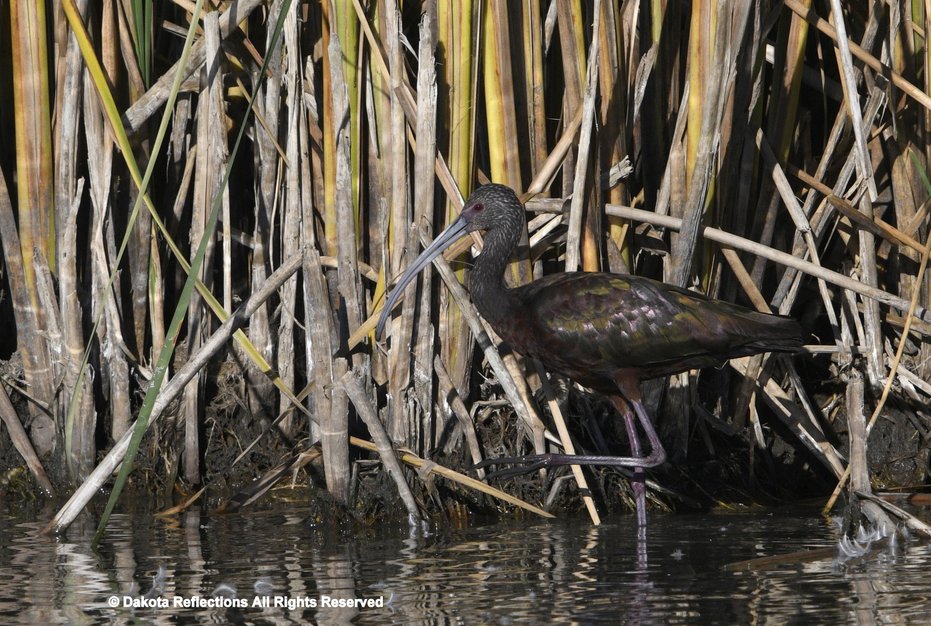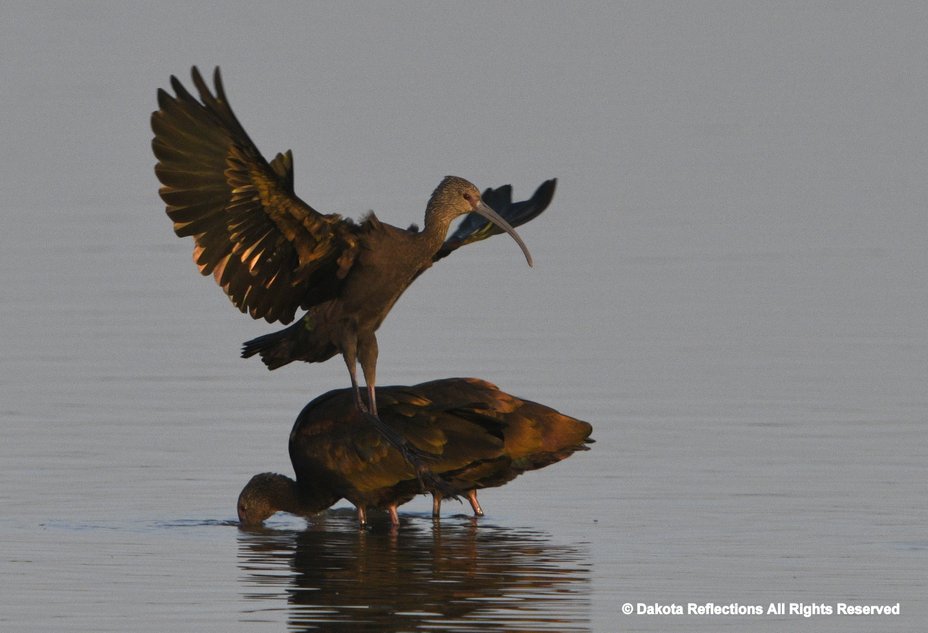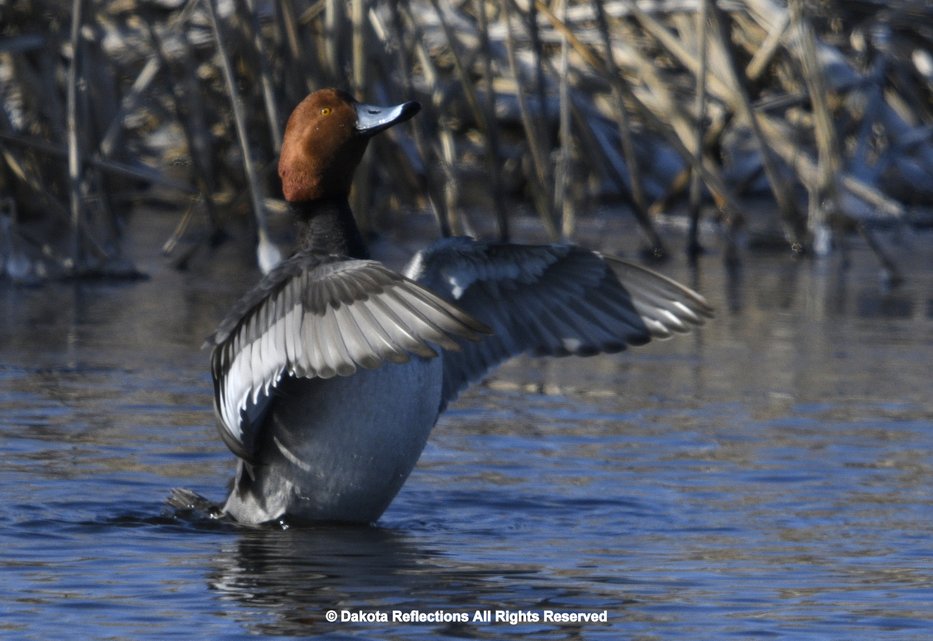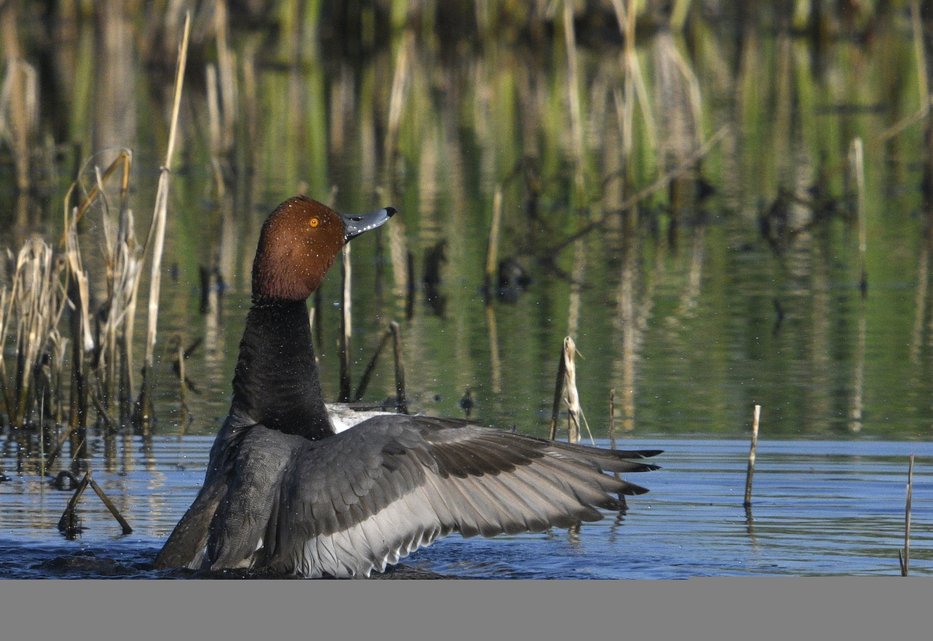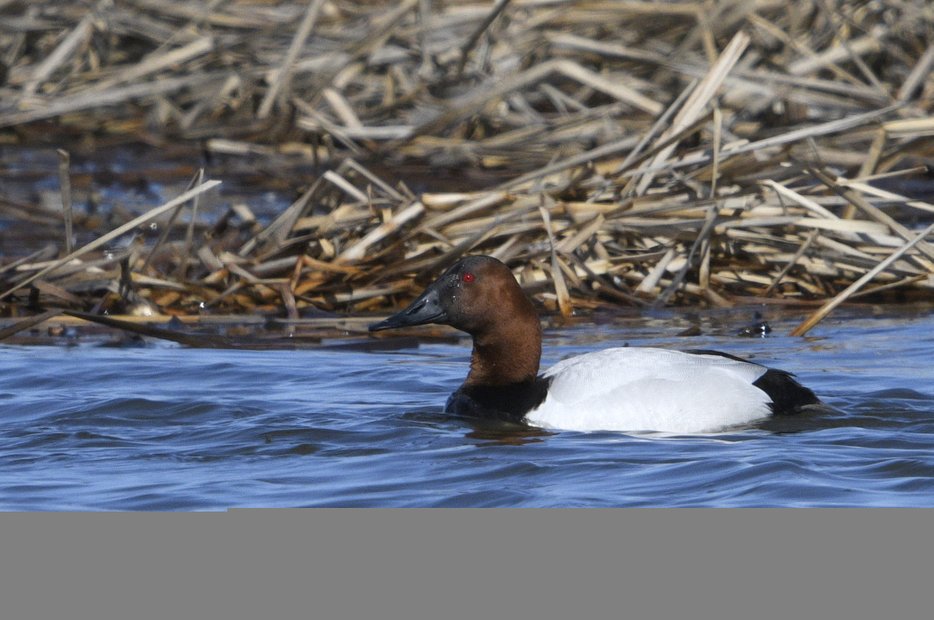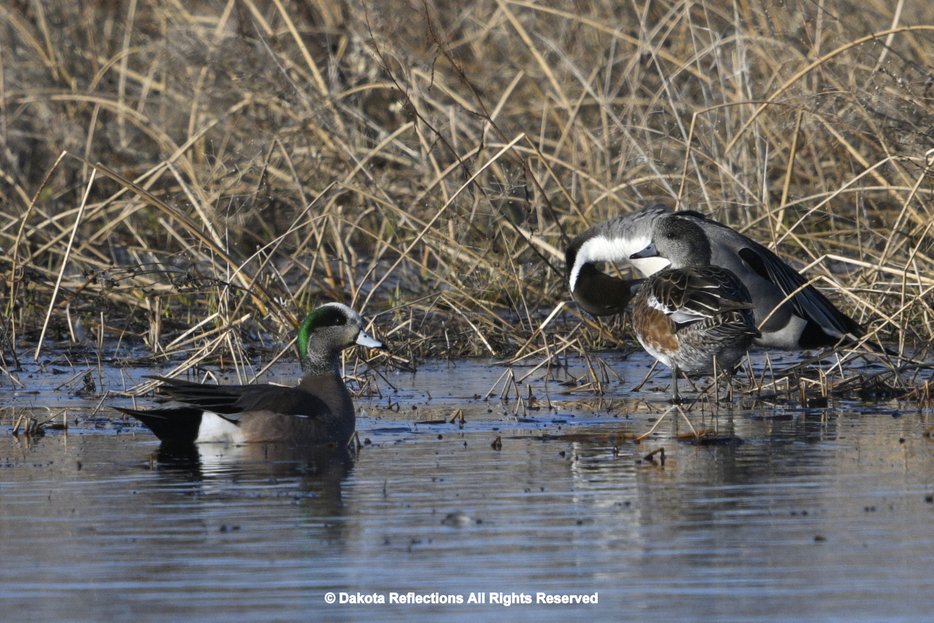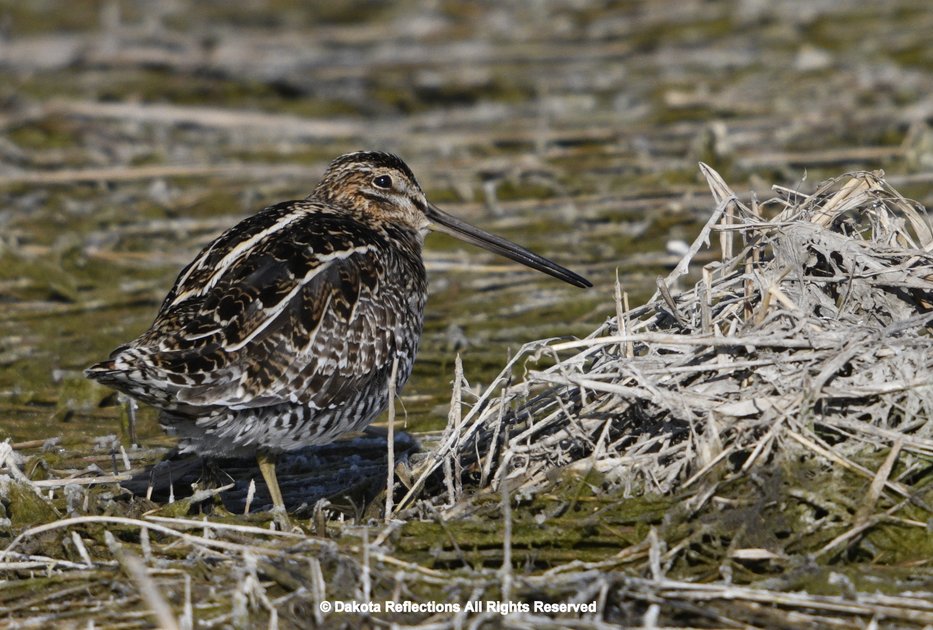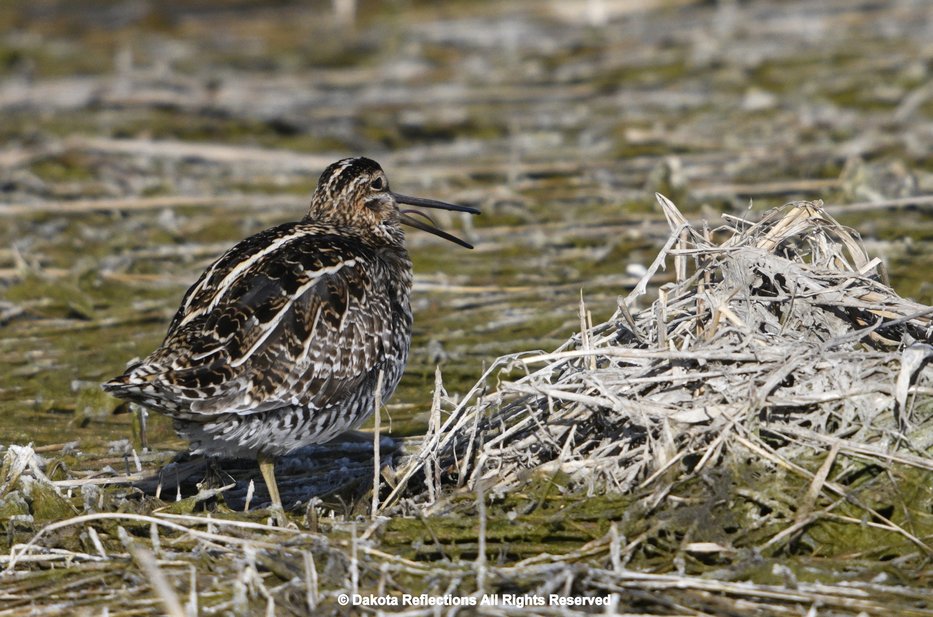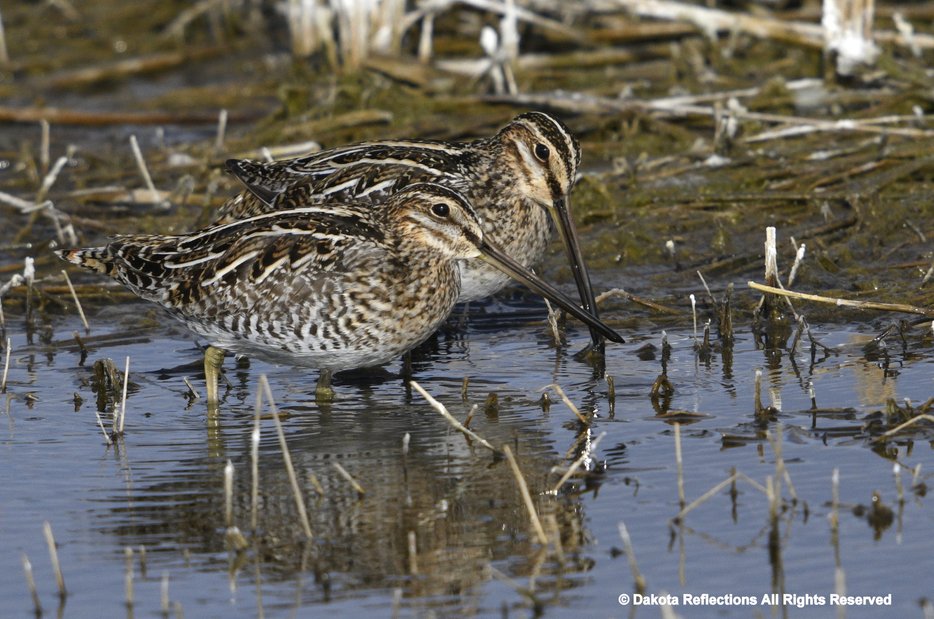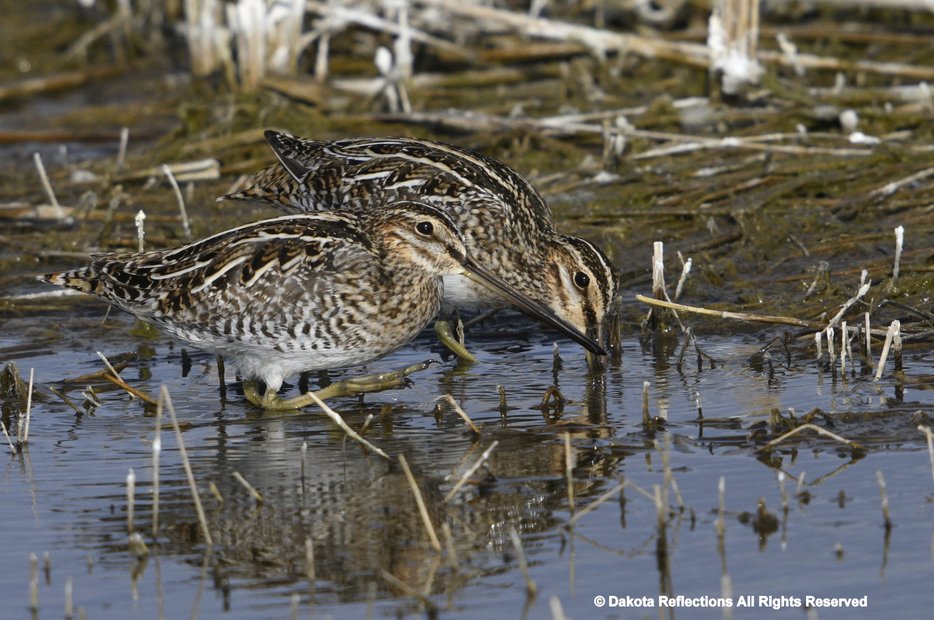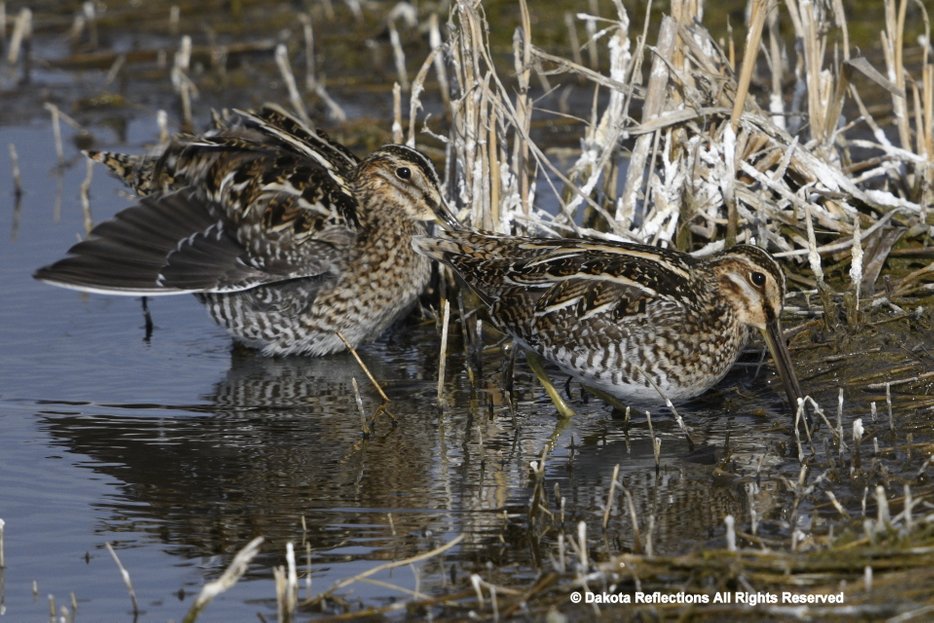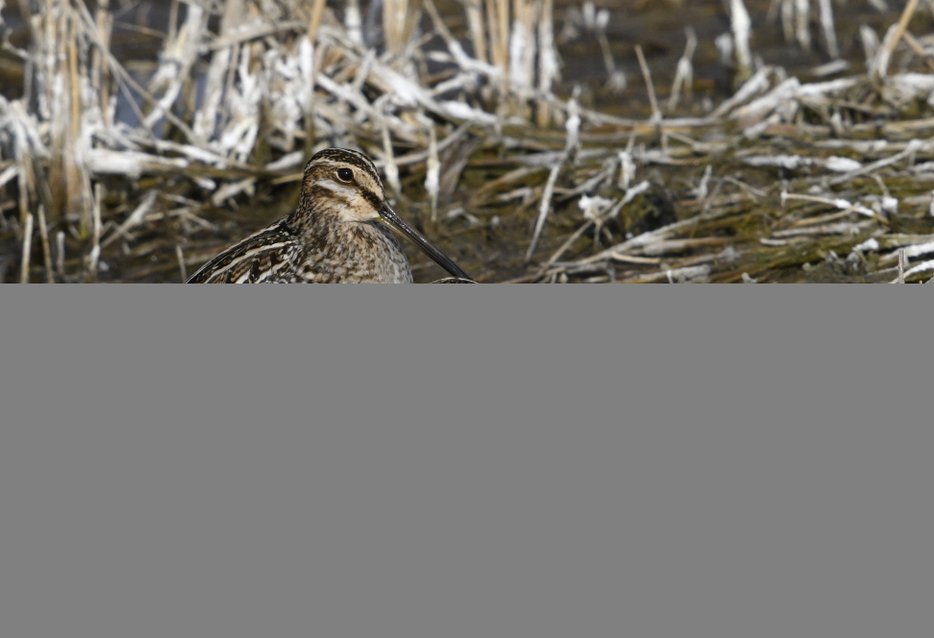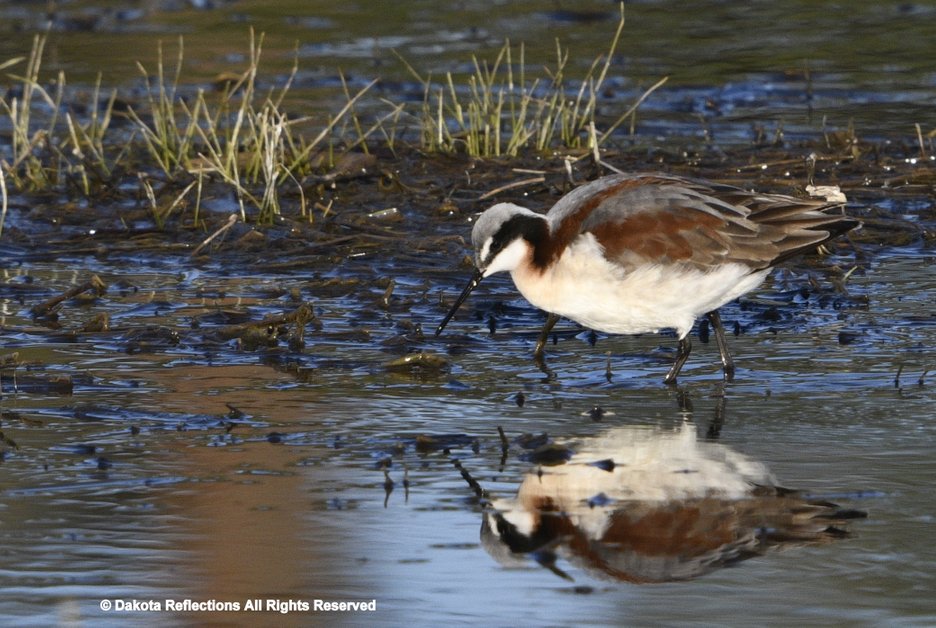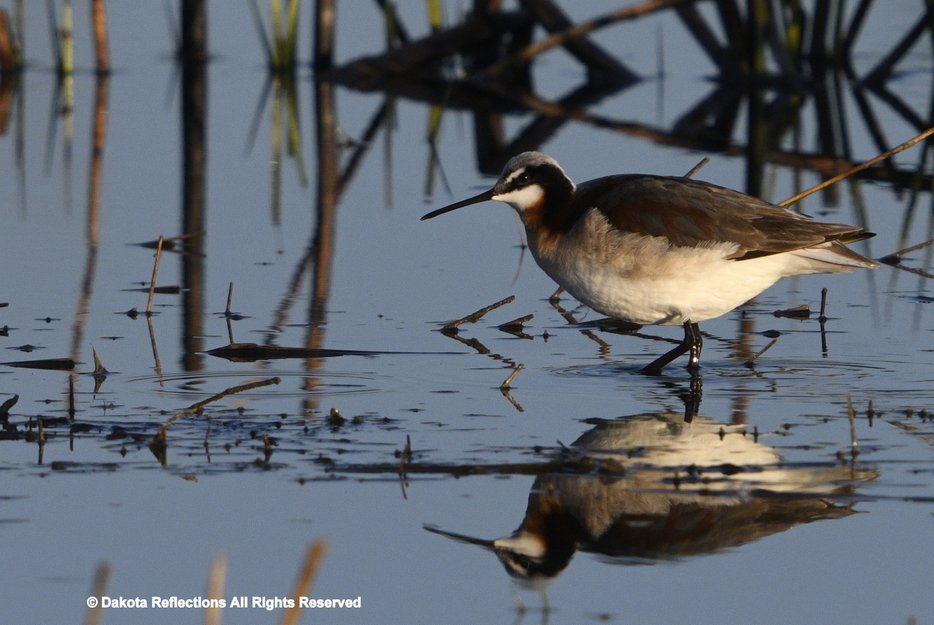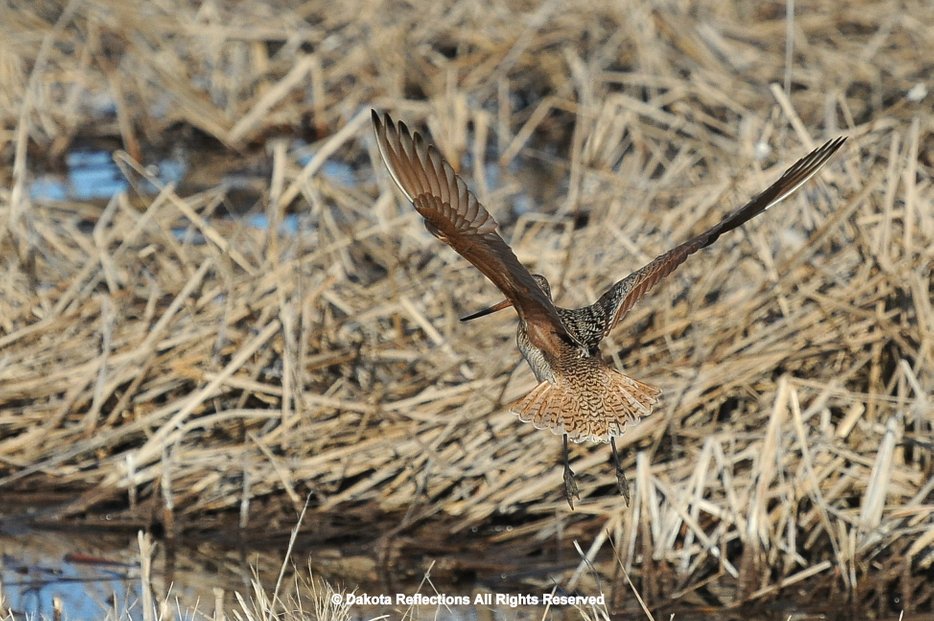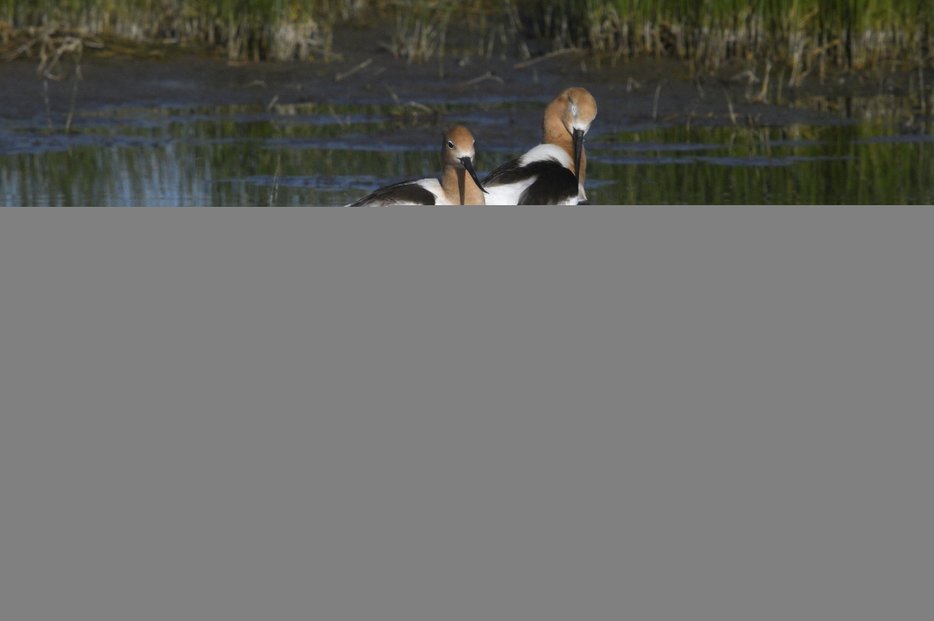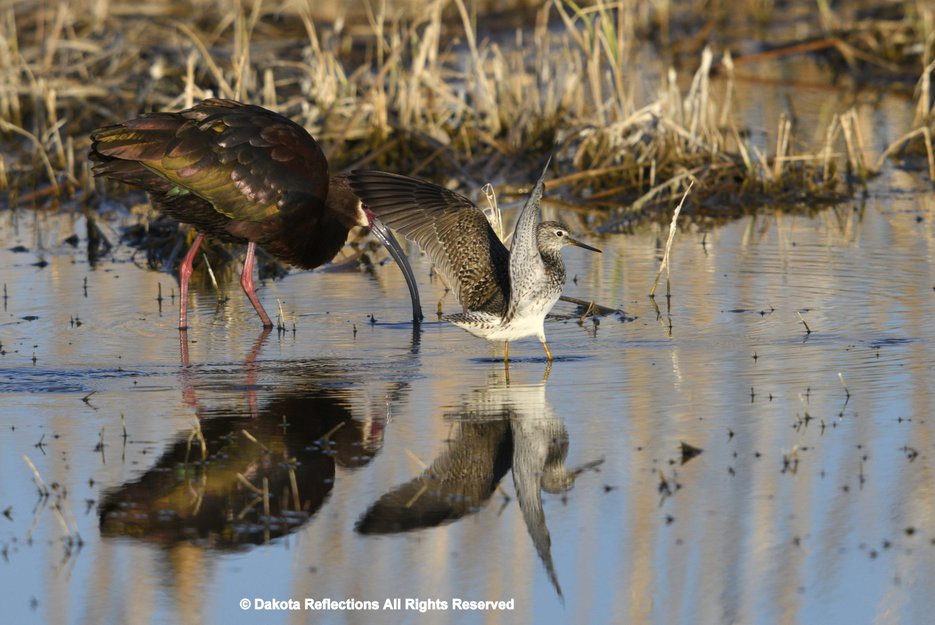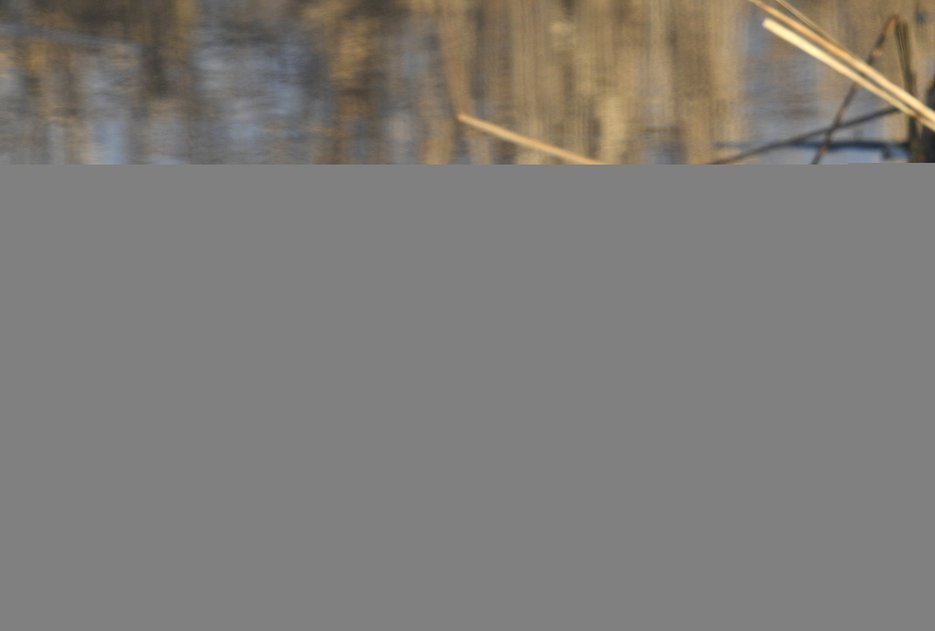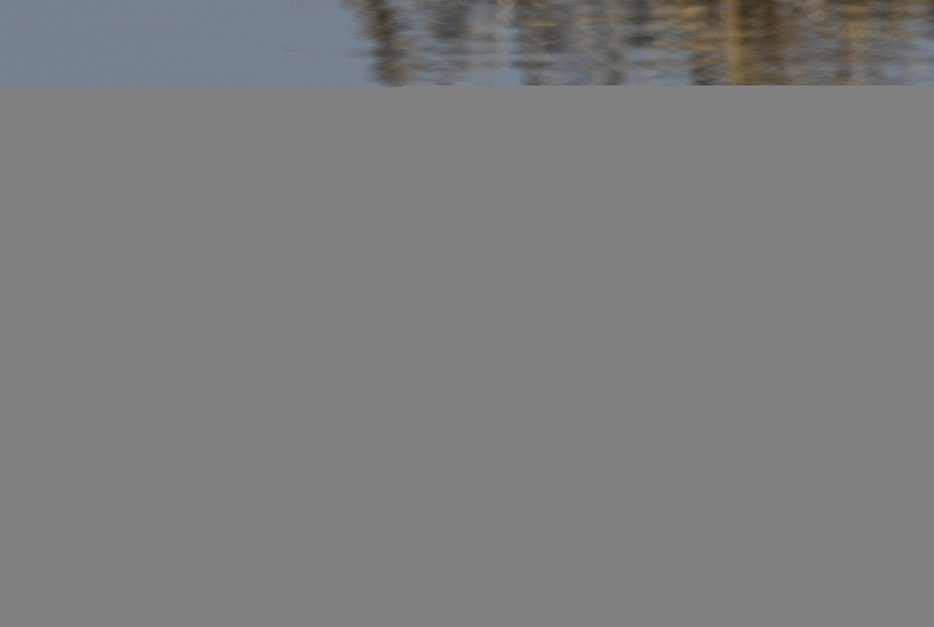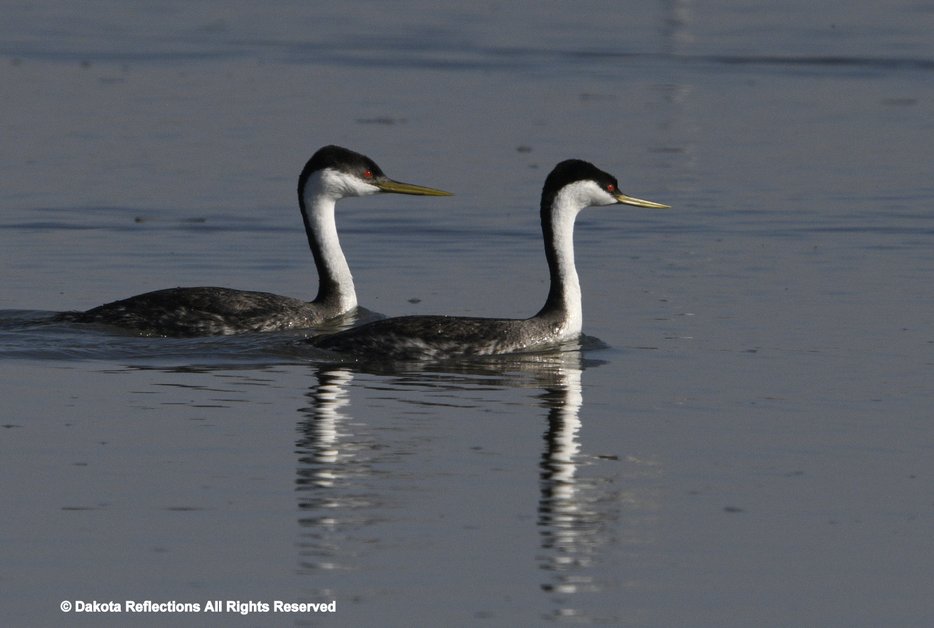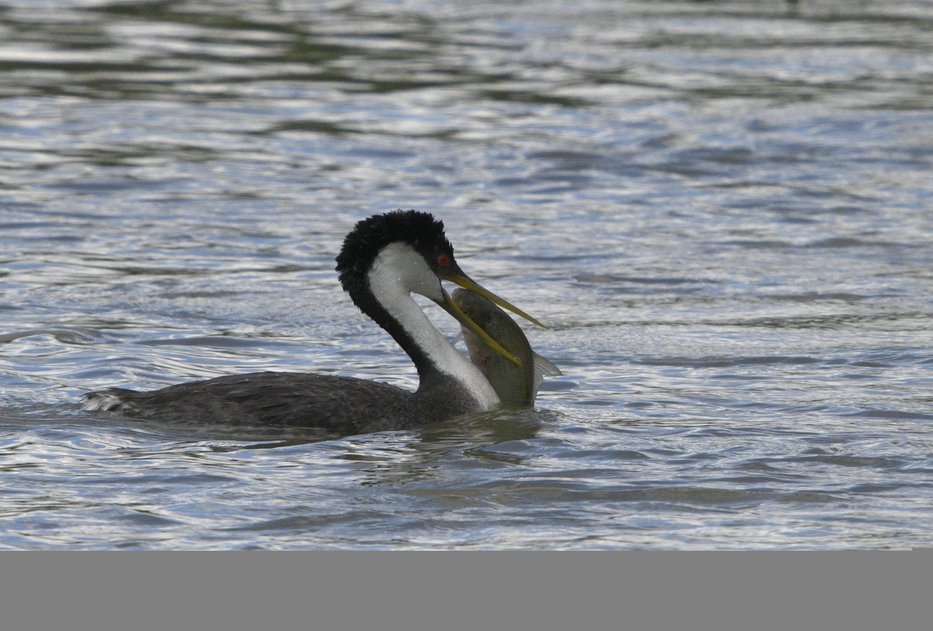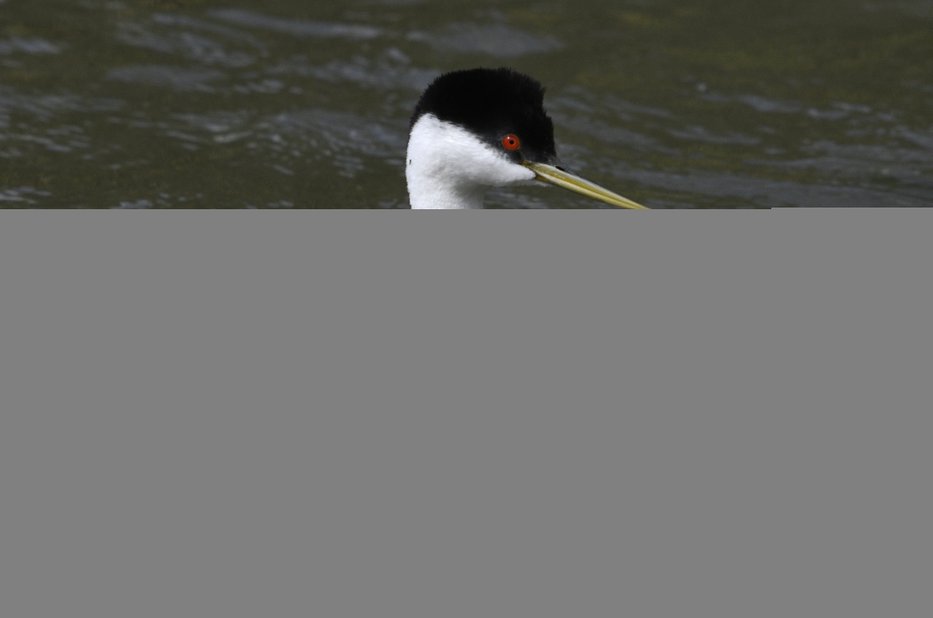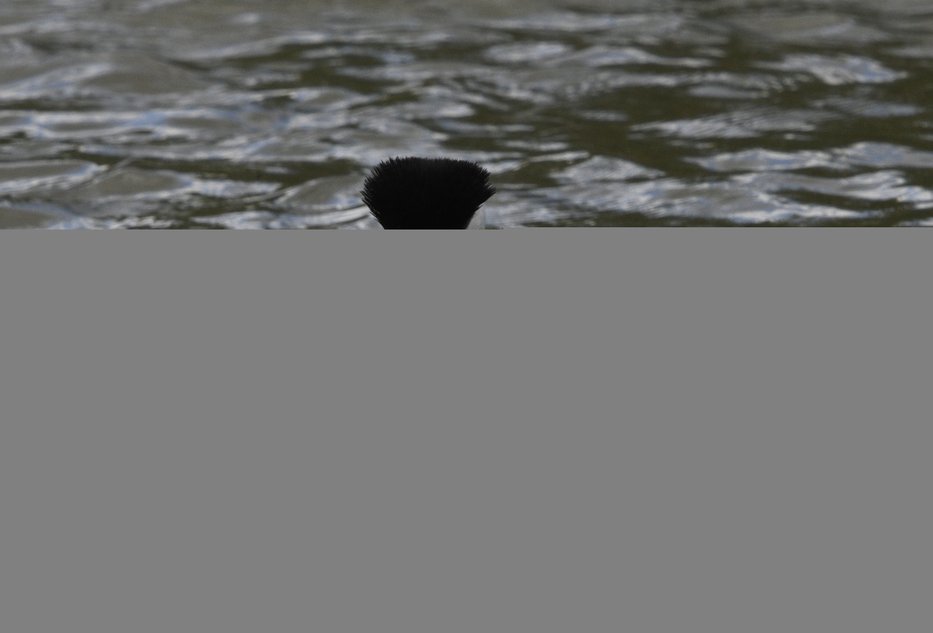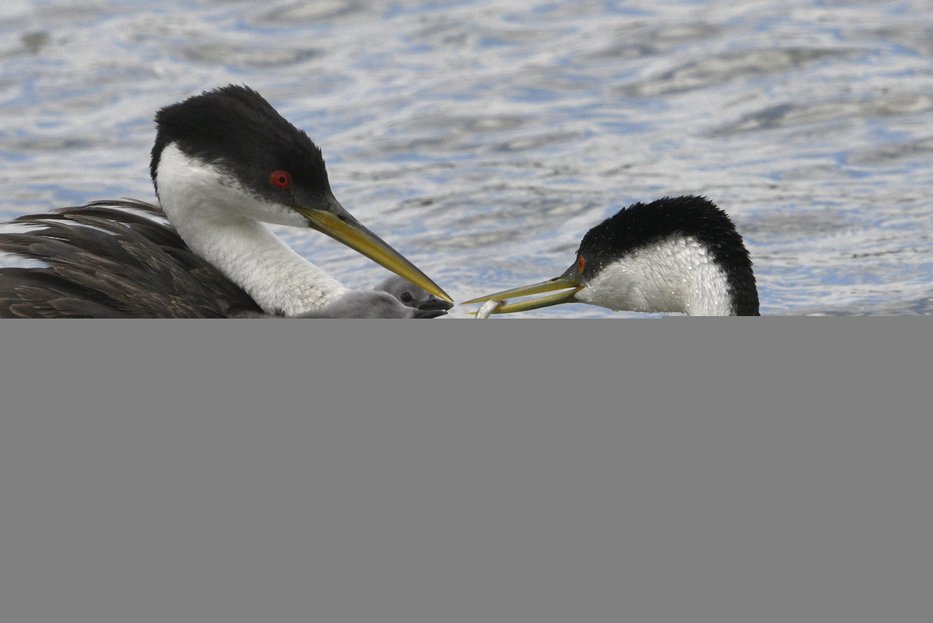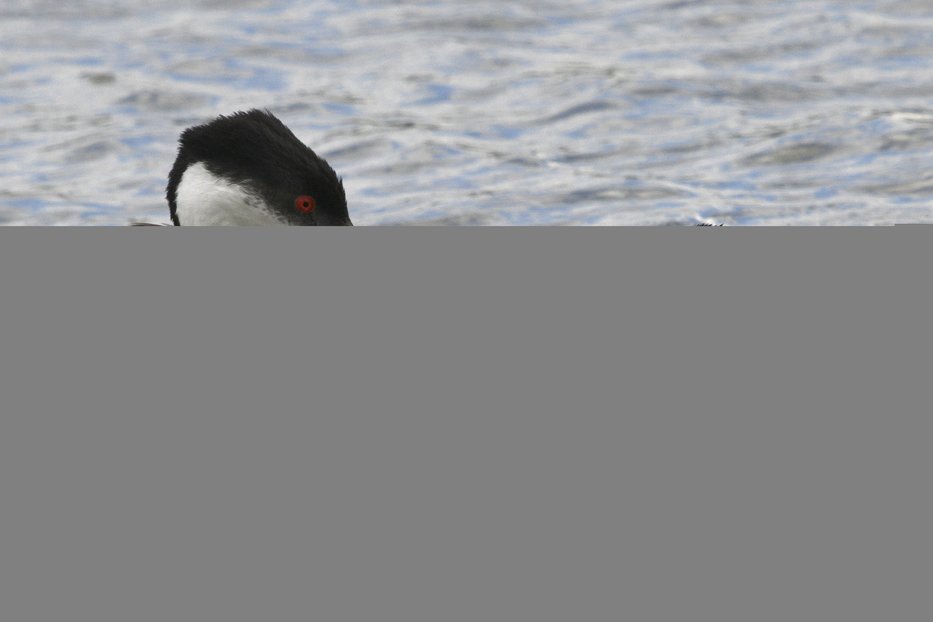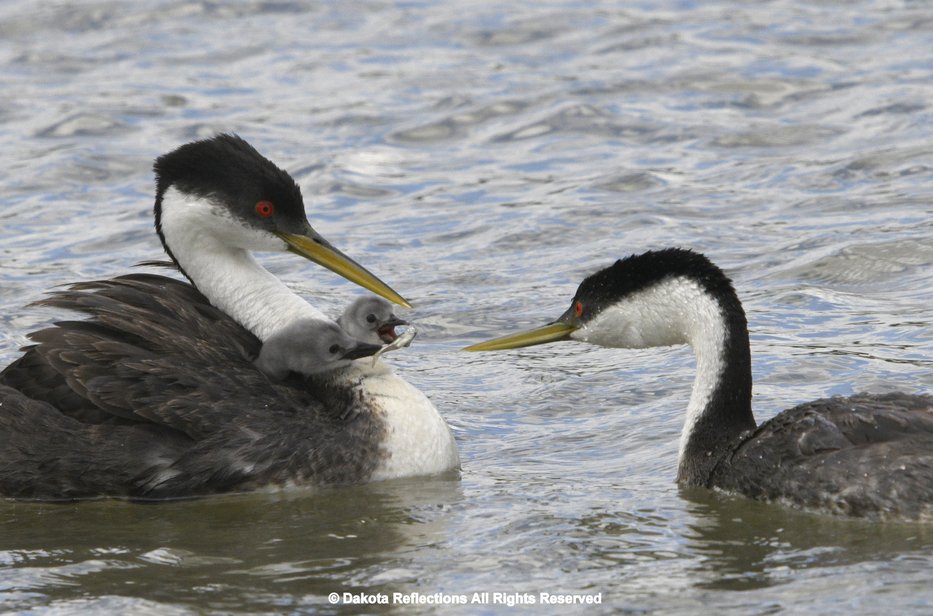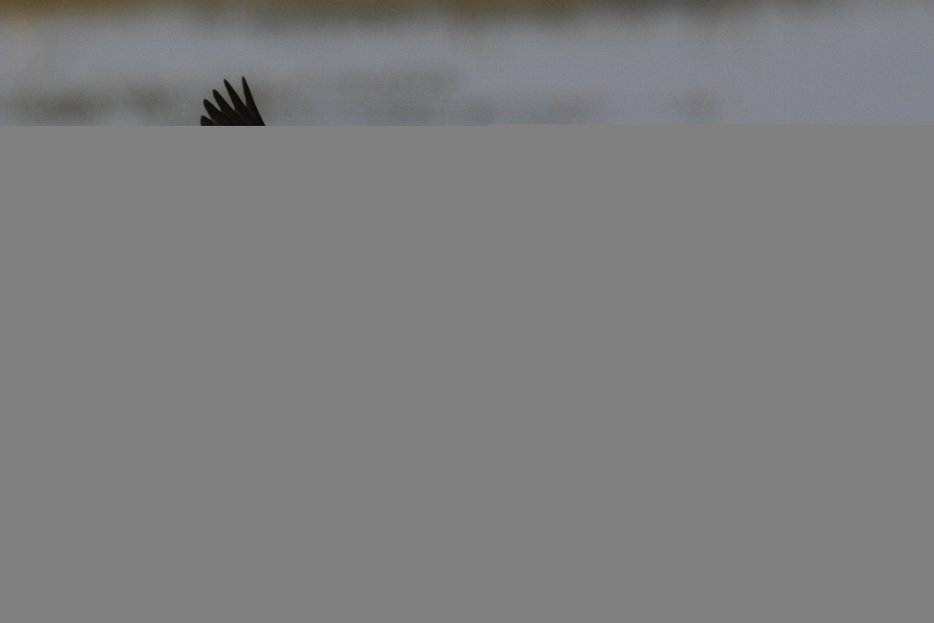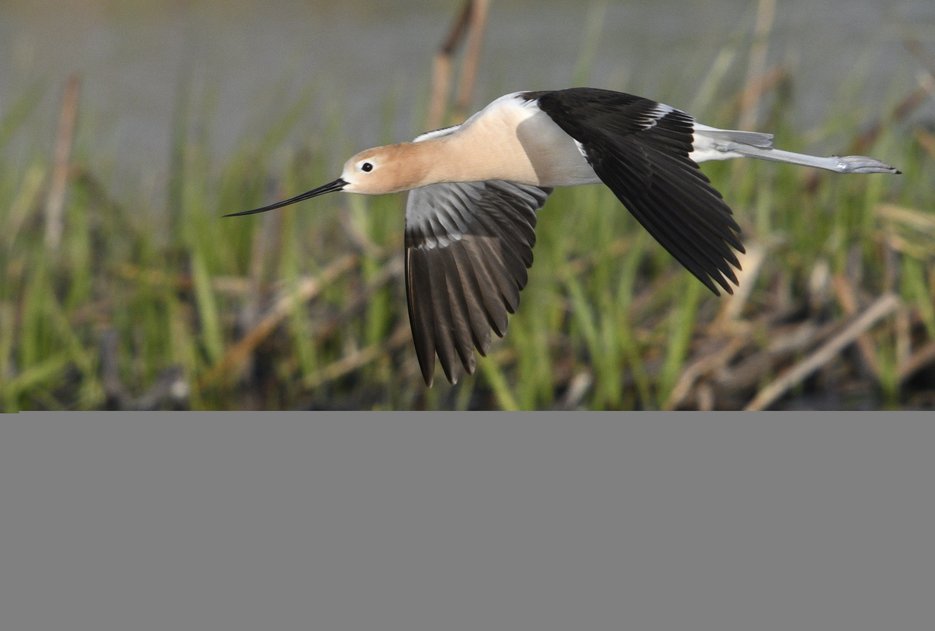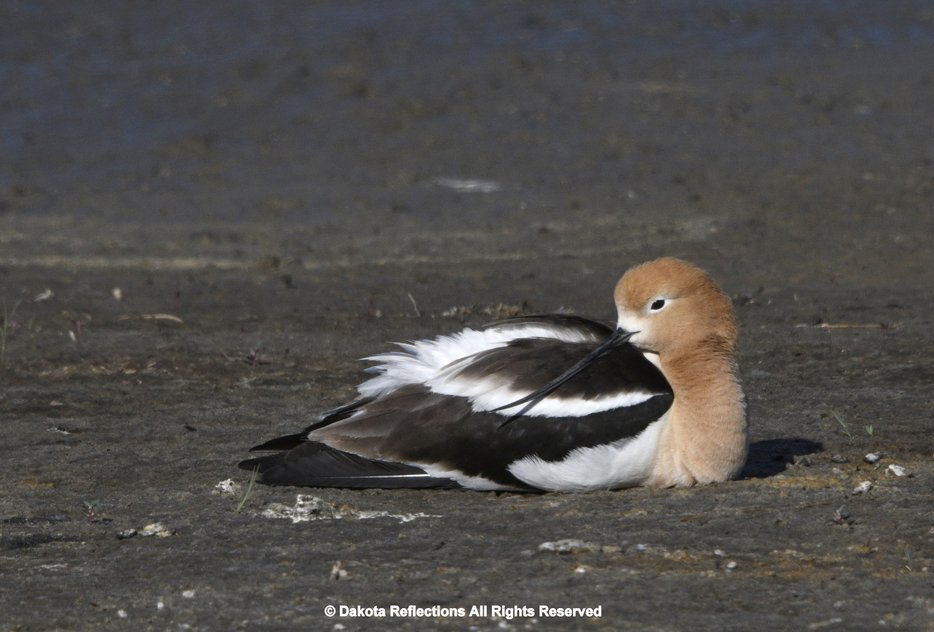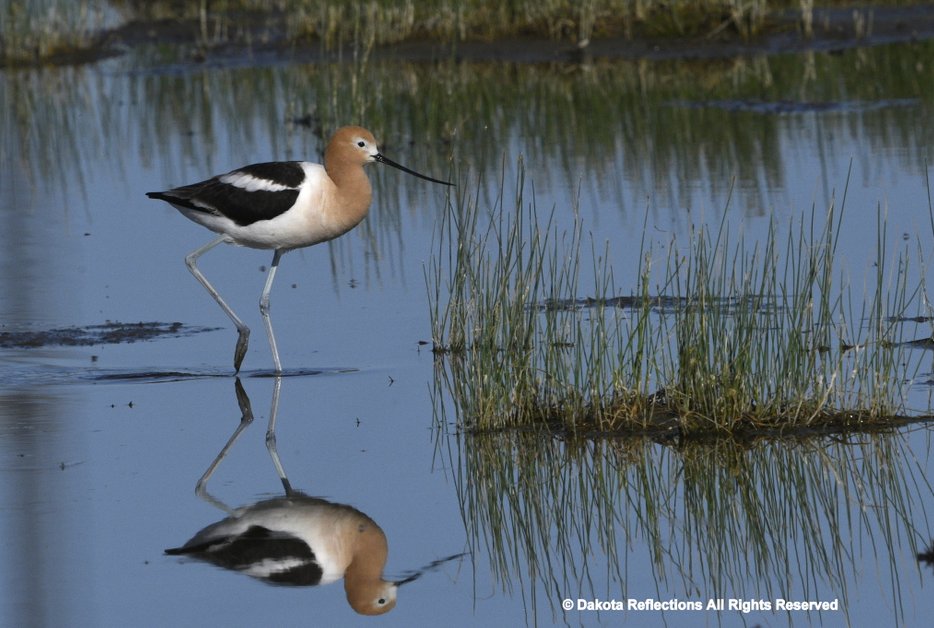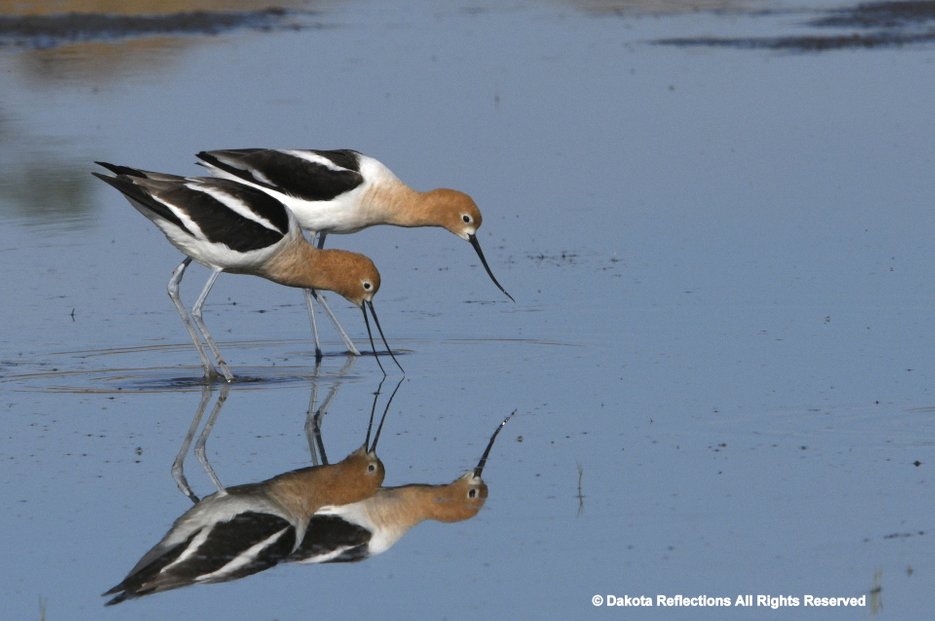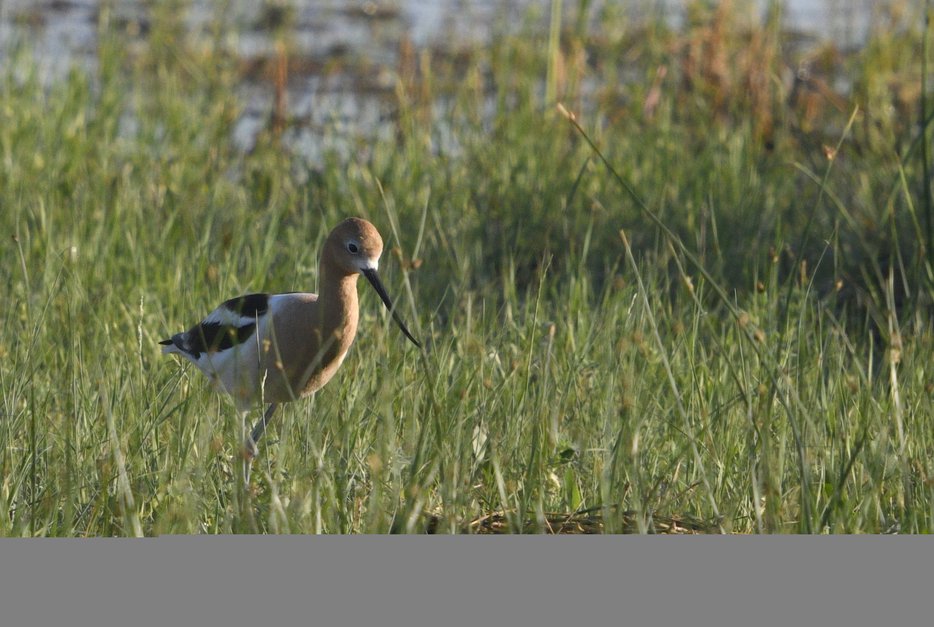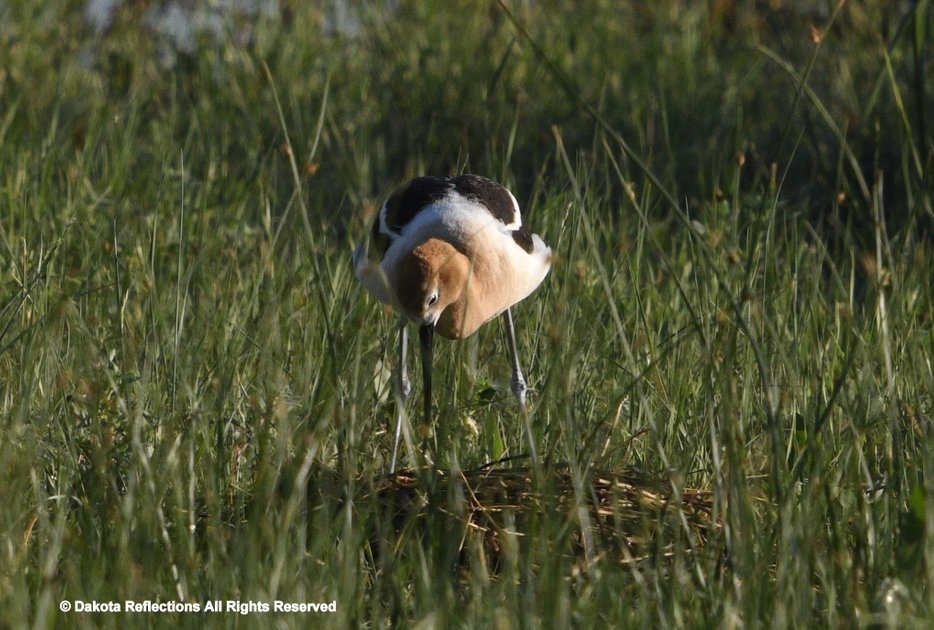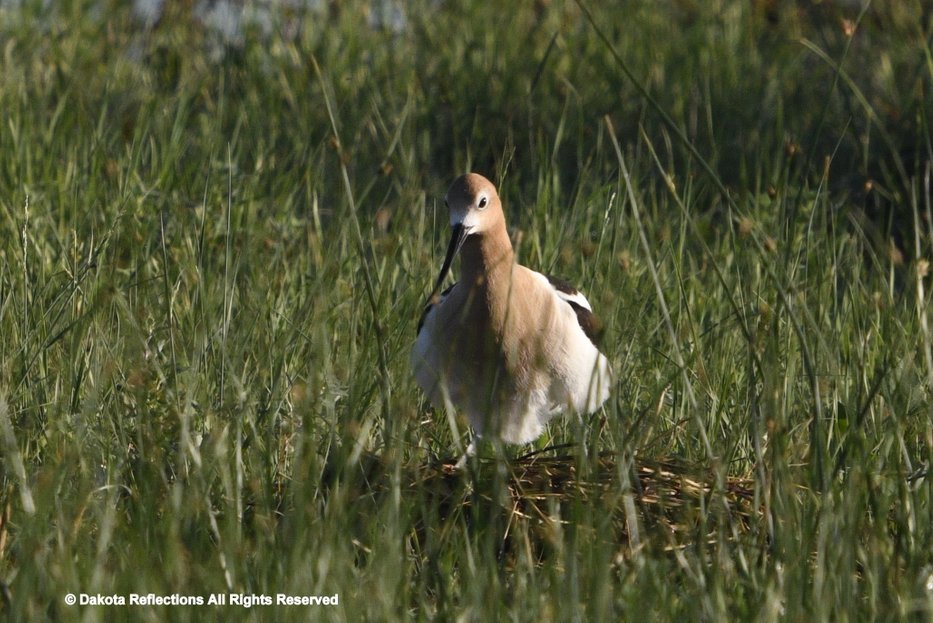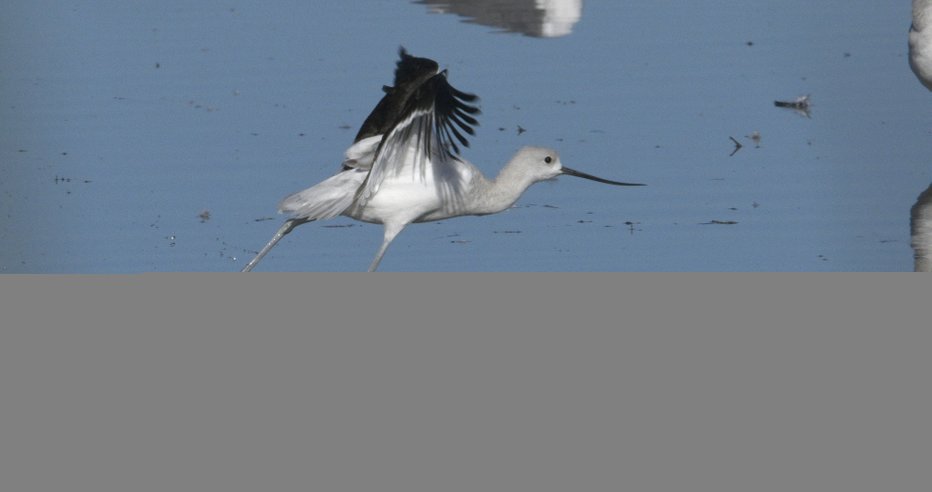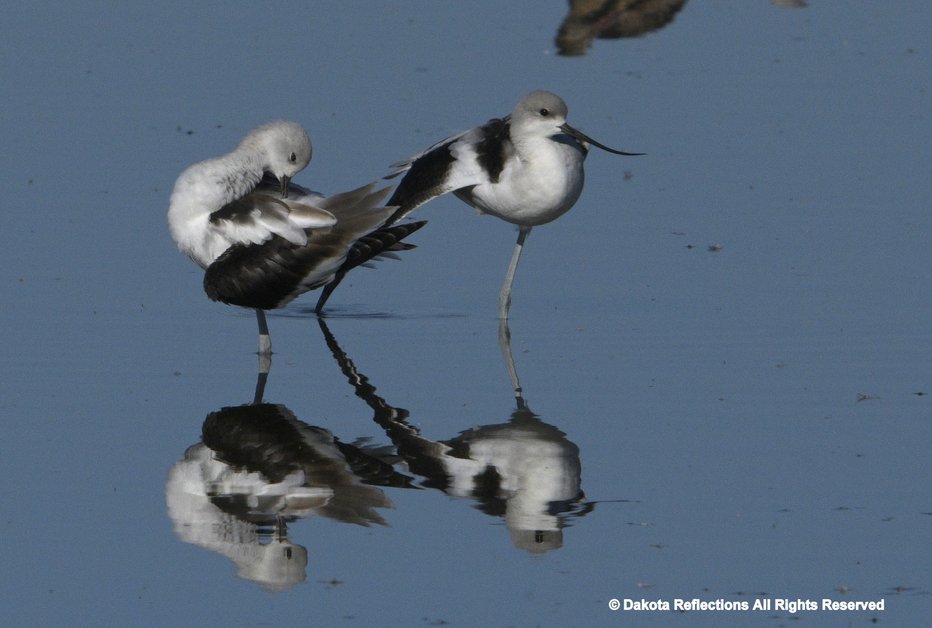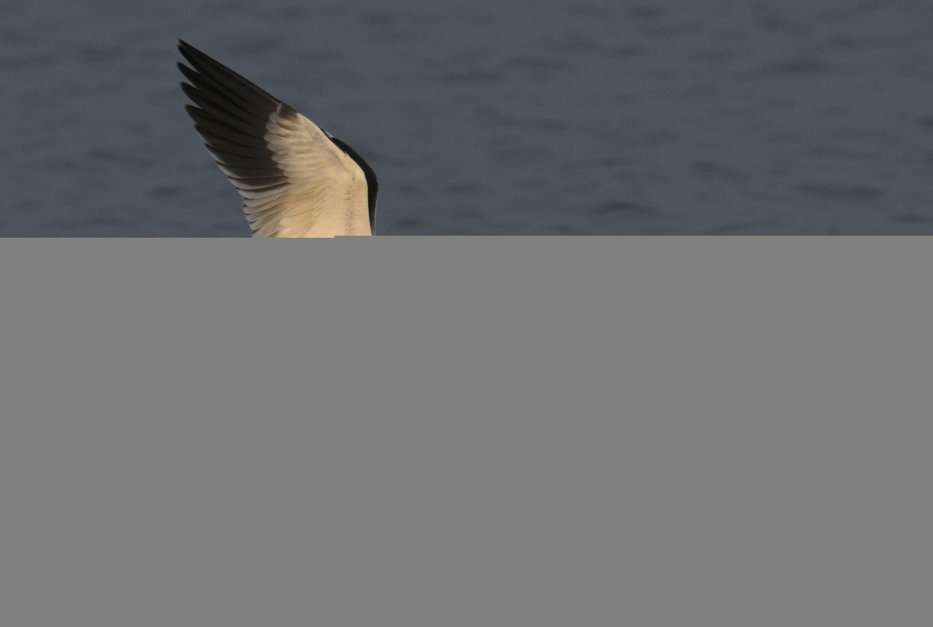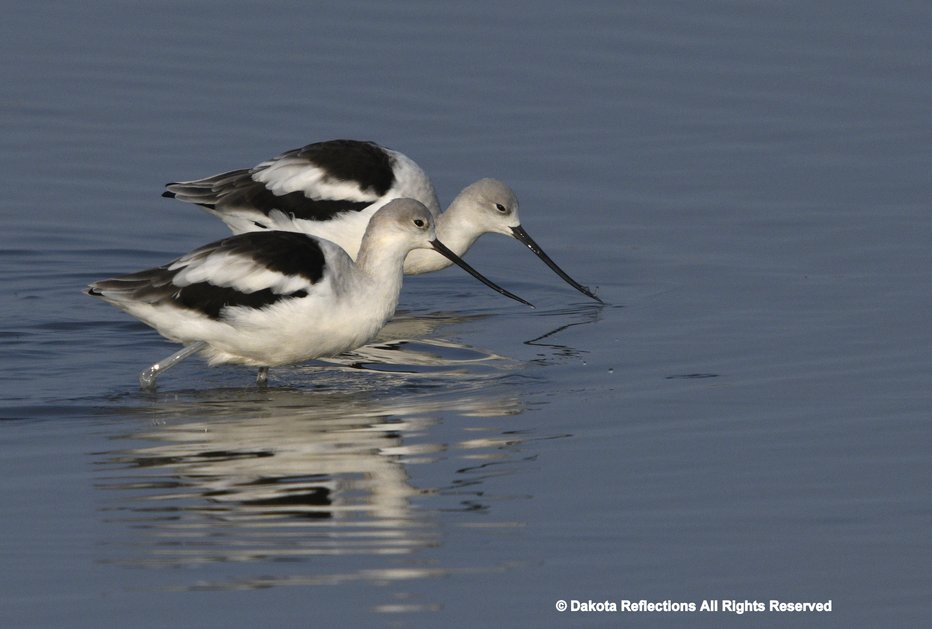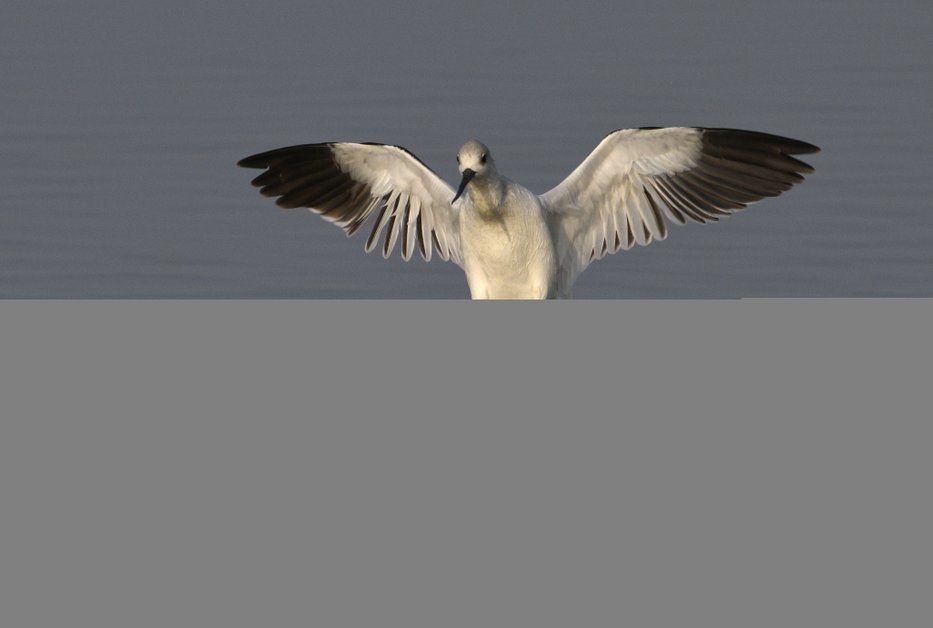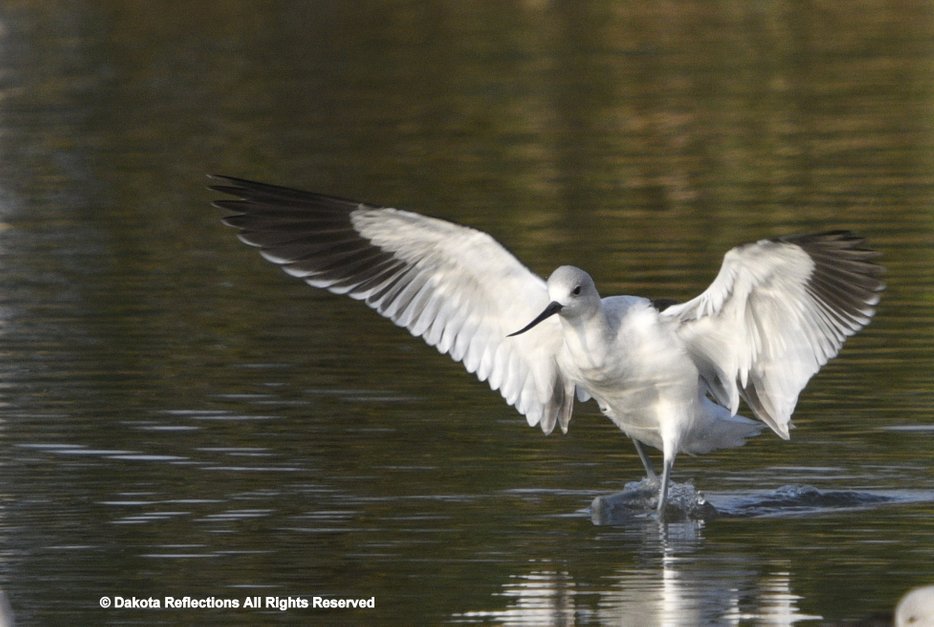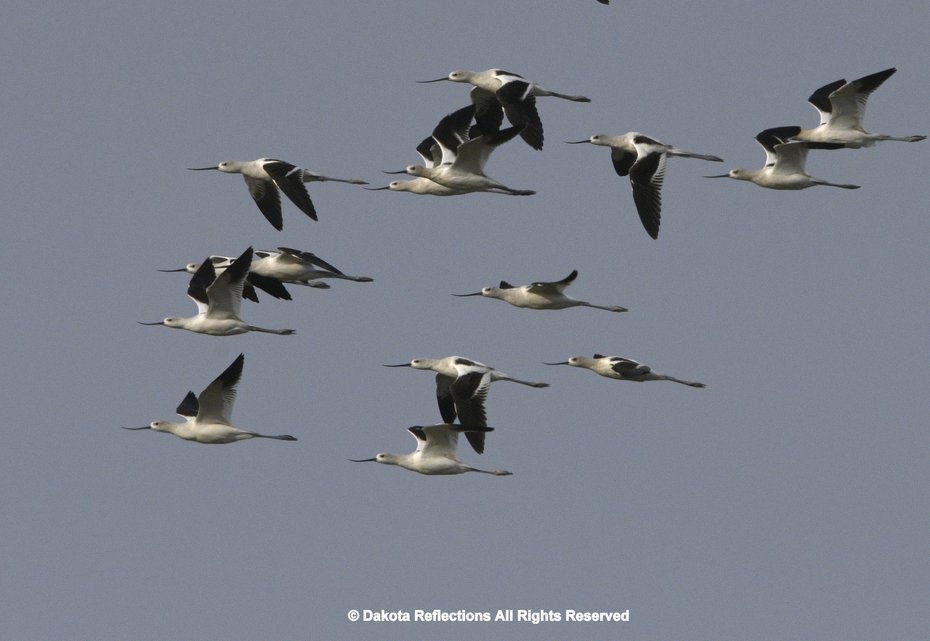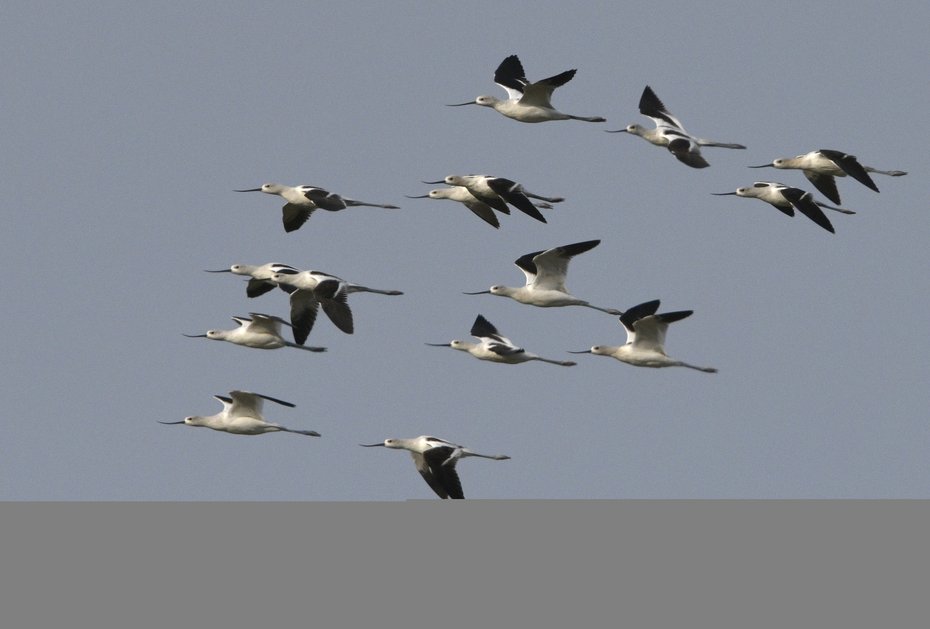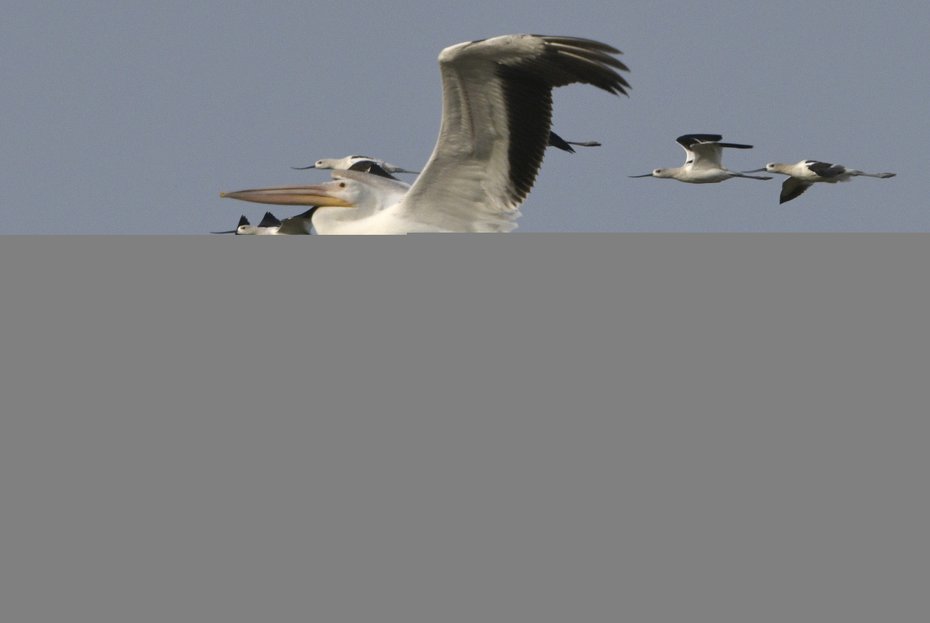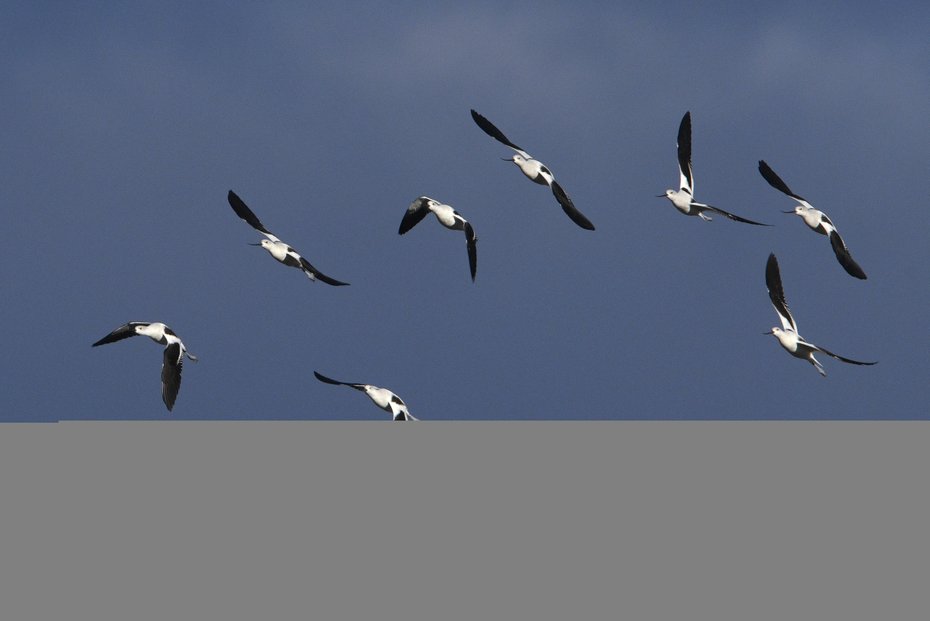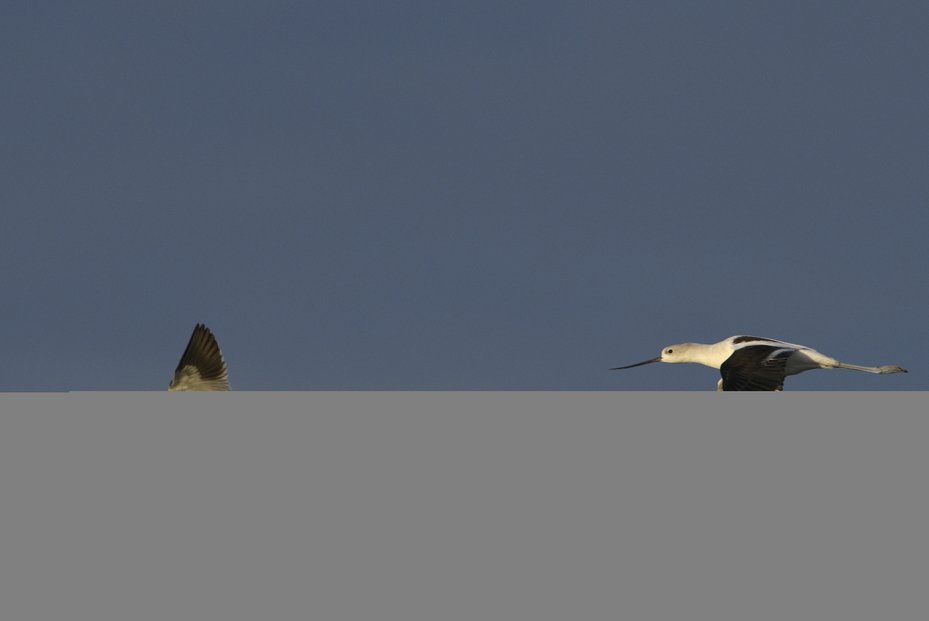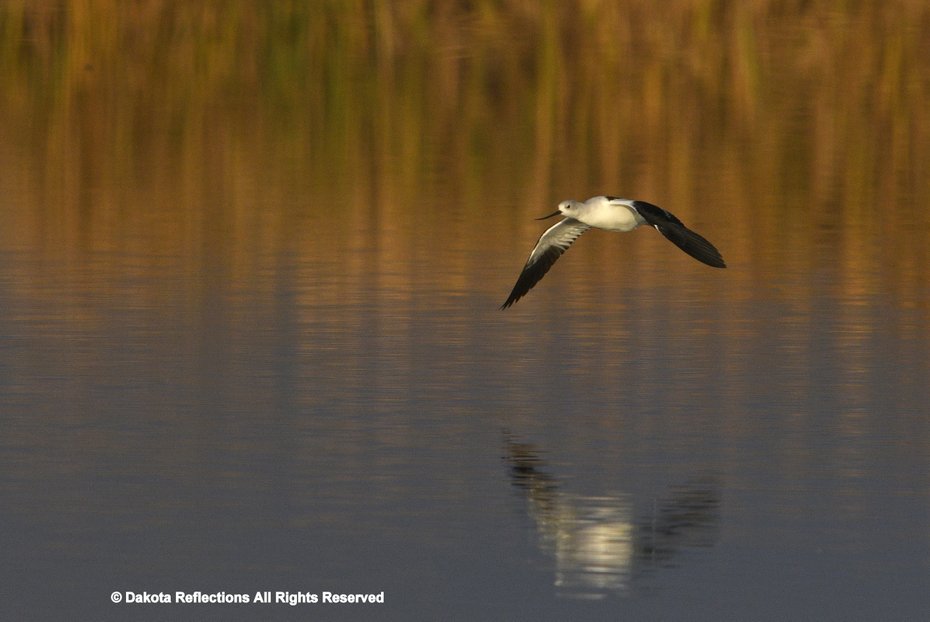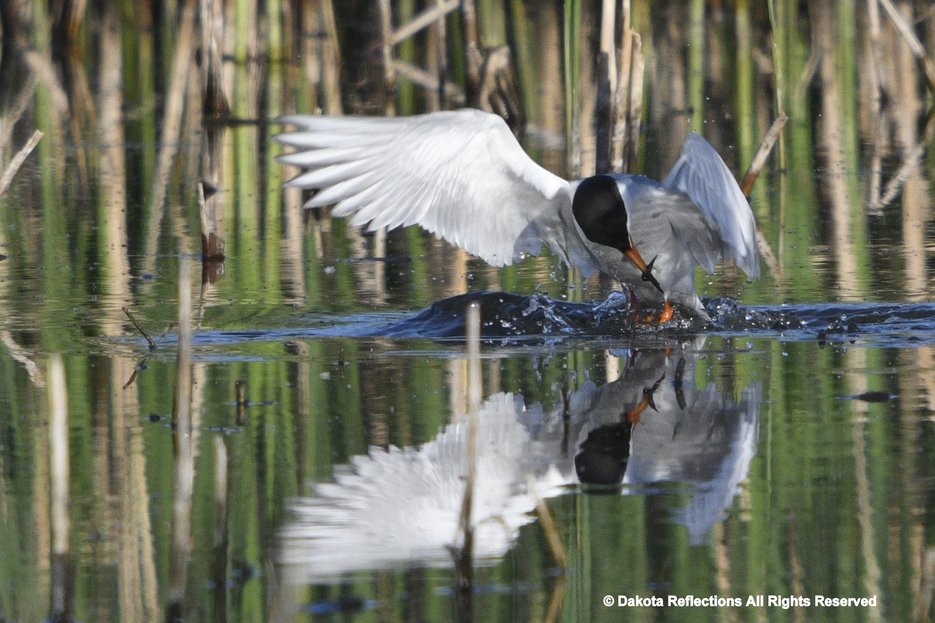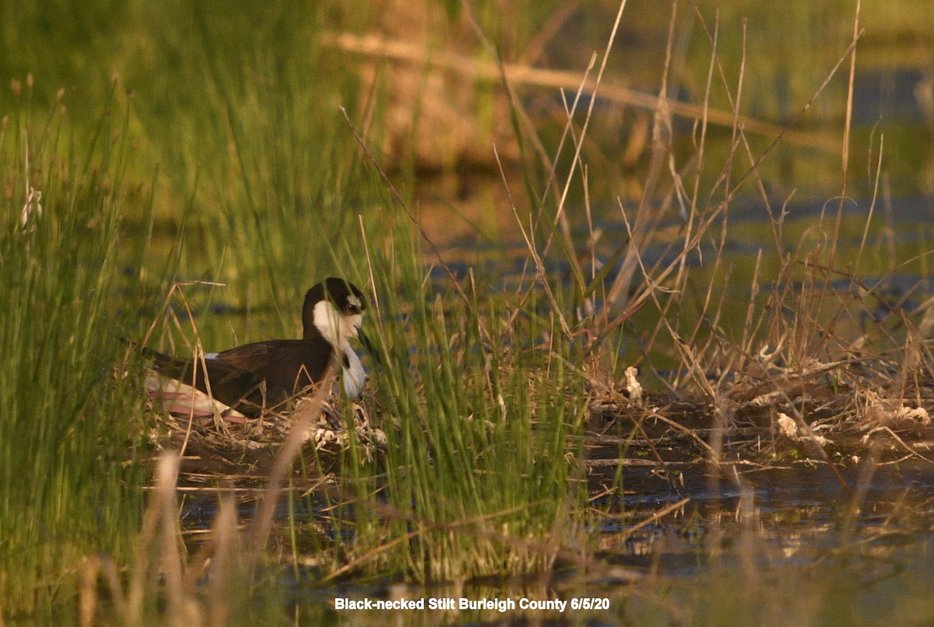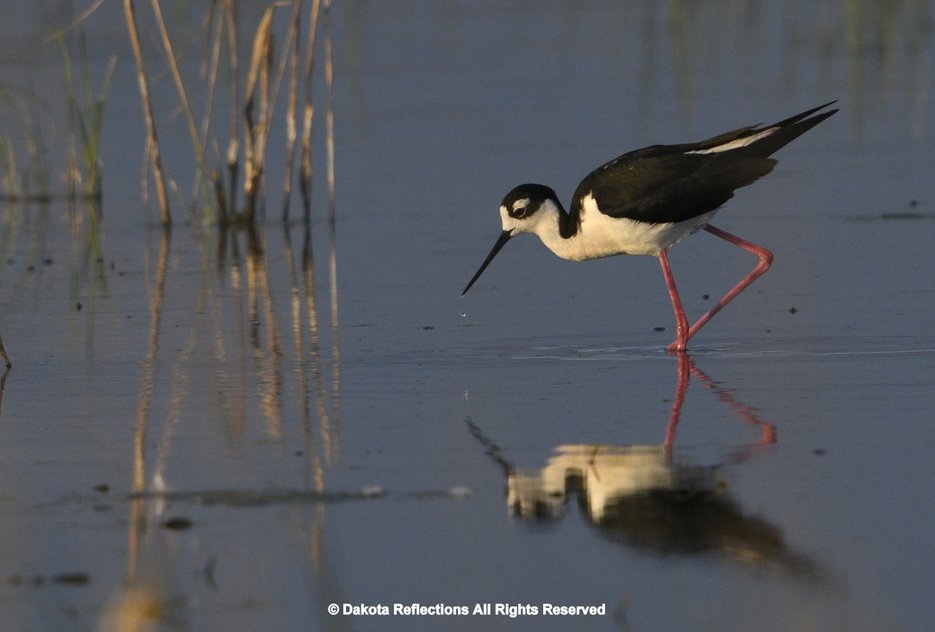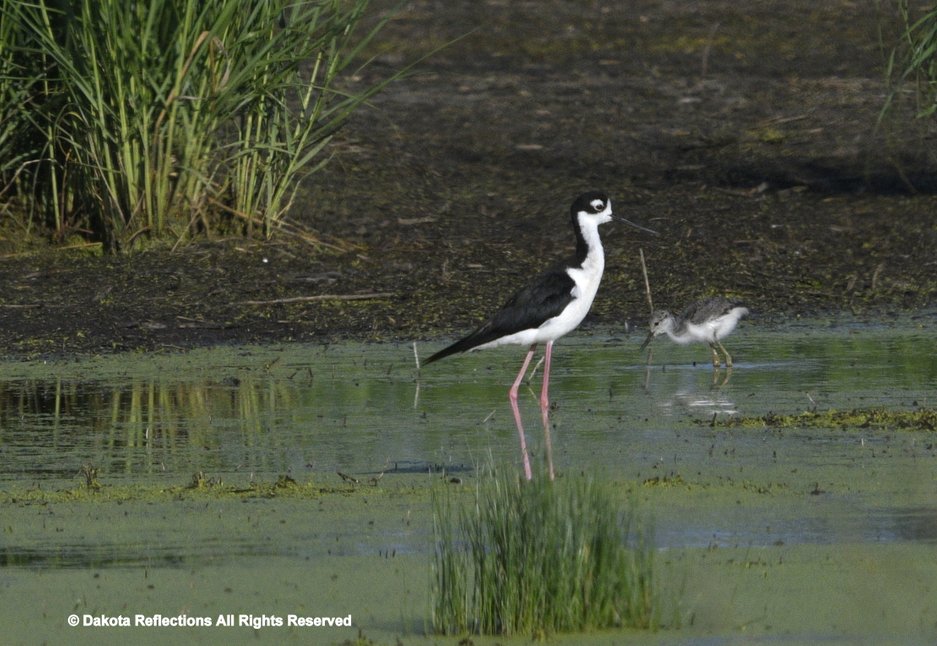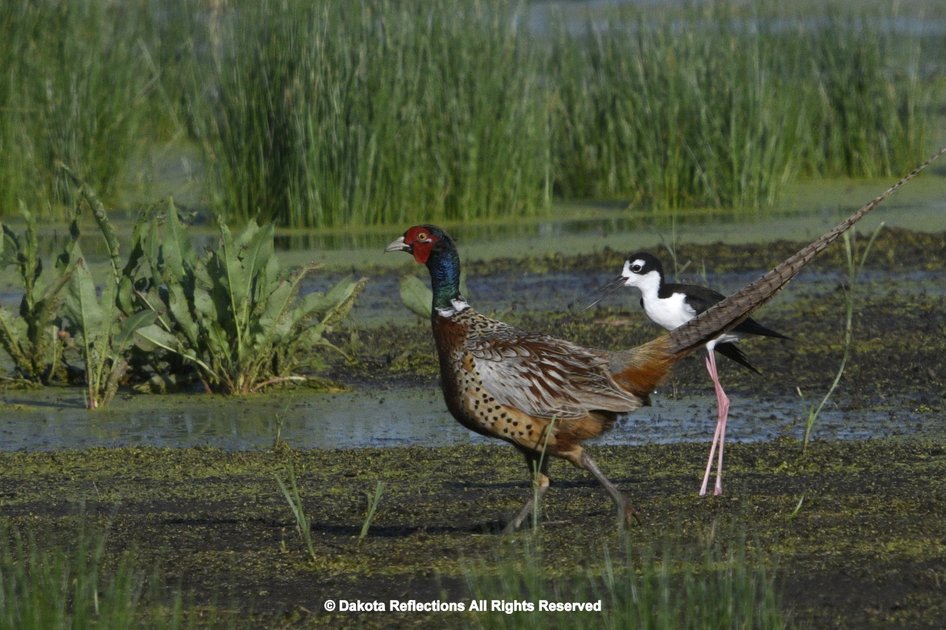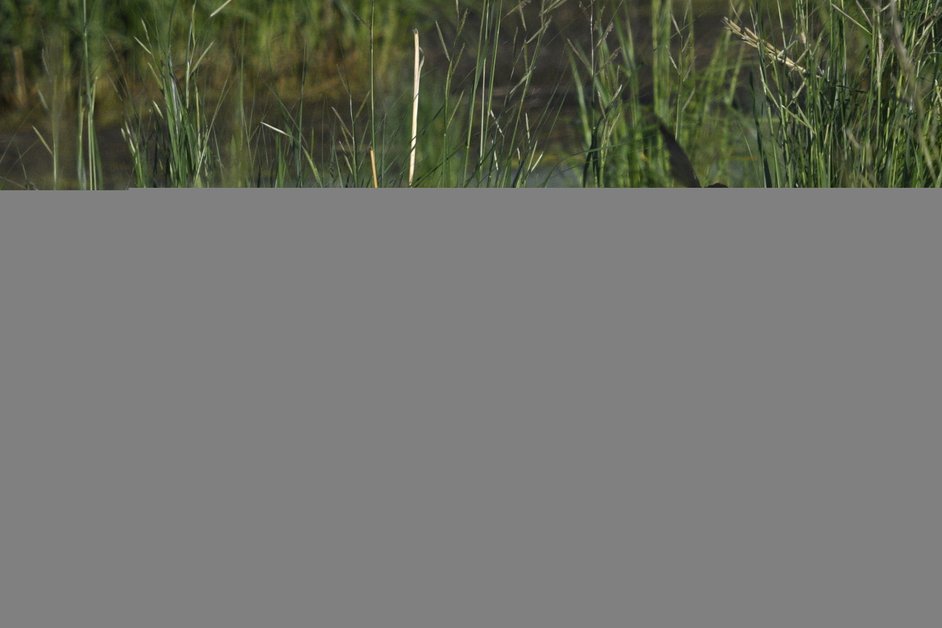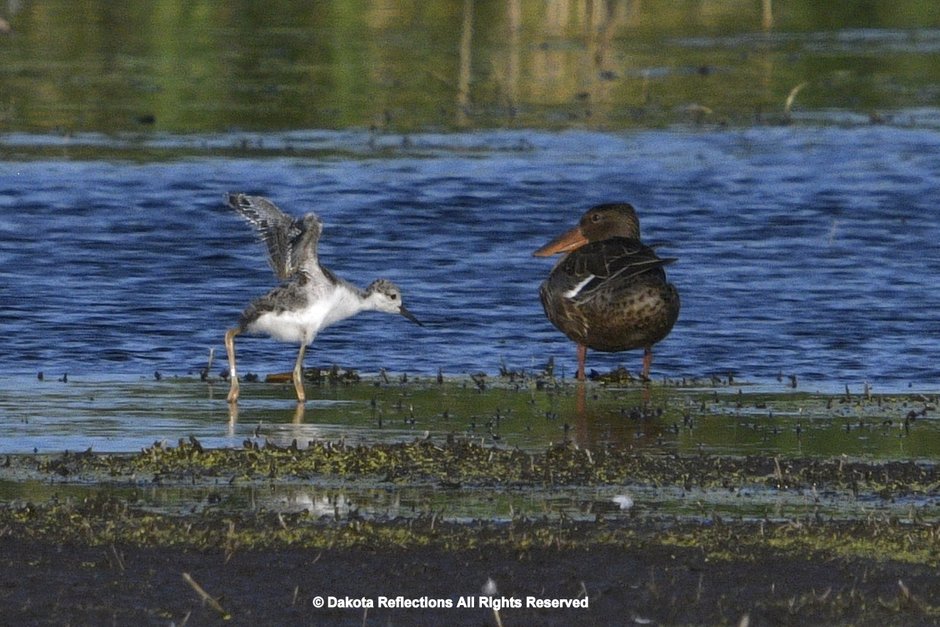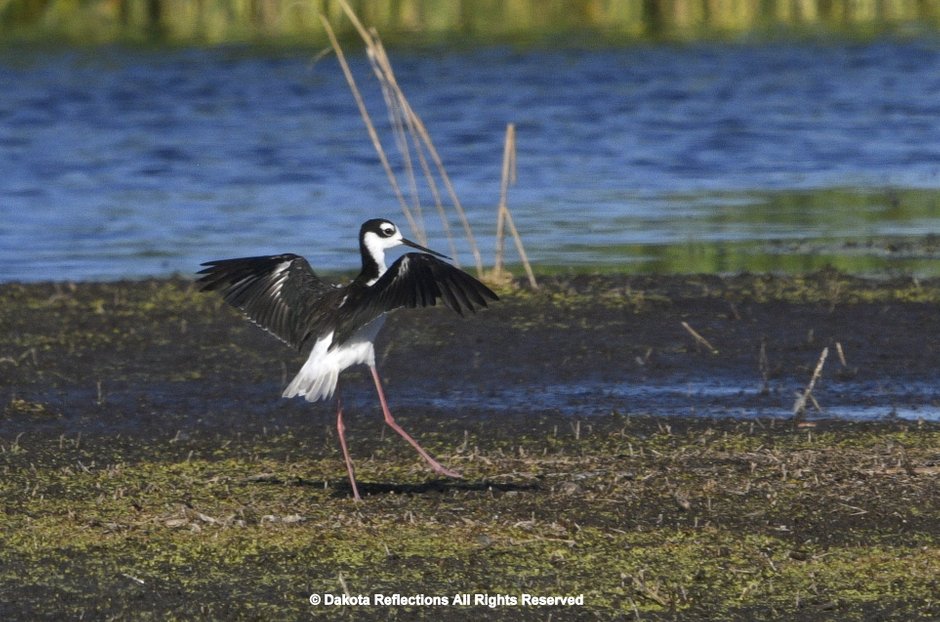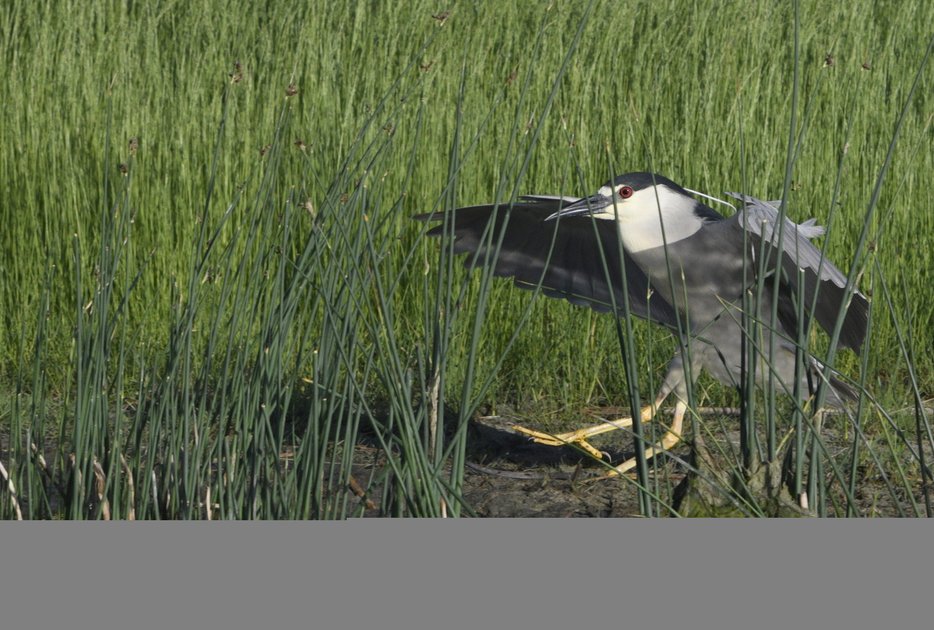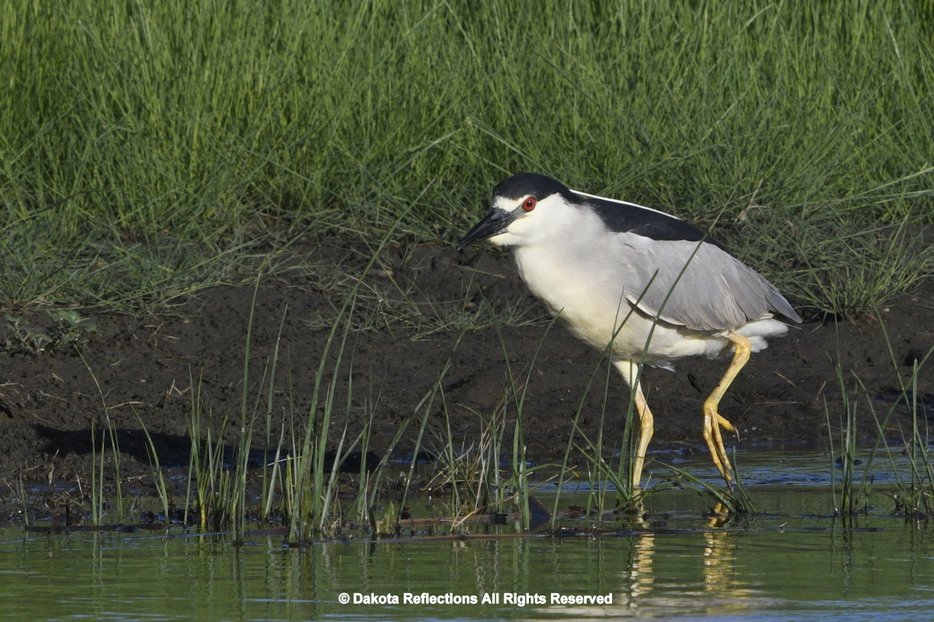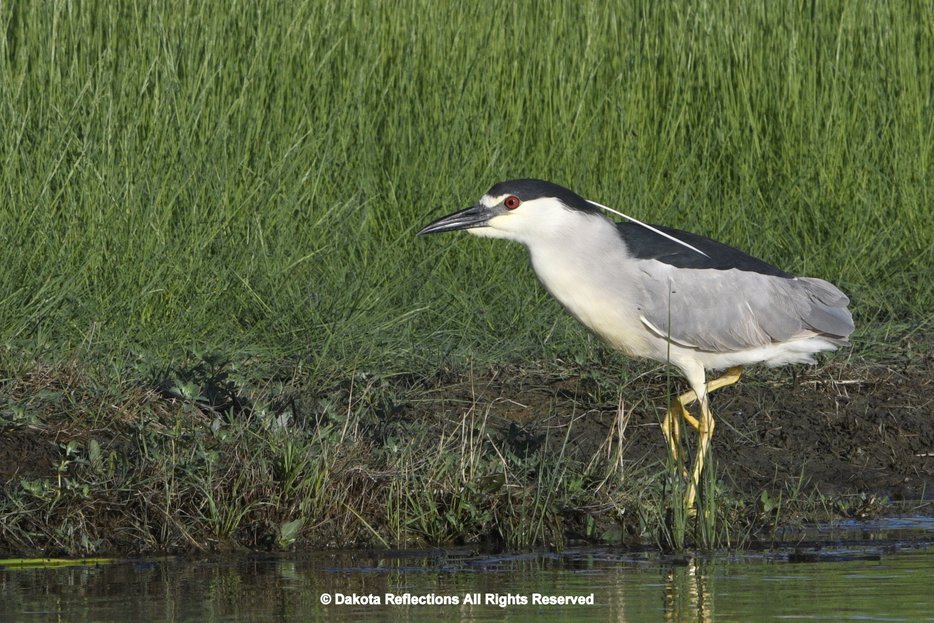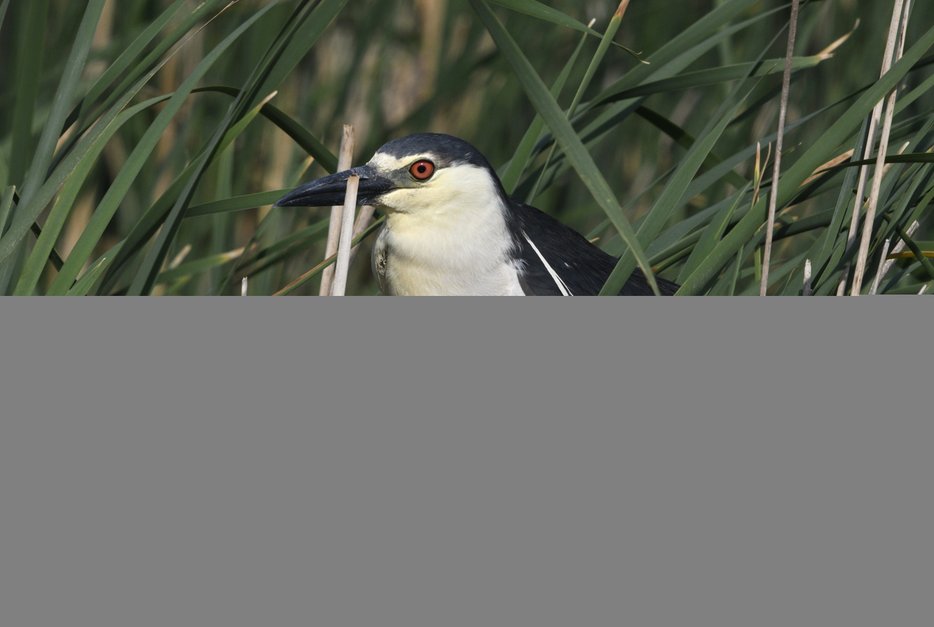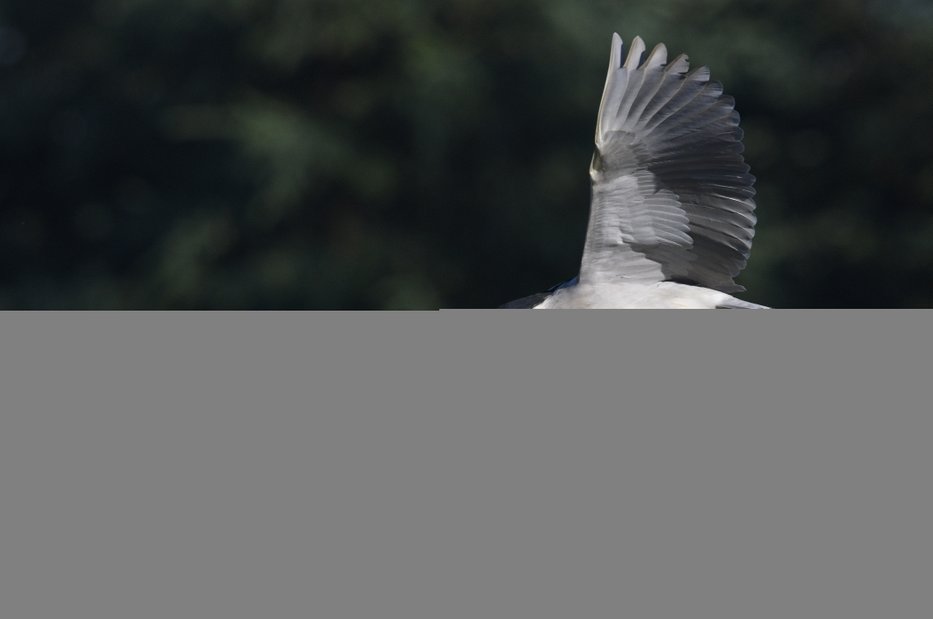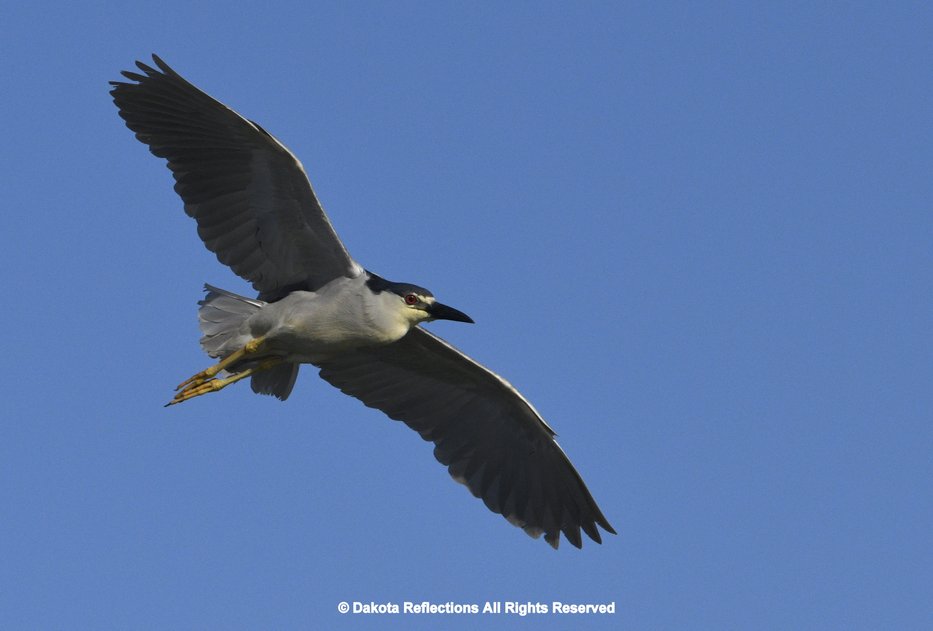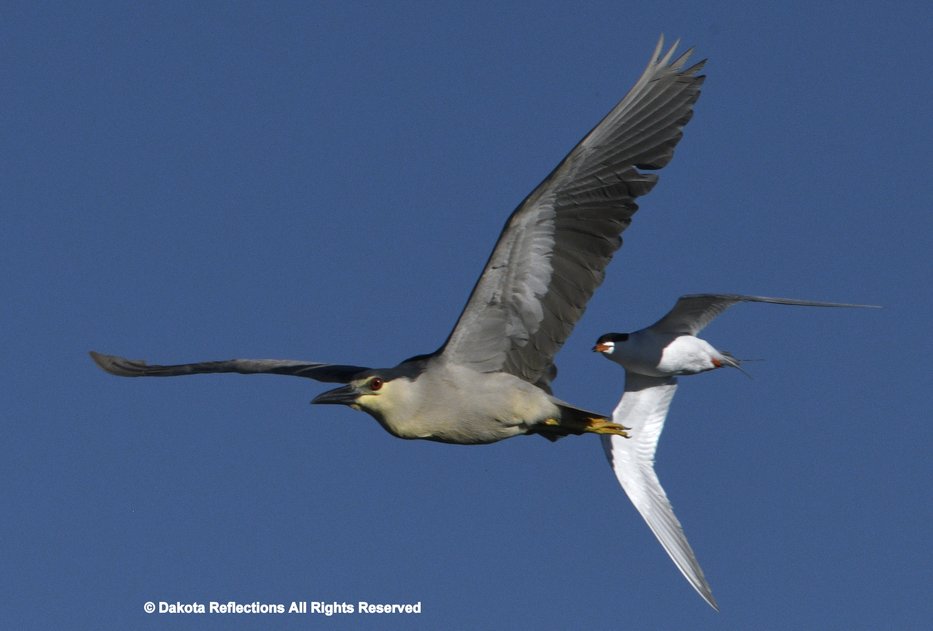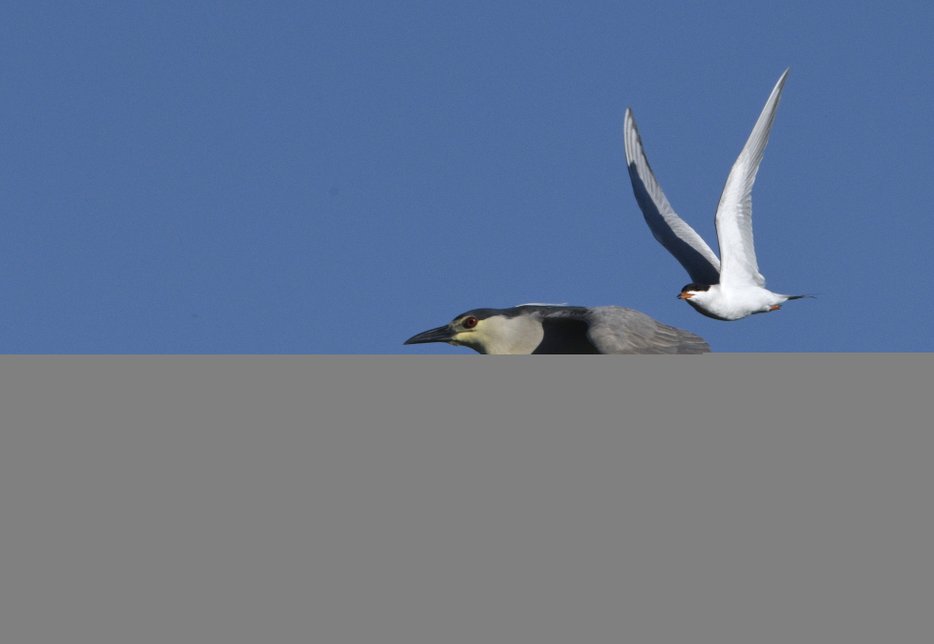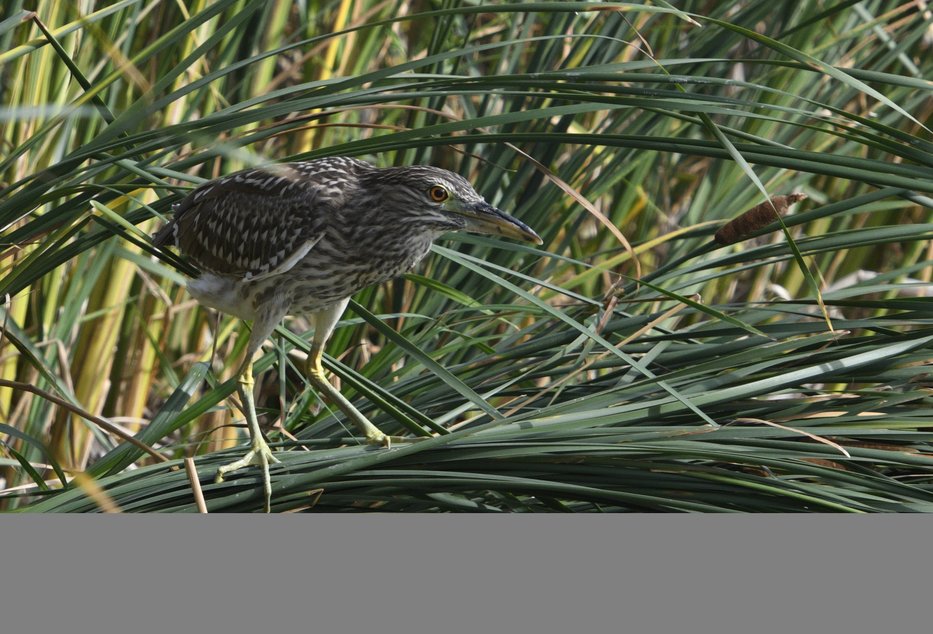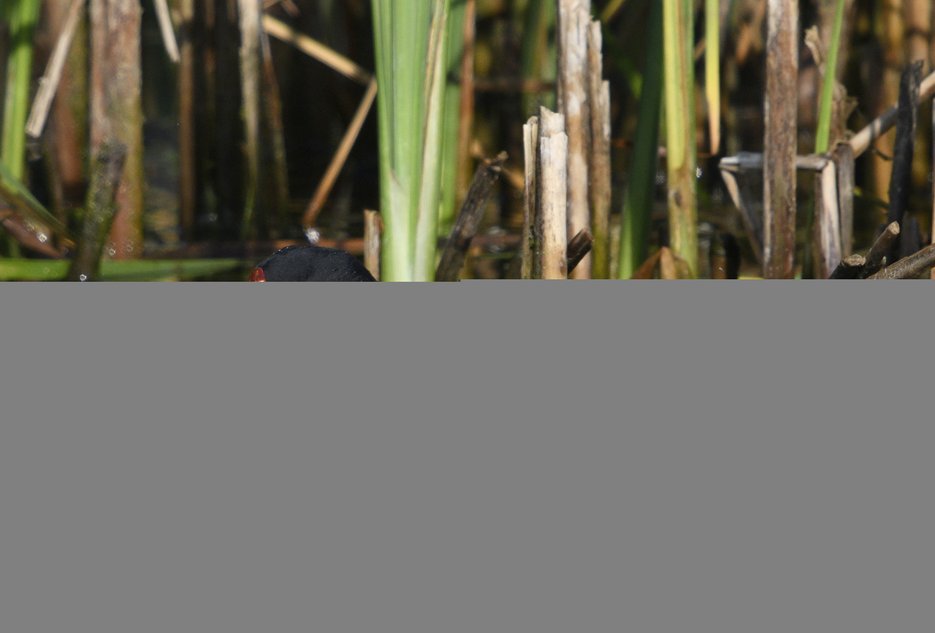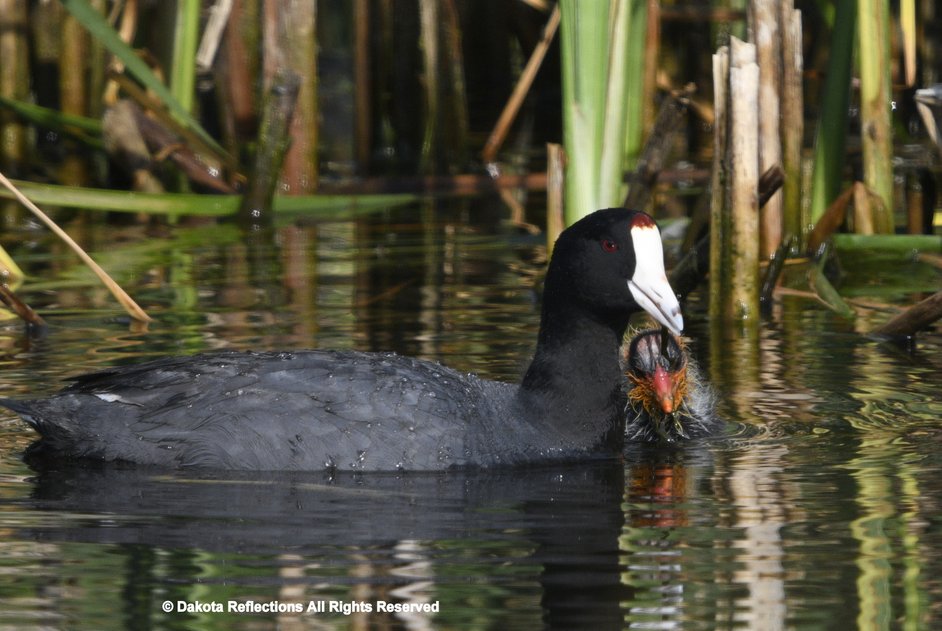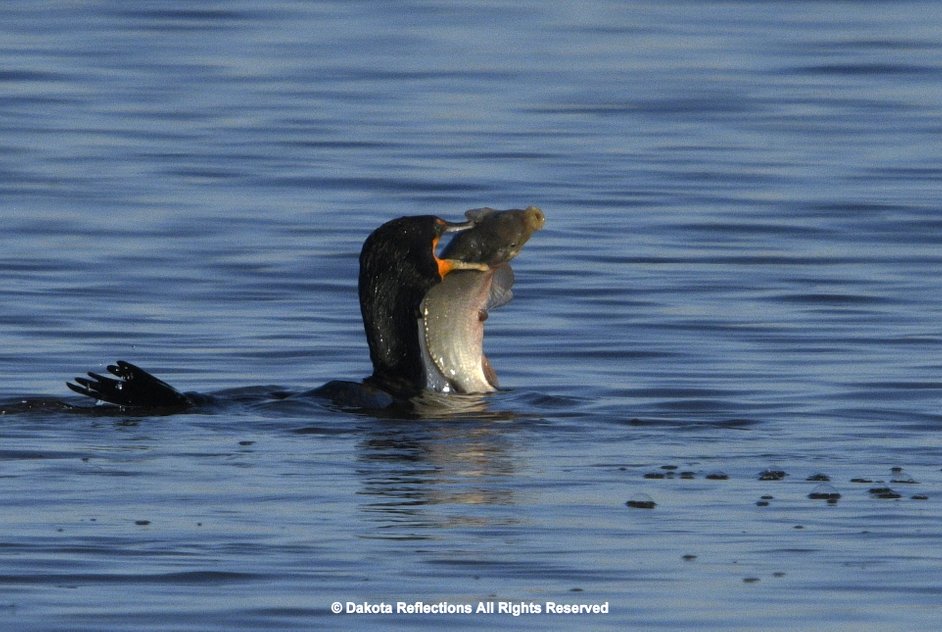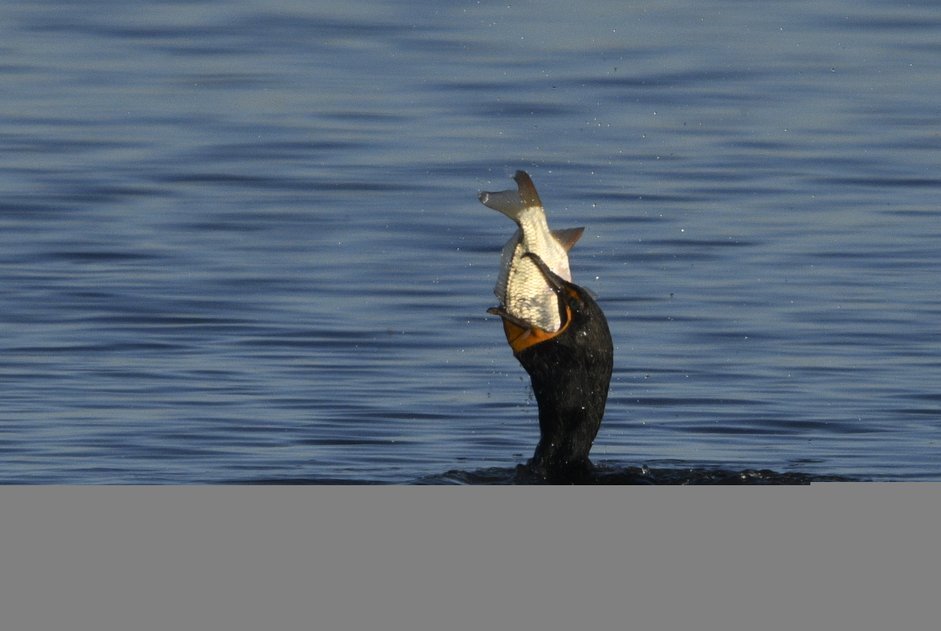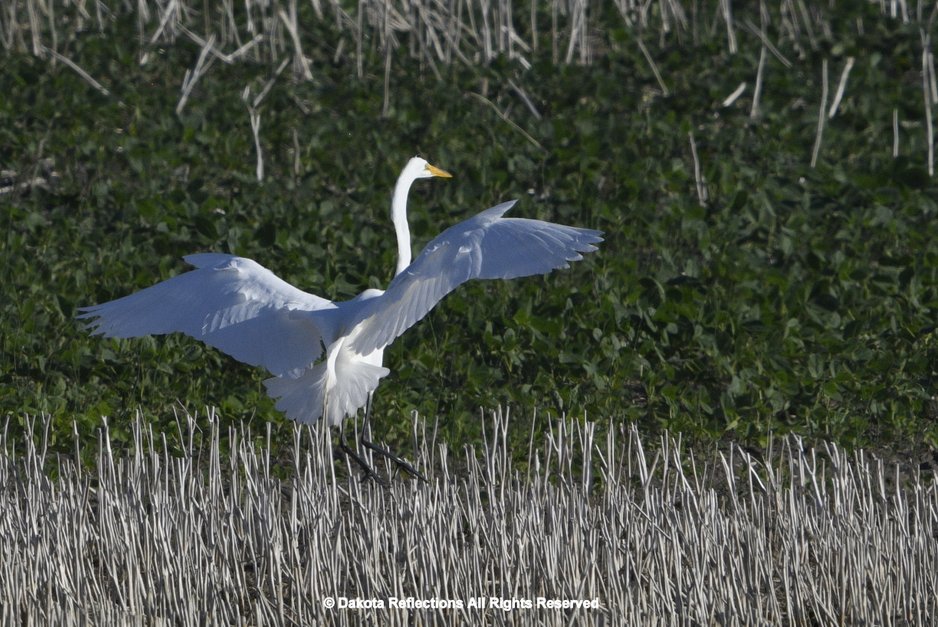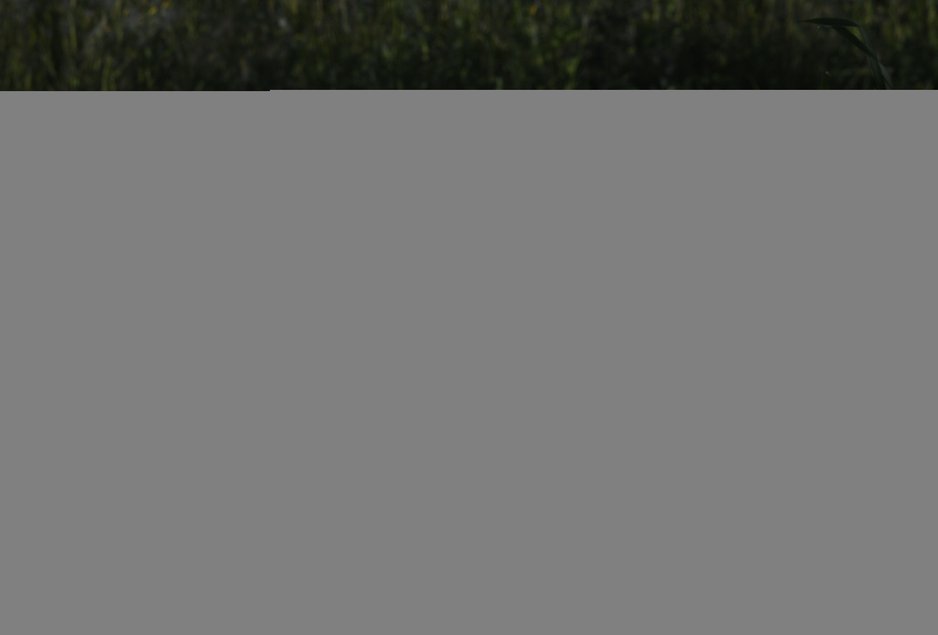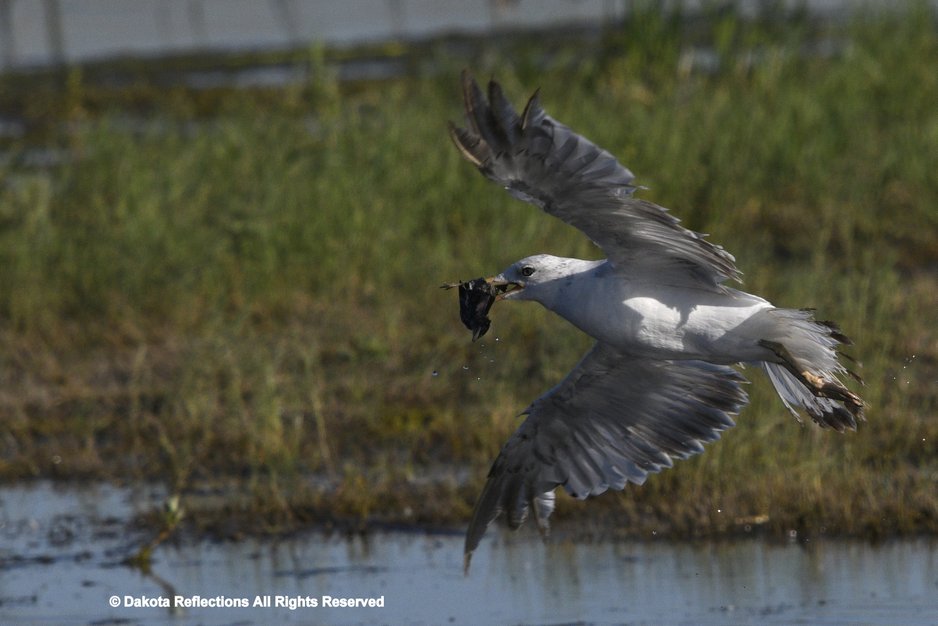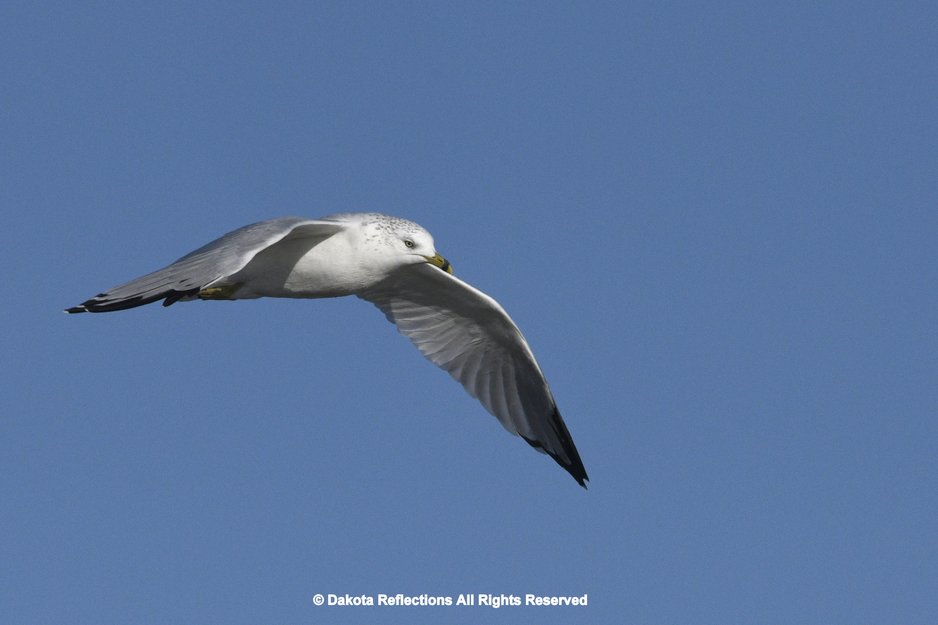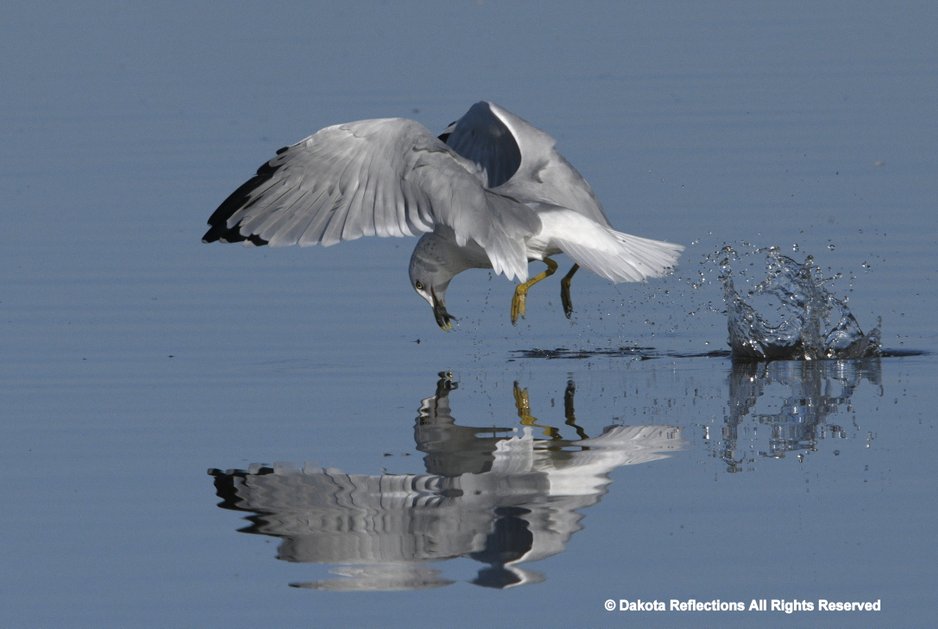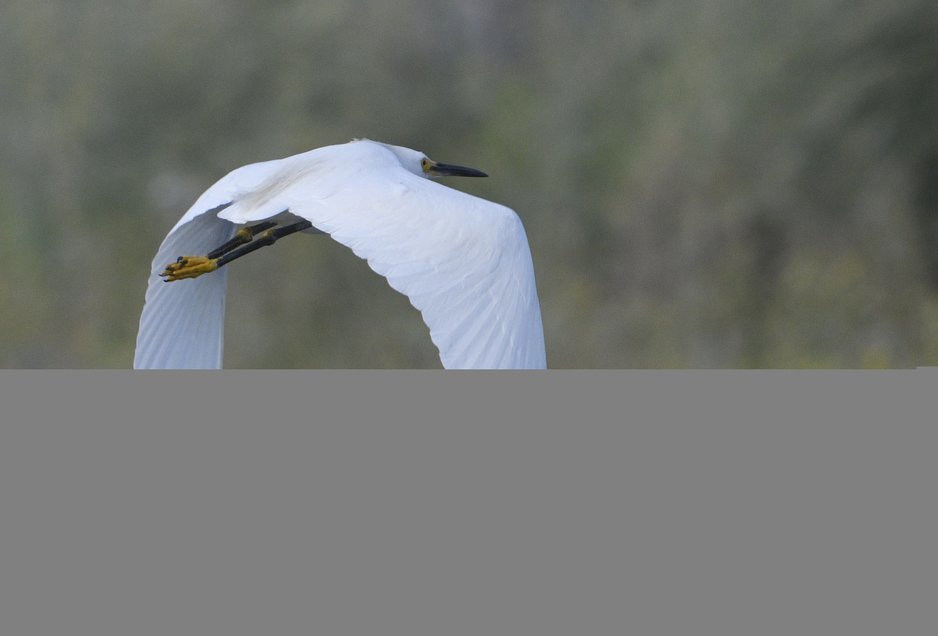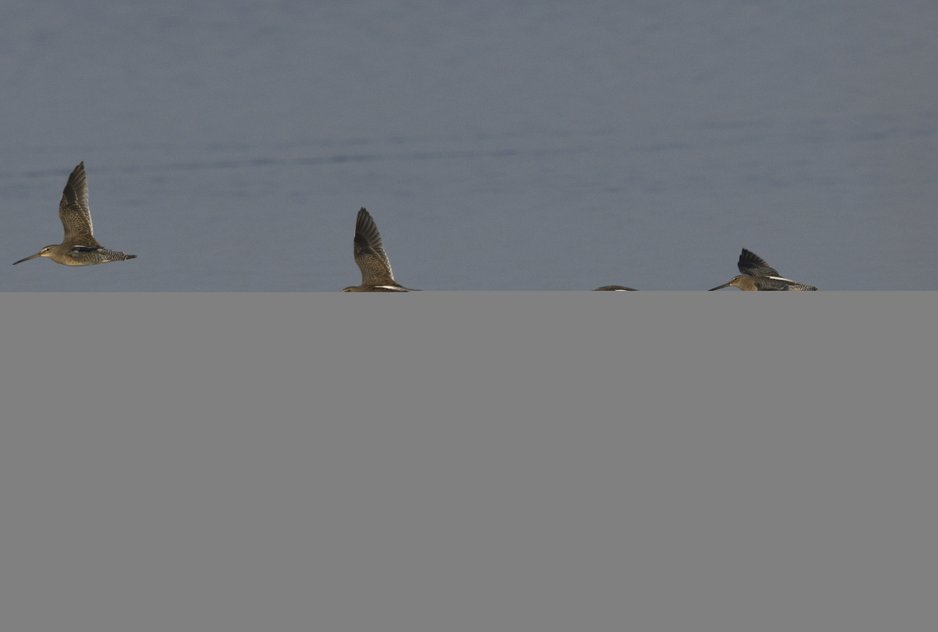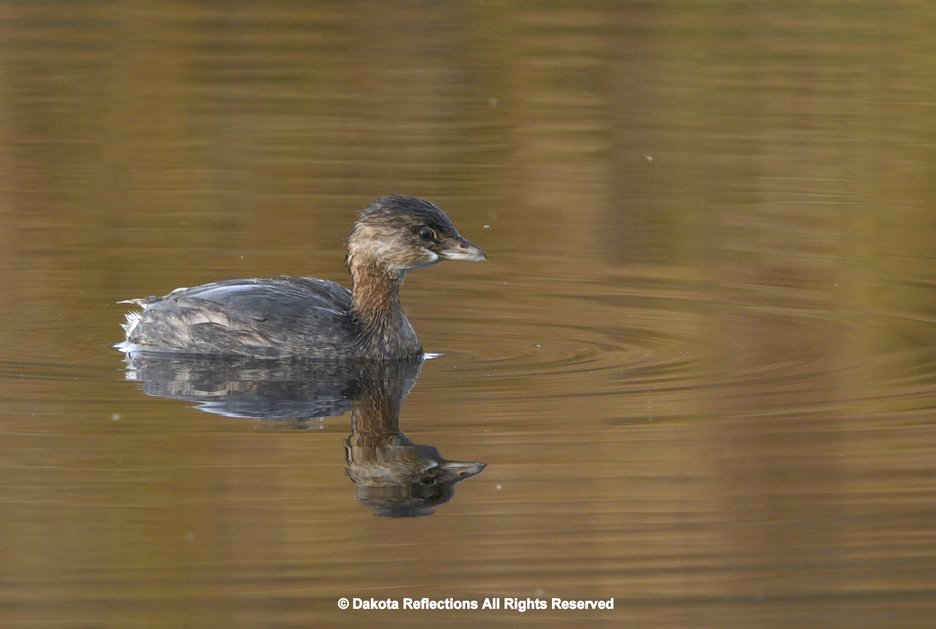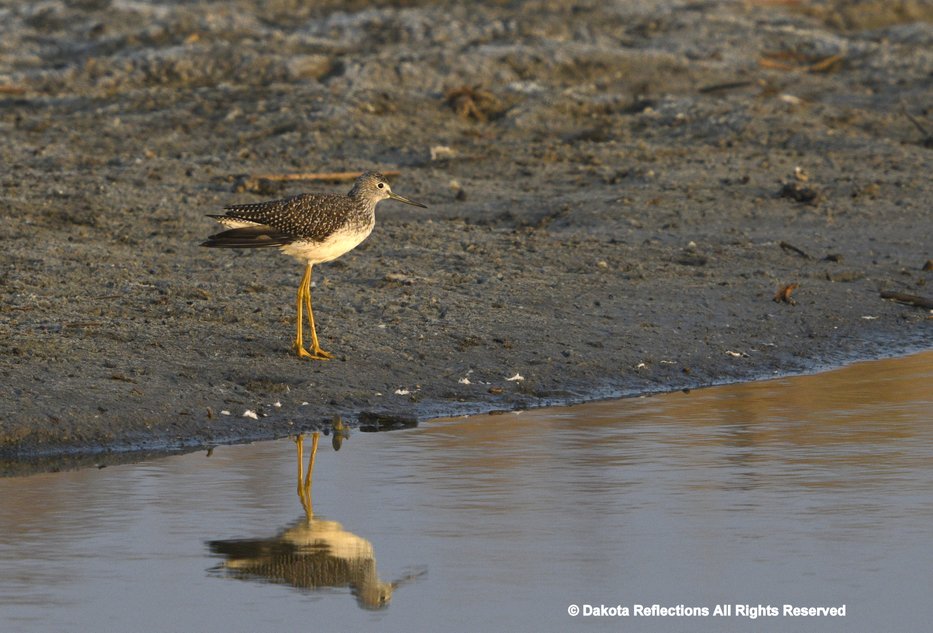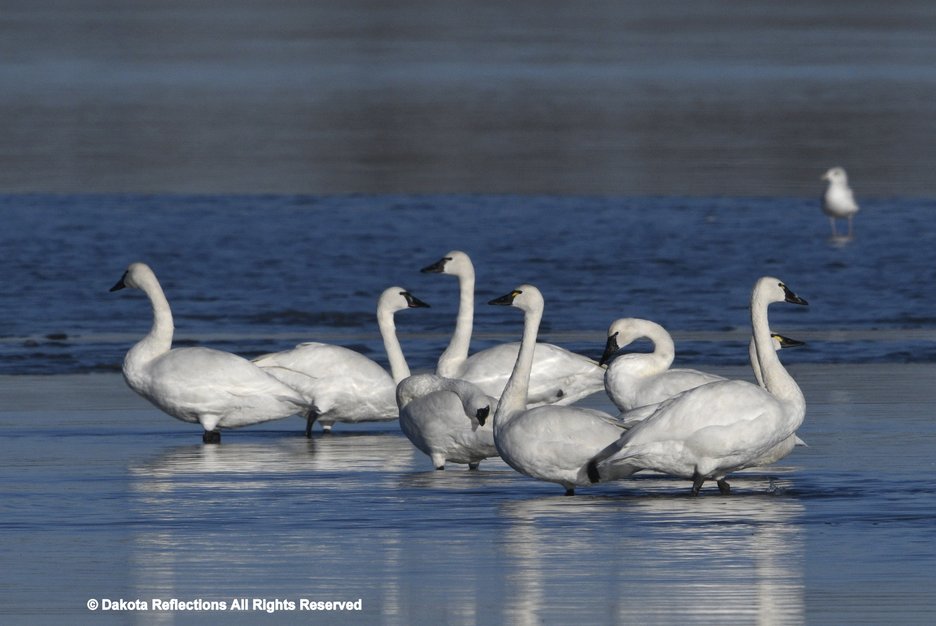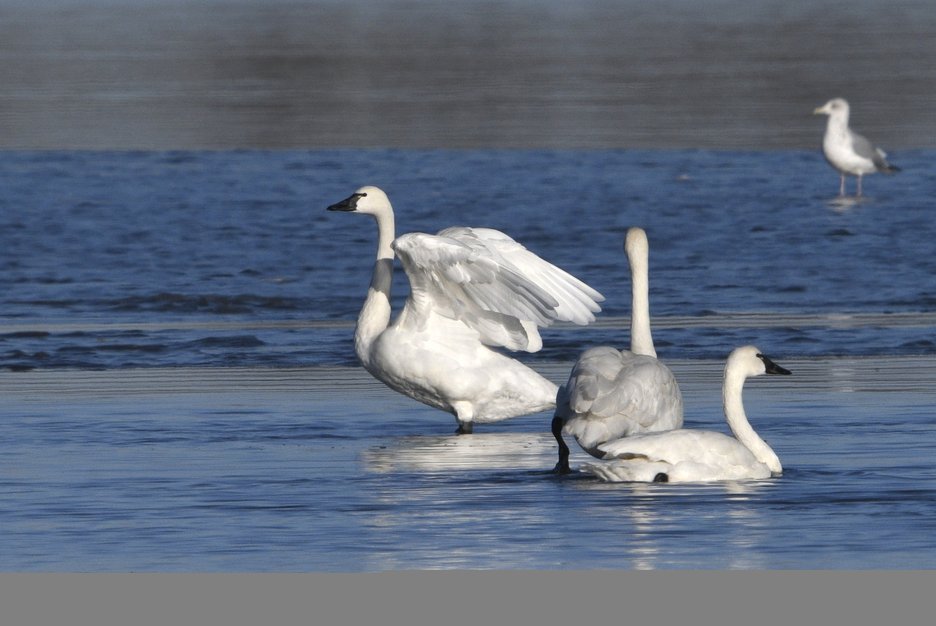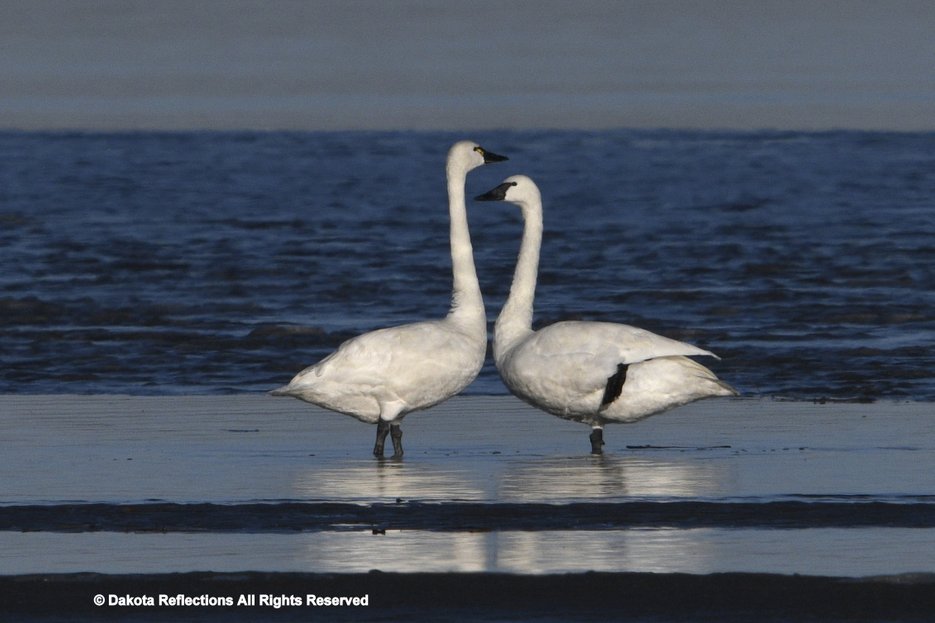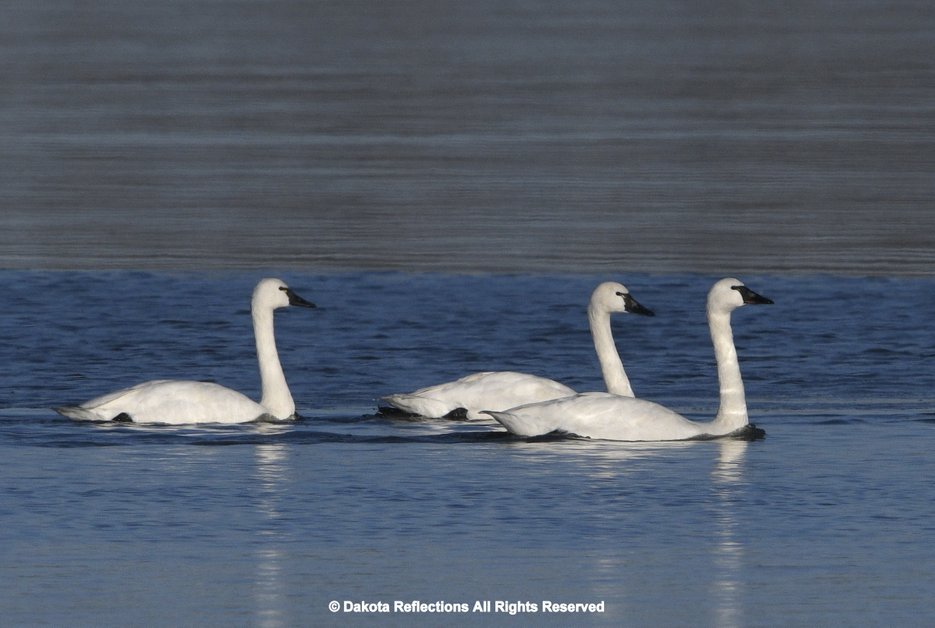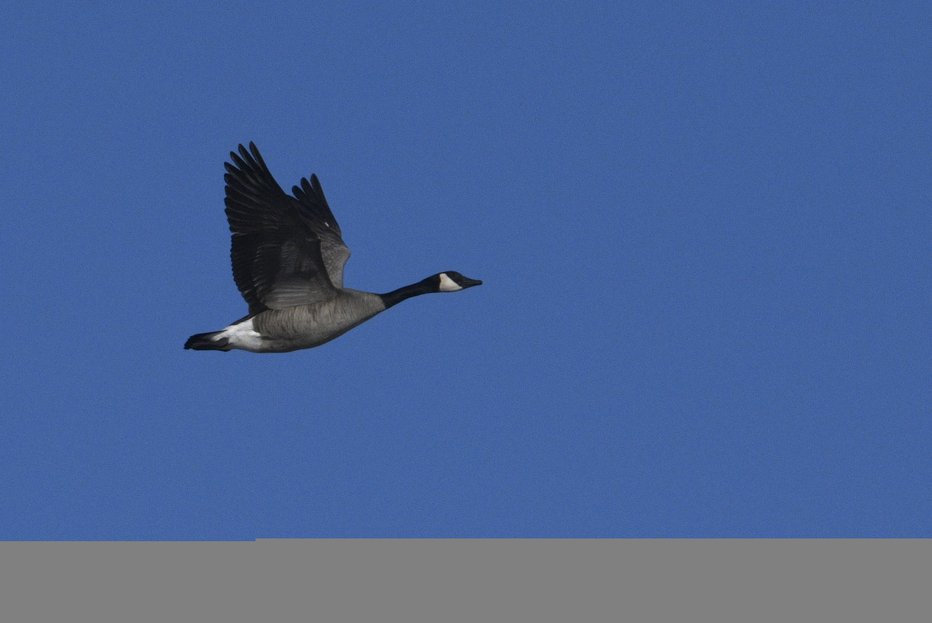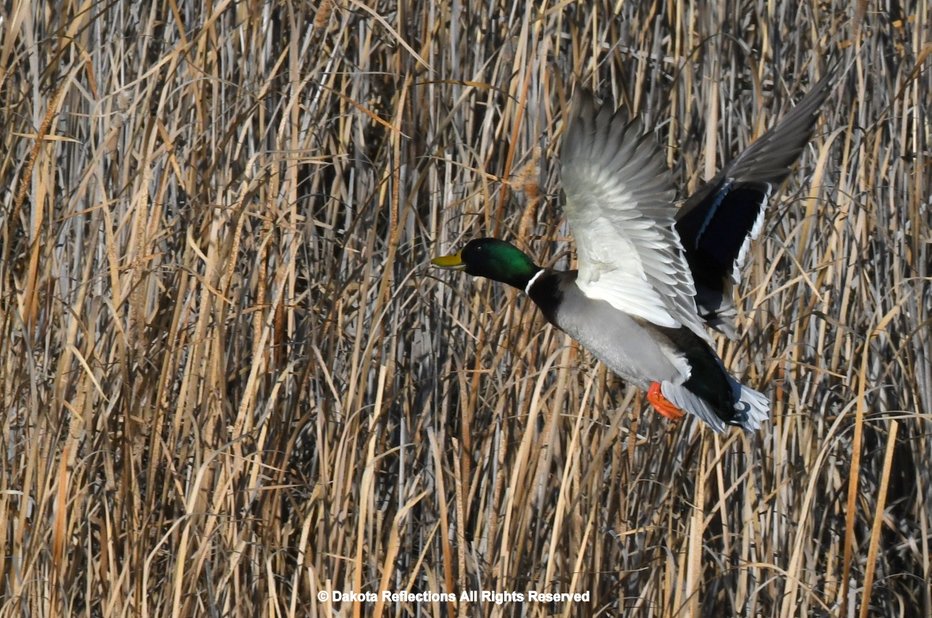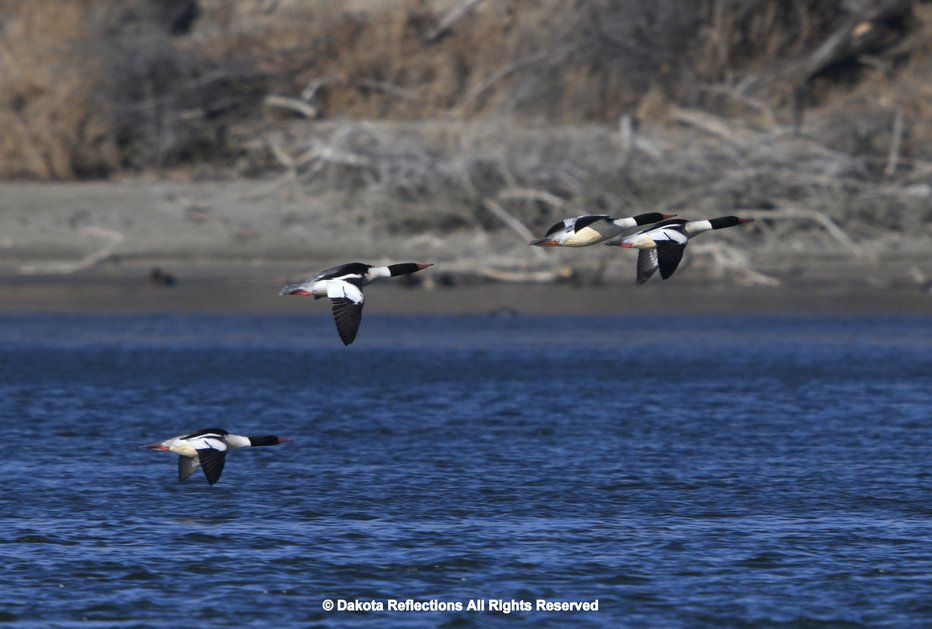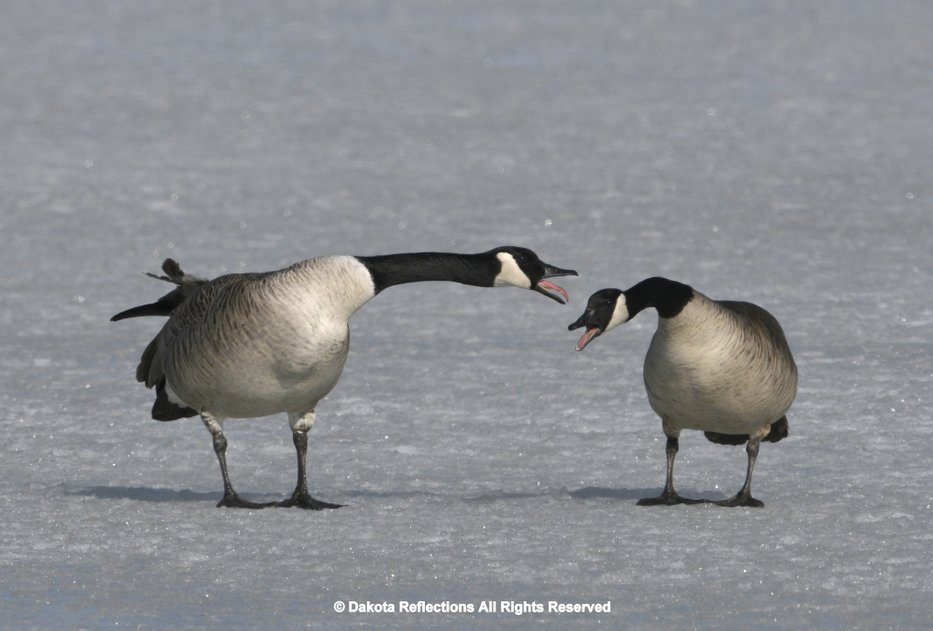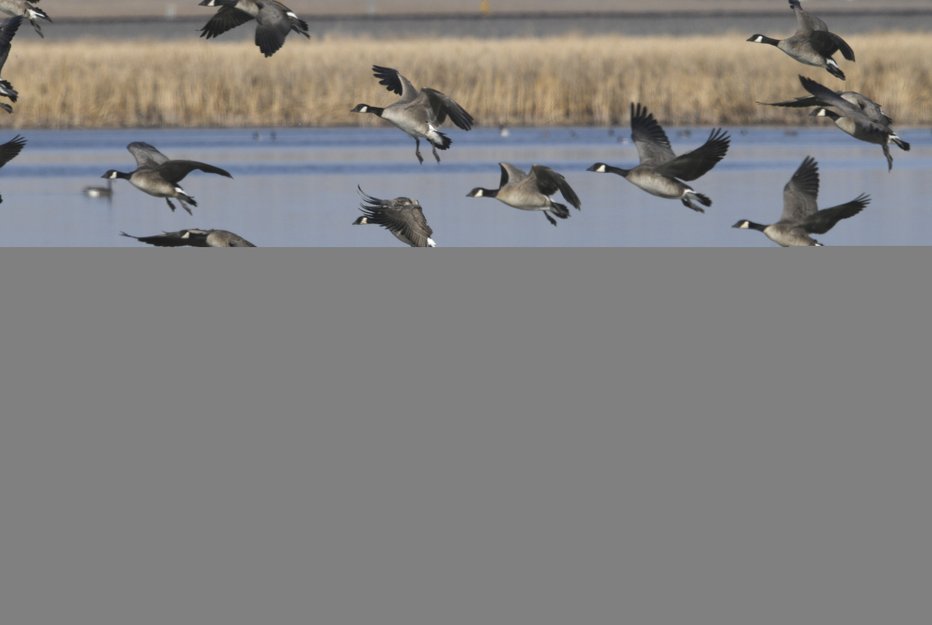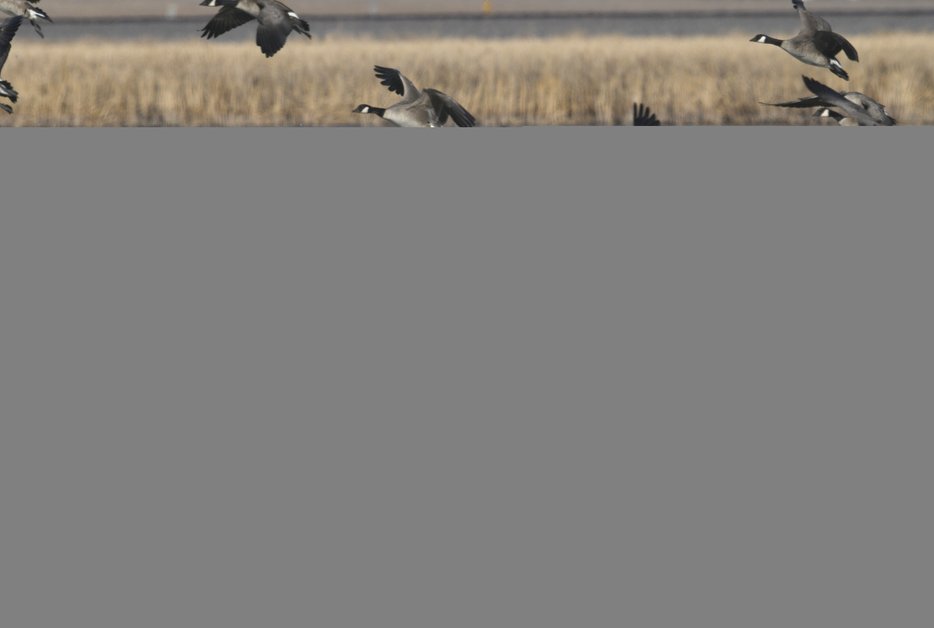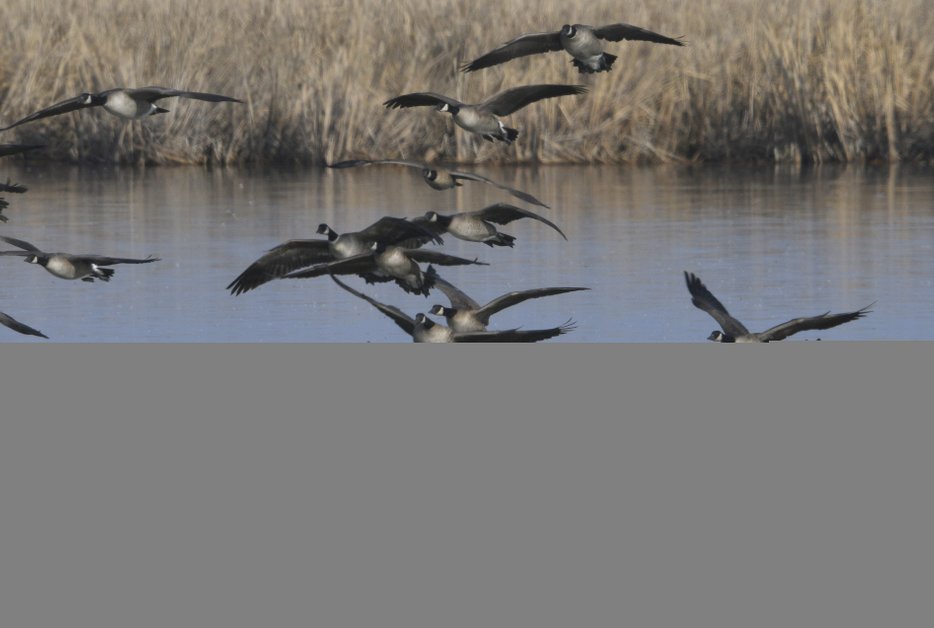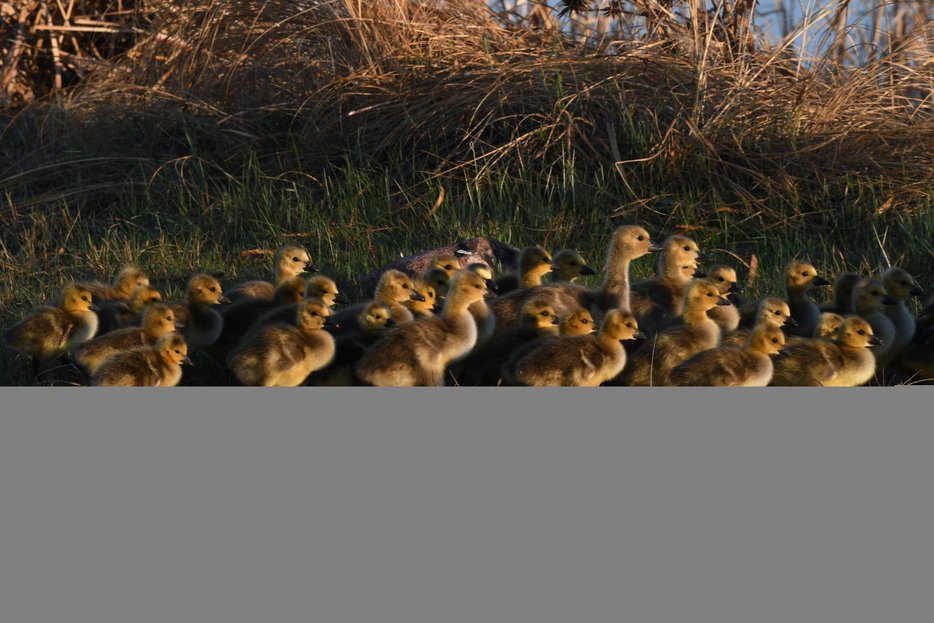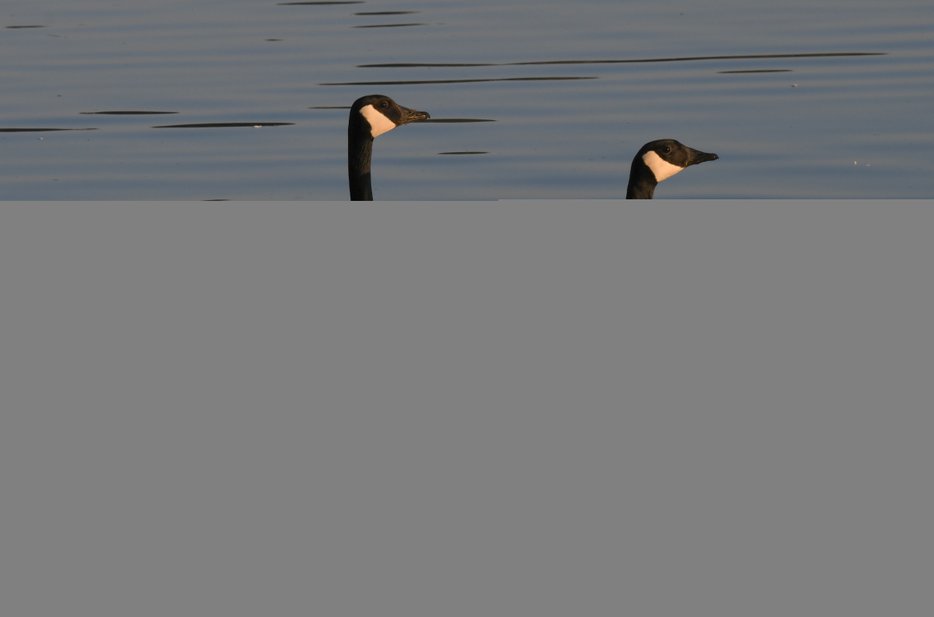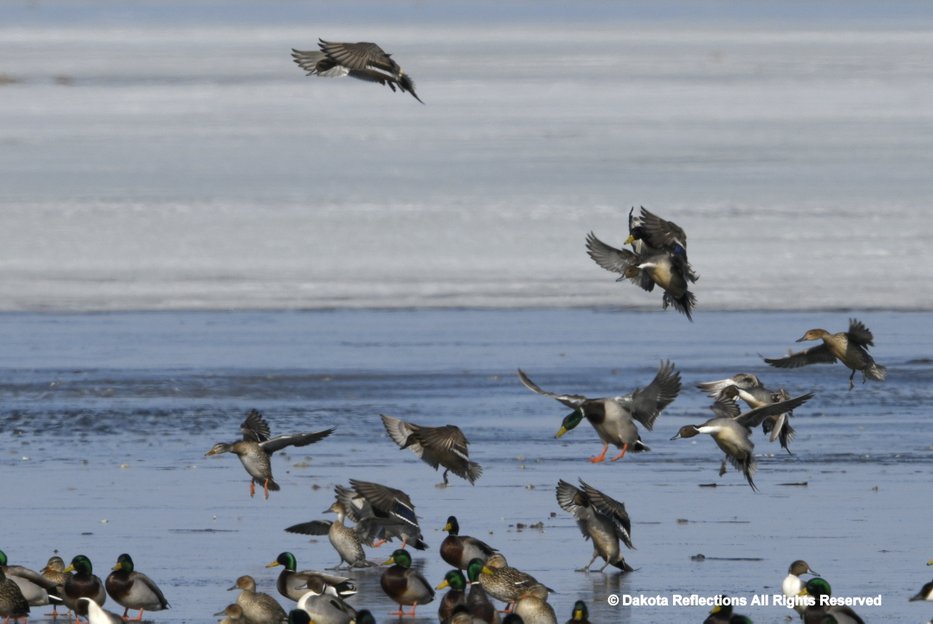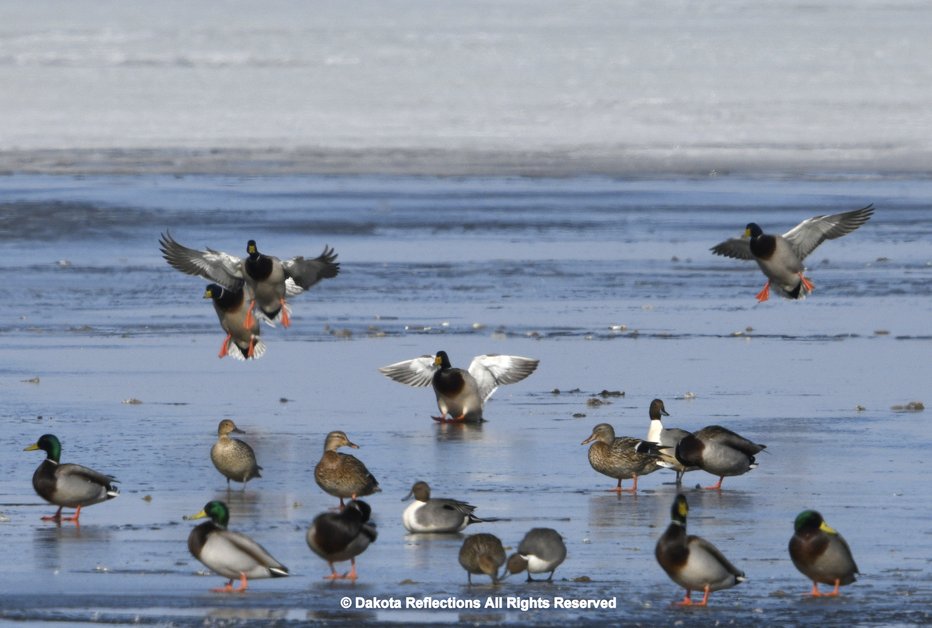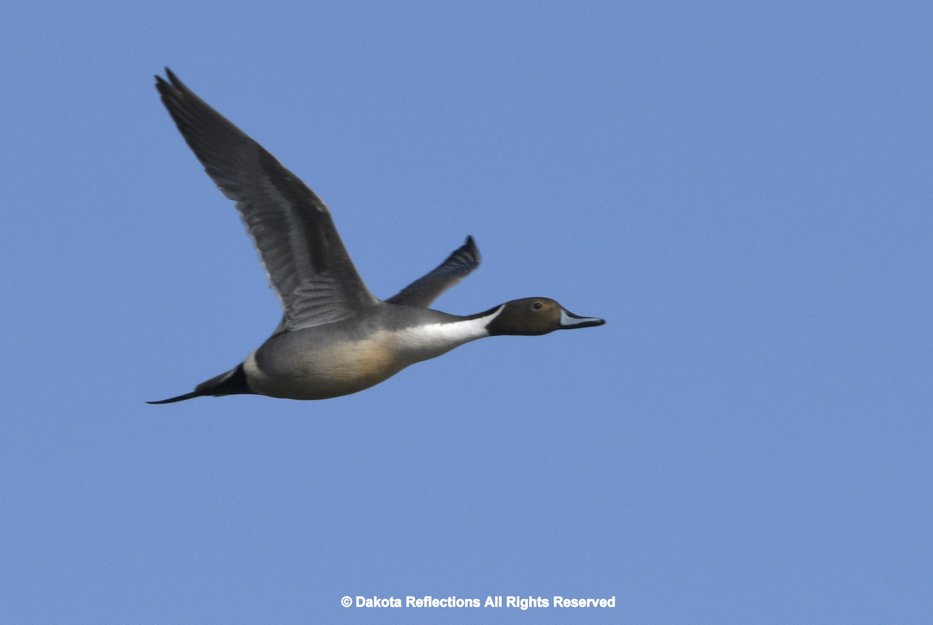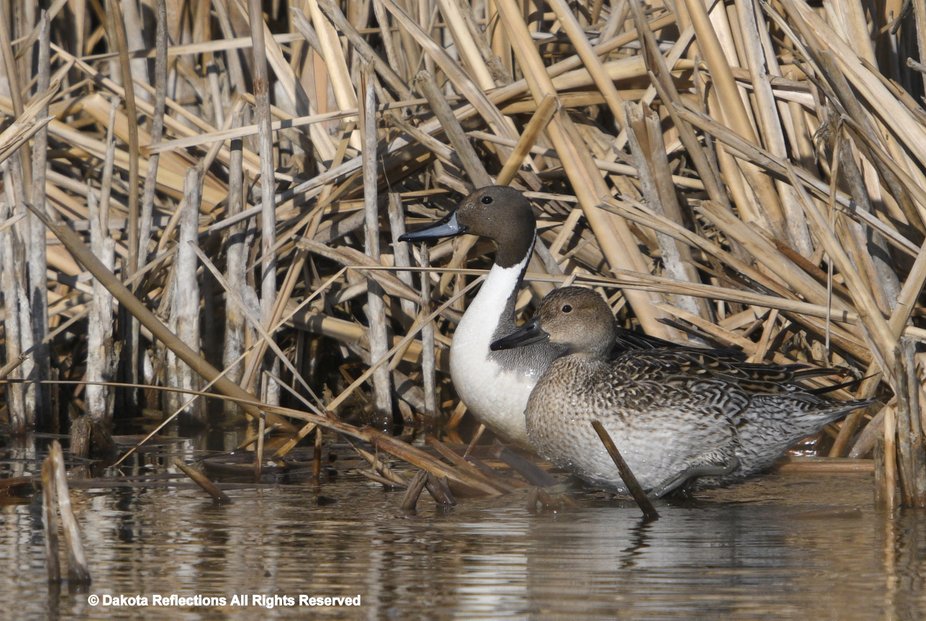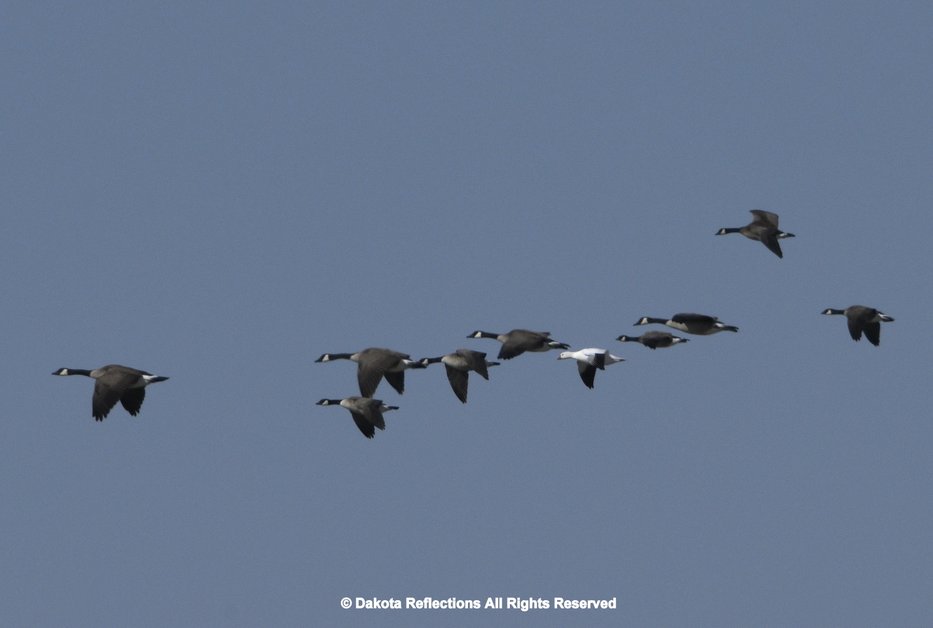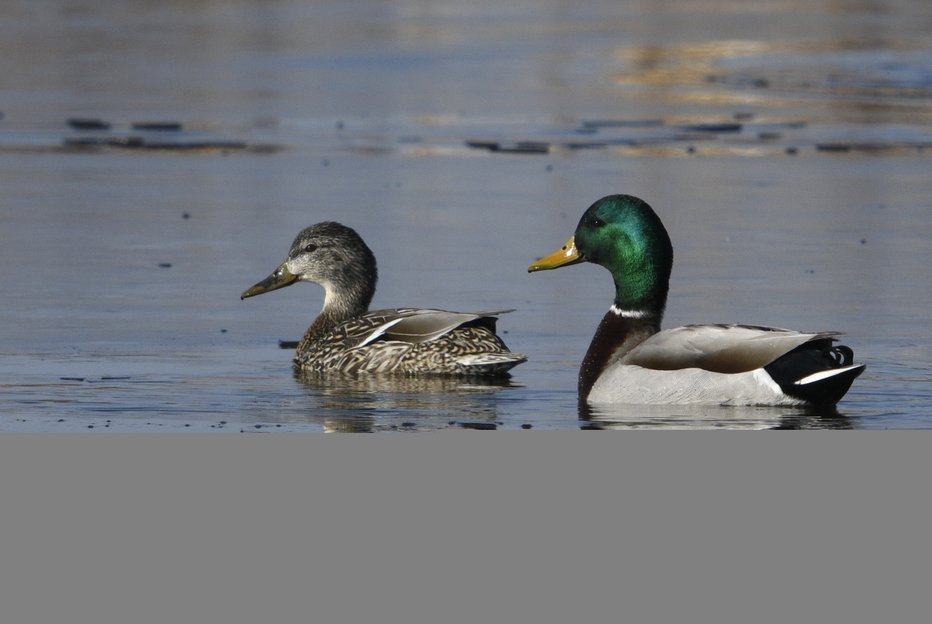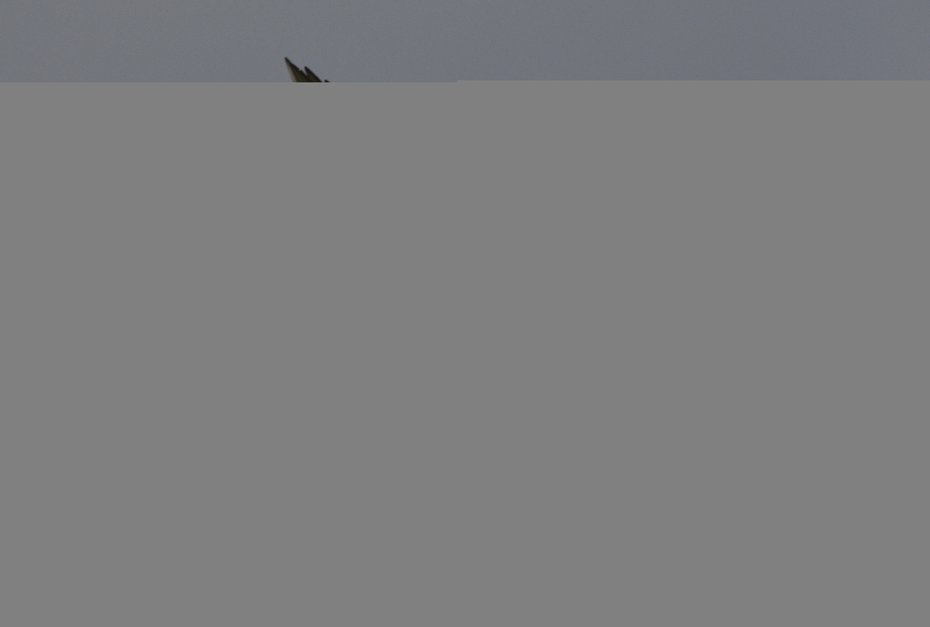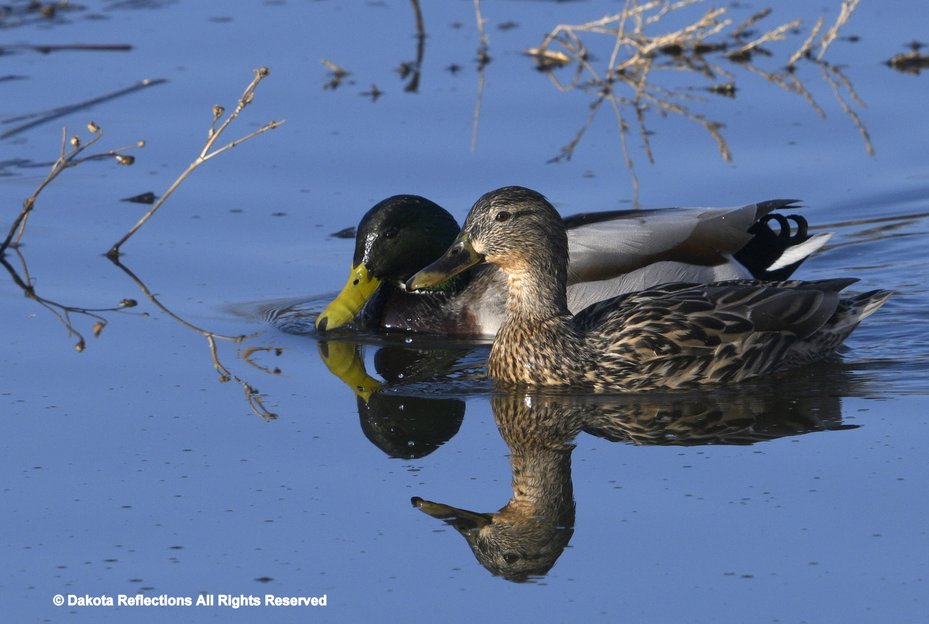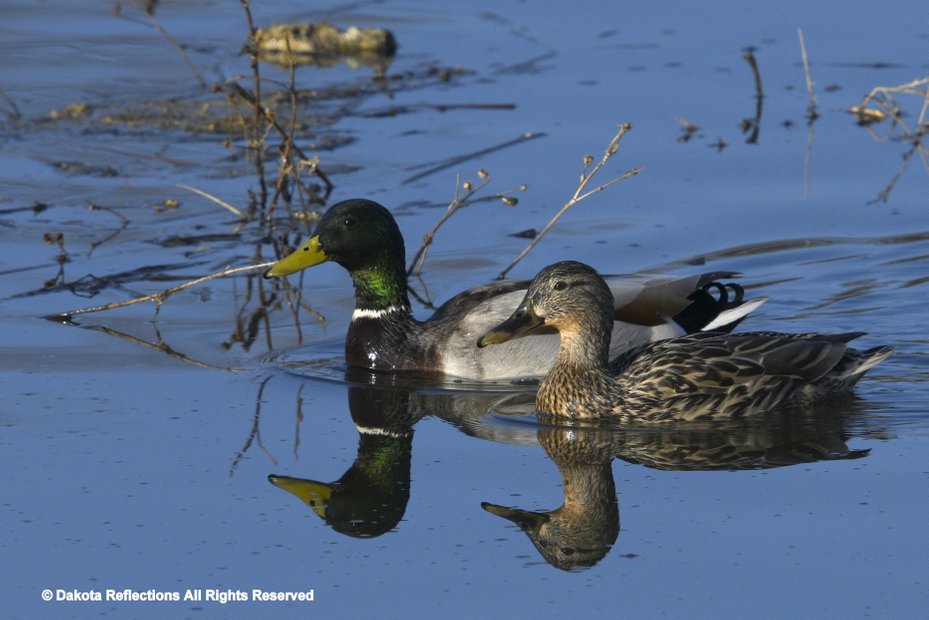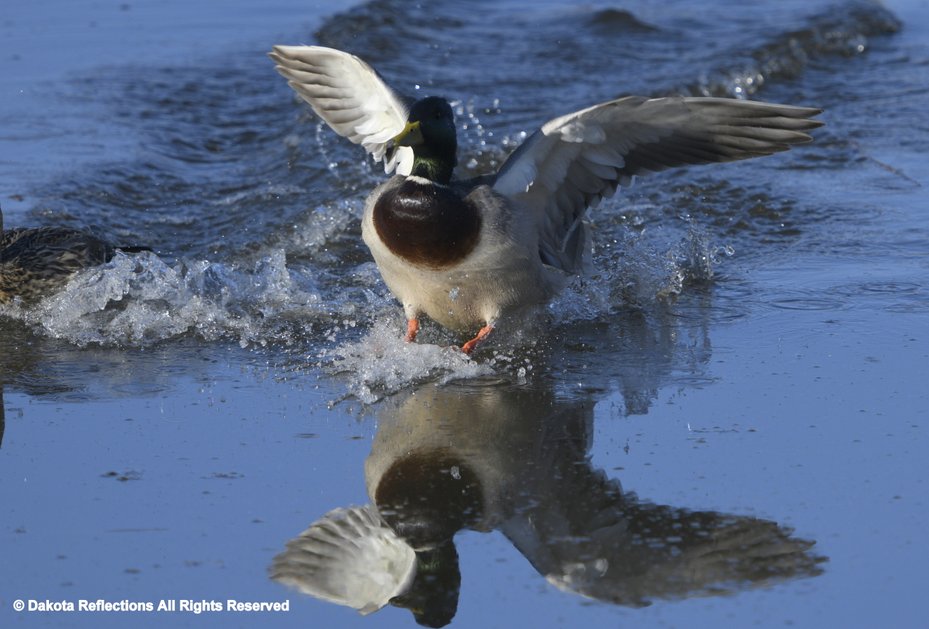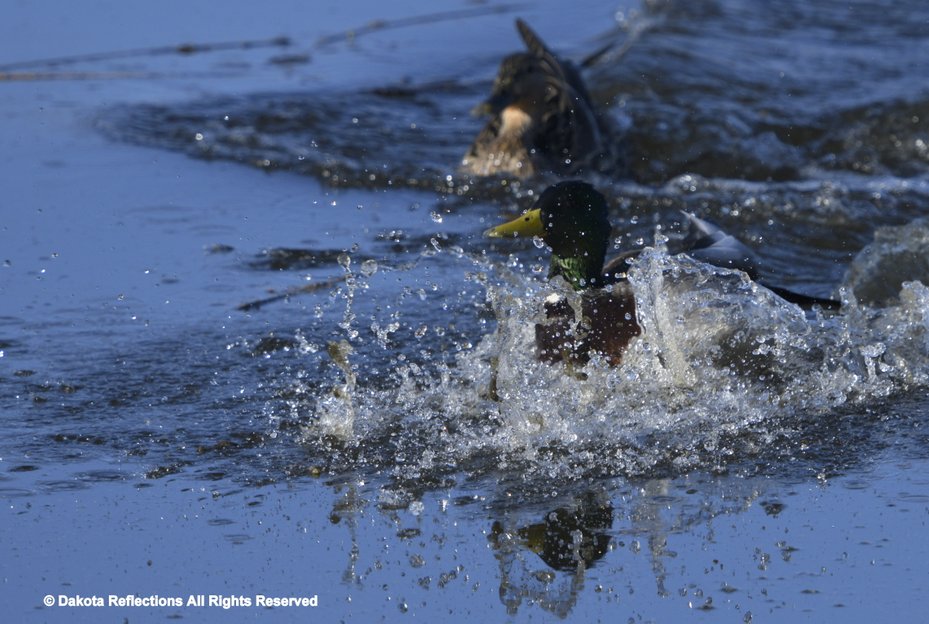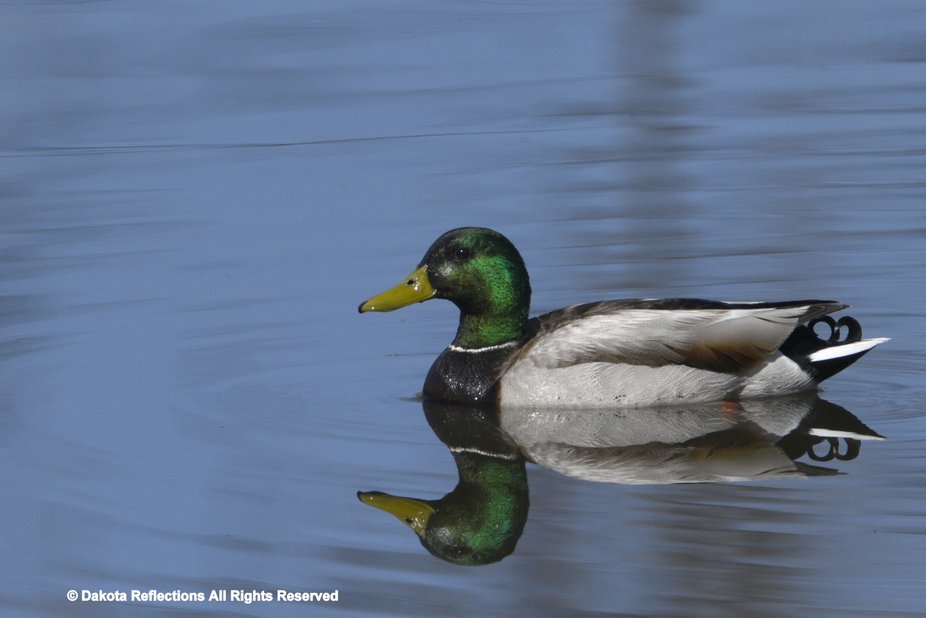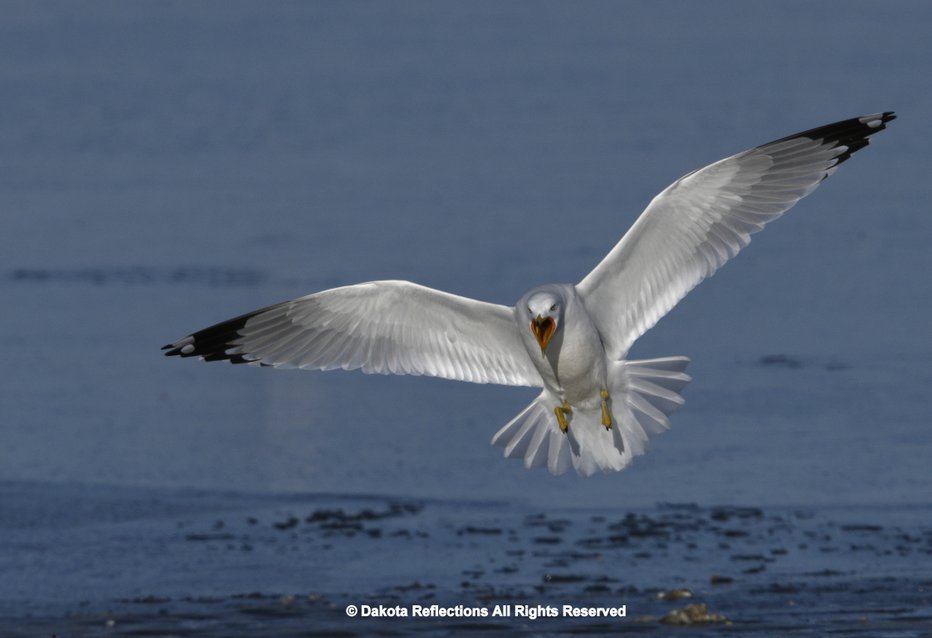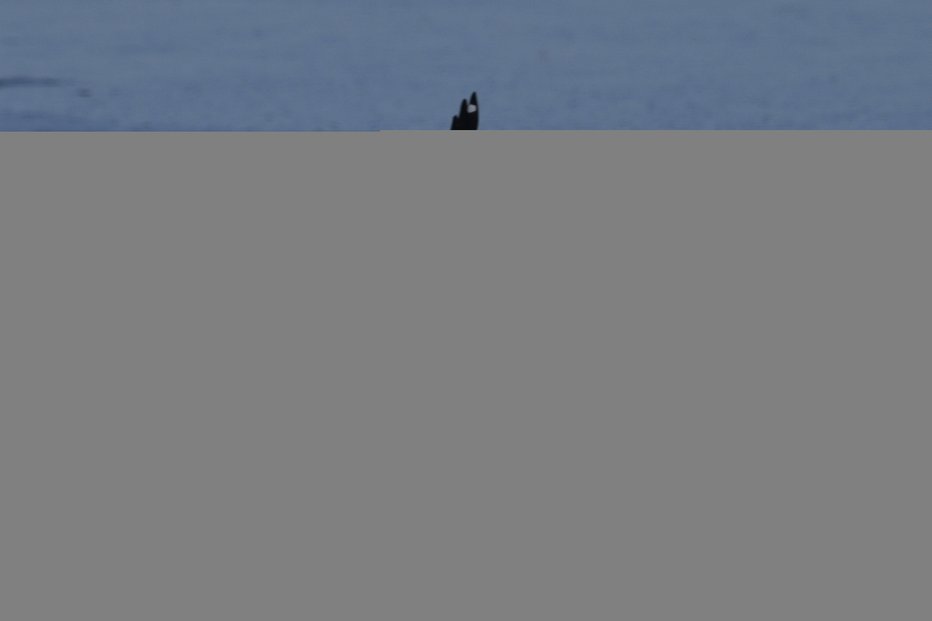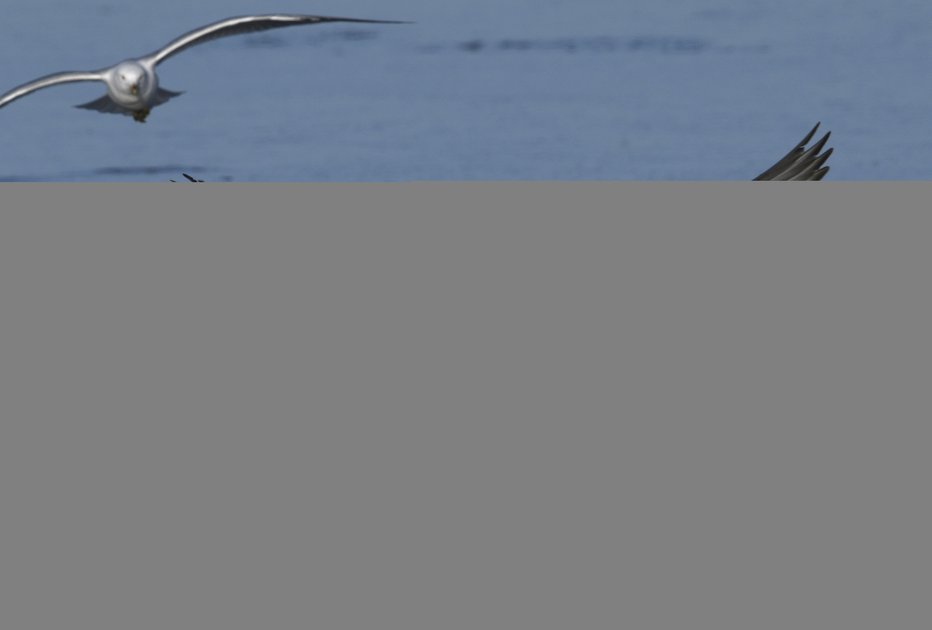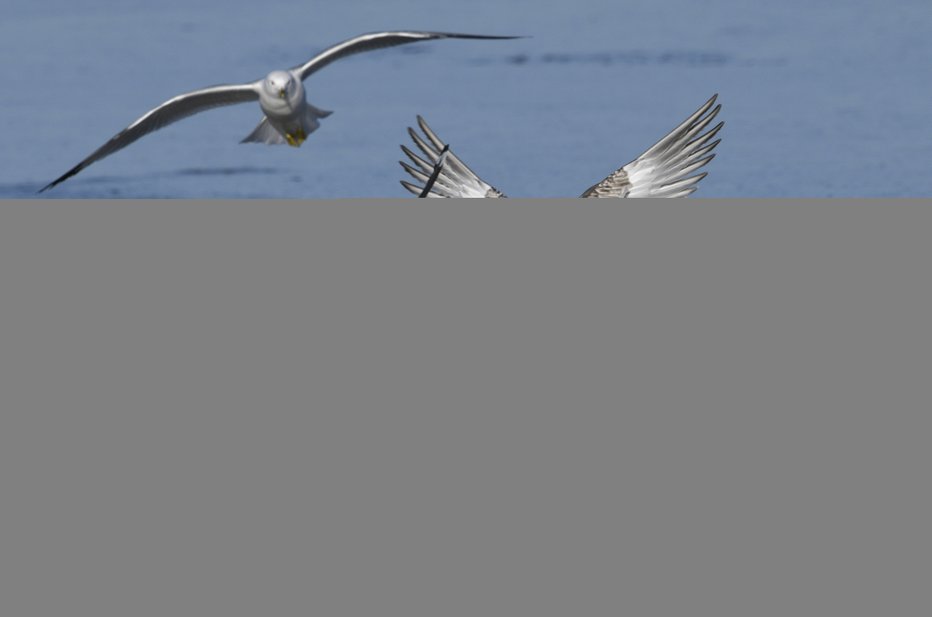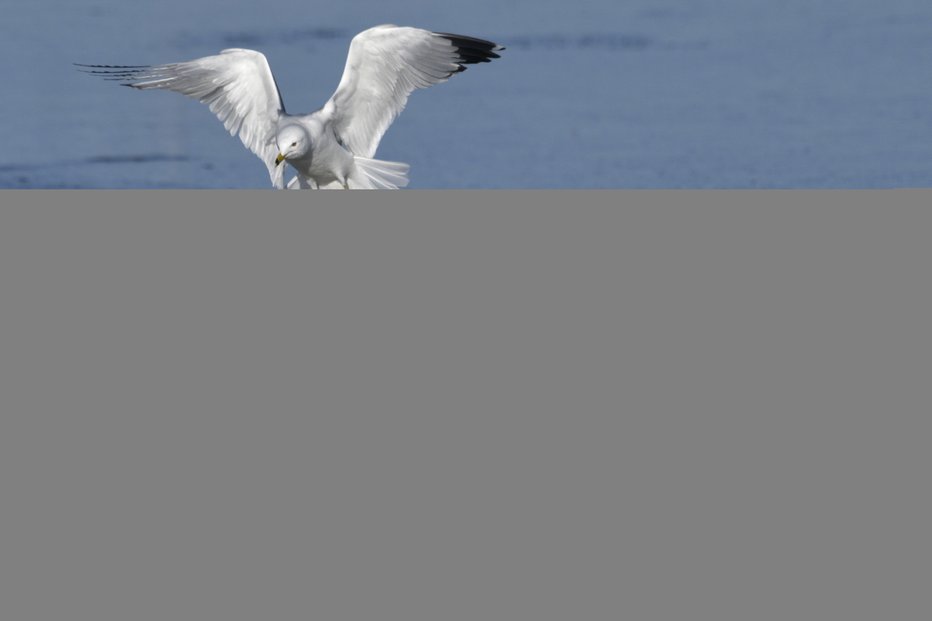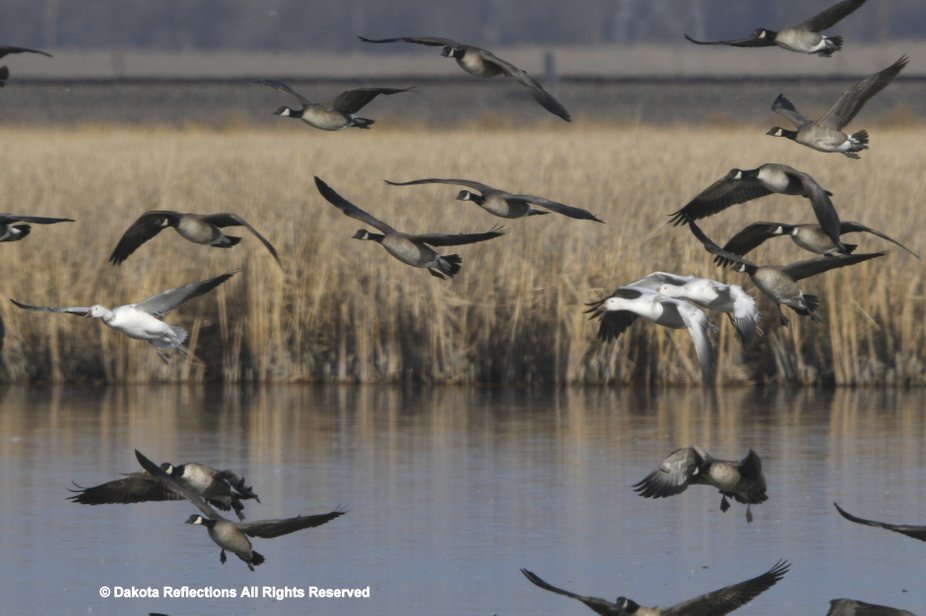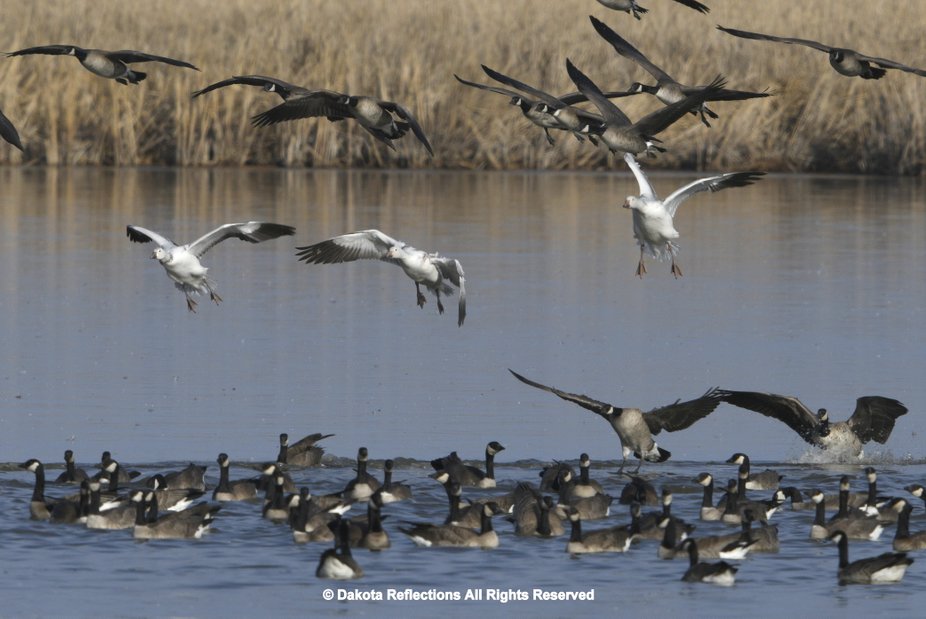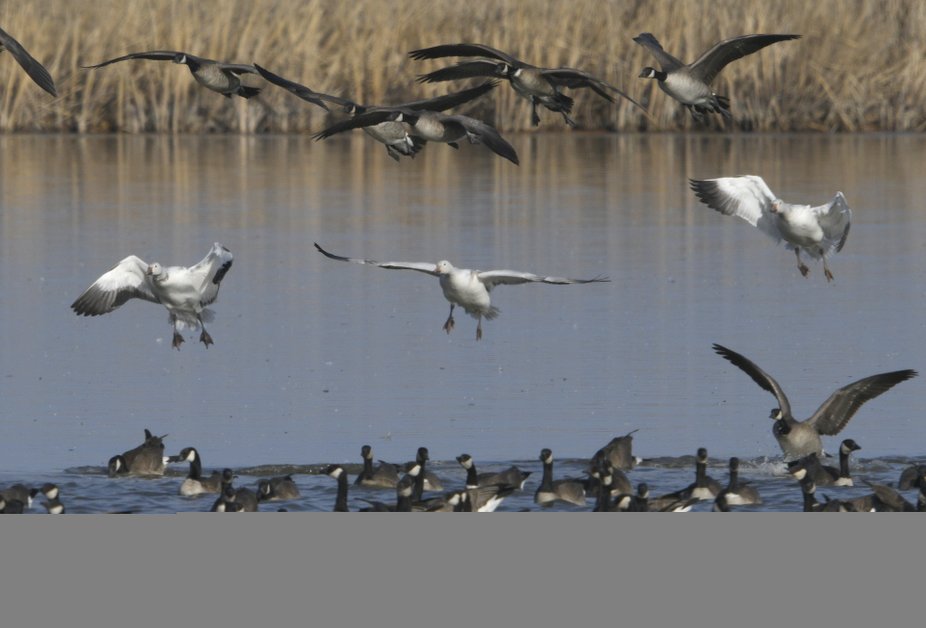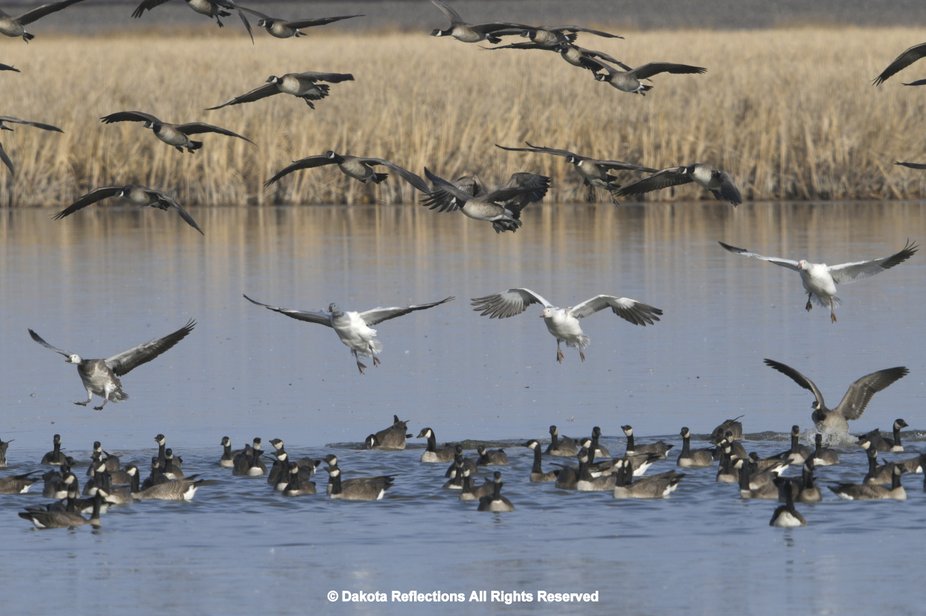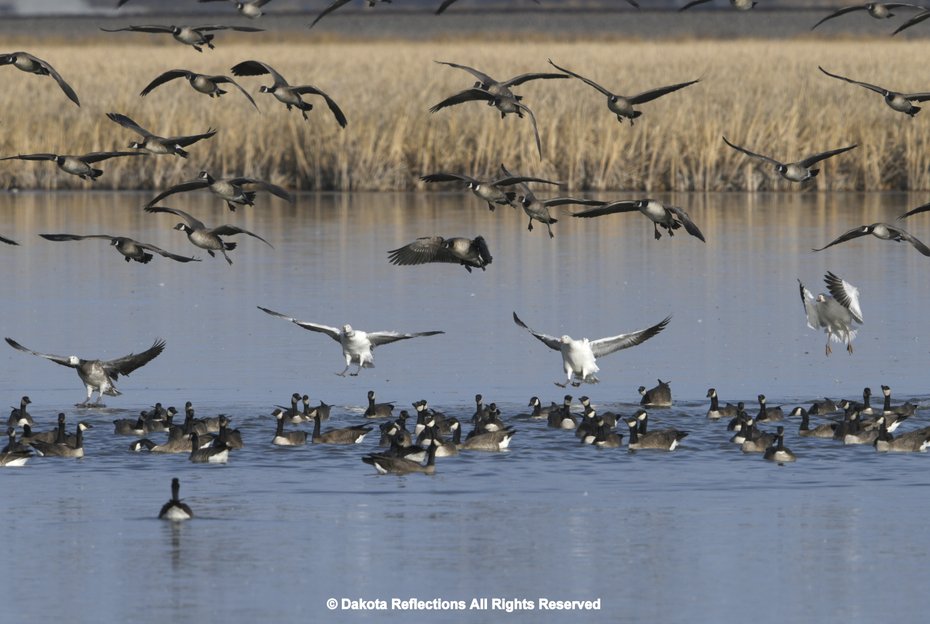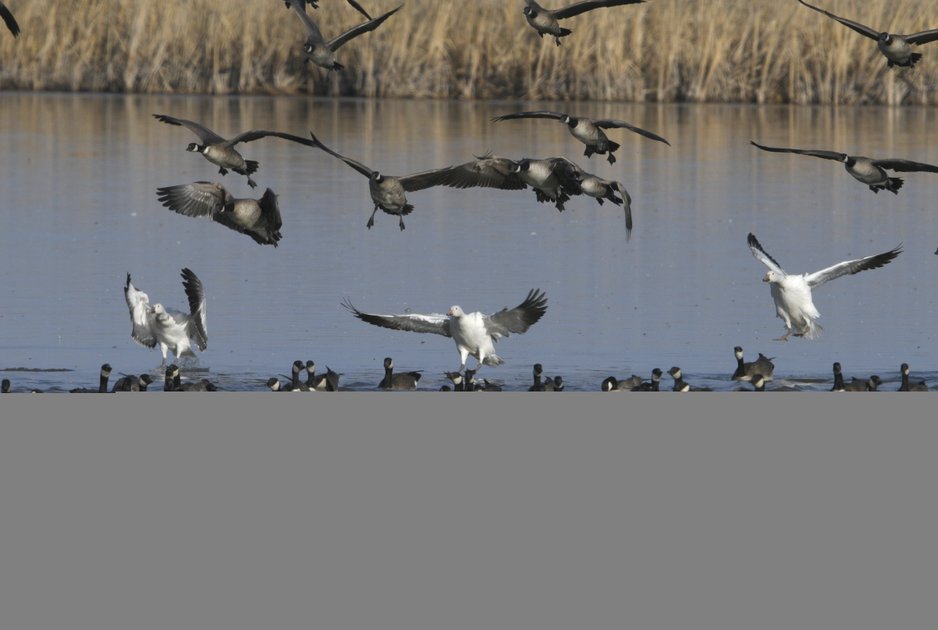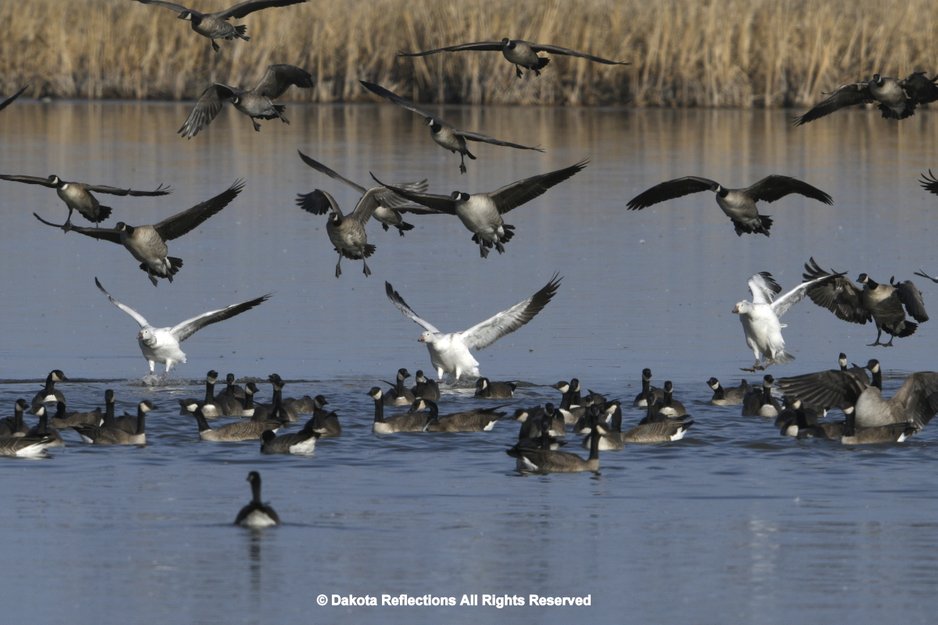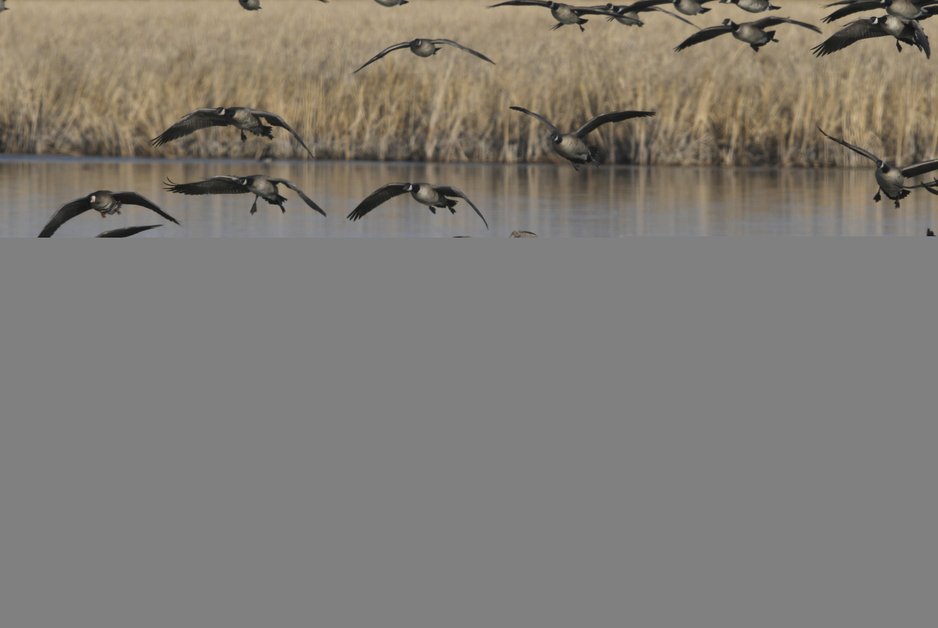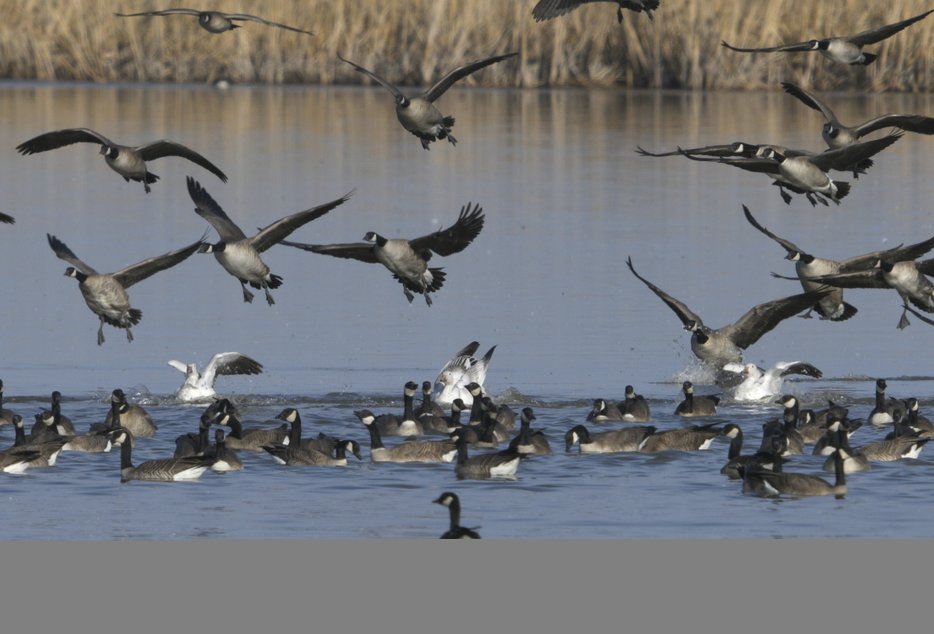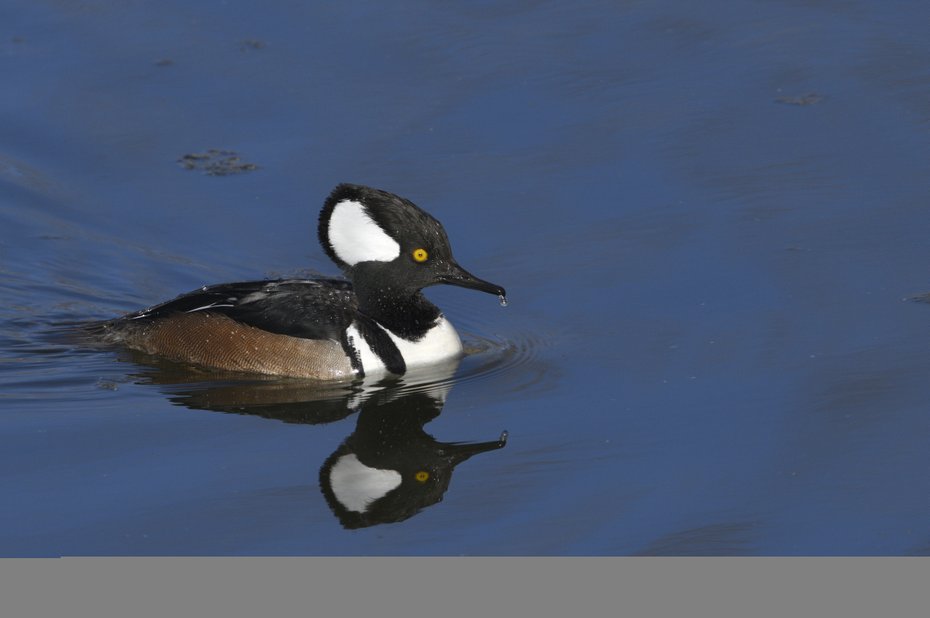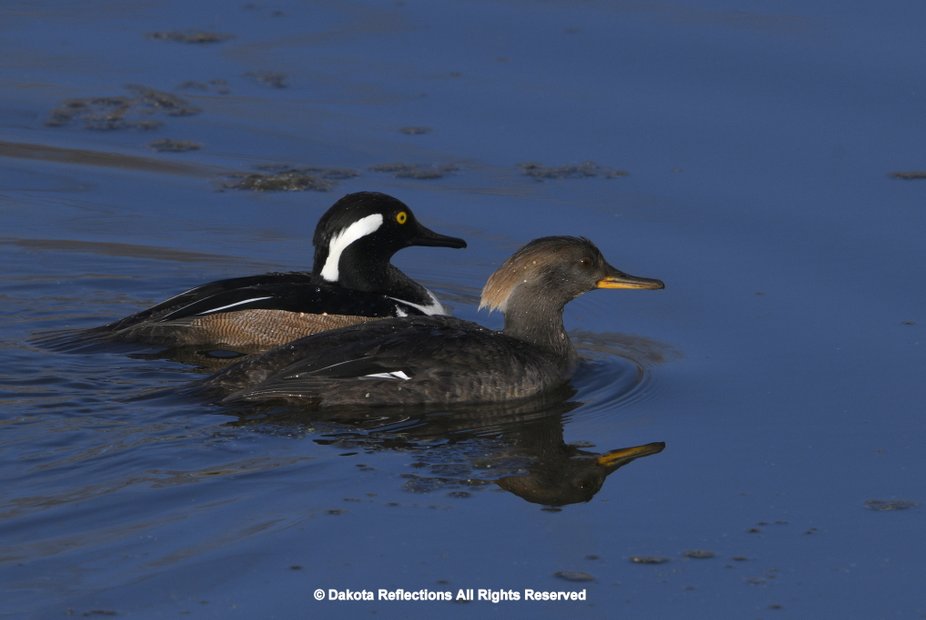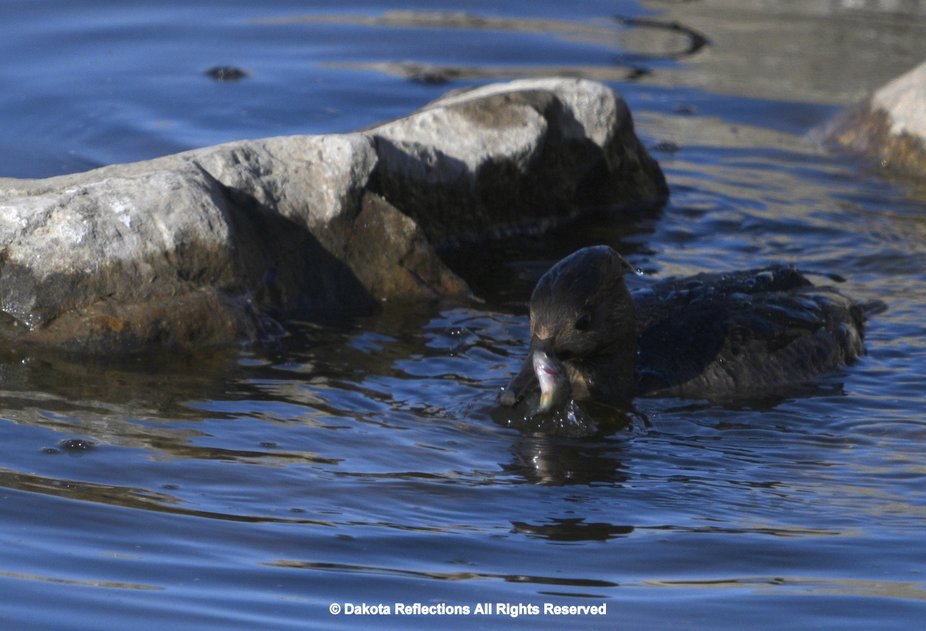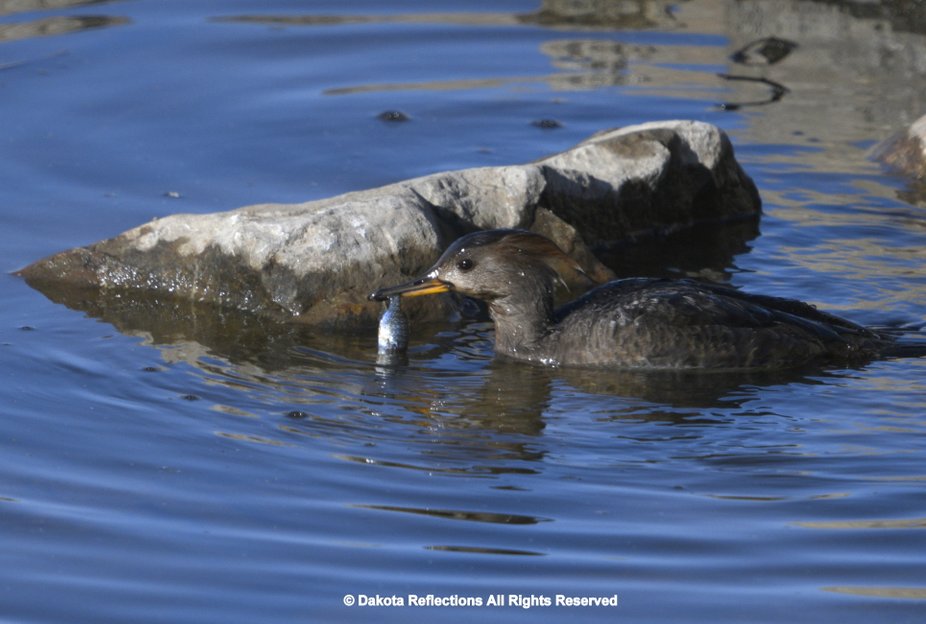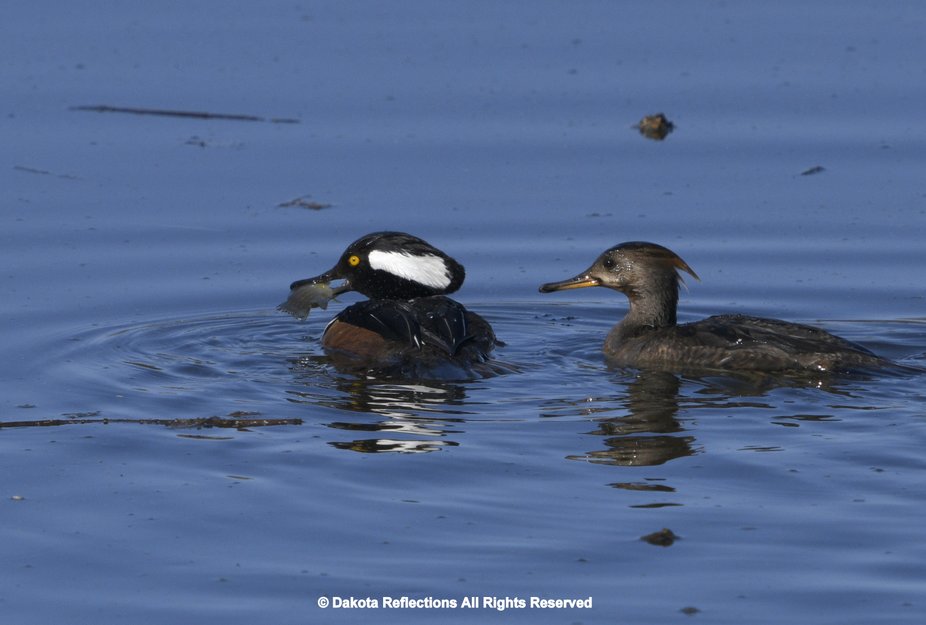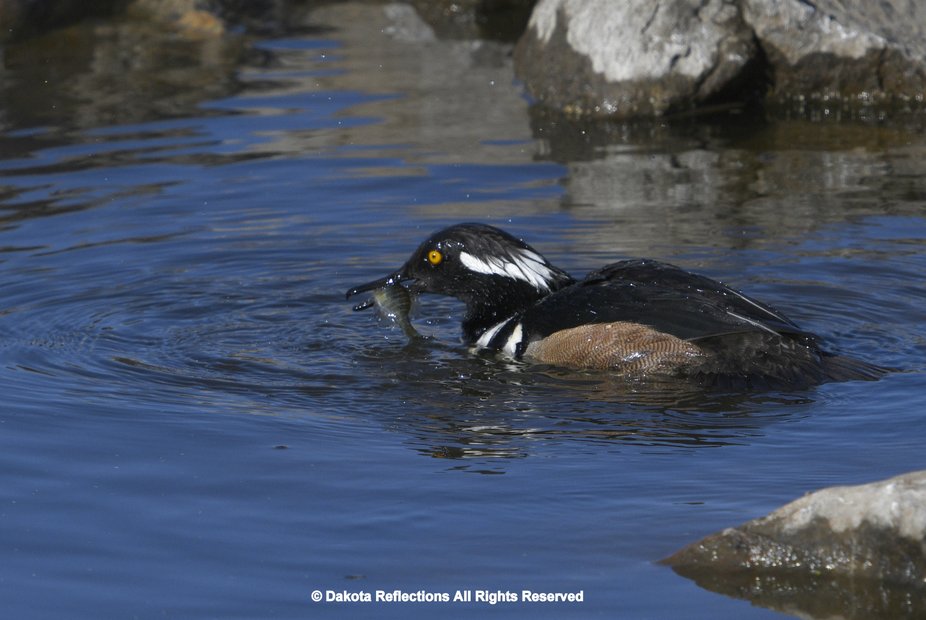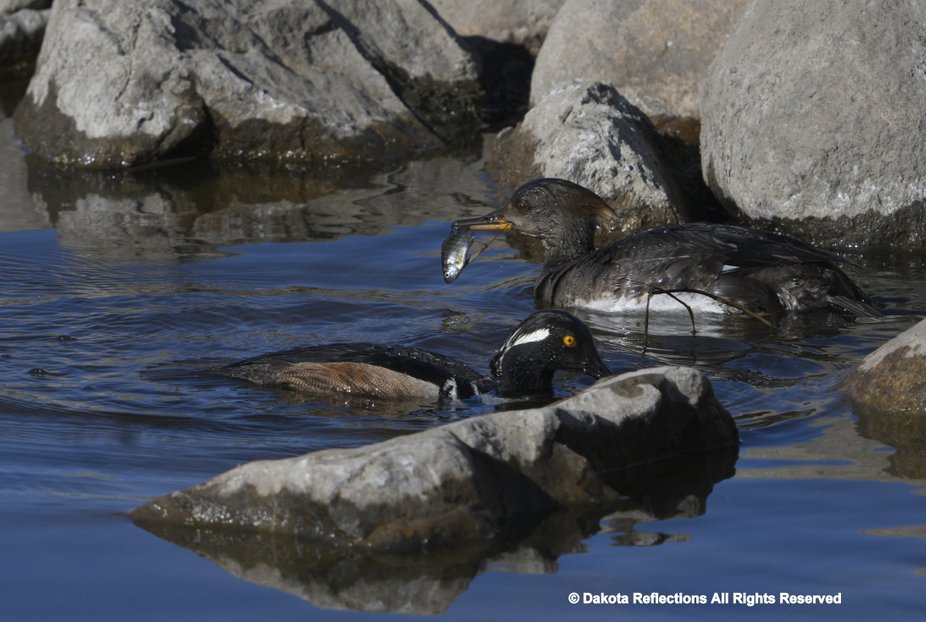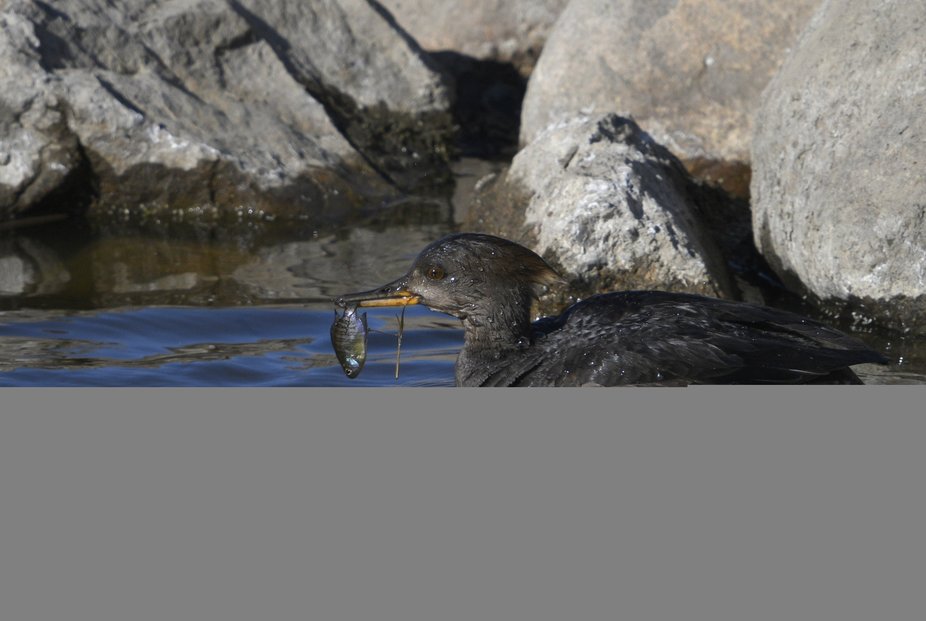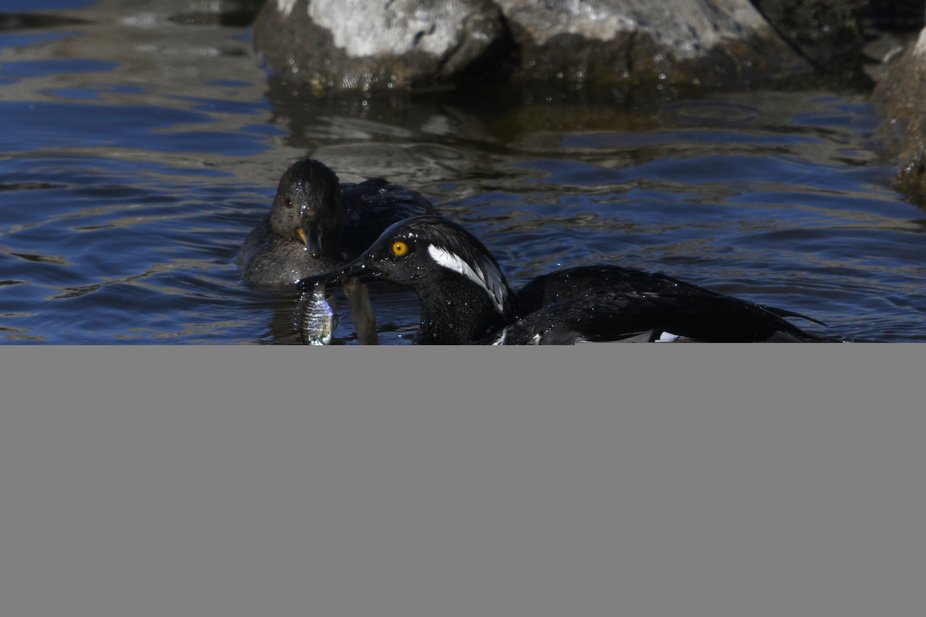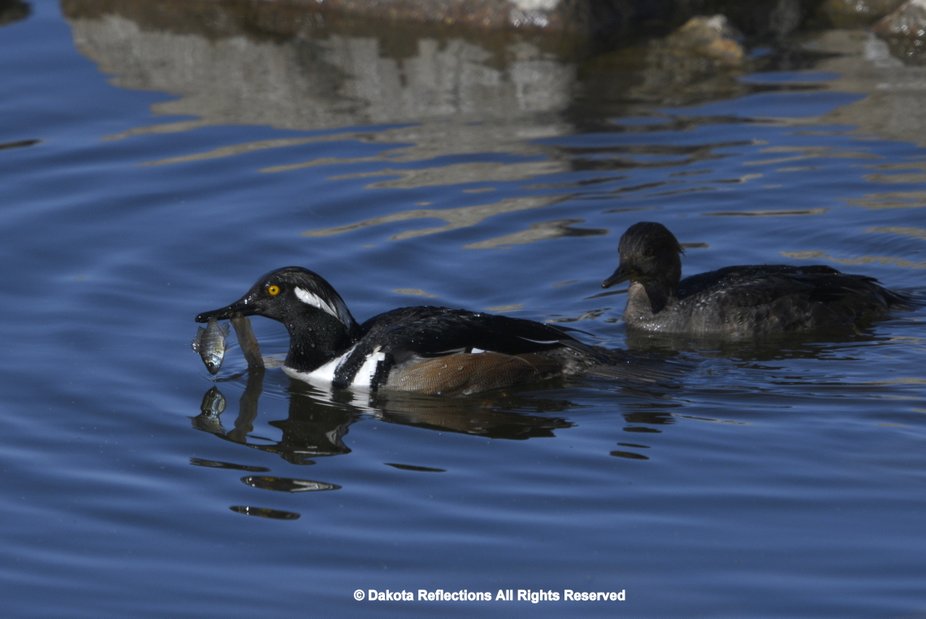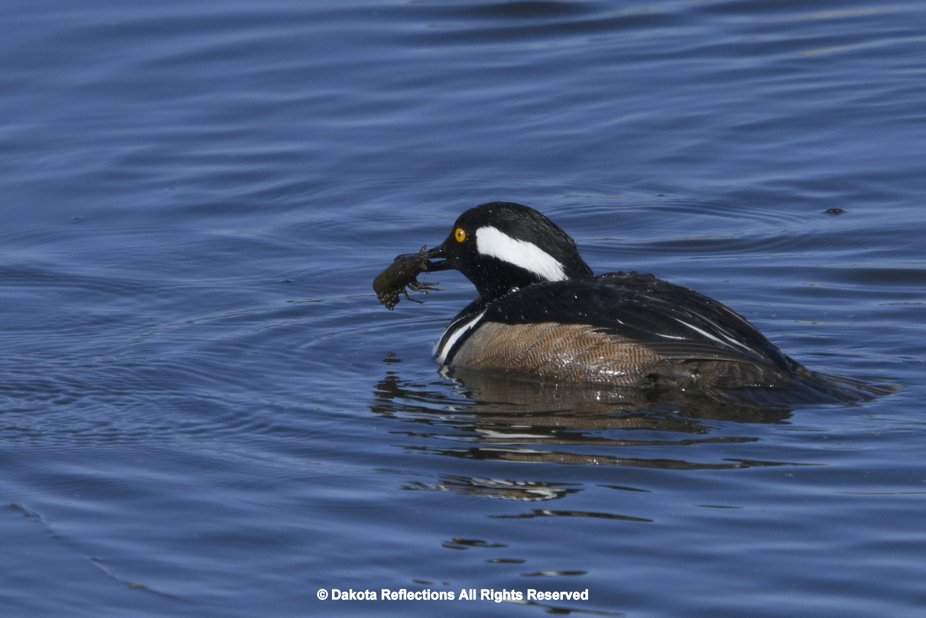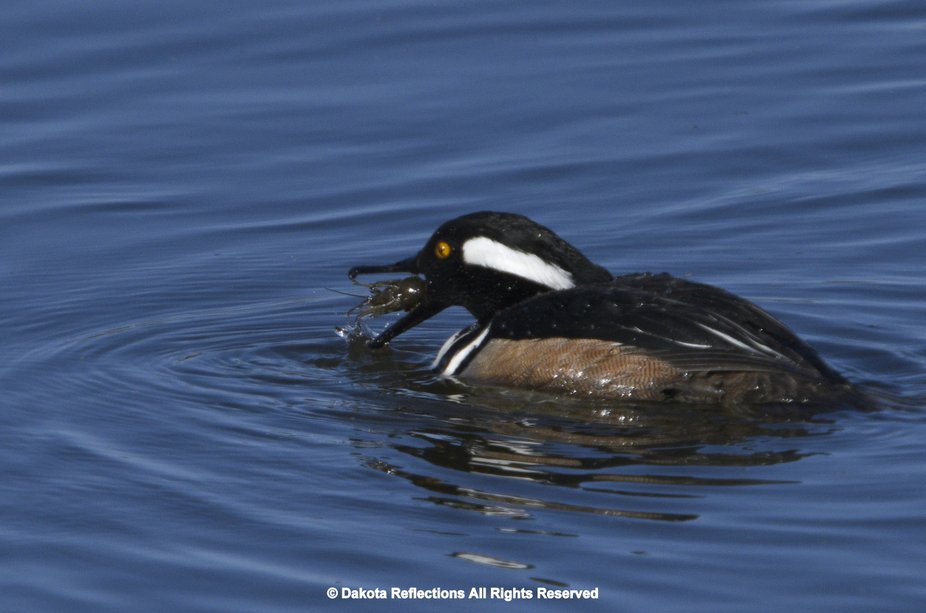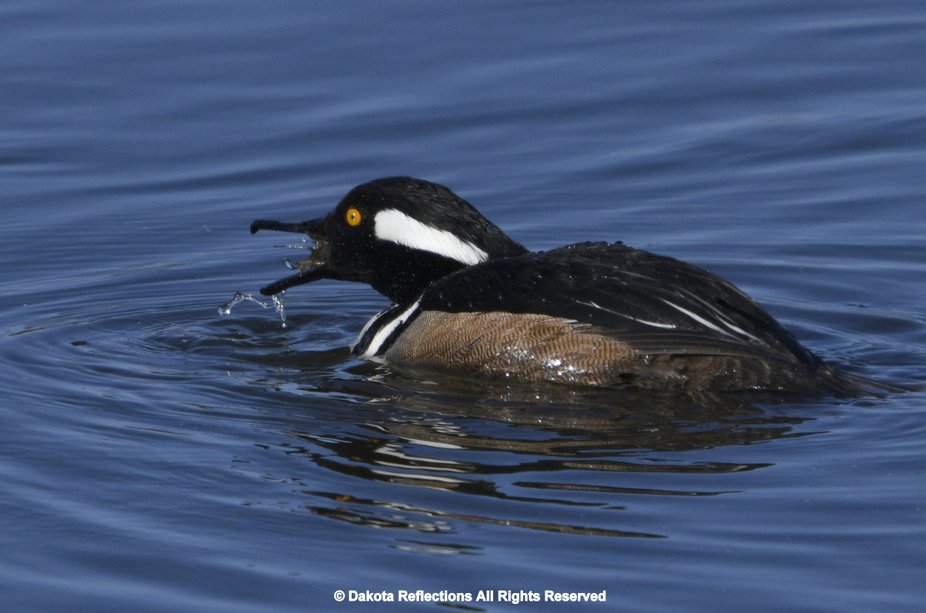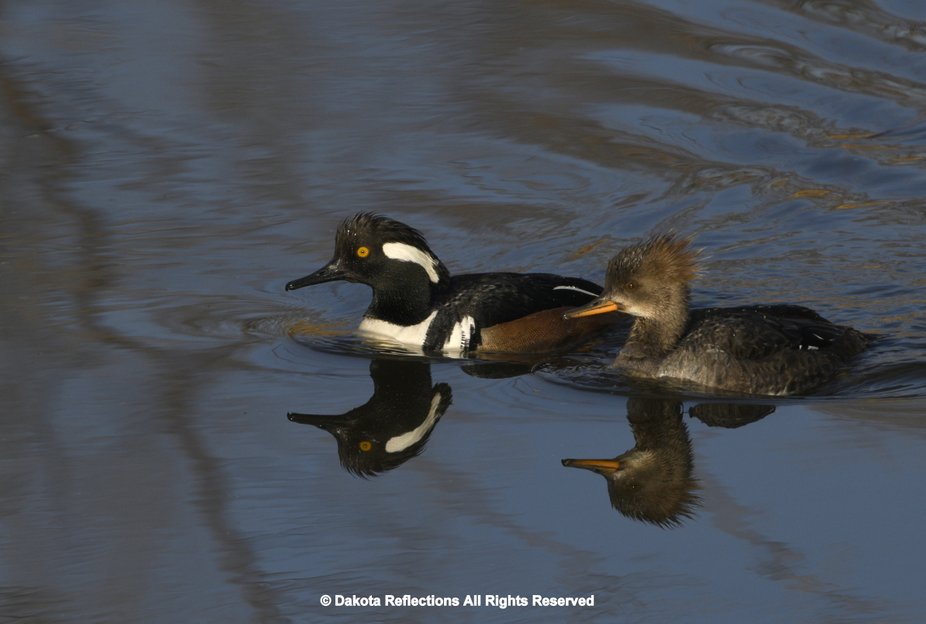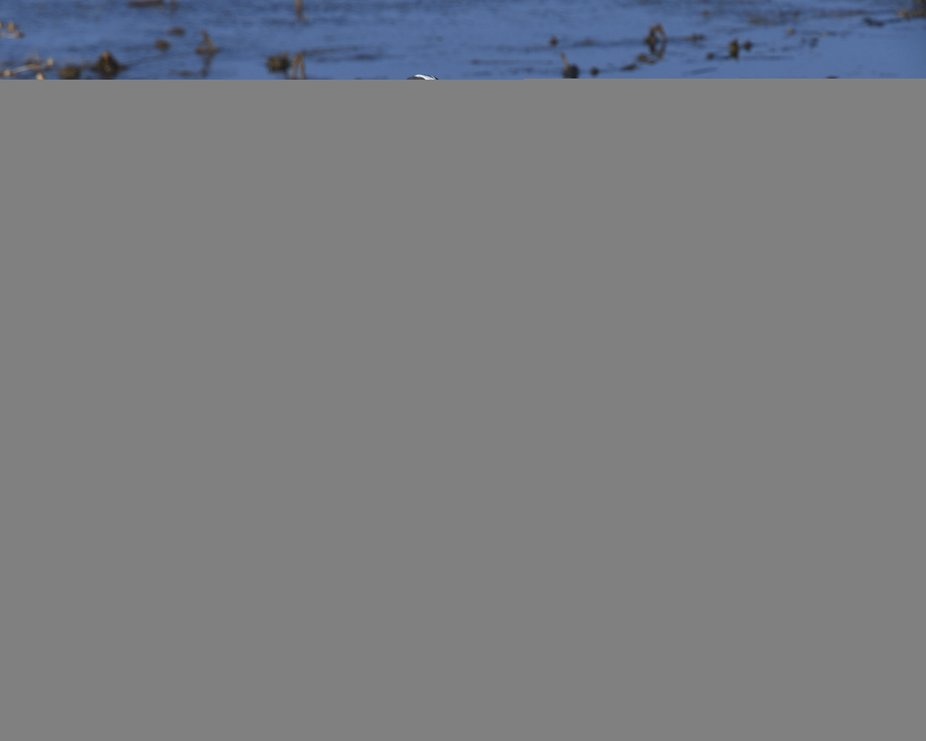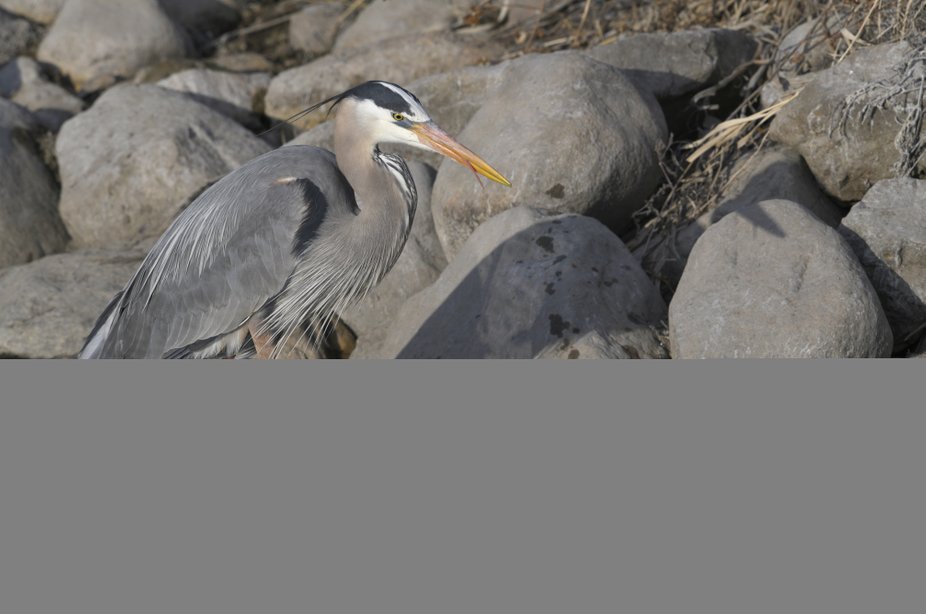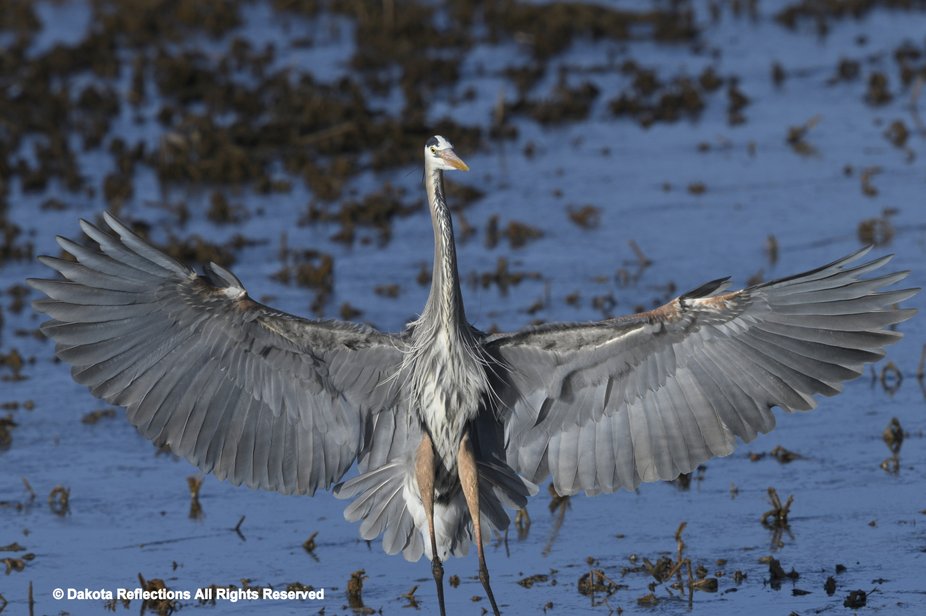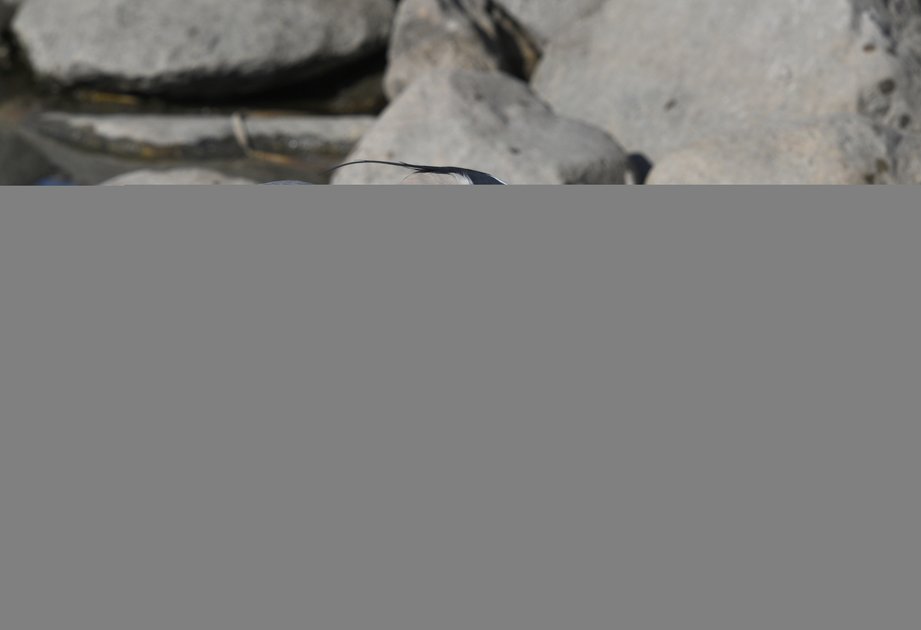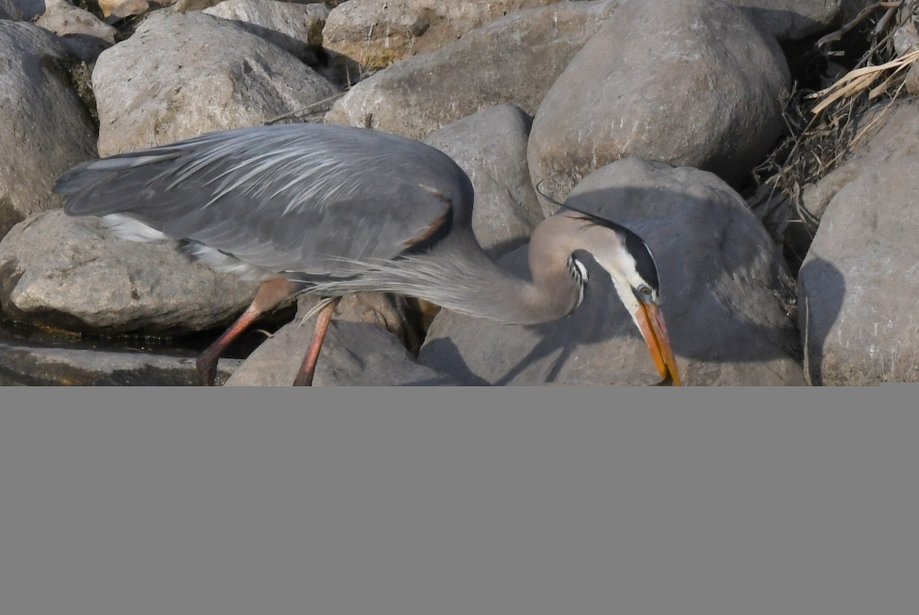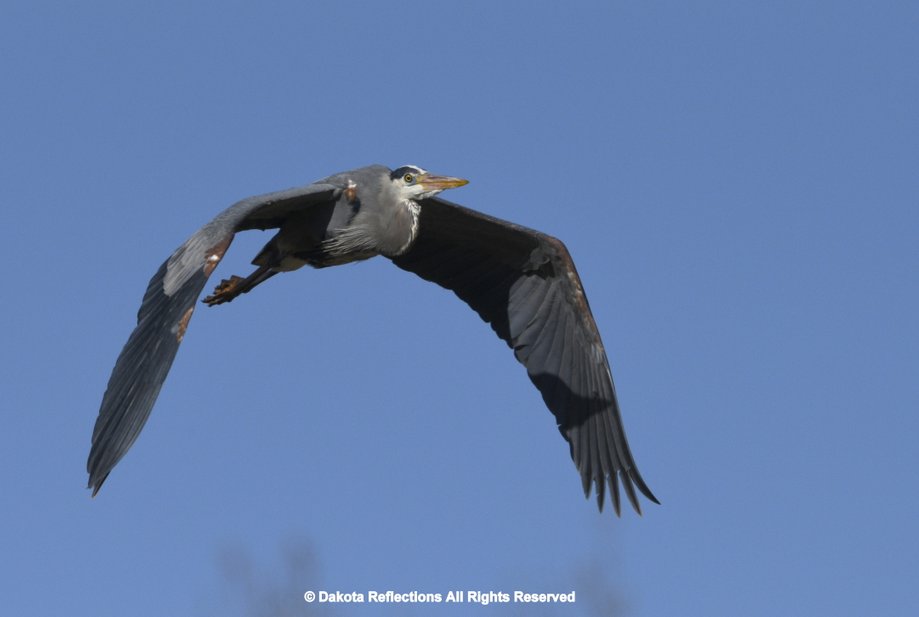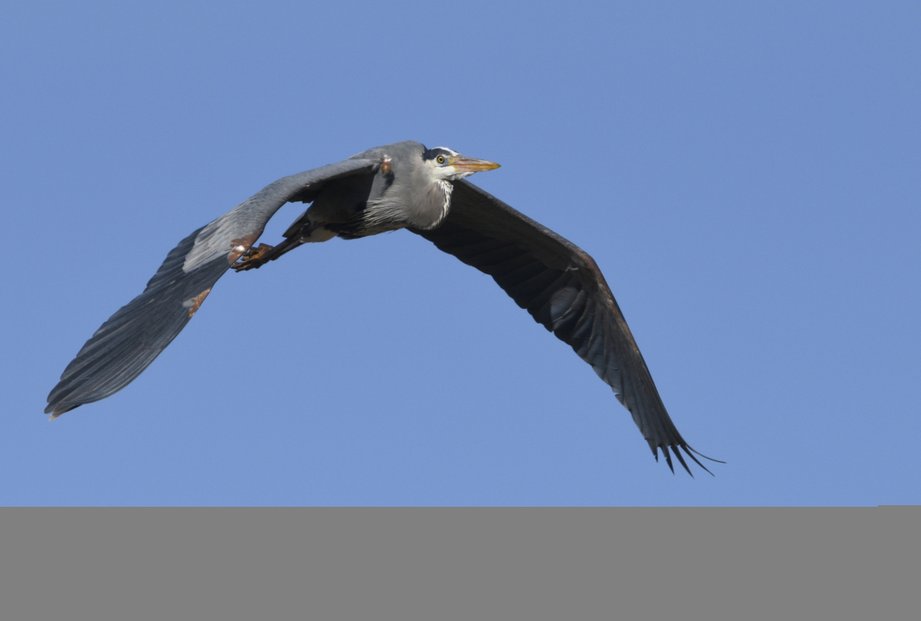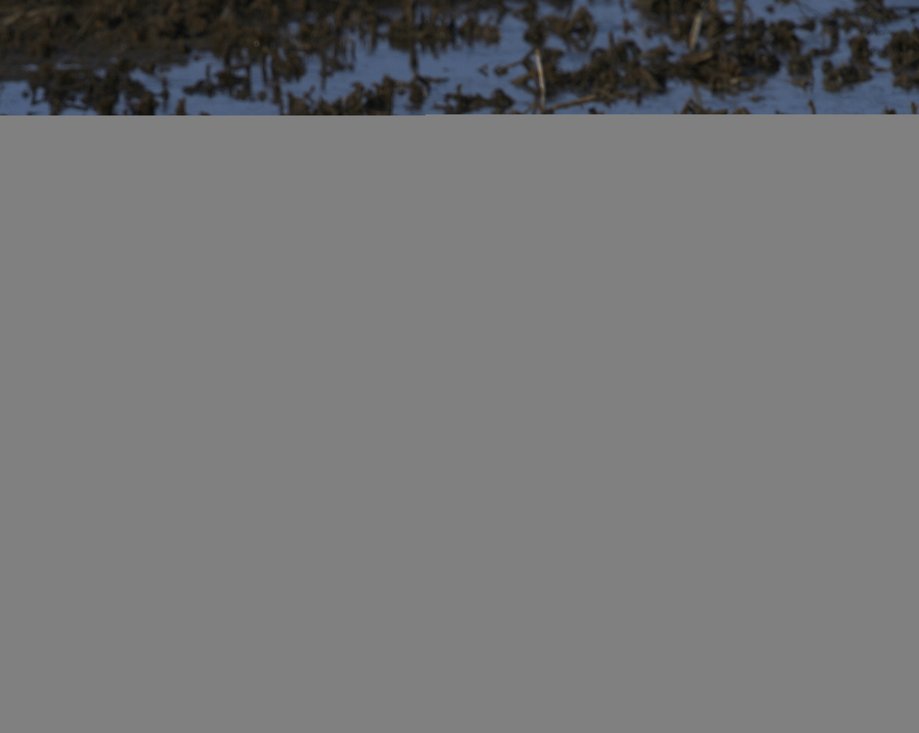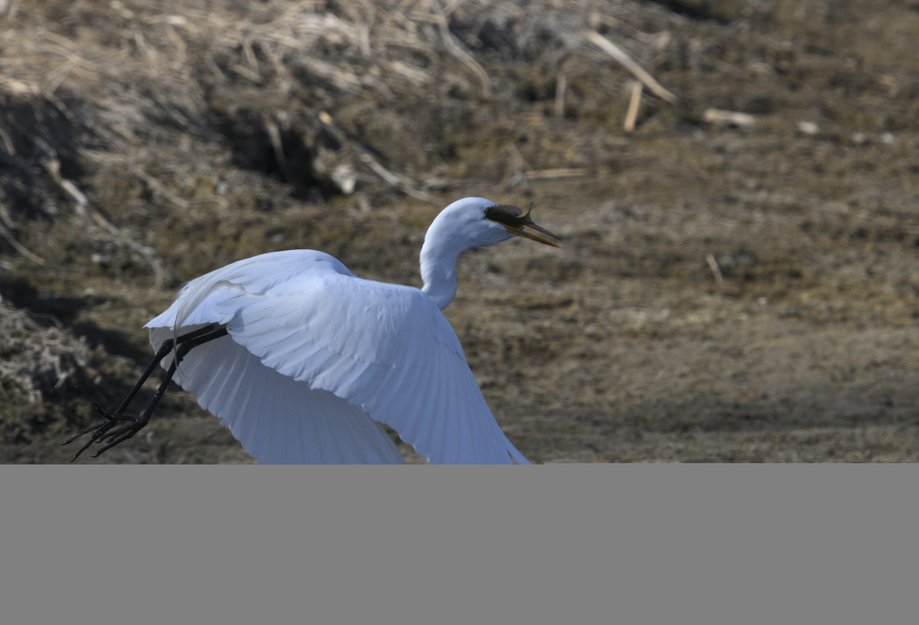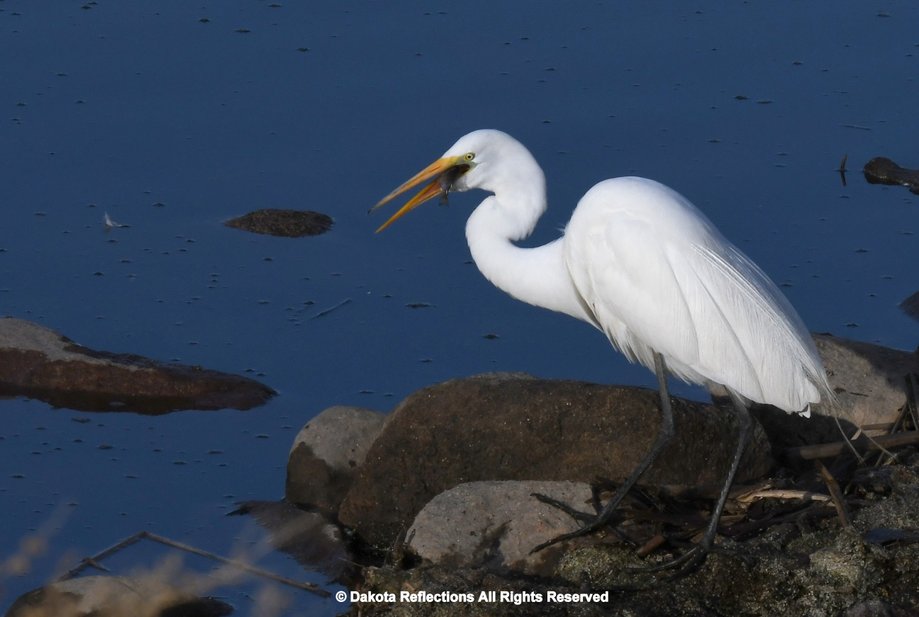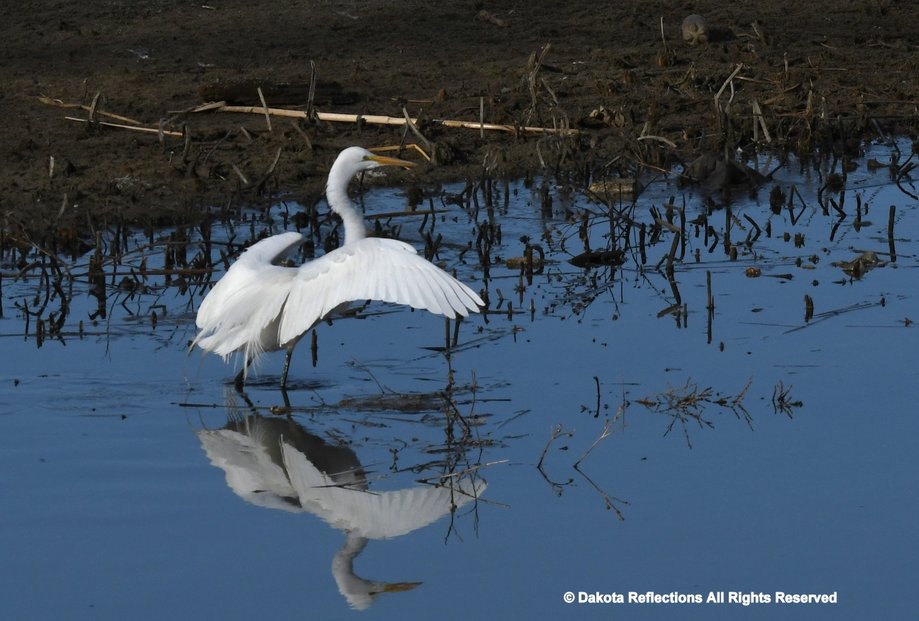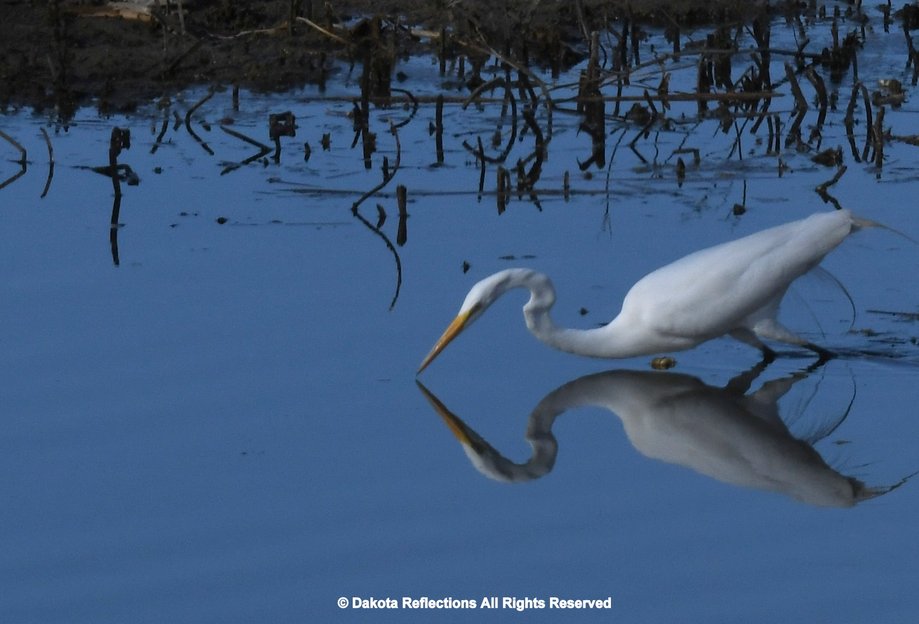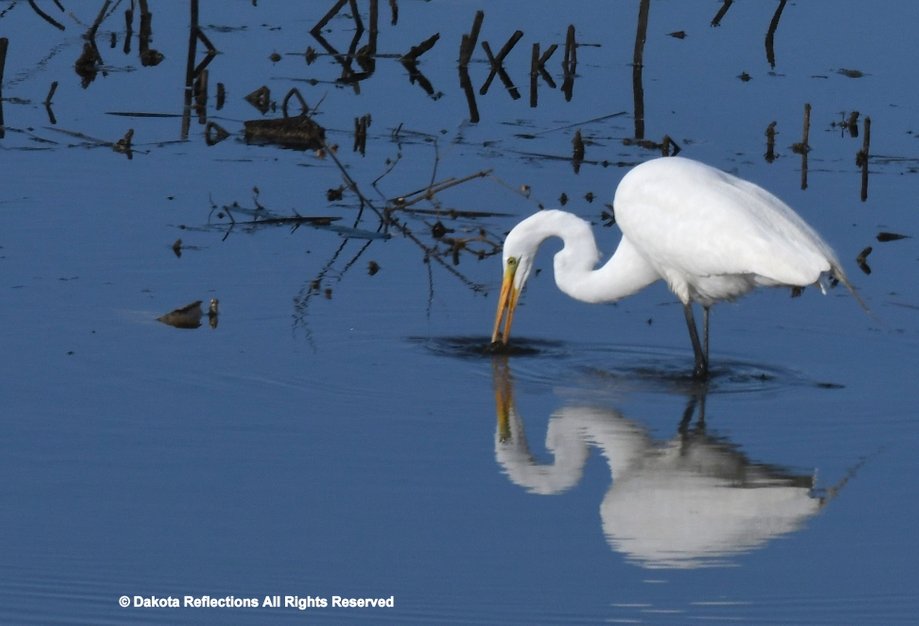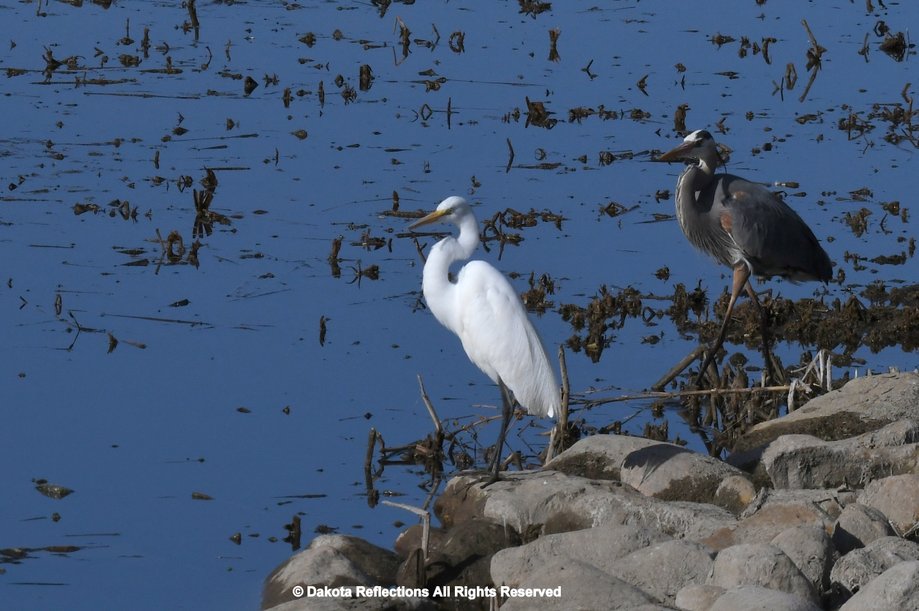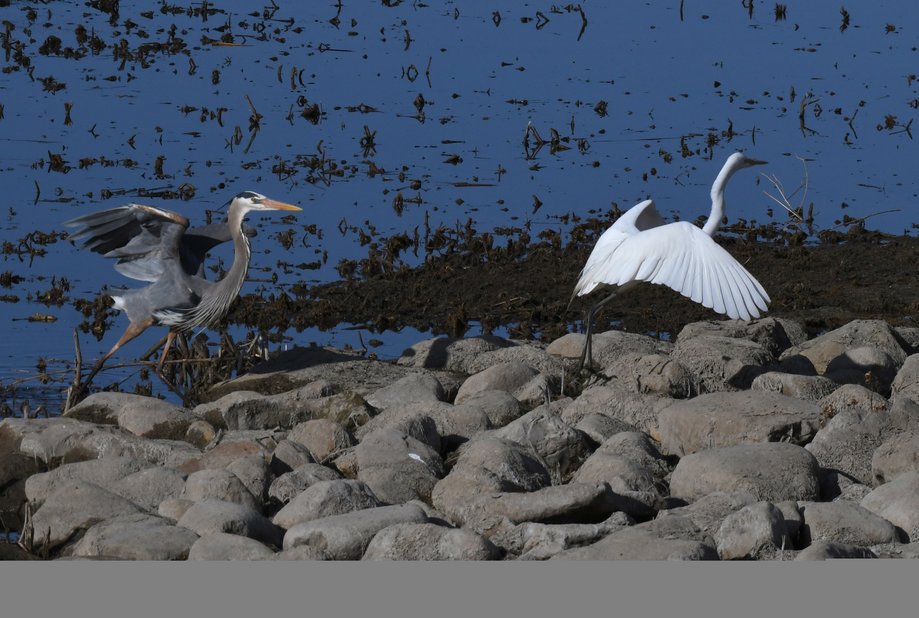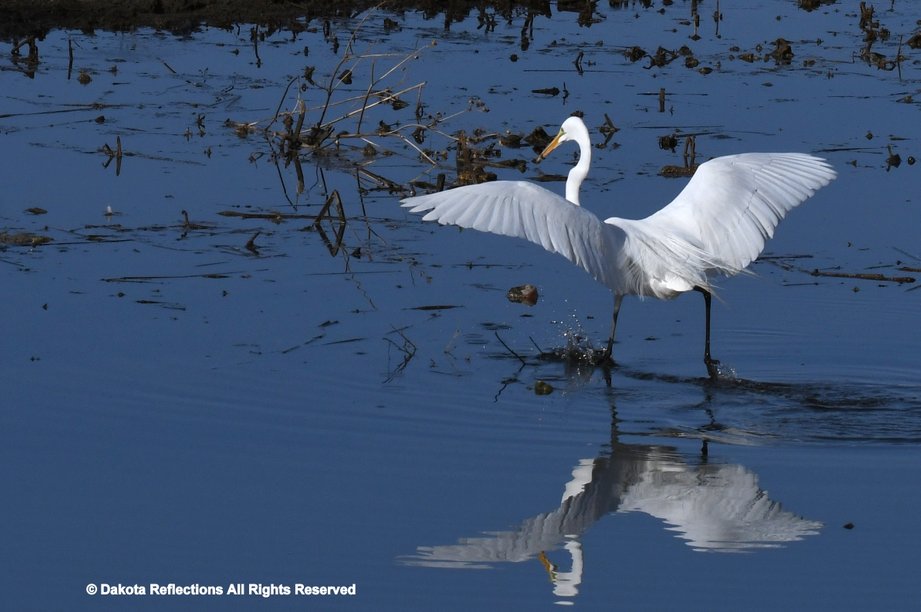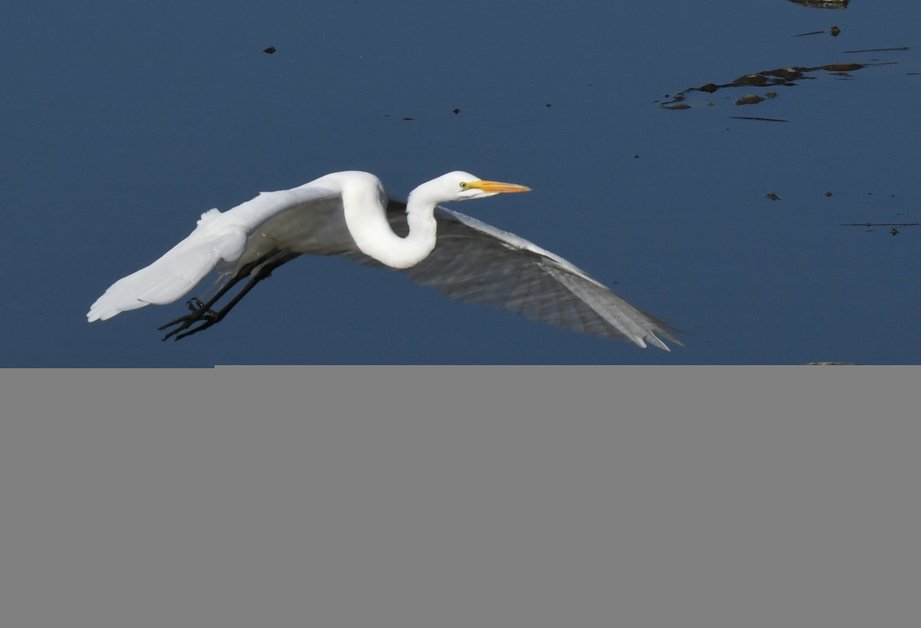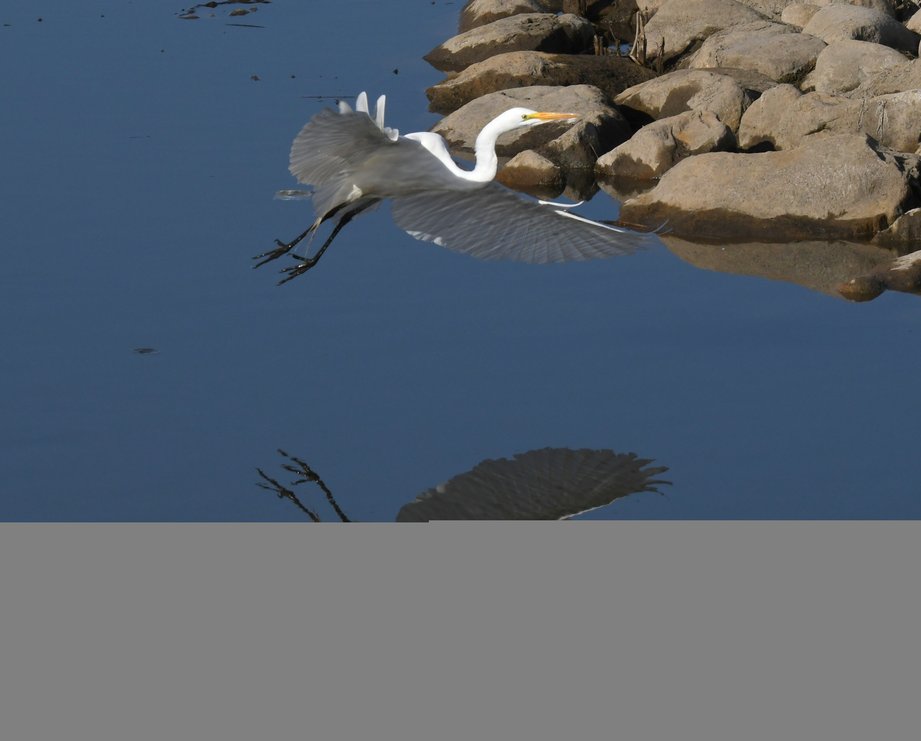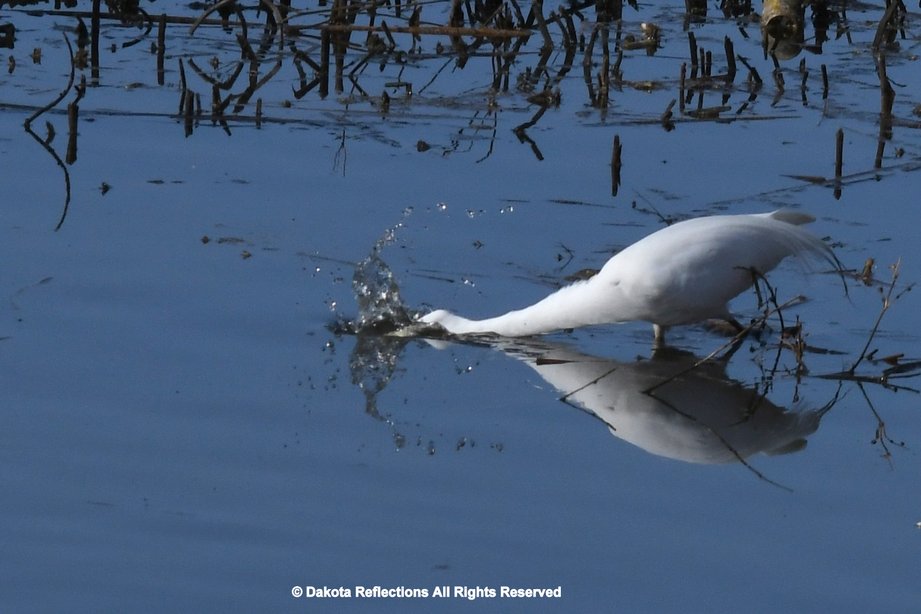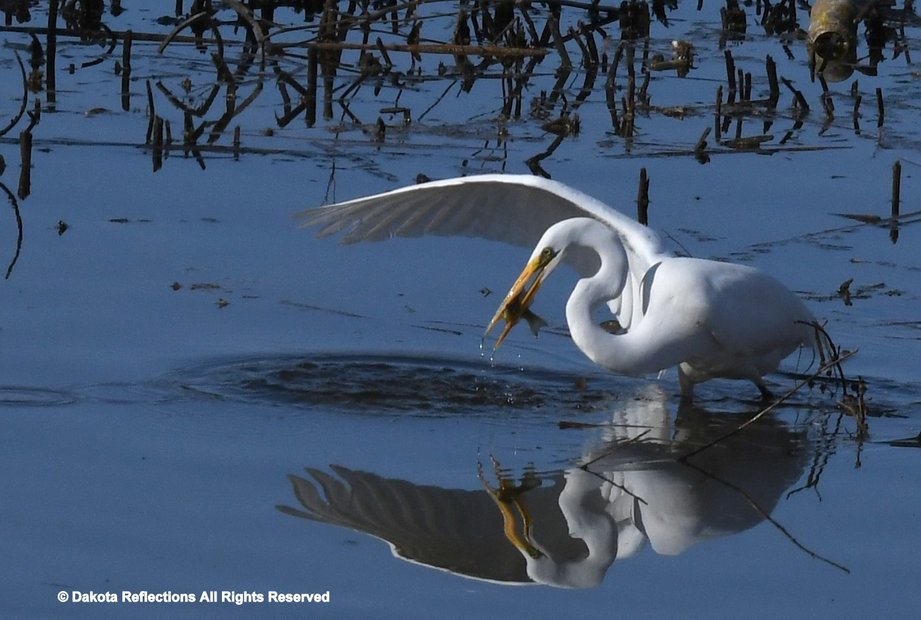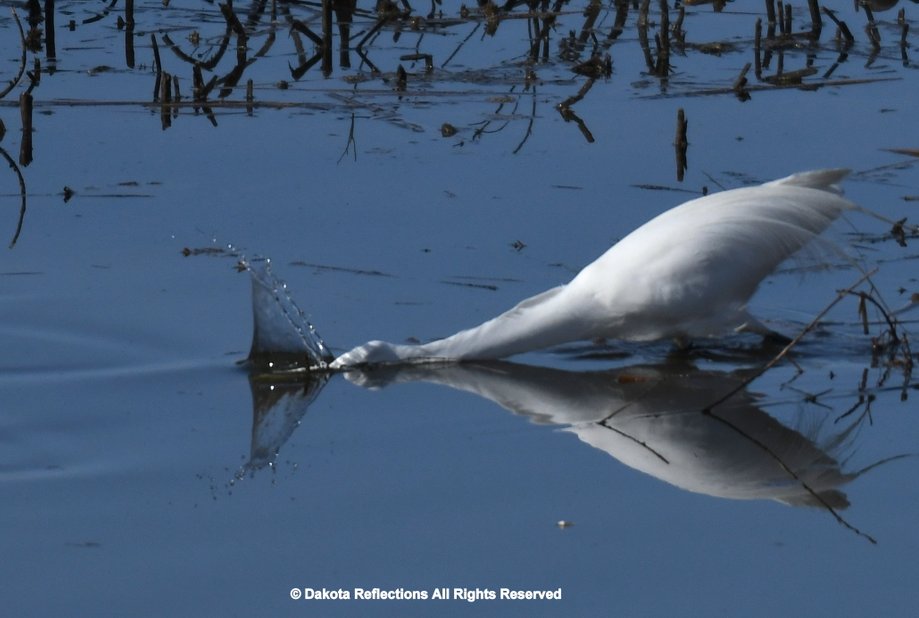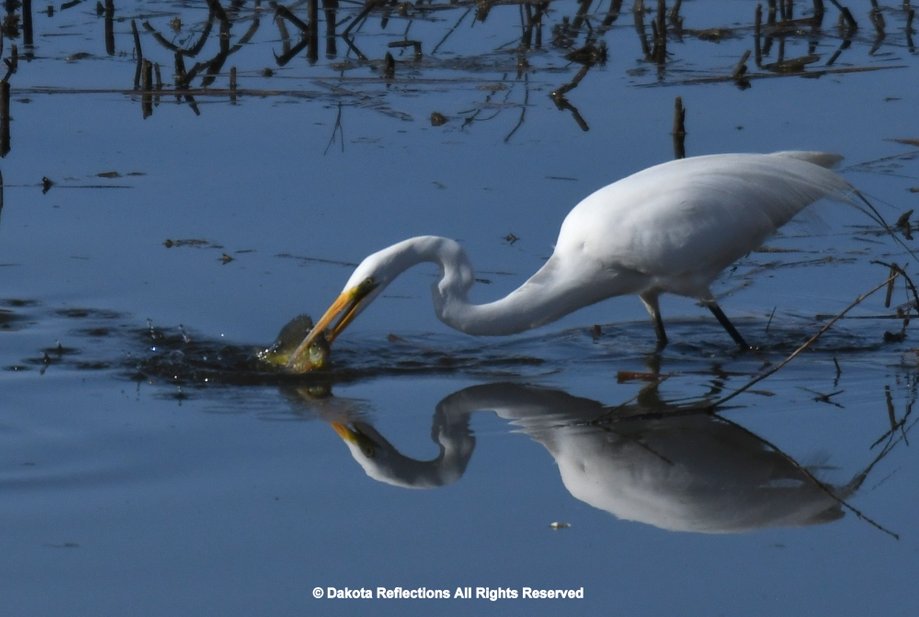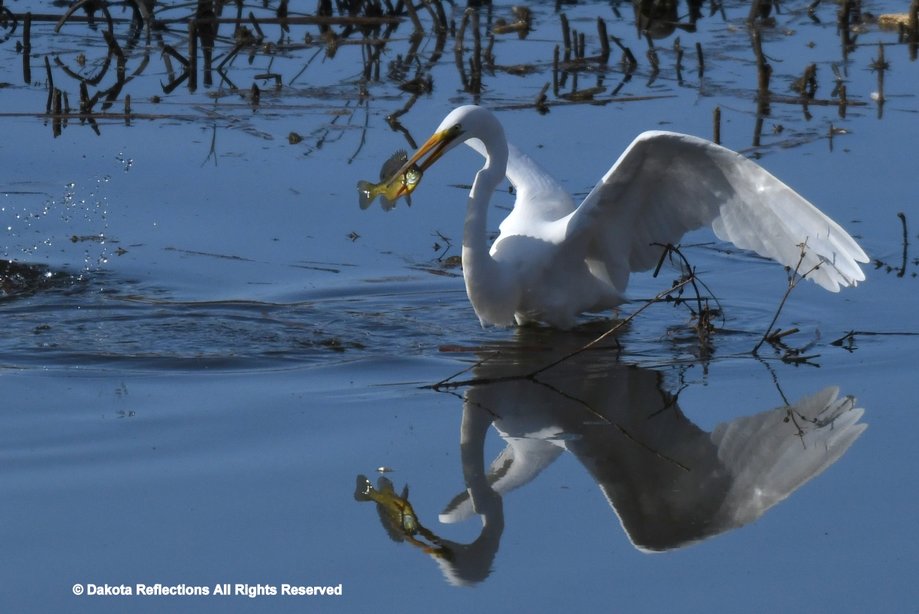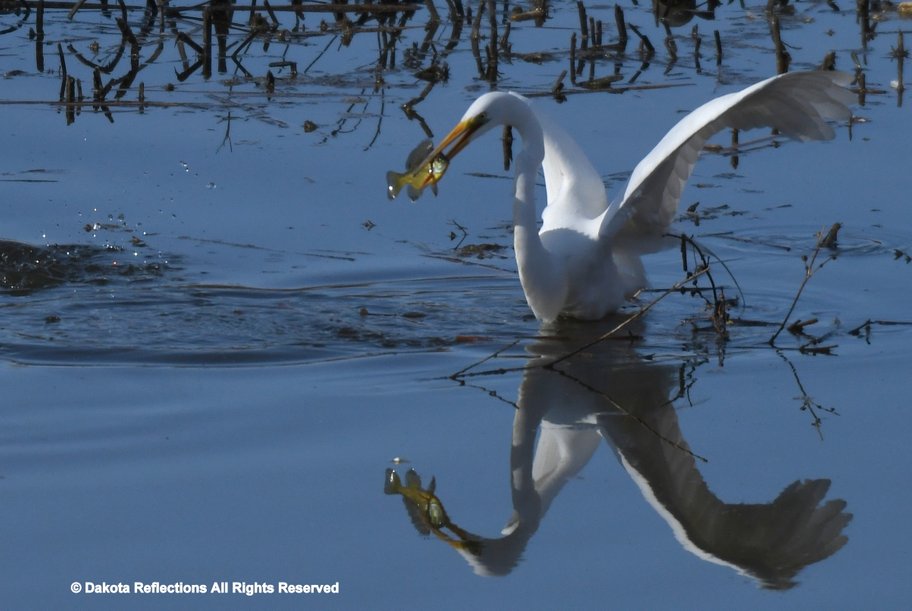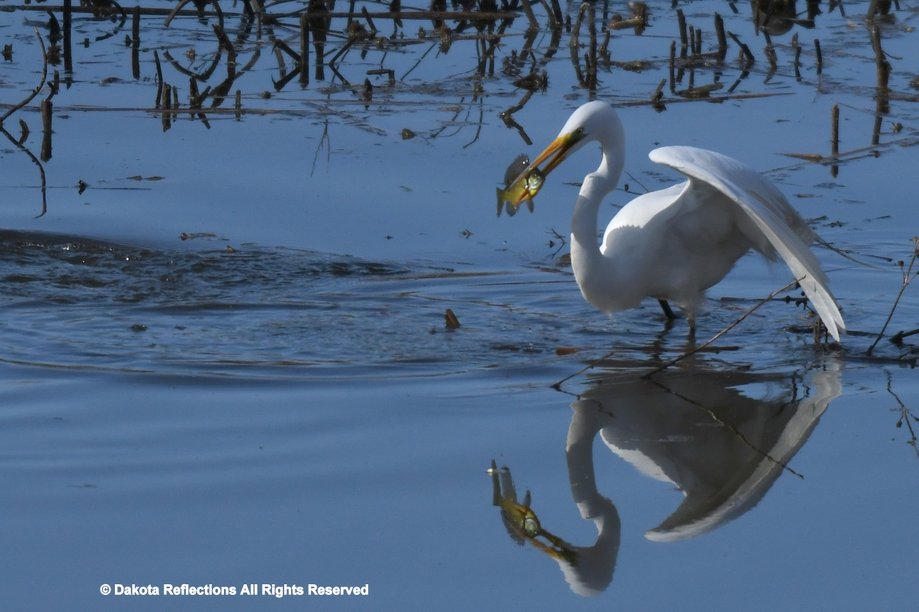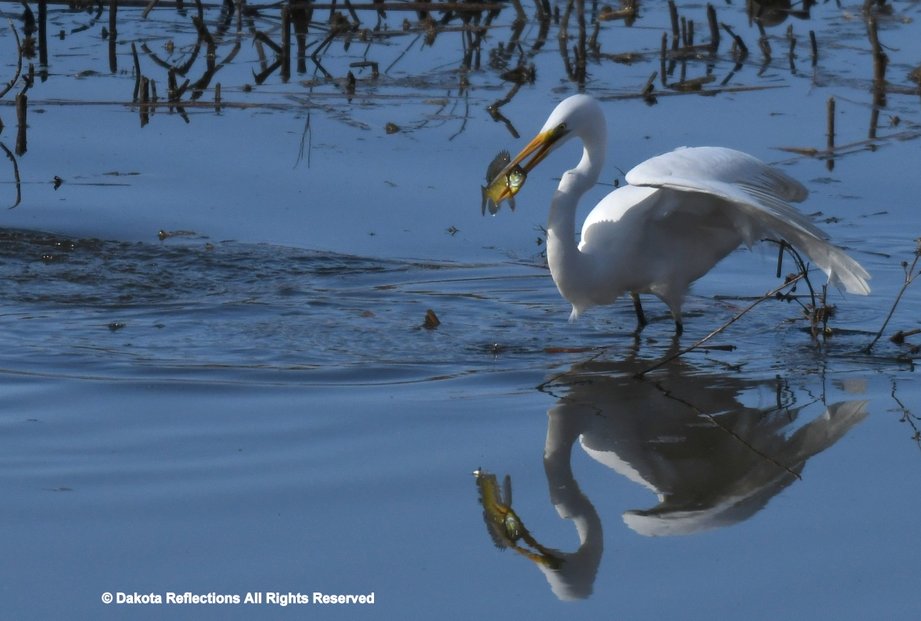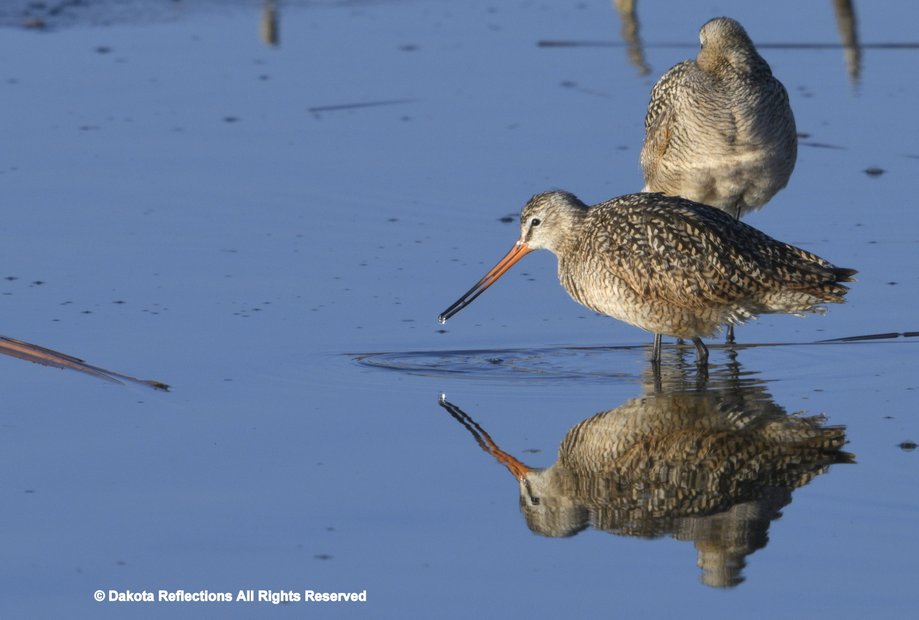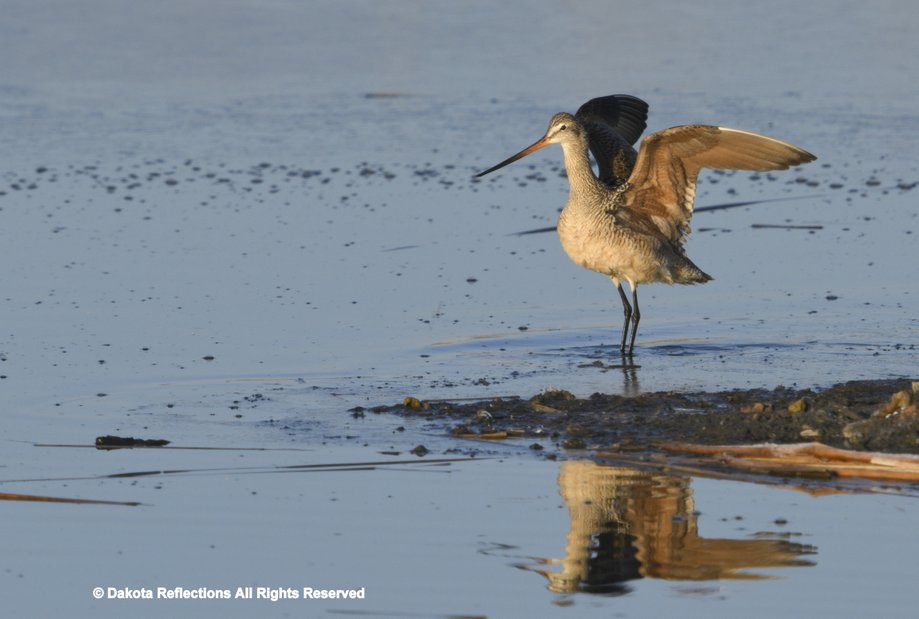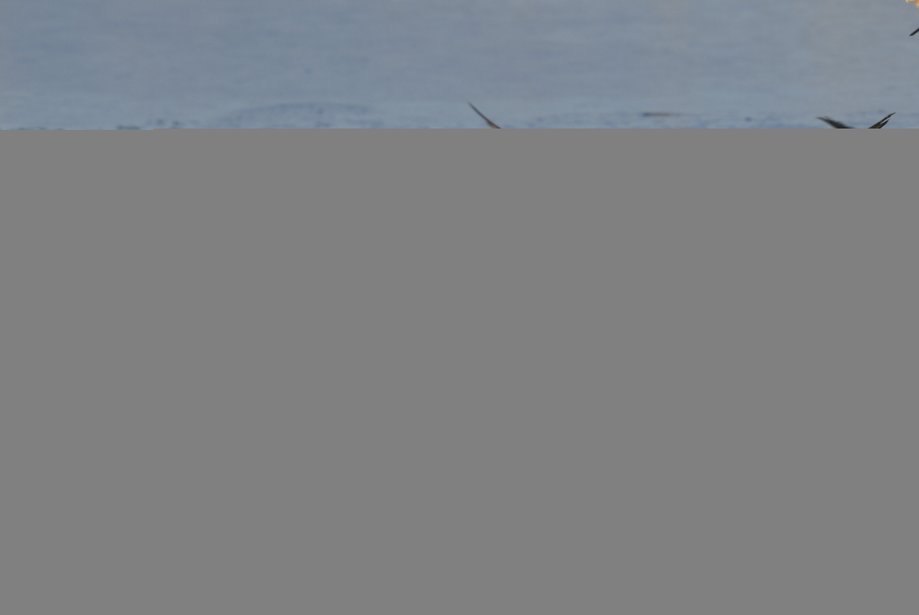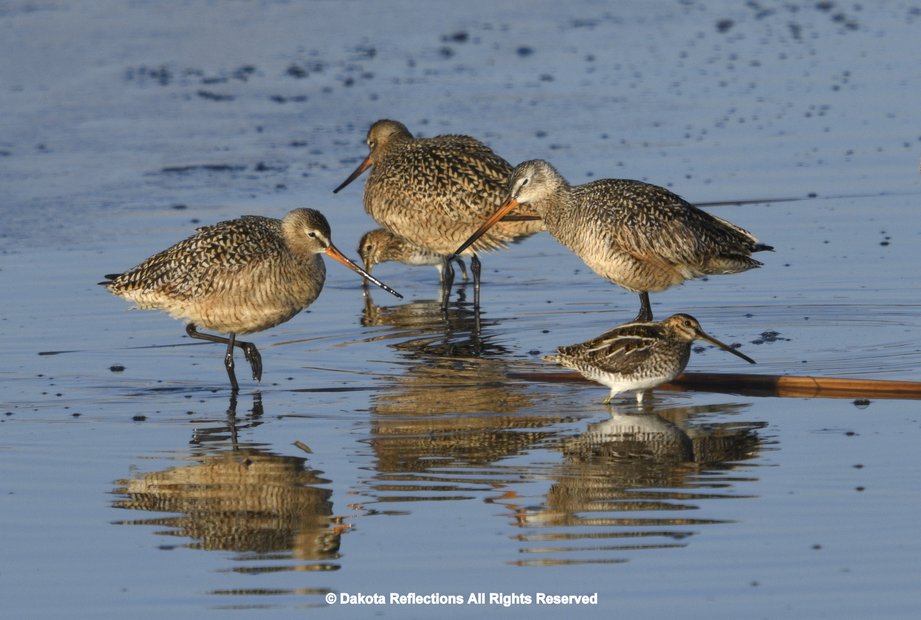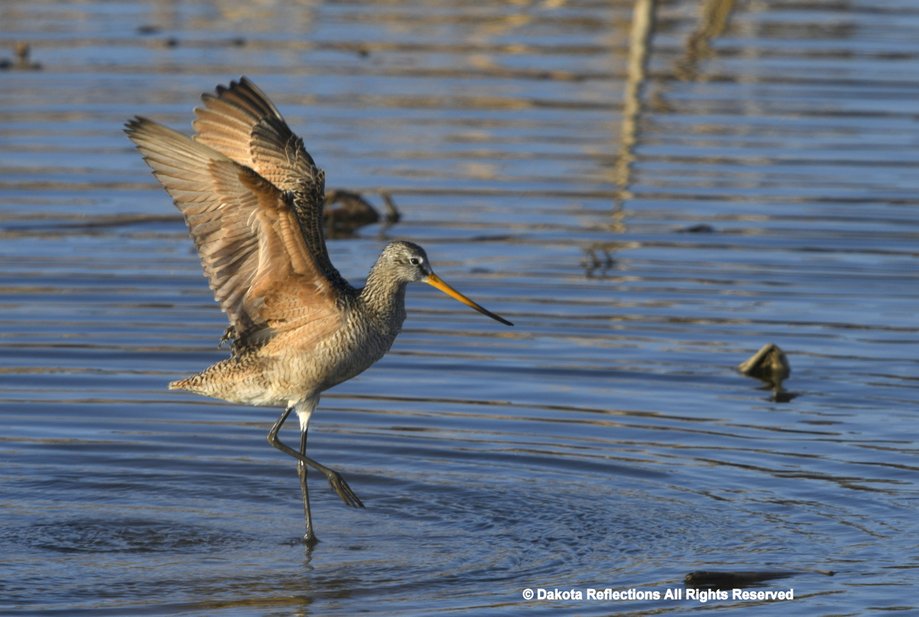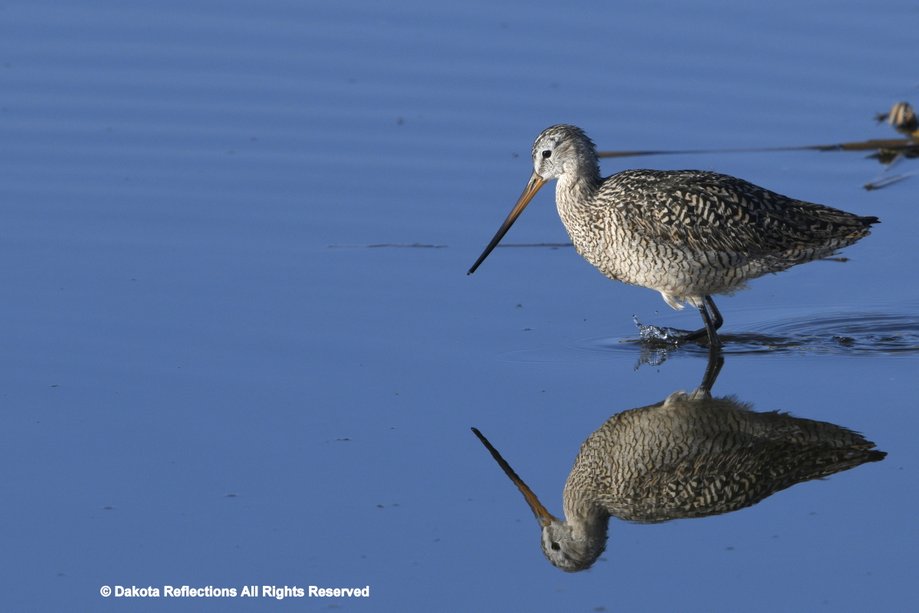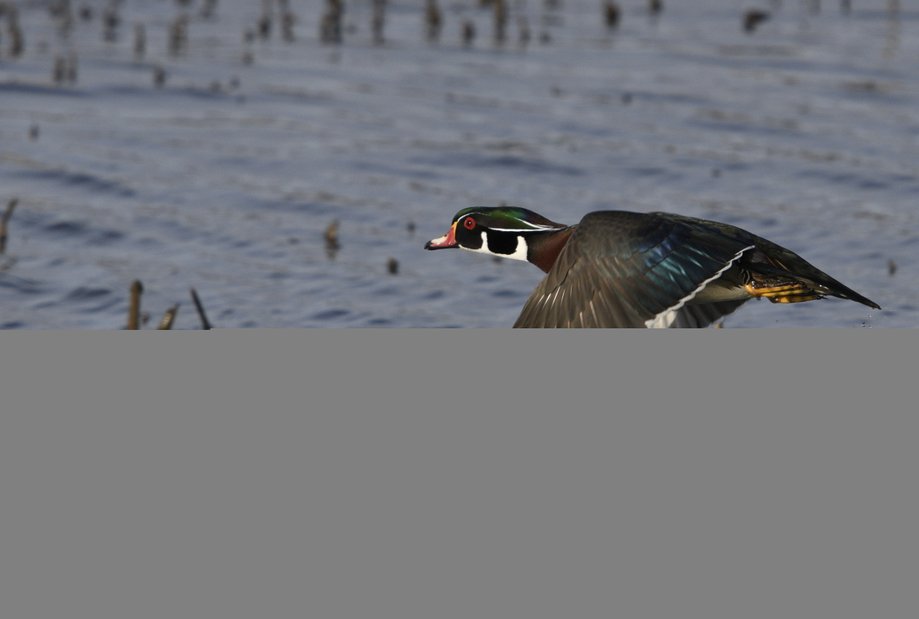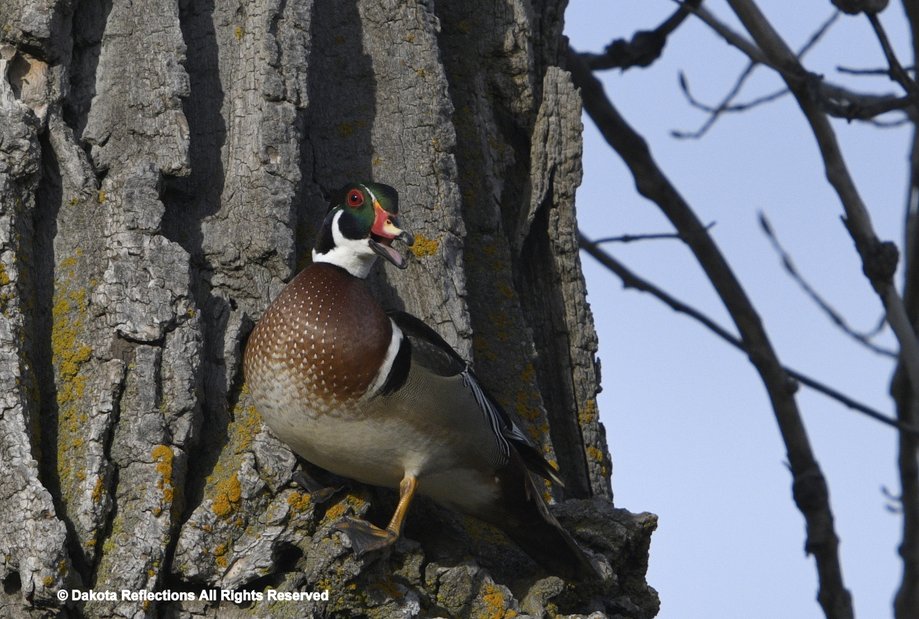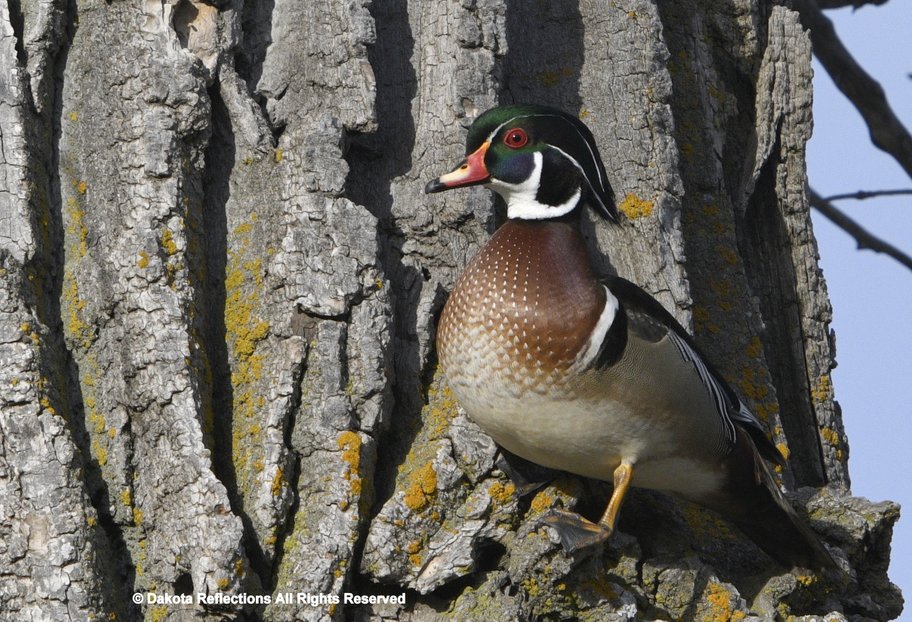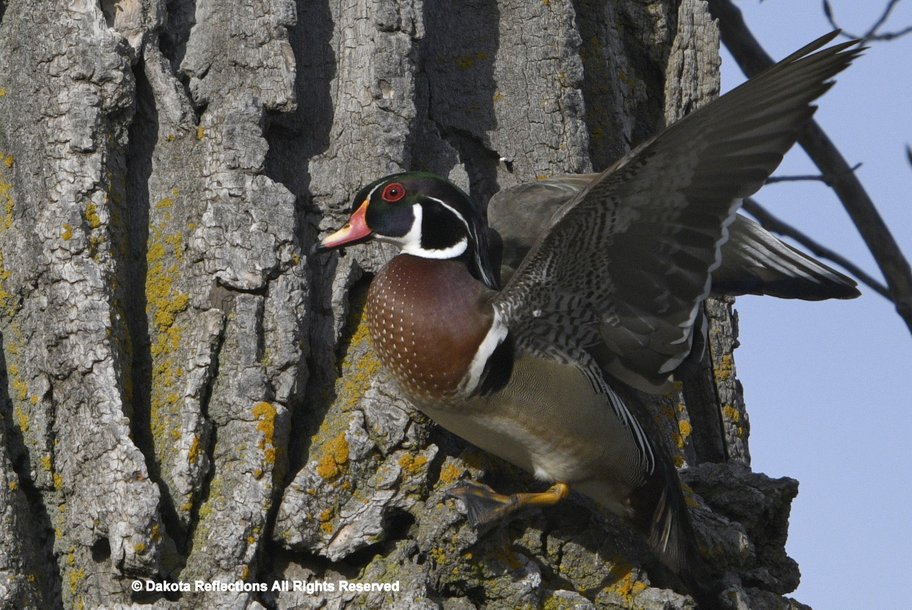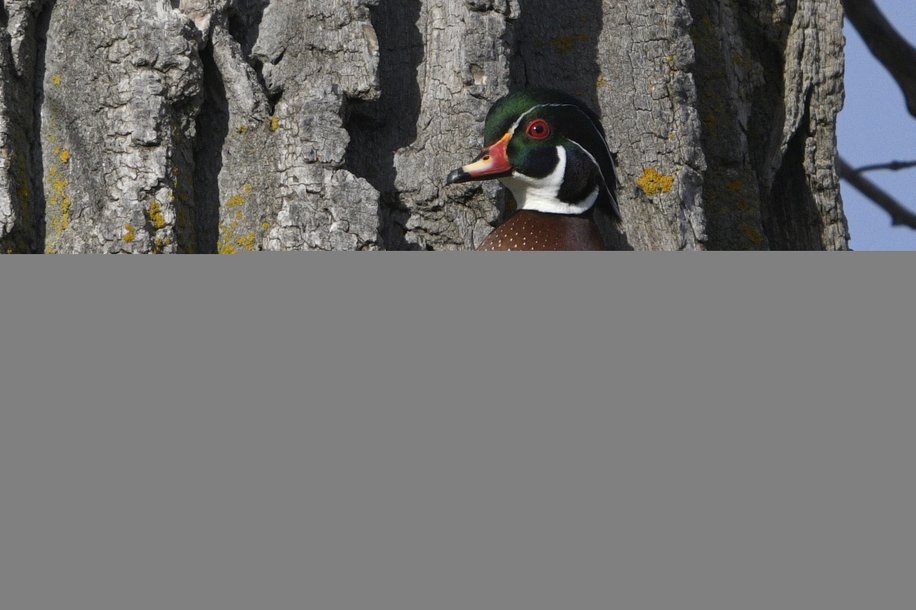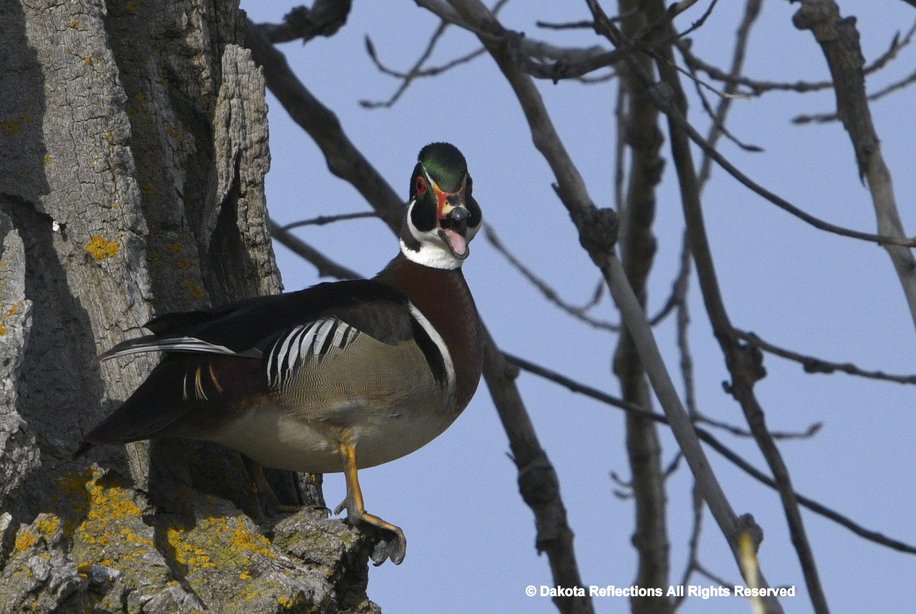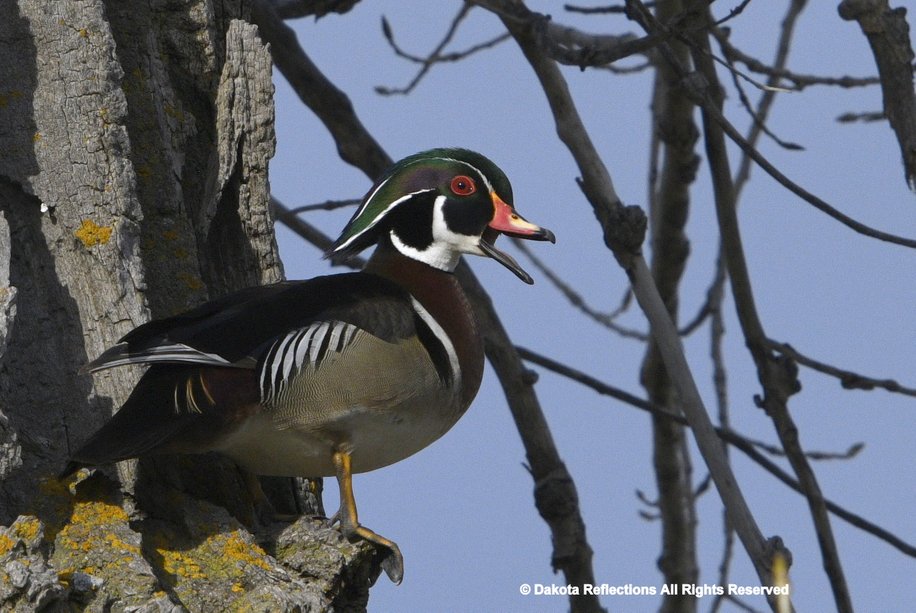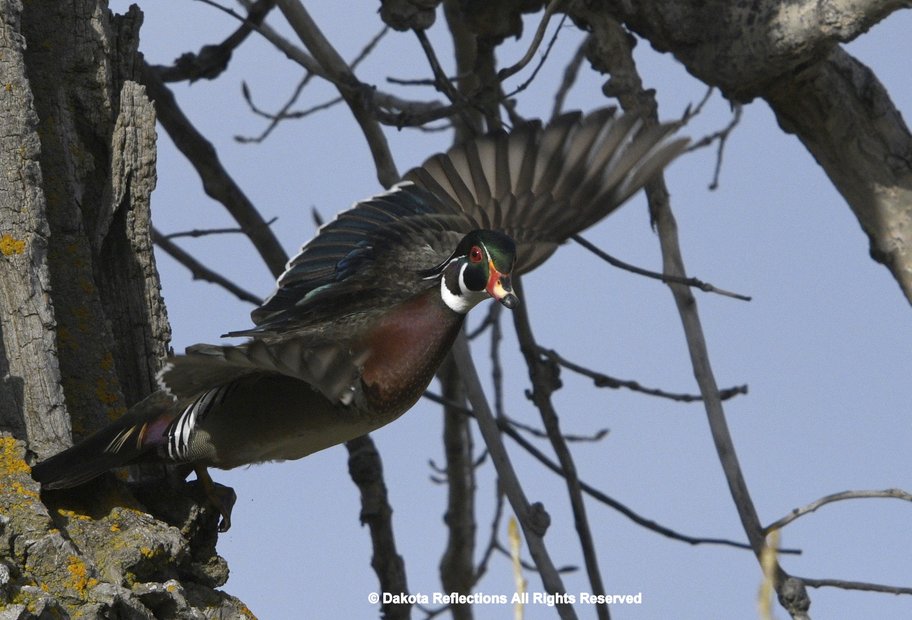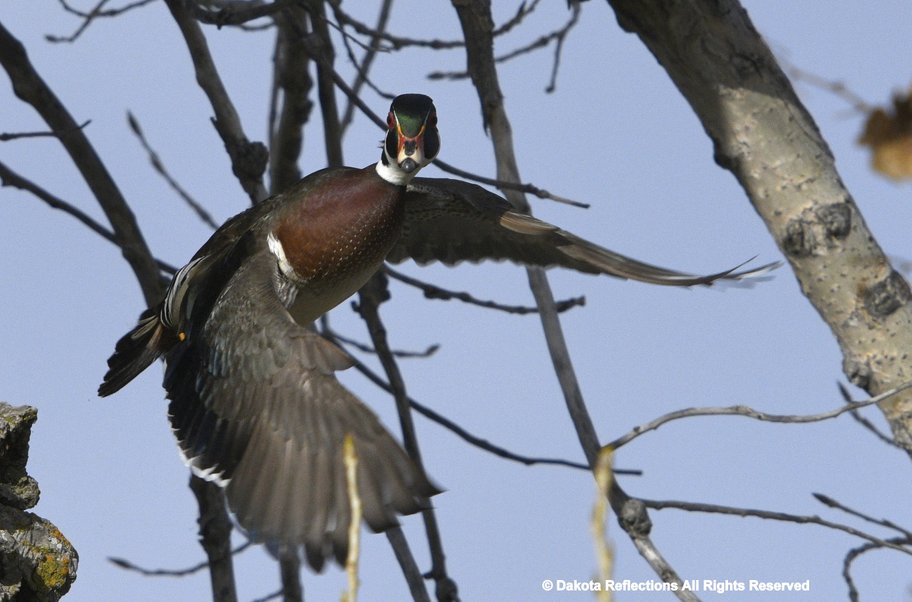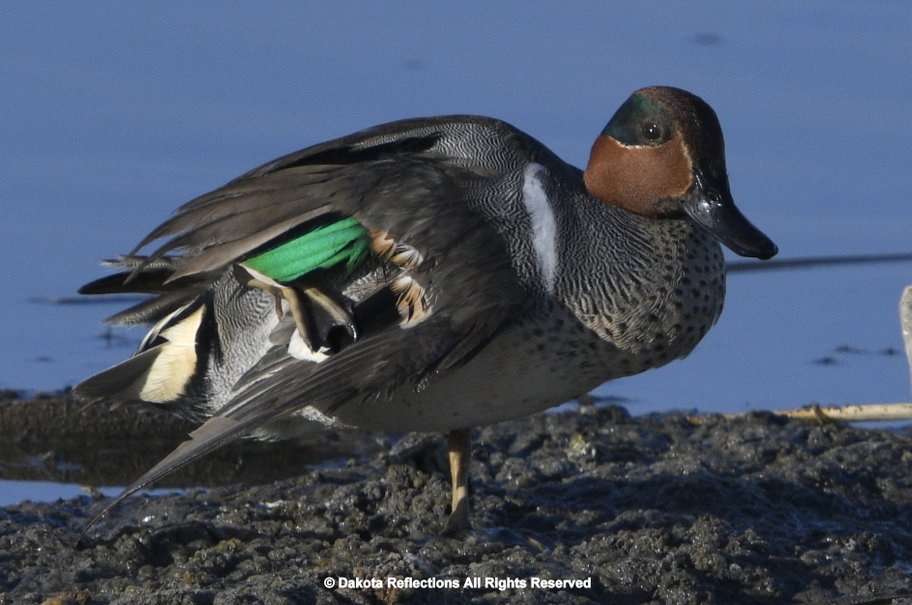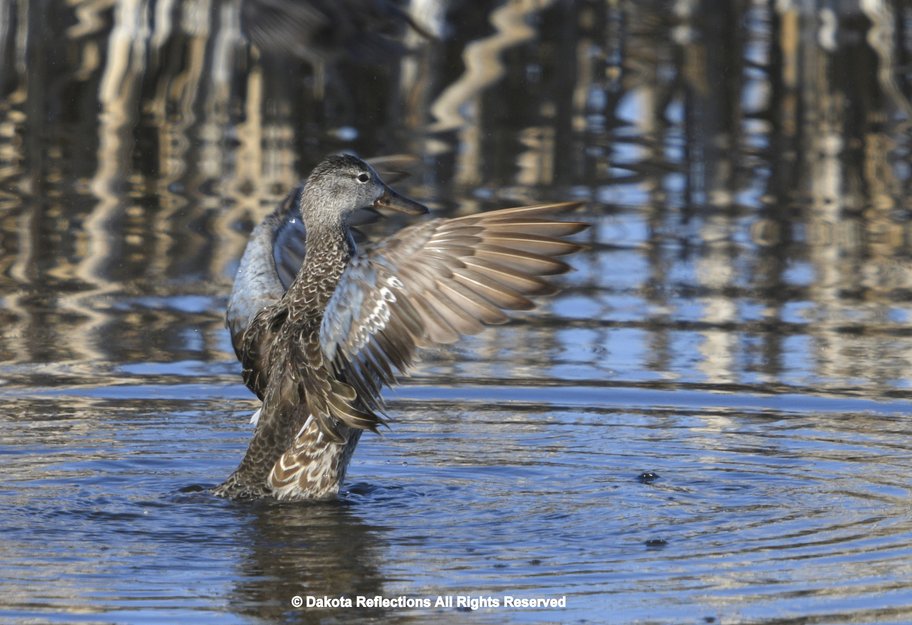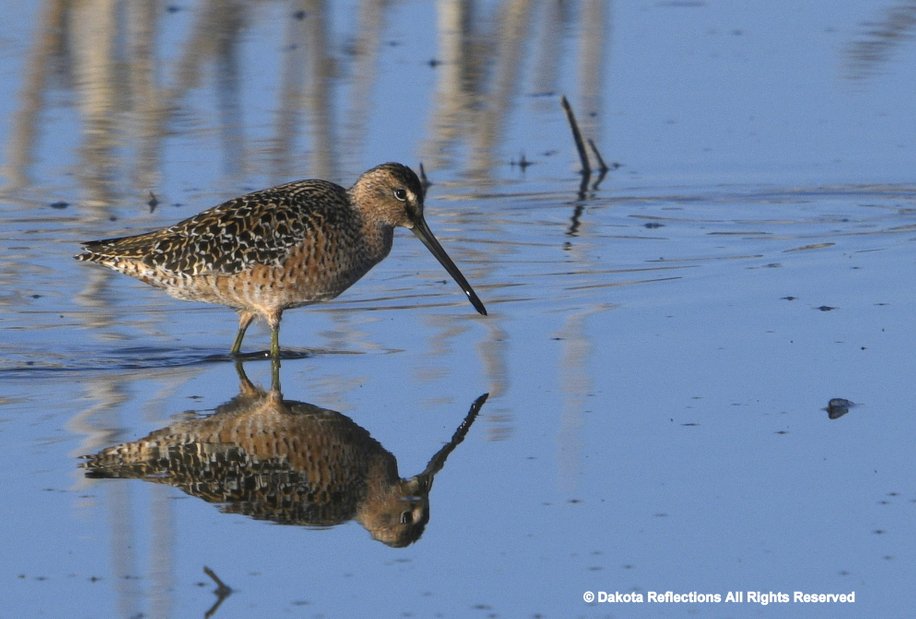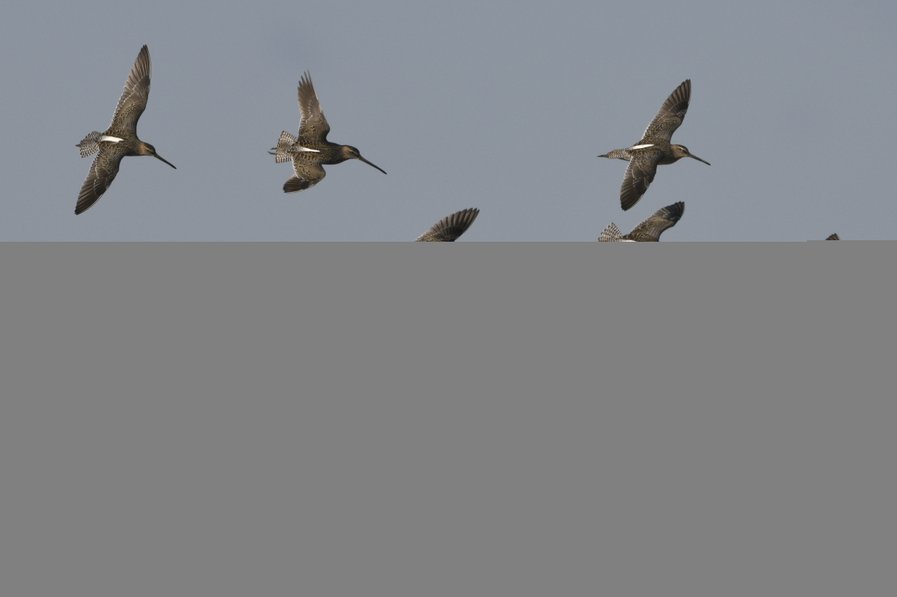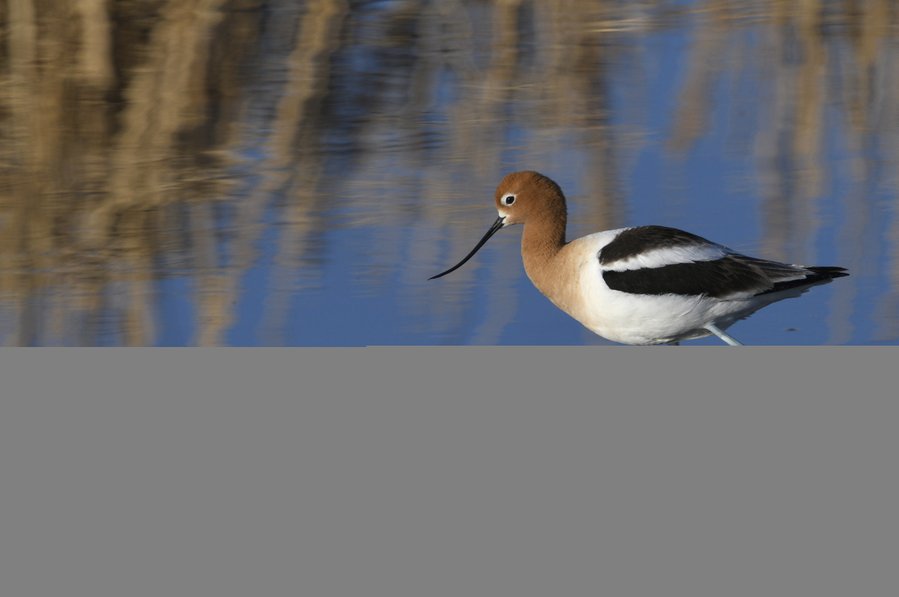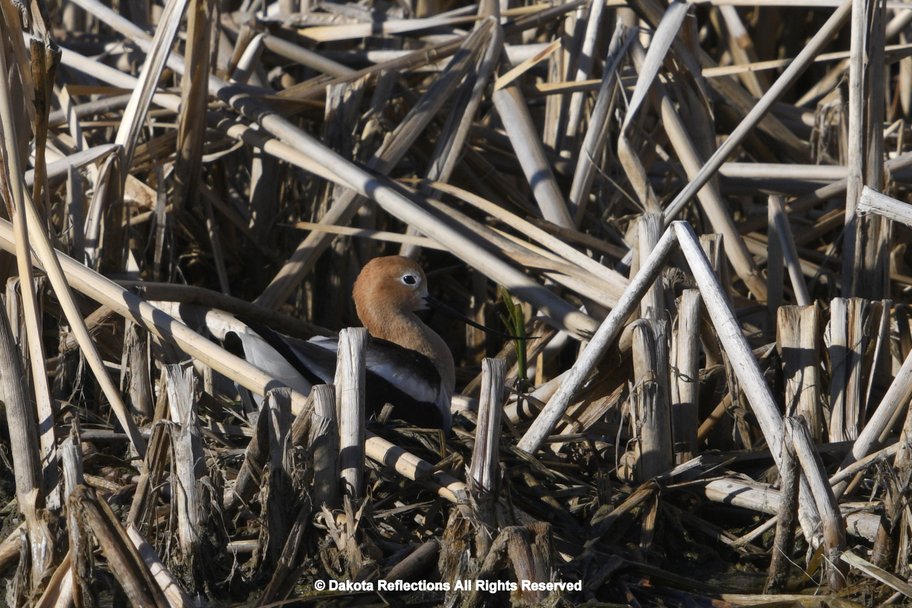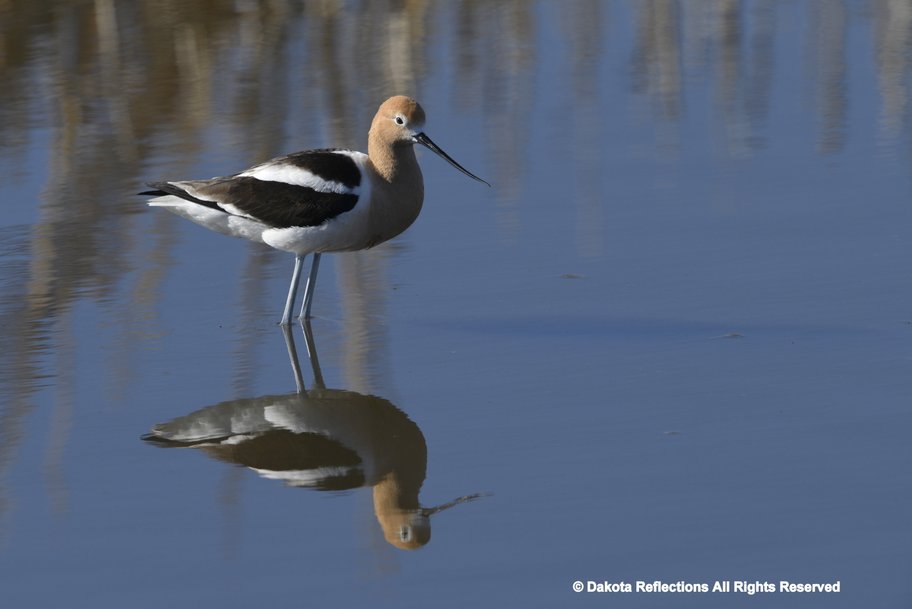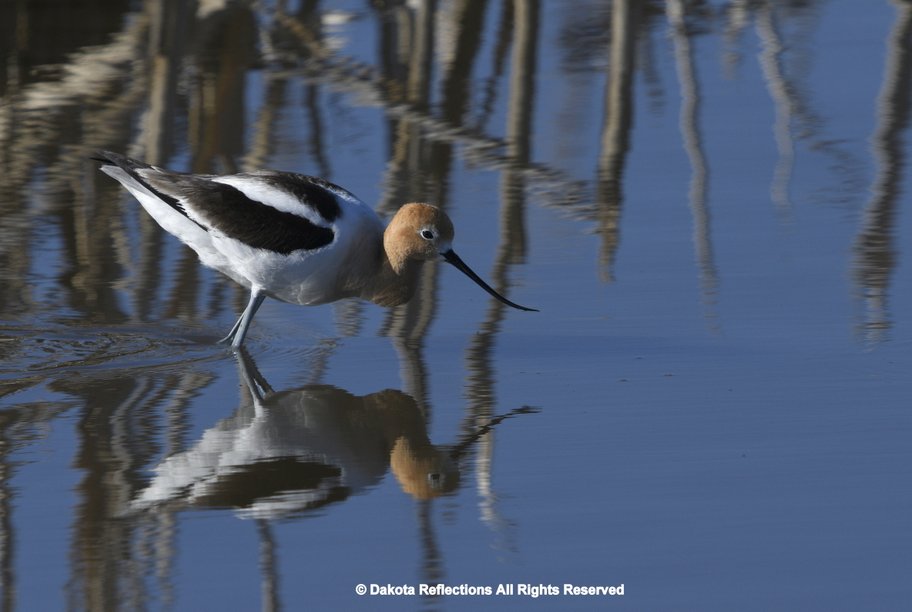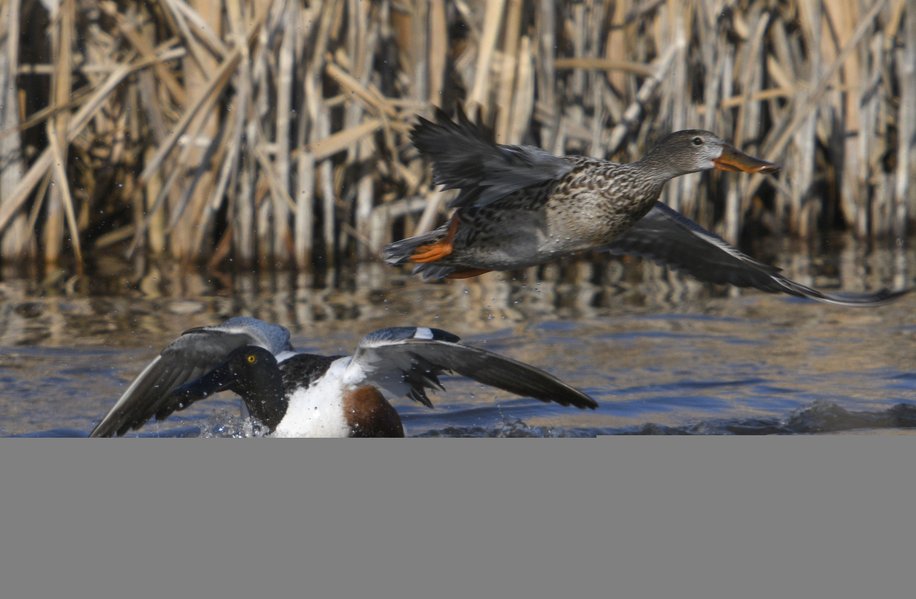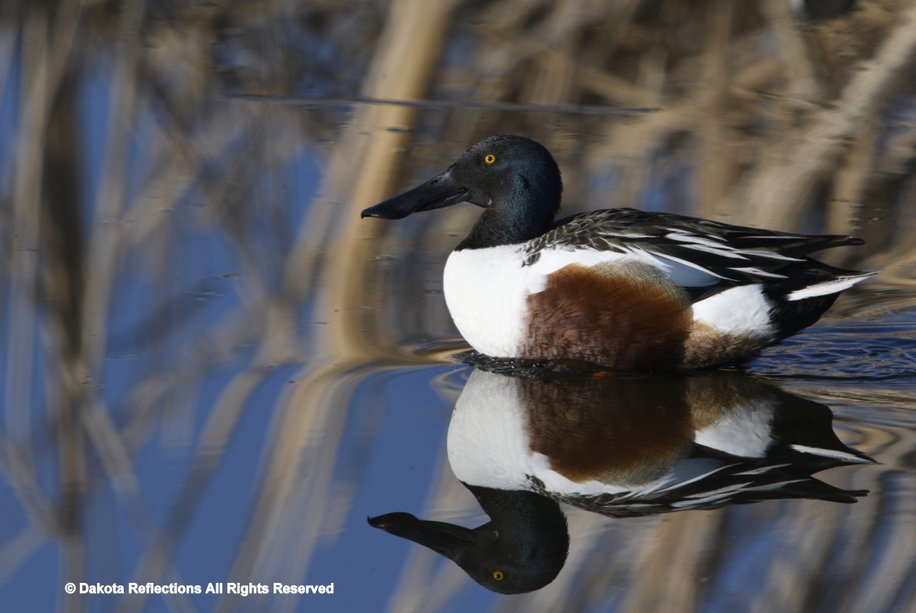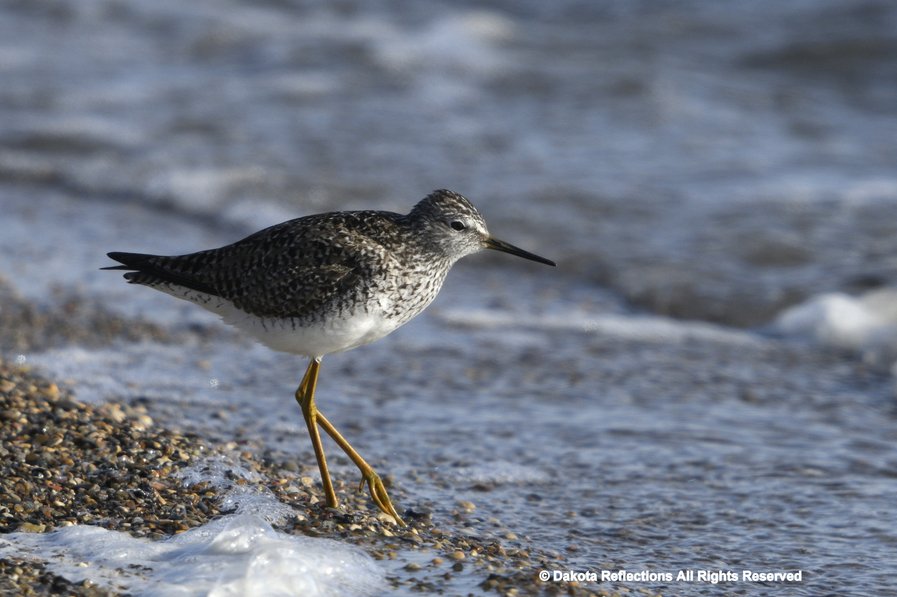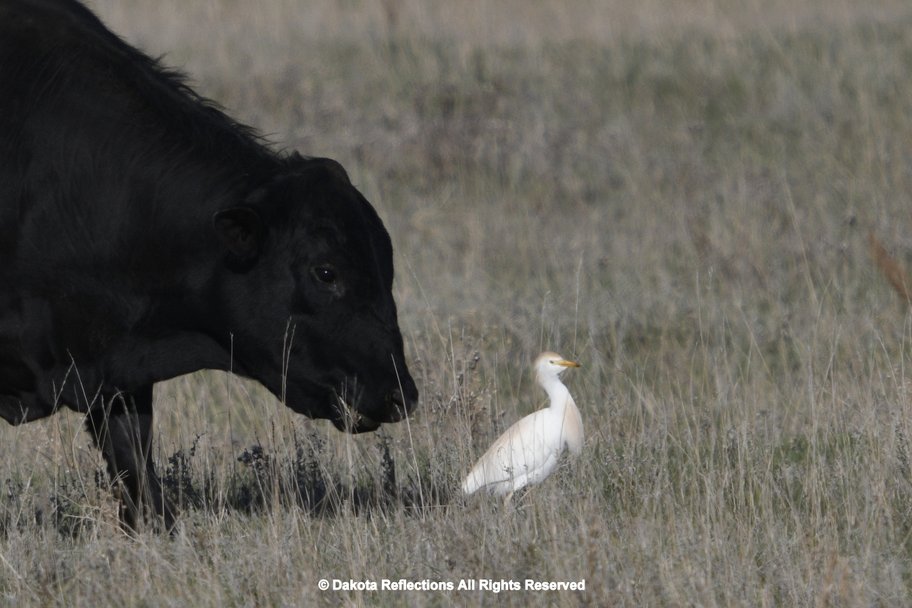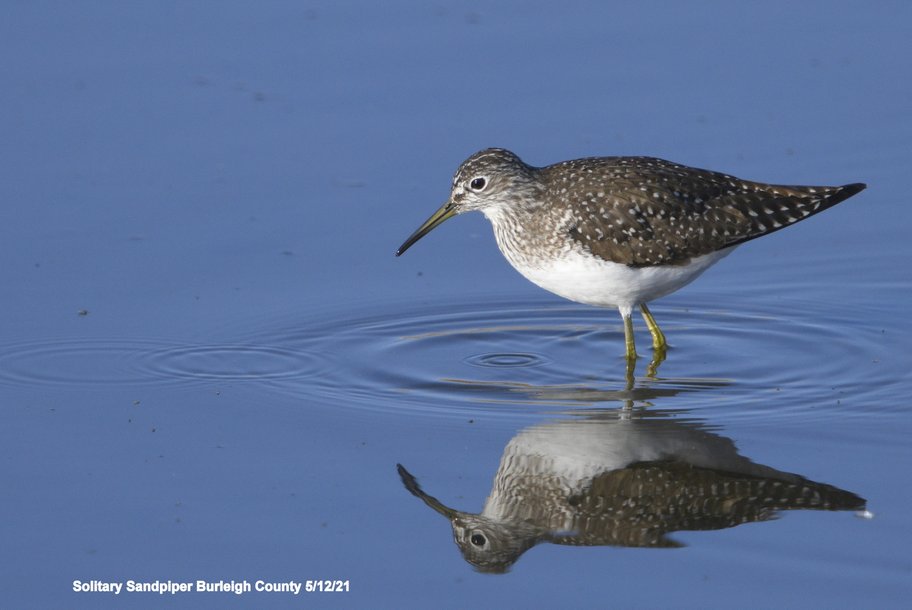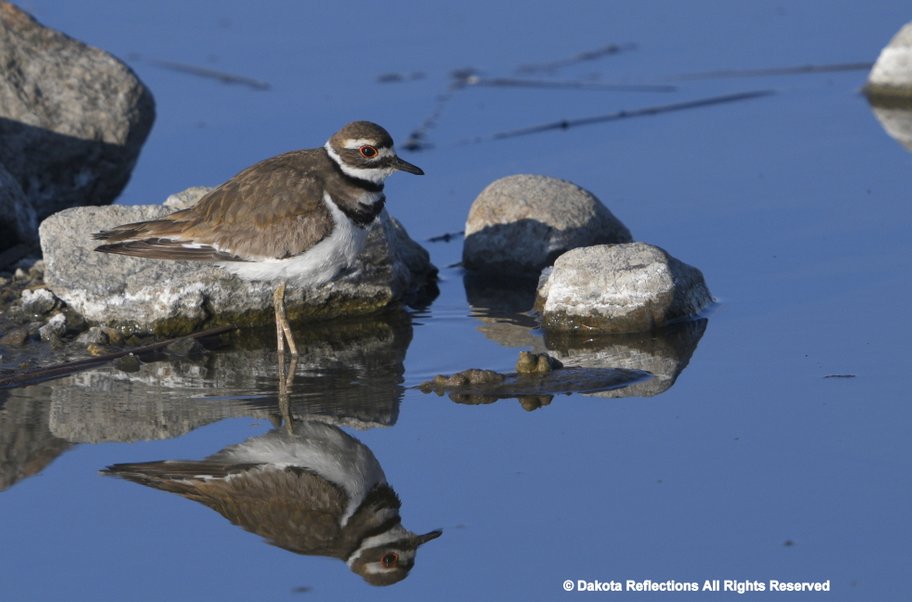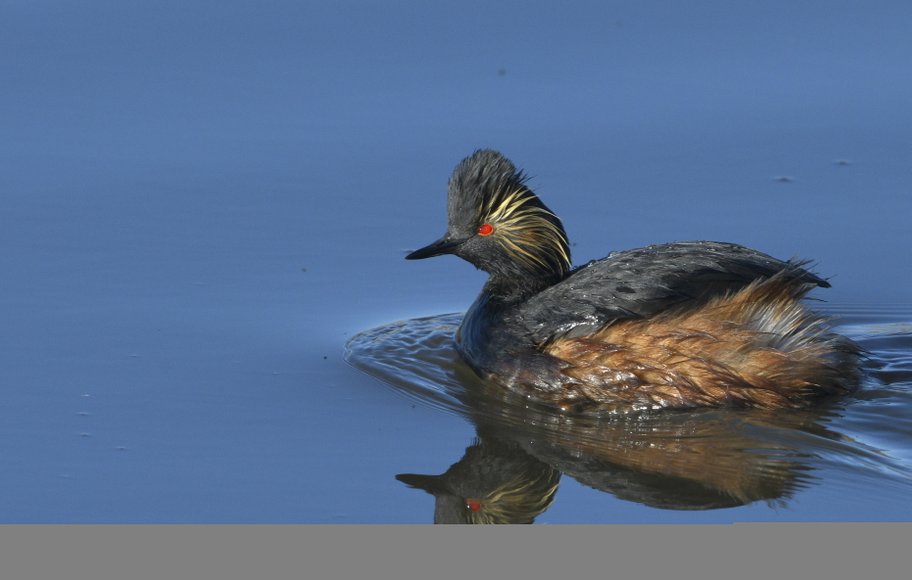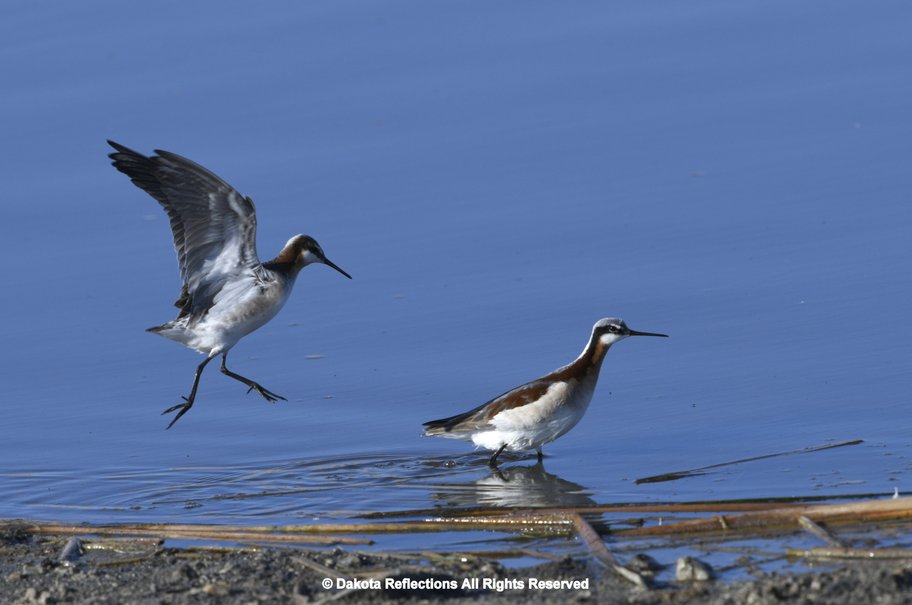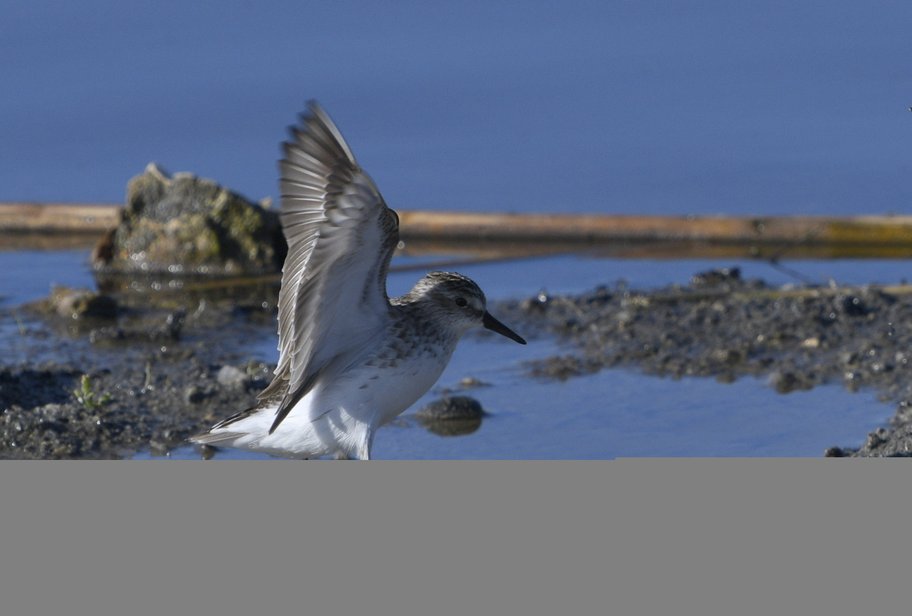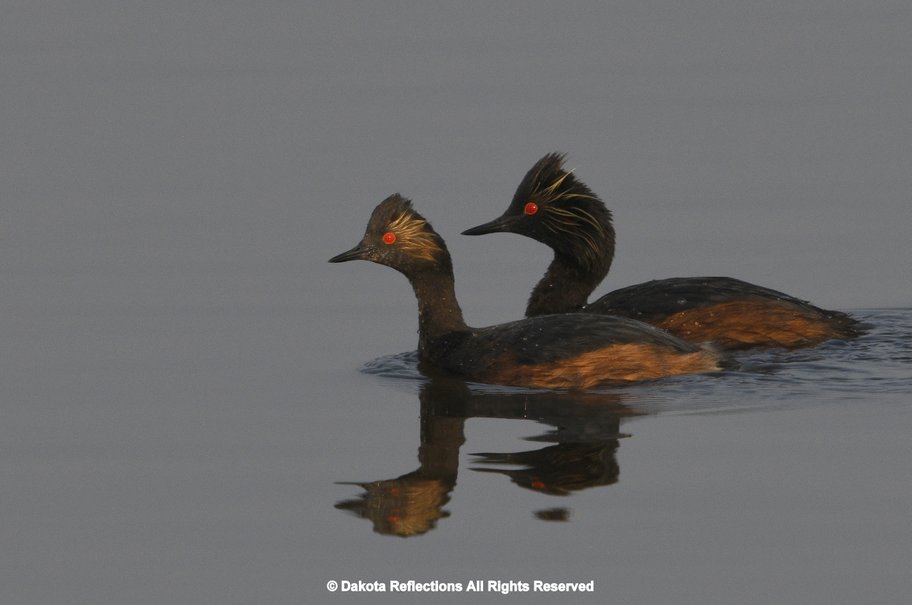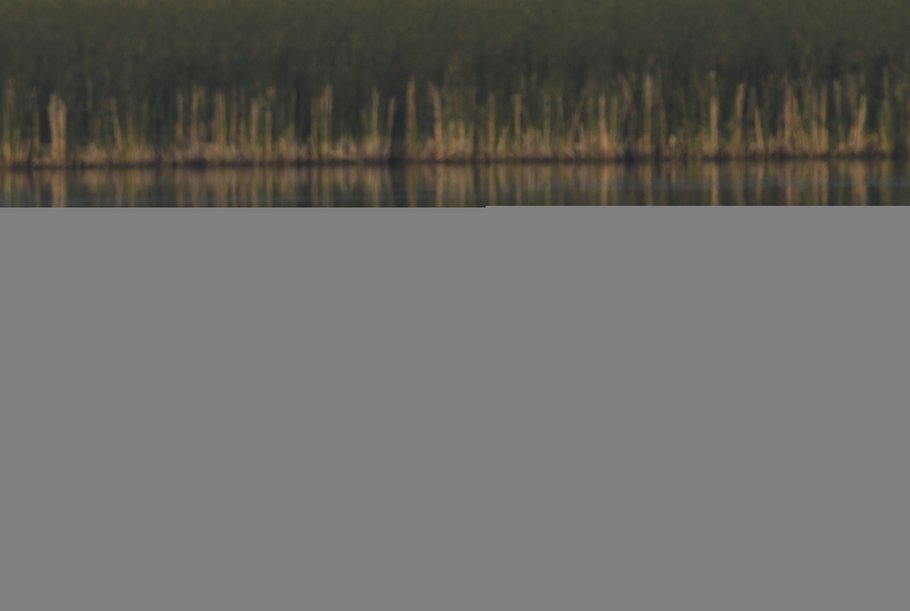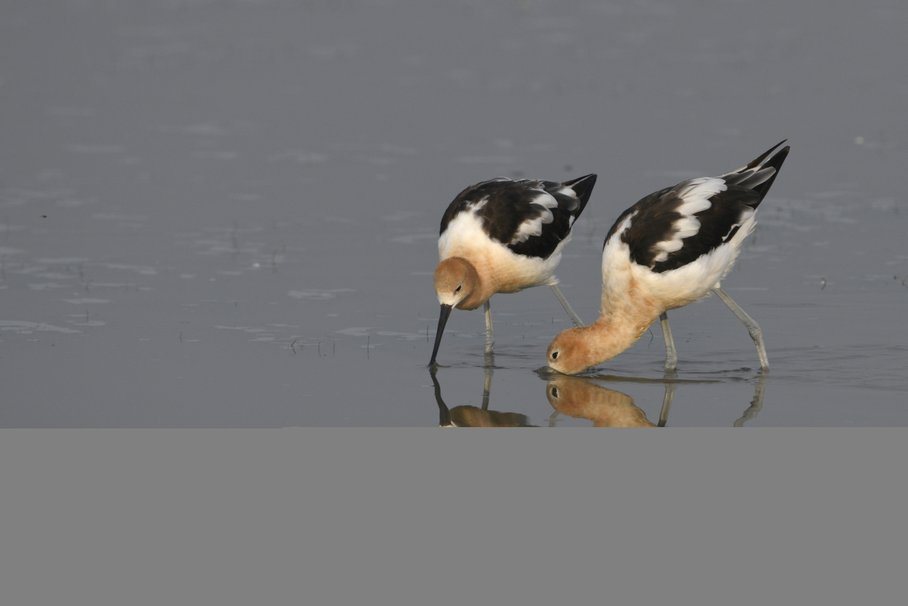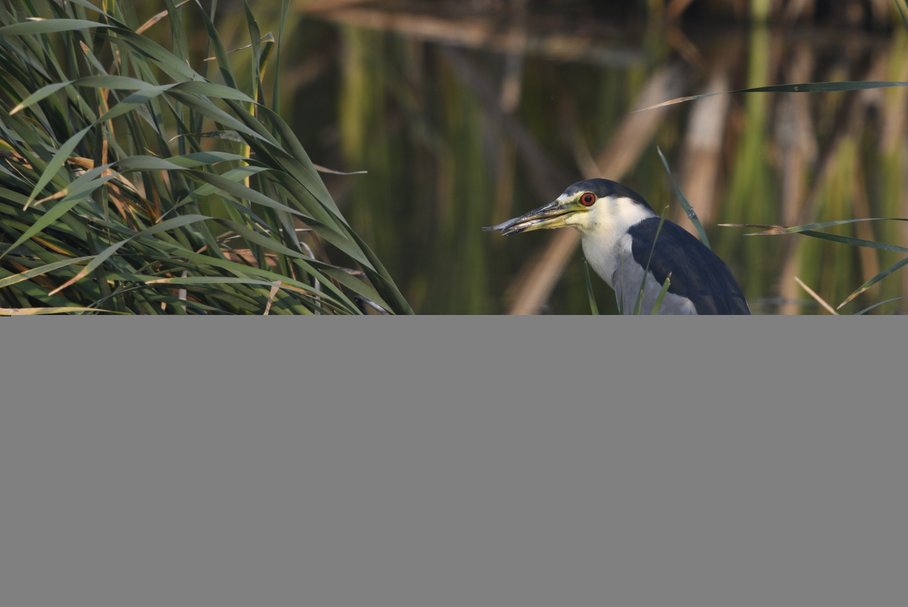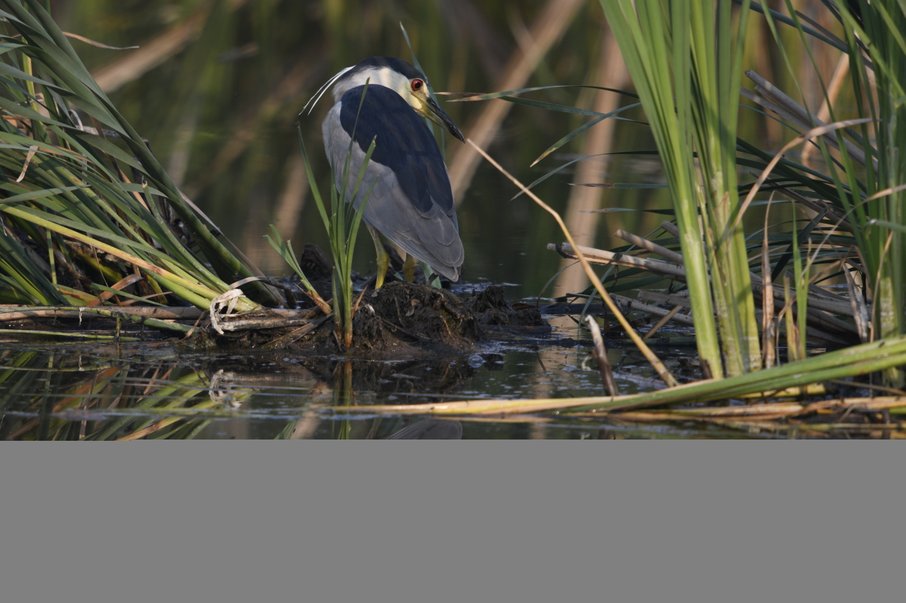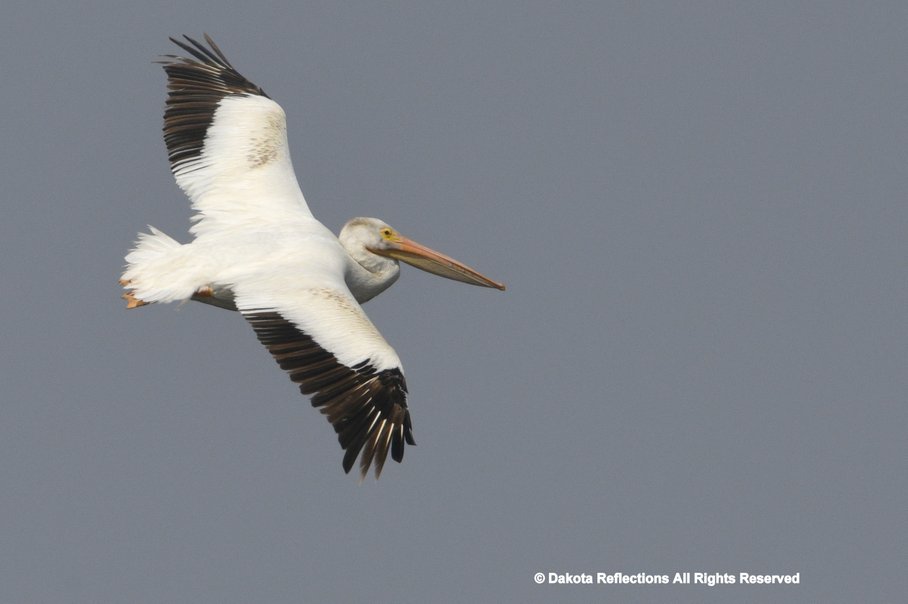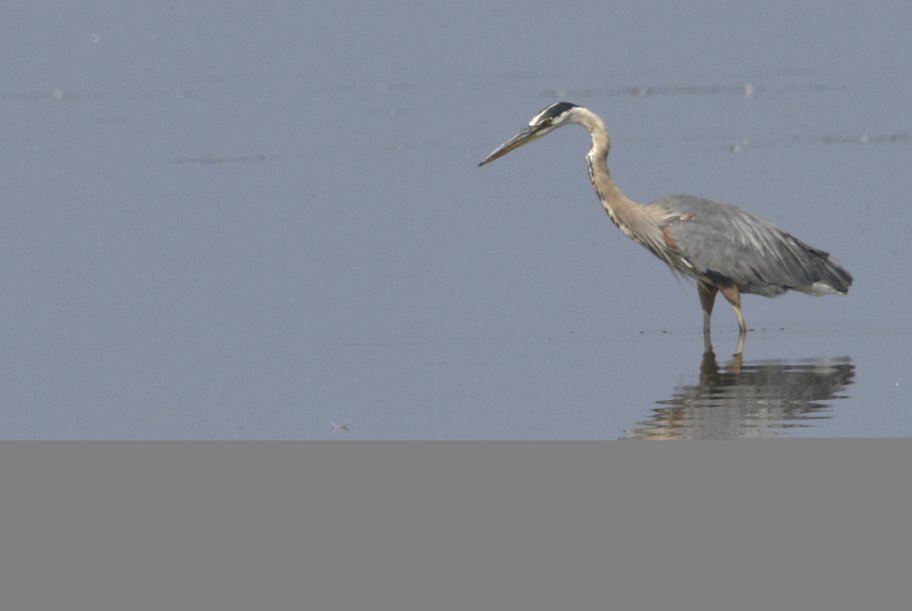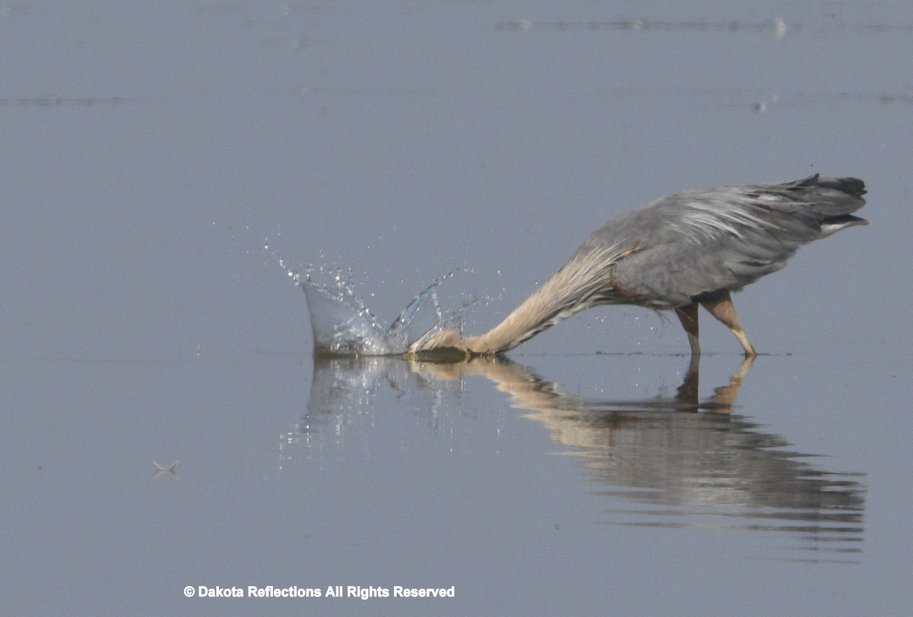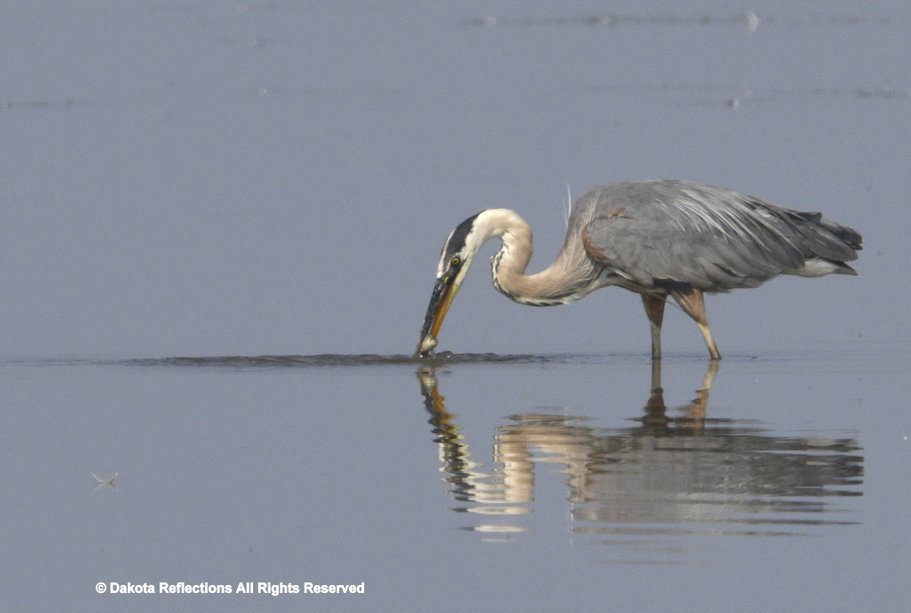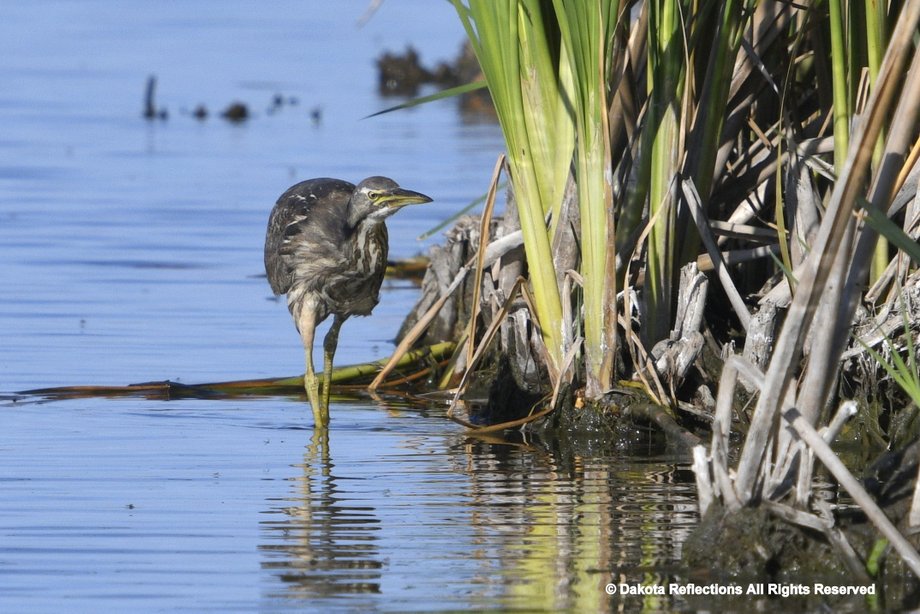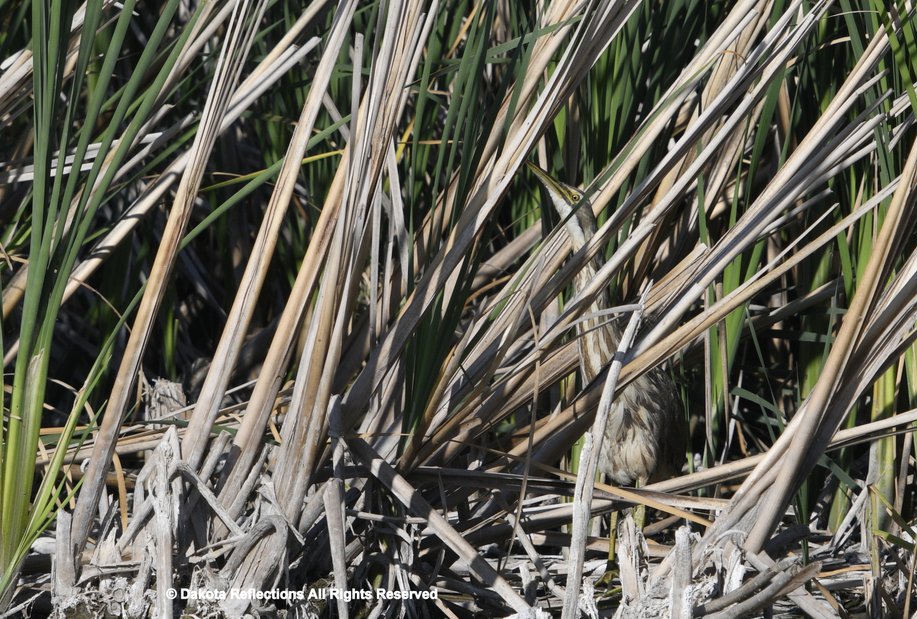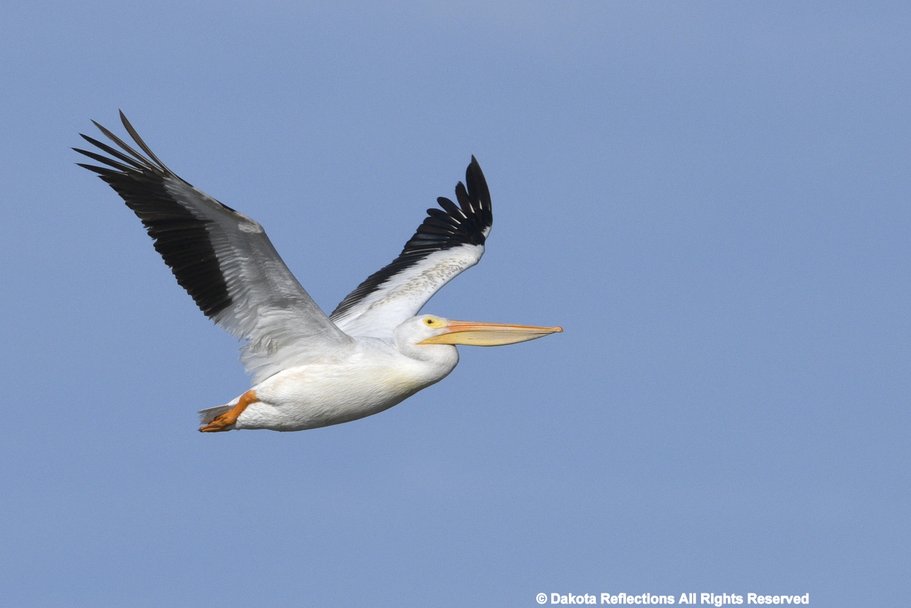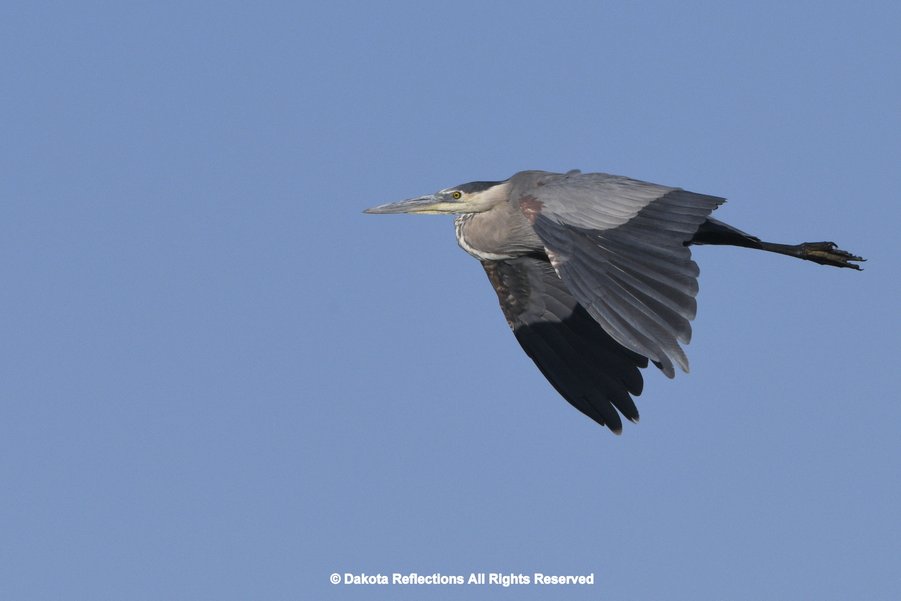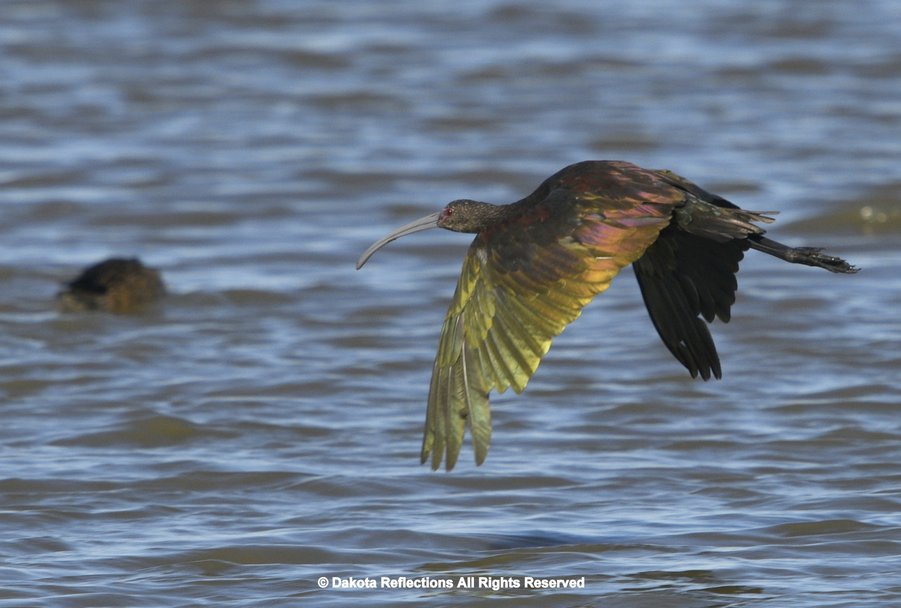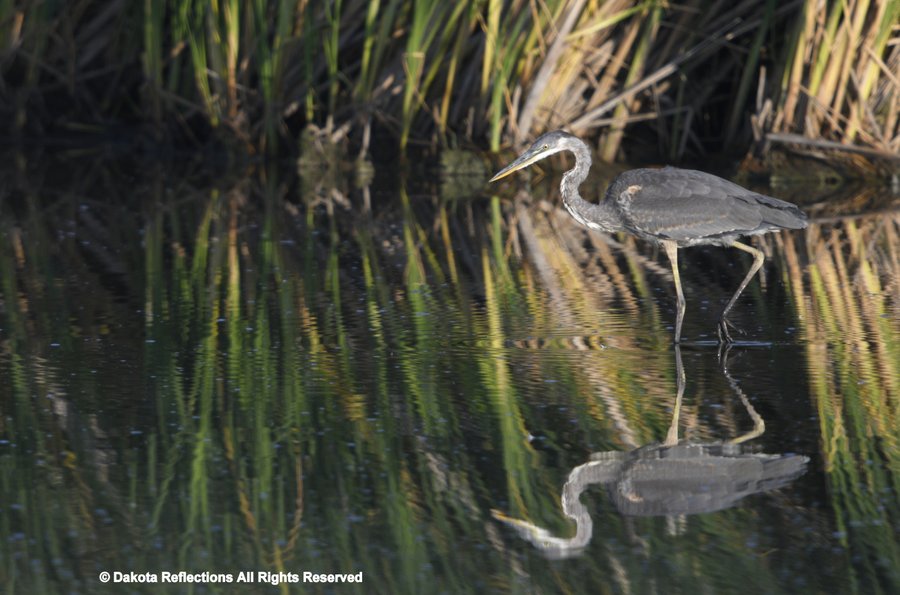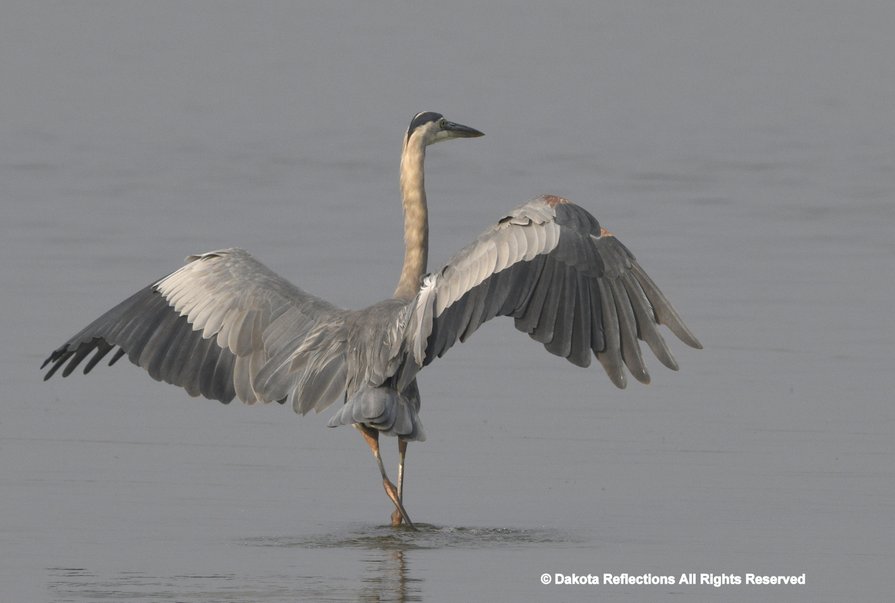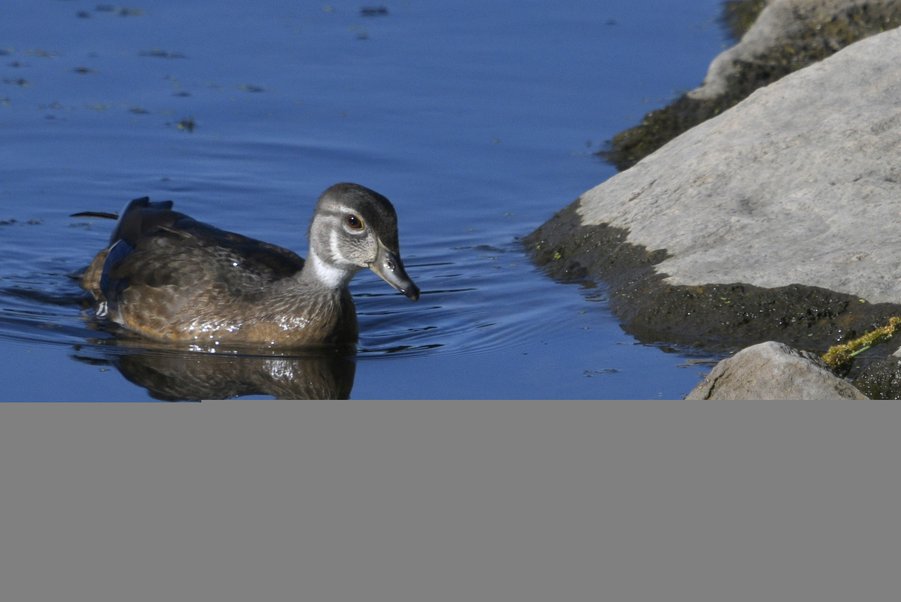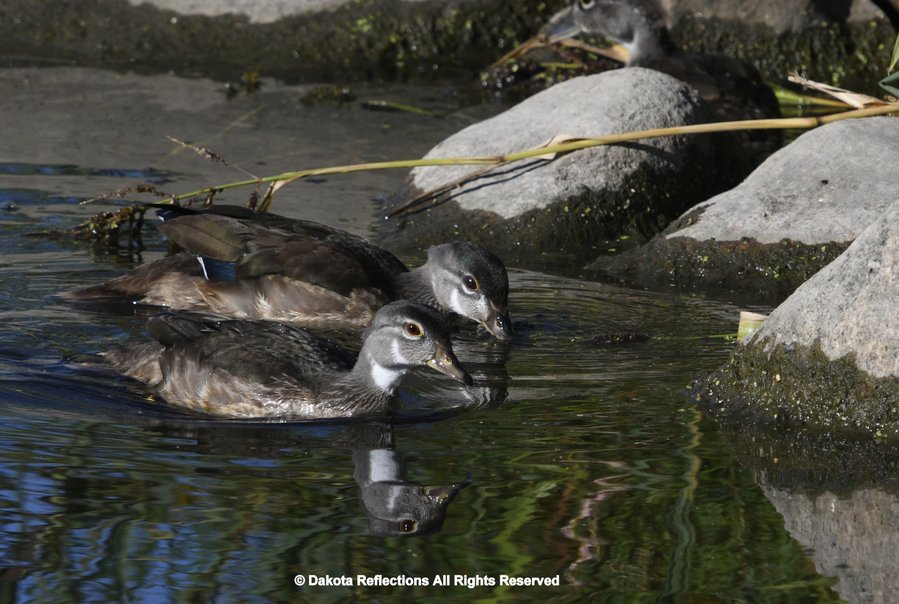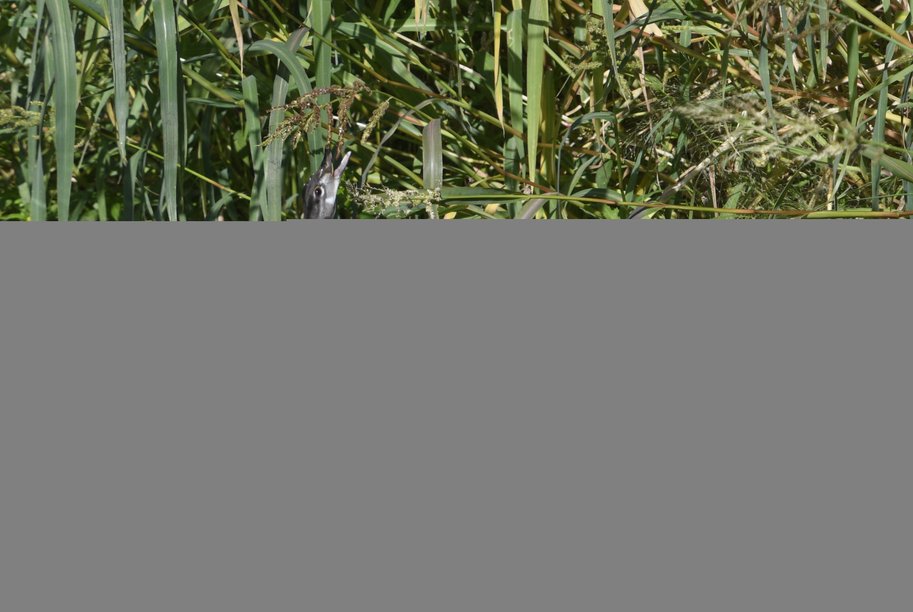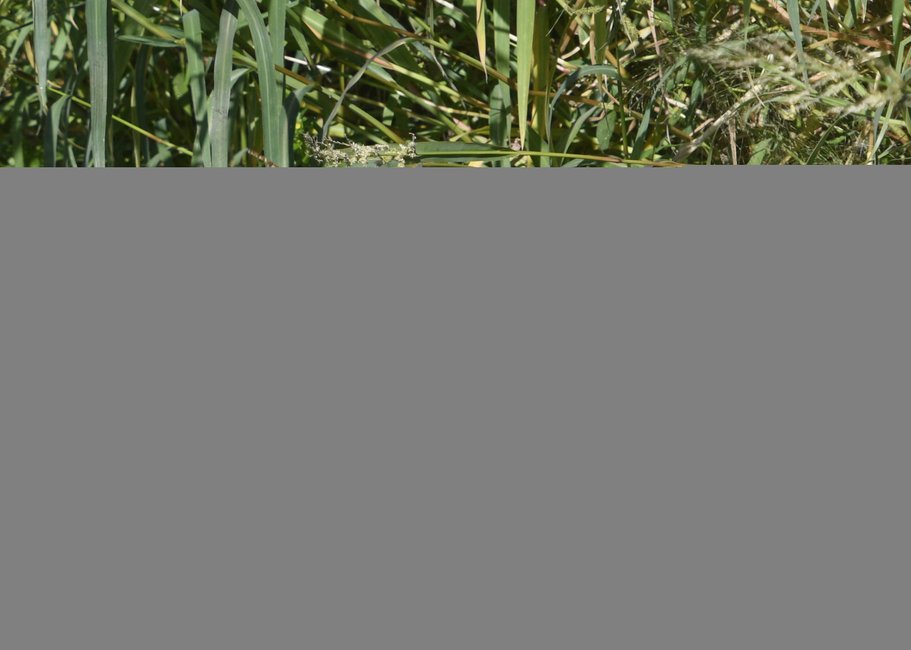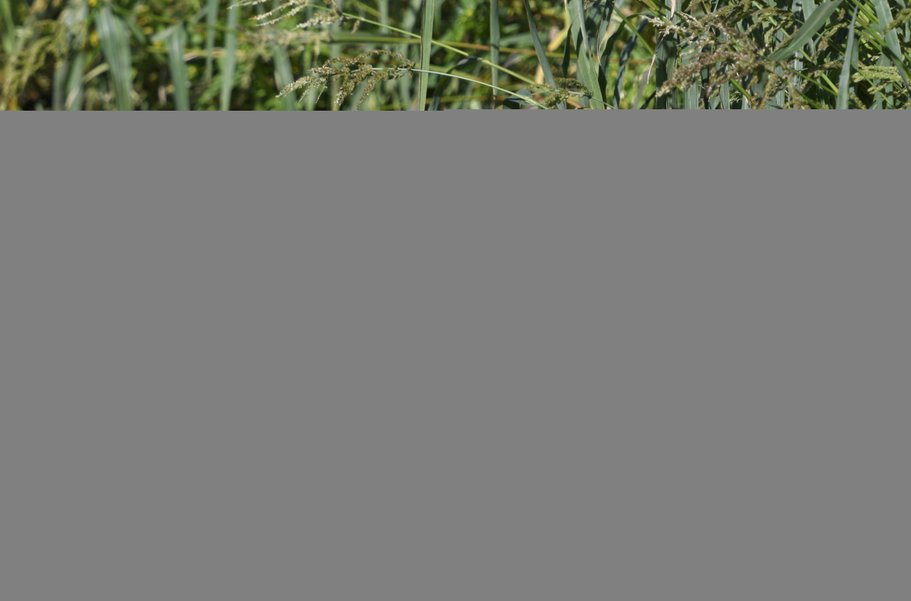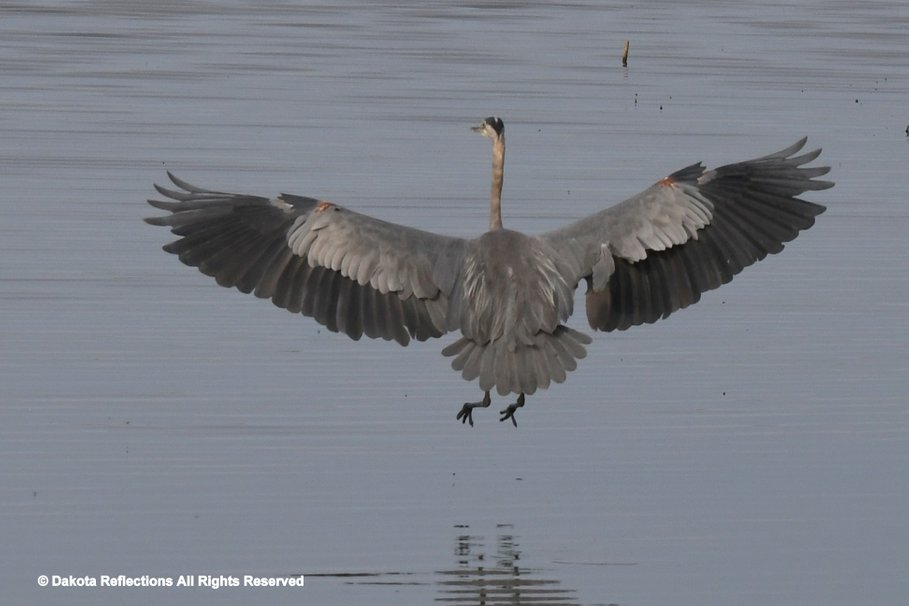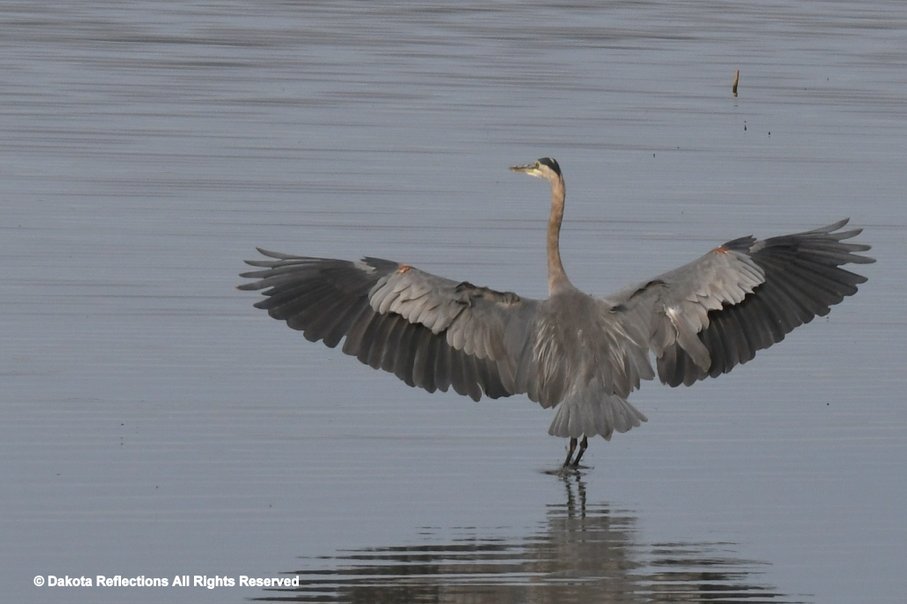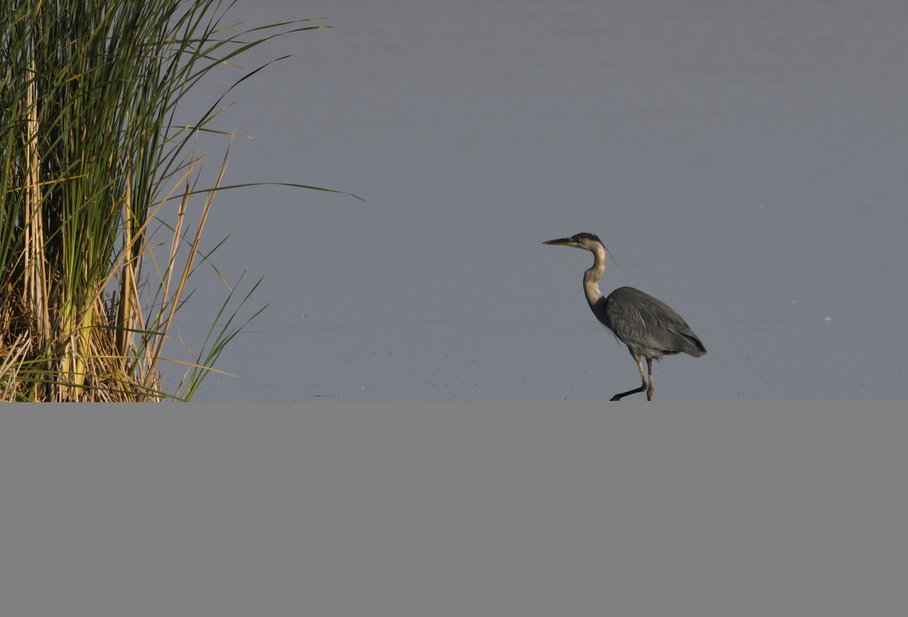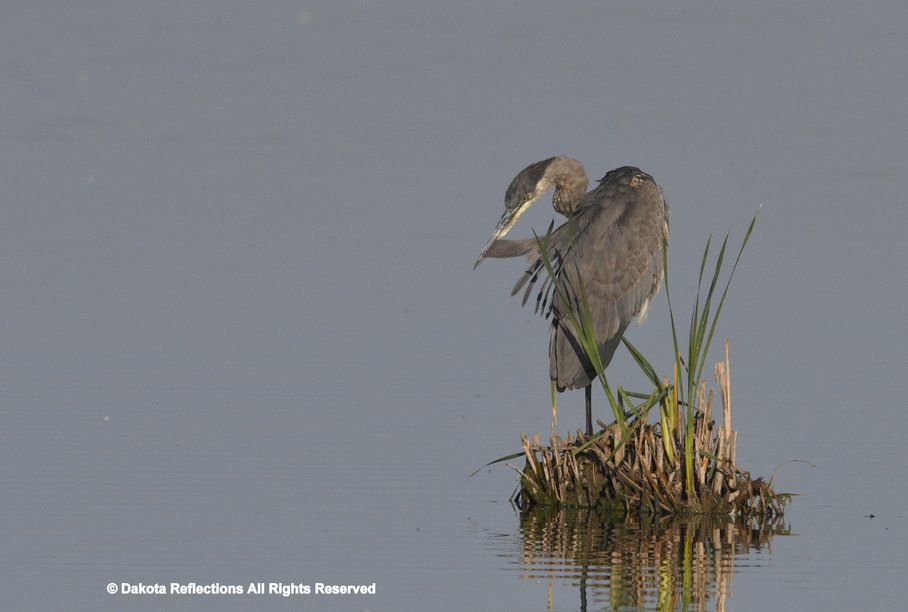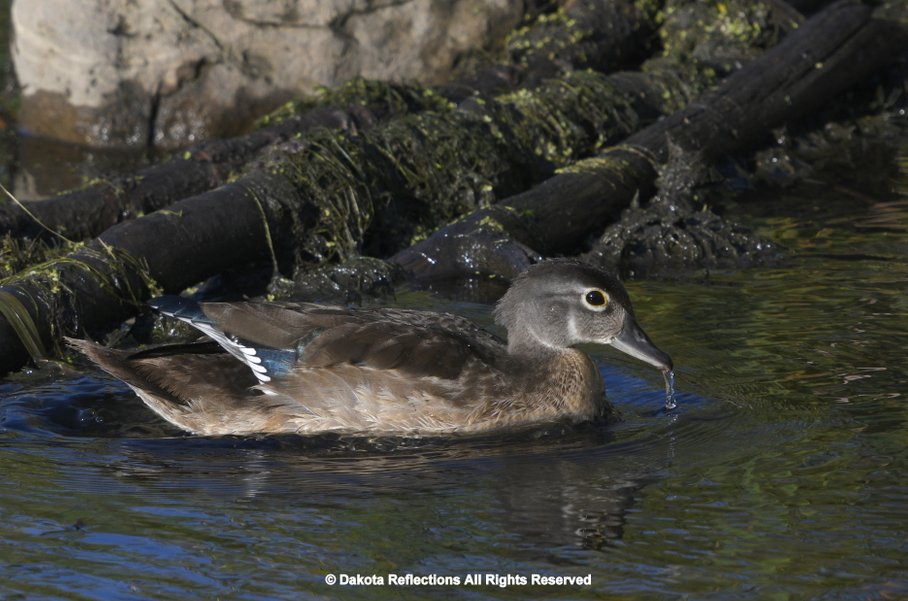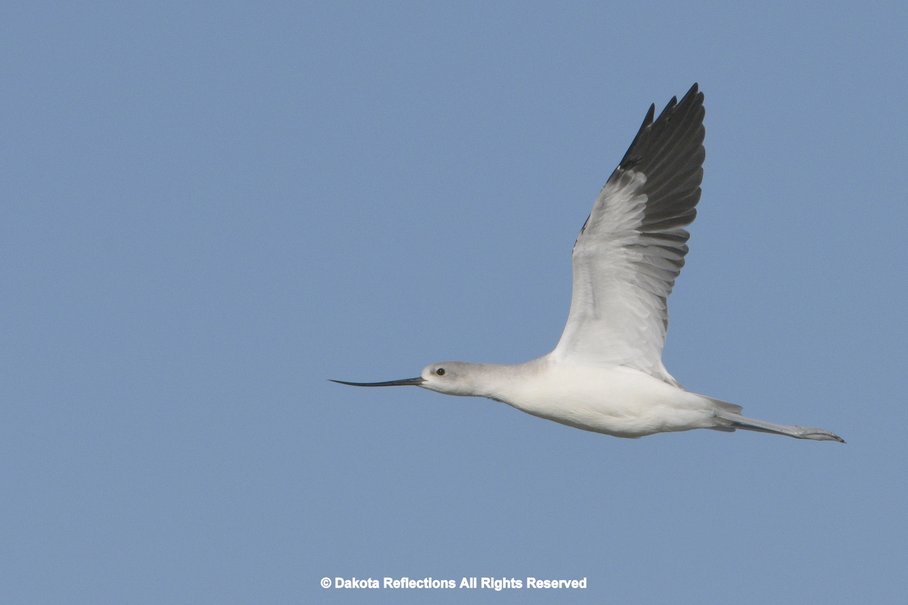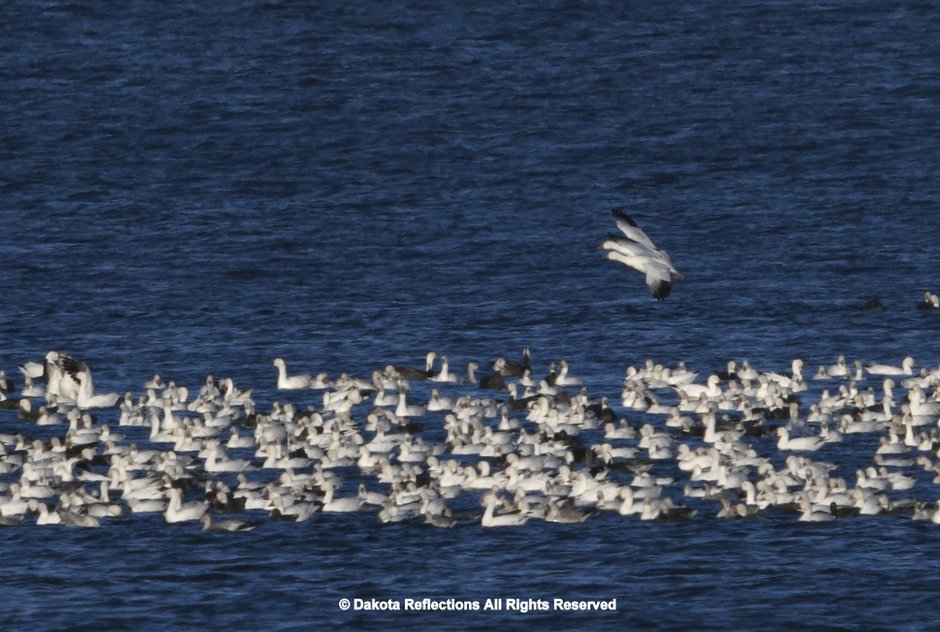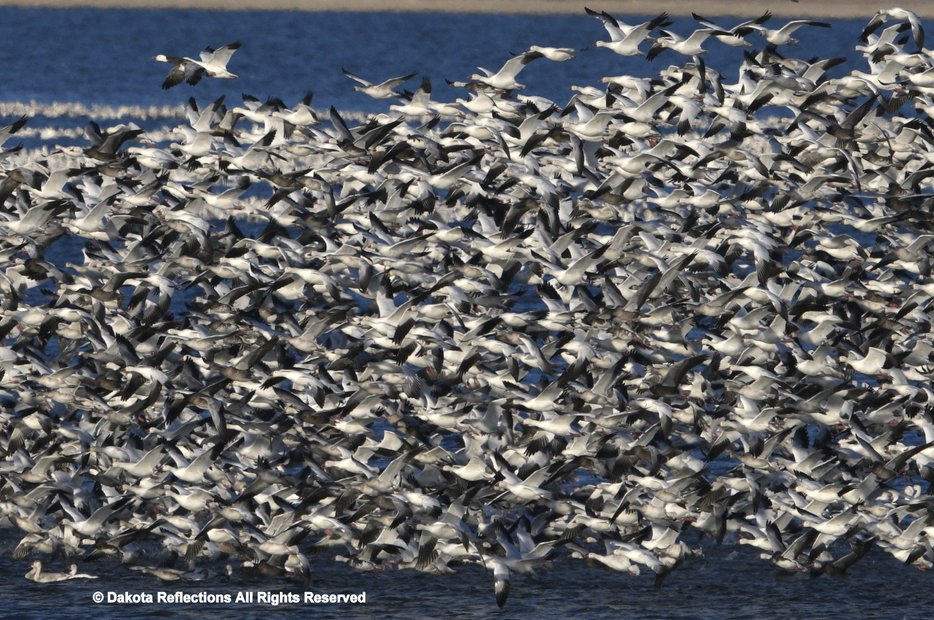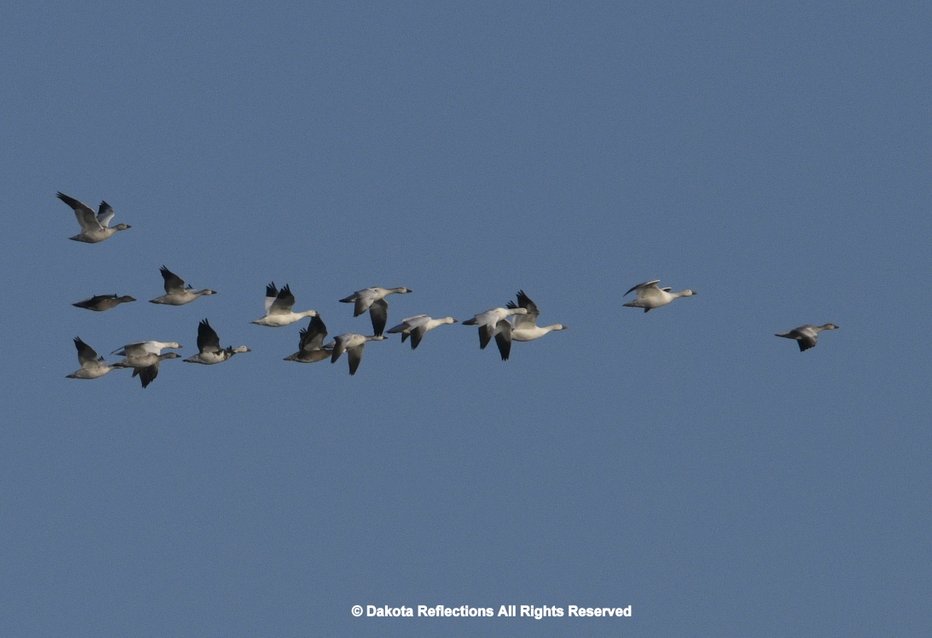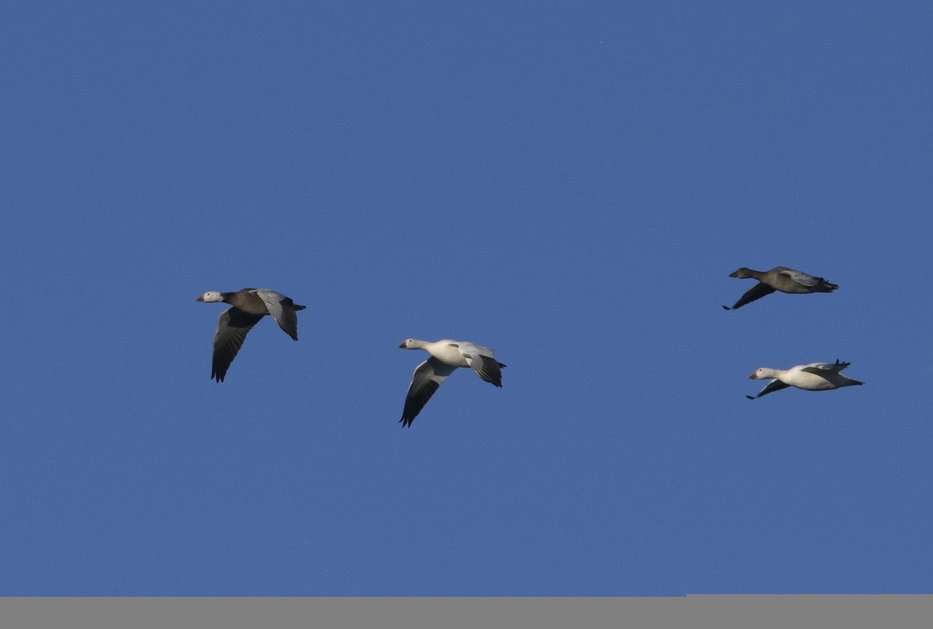Dakota Reflections
The prairie pothole region of the northern plains is a result of the last glaciation ice age of 10,000 years ago. The Dakotas, Minnesota, Iowa and parts of Montana comprise the pothole region as do Manitoba, Saskatchewan and Alberta provinces in Canada. The shallow ponds, lakes and sloughs are important habitat for migrating waterfowl and other birds. Kidder County, just east of Burleigh County, is one of the top birding sites in the United States.
Dakota Waterbirds
White-faced Ibis
Prairie Pothole Region
Prairie potholes are important natural resources for people as well as waterfowl. They provide valuable, but often under-appreciated, ecosystem services that help people commercially, ecologically, and economically. They serve as natural sponges that hold excess water, which helps reduce the severity and risk of downstream flooding. They also recharge groundwater systems that supply water to farmlands and wells in the region. In addition, the potholes provide water and forage for livestock. And birders, as well as hunters, use the prairie potholes region as a destination for finding birds .Sweeping across five states (Montana, North Dakota, South Dakota, Minnesota, and Iowa) and three Canadian provinces (Alberta, Saskatchewan, and Manitoba), North America's prairie potholes are an important habitat and natural resource of the Great Plains grasslands. As ancient glaciers retreated over 10,000 years ago, millions of shallow depressions were left in the Earth. These round depressions often fill with snowmelt and water in the spring, especially in wetter years, creating valuable seasonal wetlands that support rich plant and animal life. Many millions of ducks and other waterfowl come to the prairie pothole region every year to feed and breed. The 64 million acres of the prairie potholes in the United States have 18 species of waterfowl, 96 species of songbirds, 36 species of waterbirds, 17 species of raptors, and five species of upland game birds. The prairie pothole region is home to more than 50 percent of North American migratory waterfowl. Waterfowl breeding here include the pintail, gadwall, blue-winged teal, shoveler, canvasback, and redhead. Many other migratory birds—such as the snow goose, lesser scaup, and wigeon—pass through the region on their way to or from the Arctic and other northern breeding grounds. The piping plover, American avocet, and Wilson's phalarope are among the shorebirds that breed in the prairie potholes region. Other shorebirds, such as the hudsonian godwit, American golden plover, white-rumped sandpiper, and buff-breasted sandpiper, pass through the potholes during their migration. The U.S. part of the potholes region provides habitat for 40 species of breeding waterbirds, such as American white pelicans, rails, and herons. Many grassland birds are also found in the region, such as the bobolink, sedge wren, Sprague's pipit, Baird's sparrow, and the increasingly rare grasshopper sparrow.
https://www.nwf.org/en/Educational-Resources/Wildlife-Guide/Wild-Places/Prairie-Potholes
White-faced Ibis
Northern Shoveler
Black-crowned Night-Heron
Northern Pintails
Wilson's Snipe
Pectoral Sandpiper
Canada Geese
American Bittern
Wilson's Phalarope
Franklin's Gull
Common Terns
American Bittern
White-faced Ibis
Wood Duck
Mallard
Green-winged Teals
American Avocet
American Avocet
Eared Grebe
Horned Grebe
Marbled Godwit
Canada Geese
Canada Goose
American Coots
Black-crowned Night-Heron
This black-crowned night-heron has found a salamander for breakfast. If you look closely, the heron's eye is partially covered by the nictitating membrane which protects the eye but allows vision. Birds and reptiles use the membrane during activities that may have potential of eye injury, such as trying to subdue your breakfast.
Great Blue Herons
The great blue heron is found throughout much of the United States but they are seasonal to North Dakota. They are the largest heron in North America with a height over 4 feet tall and a wingspan of nearly 6 1/2 feet long.
Canada Geese
American Coot
Black-crowned Night-Heron
Marbled Godwit
Black-crowned Night-Heron
Eared Grebe
Black-crowned Night-Heron
White-faced Ibis
Black-crowned Night-Heron
Wood Duck
Burleigh County
Wood Ducks are unique. The have claws that allow them to perch on and nest in trees. The feed on water plants but also berries, seeds, acorns and insects on land. Wood Duck numbers were critically low in the early 1900s due to habitat loss and overhunting for meat and feathers. The U.S. Migratory Bird Treaty Act of 1918 allowed Wood Duck populations to recover slowly. Many communities promote nesting boxes near lakes and ponds.
Horned Grebe
Long Lake National Wildlife Refuge
Horned Grebes are named from the large patches of yellowish feathers located behind their eyes, called "horns", which they can raise and lower at will.
Northern Shoveler
Long Lake National Wildlife Refuge
Northern shovelers are named from the shape of its bill, which has small, comb-like structures on the edge of the bill that act like sieves, allowing the birds to skim crustaceans and plankton from the water's surface.
American Avocet
Burleigh County
American avocets breed in Western states from Texas and New Mexico to Alberta and Saskatchewan and winter in Texas, California and Central America.
Northern Shovelers
Long Lake National Wildlife Refuge
The breeding drake has an iridescent dark green or blue head, white breast and chestnut belly and flanks. In flight, pale blue forewing feathers are revealed, separated from the green speculum by a white border.
The female is a drab mottled brown like other dabblers, with plumage much like a female mallard, but easily distinguished by the long broad bill, which is gray tinged with orange on cutting edge and lower mandible. The female's forewing is gray.
https://en.wikipedia.org/wiki/Northern_shoveler
Bonaparte's Gull
Burleigh County
The Bonaparte's Gull is the only gull that regularly nests in trees.
Bonaparte's Gull is named after Charles Lucien Bonaparte, who made important contributions to American ornithology while an active member of the Academy of Natural Sciences of Philadelphia during the 1820s.
Ring-billed Gull
Burleigh County
Ring-billed gulls breed near lakes, rivers, or the coast in Canada and the northern United States. They nest colonially on the ground, often on islands.
Common Mergansers
Long Lake National Wildlife Refuge
The common merganser breeds in Canada and northwestern states and winters in southern states. The common merganser eats fish and nests in holes in trees.
White Pelican
Long Lake National Wildlife Refuge
The American white pelican rivals the trumpeter swan, with a similar overall length, as the longest bird native to North America. The species also has the second largest average wingspan of any North American bird, after the California condor. White pelicans breed in southern Canada and in selected areas of western United States.
Willet
Burleigh County
Willets nest in the Northern Plains and the Prairie Provinces of Canada south to north-eastern California, northern Colorado and western Nebraska and winter on the Pacific and Atlantic coasts and Central and South America.
2019 Photographs
Western Grebe Photos
May I Please see the Children's Menu?
Proud Papa on the right had caugh a fish but it was too large for his babies to eat. After several attempts, he dropped it in the water for mom to eat.
When tending their young, Western grebe parents use different types of vocalization to communicate. Ticking is one of the two and is used as an alarm signal. Parents carry their newly hatched young on their backs, and when the parents make ticking sound, this is used as a signal for their chicks to hide their heads beneath the back of their parents and be silent. If chicks are greater than 4 weeks of age, they respond to the ticking by swimming or diving away on their own. When making a ticking sound, the callers do not open their mouths, so it is hard to distinguish who is the maker of the sound. The parent who carries the chicks tend to make the ticking sound more often than those that do not, and both of male and female parents are equally likely to tick. Another vocalization noise is clucking, and this signals for food. When a parent clucks, the young respond to it by poking their head out of their parent back where they are on to receive food. This bird dives for carp, herring, mollusks, crabs, and amphibians, such as salamanders. It often peers below the water before diving. Recent observations suggest that the grebe dives at the bottom of the lake. Some smaller fish are impaled much like herons, with the bill, but others are grasped. Most are swallowed underwater, but some are brought to the surface, pinched, and swallowed.
https://en.wikipedia.org/wiki/Western_grebe
Photo of the Day for August 8, 2019
Children's Menu
Now That is a Meal that I can Handle!
This baby Western Grebe was excited to get a minnow for breakfast!
The western grebe is the largest North American grebe. It is 55–75 cm (22–30 in) long, weighs 795–2,000 g (1.753–4.409 lb) and measures 79–102 cm (31–40 in) across the wings. It is black-and-white, with a long, slender, swan-like neck and red eyes. It is easily confused with Clark's grebe, which shares similar features, body size, behavior and habitat, and hybrids are known. Western grebes nest in colonies on lakes that are mixed with marsh vegetation and open water. Western Grebe nests are made of plant debris and sodden materials, and the nest building begins roughly around late April through June. The construction is done by both sexes and is continued on throughout laying and incubation. This species of water birds is widespread in western North America, so there is no specific place of abundance. It has a spectacular courtship display; two birds will rear up and patter across the water's surface.
https://en.wikipedia.org/wiki/Western_grebe
Photo of the Day for August 10, 2019
Can a Baby Western Grebe Swallow a Big Fish?
Baby Couldn't Hold on to the Fish
Dad Picked up the Fish again and Gave it to Baby!
This Time Baby Got the Fish! Can Baby Swallow It?
Down Went the Fish! The Baby Got Its Breakfast!!
Breakfast in Bed!
The Western Grebe Mom on the left had three babies. The bed for the babies was Mom's back, a floating bed that can move toward food. Every other time that I had seen Dad feeding the babies, fish was on the menu. In fact, only fish was on the menu. Sometimes it was a medium size fish but often it was a menu.
Apparently, dragonflies are also on the menu. Dad on the right had found a large dragonfly. After several attempts, one of the babies was able to grasp the dragonfly and have a wonderful breakfast.
For additional photographs, please see the Water birds page in the Dakota Region tab.
Photo of the Day for August 14, 2019
Three Babies Looking for Breakfast in Bed!
Not a Common Visitor to North Dakota!
This Snowy Egret was photographed on August 20, 2019 in McKenzie Slough in Burleigh County, North Dakota.
Snowy egrets are permanent residents in most of South America and Central America. In the United States, they are often permanent residents along the Atlantic coast north to Virginia Beach, Virginia, along the Gulf Coast, and along the Pacific lowlands from central California southward. During the breeding season, snowy egrets wander north along the Atlantic flyway between the lower Chesapeake Bay and coastal Rhode Island, and up the Pacific Coast to northern California. Snowy egrets also breed in the lower Mississippi Valley westward into eastern Texas.
https://en.wikipedia.org/wiki/Snowy_egret
Photo of the Day for August 20, 2019
Breakfast!
Western Grebe baby on the right is hungry!
Transfer!
Baby got the Fish!
Ready to swallow!
Keep fishing Mom, I am still hungry!
The double-crested cormorant is a member of the cormorant family of seabirds. Its habitat is near rivers and lakes as well as in coastal areas, and is widely distributed across North America, from the Aleutian Islands in Alaska down to Florida and Mexico. Measuring 70–90 cm (28–35 in) in length, it is an all-black bird which gains a small double crest of black and white feathers in breeding season. It has a bare patch of orange-yellow facial skin. Five subspecies are recognized. It mainly eats fish and hunts by swimming and diving. Its feathers, like those of all cormorants, are not waterproof and it must spend time drying them out after spending time in the water. Once threatened by the use of DDT, the numbers of this bird have increased markedly in recent years.
https://en.wikipedia.org/wiki/Double-crested_cormorant
The double-crested cormorant swims low in the water, often with just its neck and head visible, and dives from the surface. It uses its feet for propulsion and is able to dive to a depth of 1.5–7.5 m (4 ft 11 in–24 ft 7 in) for 30–70 seconds. After diving, it spends long periods standing with its wings outstretched to allow them to dry, since they are not fully waterproofed. Food can be found in the sea, freshwater lakes, and rivers. Like all cormorants, the double-crested dives to find its prey. It mainly eats fish, but will sometimes also eat amphibians and crustaceans. Fish are caught by diving under water. Smaller fish may be eaten while the bird is still beneath the surface but bigger prey is often brought to the surface before it is eaten.
https://en.wikipedia.org/wiki/Double-crested_cormorant
The redhead is a medium-sized diving duck. The redhead is 37 cm (15 in) long with an 84 cm (33 in) wingspan. The redhead goes by many names, including the red-headed duck and the red-headed pochard. This waterfowl is easily distinguished from other ducks by the male’s copper colored head and bright blue bill during the breeding season. The redhead is a pochard, a diving duck specially adapted to foraging underwater. Their legs are placed farther back on the body, which makes walking on land difficult, the webbing on their feet is larger than dabbling ducks and their bills are broader, to facilitate underwater foraging. During breeding season, redheads are found across a wide range of North America, from as far north as Northern Canada to the lower United States. Their preferred areas include the intermontane regions of British Columbia, Alberta, Saskatchewan, Manitoba, and the Dakotas with some small localities in Ontario, Quebec and southern United States. These pochards then migrate south to winter in warmer climates. These areas include southern United States where breeding does not occur and extends to Mexico and Guatemala. In either season, redheads use wetlands as their main habitat.
https://en.wikipedia.org/wiki/Redhead_(bird)
The marbled godwit is a large shorebird. On average, it is the largest of the 4 species of godwit. The total length is 40–50 cm (16–20 in), including a large bill of 8–13 cm (3.1–5.1 in), and wingspan is 70–88 cm (28–35 in). Body mass can vary from 240 to 510 g (8.5 to 18.0 oz). Adults have long blue-grey hairy legs and a very long pink bill with a slight upward curve and dark at the tip. The long neck, breast and belly are pale brown with dark bars on the breast and flanks. The back is mottled and dark. They show cinnamon wing linings in flight. They nest on the ground, usually in short grass. These birds forage by probing on mudflats, in marshes, or at the beach. When the tide is out, they eat. In short grass, they may pick up insects by sight. They mainly eat insects and crustaceans, but also eat parts of aquatic plants. Marbled Godwits breed in three distinct areas with their own unique route. The vast majority occur in mid-continental North America, followed by Eastern Canada and the Alaska Peninsula, USA. In addition, the largest winter ranges are the Atlantic, Pacific and Gulf coasts of the USA and Mexico. Godwits breeding in the Western USA and Canada follow a route through the Utah stopover site, with a final arrival in the winter sites of Mexico. Species breeding in Eastern Canada migrate across the USA and stopover at sites along the Gulf of California and Mexico. Furthermore, those breeding in North and South Dakota winter in Coastal Georgia. The Bear River Migratory Bird Refuge located at Great Salt Lake in Utah, is one of the most popular stopover sites for Godwits in the spring and fall.
https://en.wikipedia.org/wiki/Marbled_godwit
Snow geese breed north of the timberline in Greenland, Canada, Alaska, and the northeastern tip of Siberia, and spend winters in warm parts of North America from southwestern British Columbia through parts of the United States to Mexico. They fly as far south as Texas and Mexico during winter, and return to nest on the Arctic tundra each spring. Snow geese have two color plumage morphs, white (snow) or gray/blue (blue), thus the common description as "snows" and "blues". White-morph birds are white except for black wing tips, but blue-morph geese have bluish-grey plumage replacing the white except on the head, neck and tail tip.
https://en.wikipedia.org/wiki/Snow_goose
2020 Photographs
Snow Geese
McKenzie Slough, Burleigh County, North Dakota
March 13, 2020
Snow geese
Greater white-fronted geese
Greater white-fronted Geese
McKenzie Slough, Burleigh County, North Dakota
March 13, 2020
The greater white-fronted goose is named for the patch of white feathers bordering the base of its bill. Even more distinctive are the salt-and-pepper markings on the breast of adult birds, which is why the goose is colloquially called the "specklebelly" in North America. The North American midcontinent birds of the subspecies A. a. gambeli – which in 2010 had a fall population of about 710,000 birds – breeds from the Alaska North Slope across the western and central Canadian Arctic. The midcontinent geese gather in early fall on the prairies of western Saskatchewan and eastern Alberta, spending several weeks feeding before heading to wintering areas near the Gulf of Mexico, into northern Mexico.
https://en.wikipedia.org/wiki/Greater_white-fronted_goose
Greater White-fronted Geese
McKenzie Slough, Burleigh County, North Dakota
Photo of the Day- October 13, 2020
Snow geese
The snow goose has two color plumage morphs, white (snow) or gray/blue (blue), thus the common description as "snows" and "blues". White-morph birds are white except for black wing tips, but blue-morph geese have bluish-grey plumage replacing the white except on the head, neck and tail tip. The immature blue phase is drab or slate-gray with little to no white on the head, neck, or belly. Both snow and blue phases have rose-red feet and legs, and pink bills. The colors are not as bright on the feet, legs, and bill of immature birds. The head can be stained rusty-brown from minerals in the soil where they feed. They are very vocal and can often be heard from more than a mile away. White- and blue-morph birds interbreed and the offspring may be of either morph. These two colors of geese were once thought to be separate species; since they interbreed and are found together throughout their ranges, they are now considered two color phases of the same species. The color phases are genetically controlled. The dark phase results from a single dominant gene and the white phase is homozygous recessive. When choosing a mate, young birds will most often select a mate that resembles their parents' coloring. If the birds were hatched into a mixed pair, they will mate with either color phase.
https://en.wikipedia.org/wiki/Snow_goose
Snow Geese
McKenzie Slough, Burleigh County, North Dakota
March 27, 2020
Snow Geese
McKenzie Slough, Burleigh County, North Dakota
March 27, 2020
Snow Geese
McKenzie Slough, Burleigh County, North Dakota
March 27, 2020
Snow Geese
McKenzie Slough, Burleigh County, North Dakota
March 27, 2020
Snow Geese
McKenzie Slough, Burleigh County, North Dakota
March 27, 2020
Snow Geese
McKenzie Slough, Burleigh County, North Dakota
March 27, 2020
Snow Geese
McKenzie Slough, Burleigh County, North Dakota
March 27, 2020
Snow Geese
McKenzie Slough, Burleigh County, North Dakota
March 27, 2020
Snow Geese
McKenzie Slough, Burleigh County, North Dakota
March 27, 2020
Snow Geese
Burleigh County, North Dakota
November 3, 2020
Snow Goose
McLean County, North Dakota
November 6, 2020
Snow Goose
McLean County, North Dakota
November 6, 2020
Snow Geese
McLean County, North Dakota
November 6, 2020
Snow Geese
McLean County, North Dakota
November 6, 2020
Snow Geese
McLean County, North Dakota
November 6, 2020
Snow Geese
McLean County, North Dakota
November 6, 2020
Snow Geese
McLean County, North Dakota
Photo of the Day November 6, 2020
Canada Geese
Canada Goose
McKenzie Slough, Burleigh County, North Dakota
April 12, 2020
Canada Goose Nest
McKenzie Slough, Burleigh County, North Dakota
April 12, 2020
On the Nest!
Canada Goose
McKenzie Slough, Burleigh County, North Dakota
April 15, 2020
Canada Geese
McKenzie Slough, Burleigh County, North Dakota
April 7, 2020
Early morning and fog on way to Theodore Roosevelt National Park
Canada Geese
Sweet Briar Lake, Morton County, North Dakota
May 11, 2020
Following Mom and Dad!
Canada Geese
Burleigh County, North Dakota
May 19, 2020
Following Mom and Dad!
Canada Geese
Burleigh County, North Dakota
May 19, 2020
Heads above the Foxtails!
Canada Geese
Burleigh County, North Dakota
Photo of the Day July 12, 2020
Mallards
The mallard is a medium-sized waterfowl species that is often slightly heavier than most other dabbling ducks. It is 50–65 cm (20–26 in) long – of which the body makes up around two-thirds – has a wingspan of 81–98 cm (32–39 in) and weighs 0.72–1.58 kg (1.6–3.5 lb). The breeding male mallard is unmistakable, with a glossy bottle-green head and a white collar that demarcates the head from the purple-tinged brown breast, grey-brown wings, and a pale grey belly. The rear of the male is black, with white-bordered dark tail feathers. The bill of the male is a yellowish-orange tipped with black, with that of the female generally darker and ranging from black to mottled orange and brown. The female mallard is predominantly mottled, with each individual feather showing sharp contrast from buff to very dark brown, a coloration shared by most female dabbling ducks, and has buff cheeks, eyebrow, throat, and neck, with a darker crown and eye-stripe. The mallard is widely distributed across the Northern and Southern Hemispheres; in North America its range extends from southern and central Alaska to Mexico, the Hawaiian Islands, across the Palearctic, from Iceland and southern Greenland and parts of Morocco (North Africa) in the west, Scandinavia and Britain to the north, and to Siberia, Japan, and South Korea. Also in the east, it ranges to south-eastern and south-western Australia and New Zealand in the Southern hemisphere. It is strongly migratory in the northern parts of its breeding range, and winters farther south. For example, in North America, it winters south to the southern United States and northern Mexico, but also regularly strays into Central America and the Caribbean between September and May.
https://en.wikipedia.org/wiki/Mallard
Mallards
McKenzie Slough, Burleigh County, North Dakota
Photo of the day- March 30, 2020
Mallards
McKenzie Slough, Burleigh County, North Dakota
March 30, 2020
Mallard
McKenzie Slough, Burleigh County, North Dakota
March 30, 2020
Mallard
McKenzie Slough, Burleigh County, North Dakota
March 30, 2020
Mallards
McKenzie Slough, Burleigh County, North Dakota
March 30, 2020
Mallards
McKenzie Slough, Burleigh County, North Dakota
April 4, 2020
Mallard
McKenzie Slough, Burleigh County, North Dakota
April 4, 2020
Mallard
McKenzie Slough, Burleigh County, North Dakota
April 4, 2020
Mallard
McKenzie Slough, Burleigh County, North Dakota
April 4, 2020
Mallard
McKenzie Slough, Burleigh County, North Dakota
April 14, 2020
Mallard
McKenzie Slough, Burleigh County, North Dakota
April 15, 2020
Mallard
McKenzie Slough, Burleigh County, North Dakota
April 15, 2020
Mallard
McKenzie Slough, Burleigh County, North Dakota
April 15, 2020
Blue Headed Mallard
Long Lake National Wildlife Refuge, North Dakota
April 16, 2020
Blue Headed Mallard
Long Lake National Wildlife Refuge, North Dakota
April 16, 2020
Blue Headed Mallard
Long Lake National Wildlife Refuge, North Dakota
April 16, 2020
Blue Headed Mallard
Long Lake National Wildlife Refuge, North Dakota
May 17, 2020
Mallard
McKenzie Slough, Burleigh County, North Dakota
June 5, 2020
Common Goldeneyes
Common goldeneyes are aggressive and territorial ducks, and have elaborate courtship displays. Adult males ranges from 45–51 cm (18–20 in) and weigh approximately 1,000 g (2.2 lb), while females range from 40–50 cm (16–20 in) and weigh approximately 800 g (1.8 lb). The species is named for its golden-yellow eye. Adult males have a dark head with a greenish gloss and a circular white patch below the eye, a dark back and a white neck and belly. Adult females have a brown head and a mostly grey body. Their legs and feet are orange-yellow. Their breeding habitat is the taiga. They are found in the lakes and rivers of boreal forests across Canada and the northern United States, Scandinavia, the Baltic States, and northern Russia. They are migratory and most winter in protected coastal waters or open inland waters at more temperate latitudes. Naturally, they nest in cavities in large trees, where they return year after year, though they will readily use nest boxes as well.
https://en.wikipedia.org/wiki/Common_goldeneye
Northern Shovelers
The northern shoveler, is a common and widespread duck. It breeds in northern areas of Europe and across the Palearctic and across most of North America, wintering in southern Europe, Africa, the Indian subcontinent, Southeast Asia, and Central, and northern South America. It is a rare vagrant to Australia. In North America, it breeds along the southern edge of Hudson Bay and west of this body of water, and as far south as the Great Lakes west to Colorado, Nevada, and Oregon. This species is unmistakable in the northern hemisphere due to its large spatulate bill. Northern shovelers feed by dabbling for plant food, often by swinging its bill from side to side and using the bill to strain food from the water. They use their highly specialized bill (from which their name is derived) to forage for aquatic invertebrates – a carnivorous diet. Their wide-flat bill is equipped with well-developed lamellae – small, comb-like structures on the edge of the bill that act like sieves, allowing the birds to skim crustaceans and plankton from the water's surface.
https://en.wikipedia.org/wiki/Northern_shoveler
Northern Shoveler
McKenzie Slough, Burleigh County, North Dakota
April 7, 2020
Northern Shoveler
McKenzie Slough, Burleigh County, North Dakota
April 7, 2020
Northern Shovelers
McKenzie Slough, Burleigh County, North Dakota
April 7, 2020
Northern Shoveler
McKenzie Slough, Burleigh County, North Dakota
April 7, 2020
Northern Shoveler
McKenzie Slough, Burleigh County, North Dakota
April 7, 2020
Northern Shoveler
Long Lake National Wildlife Refuge, North Dakota
April 7, 2020
Female Northern Shoveler shoveling for Food!
Long Lake National Wildlife Refuge, North Dakota
April 7, 2020
Male Northern Shoveler shoveling for Food!
Long Lake National Wildlife Refuge, North Dakota
April 7, 2020
Northern Shoveler
McKenzie Slough, Burleigh County, North Dakota
March 31, 2020
Northern Shoveler
McKenzie Slough, Burleigh County, North Dakota
April 12, 2020
Northern Shoveler
McKenzie Slough, Burleigh County, North Dakota
April 12, 2020
Northern Shoveler
McKenzie Slough, Burleigh County, North Dakota
April 12, 2020
Where is my Landing Spot?
These Northern shovelers were trying to land amidst a large group of other ducks who were vigorously feeding at the time. The pond that they were residing in must have had a lot of food as approximately 60 ducks were feeding very close to each other. Northern shovelers have very large bills that resemble a shovel and hence their name. They use their shovel bills to strain food from the water- mainly crustaceans and plankton. They did a good job in landing and were able to find a small area of open water and join the feeding frenzy!
Northern Shoveler
McKenzie Slough, Burleigh County, North Dakota
April 17, 2020
Like Water off a Duck's Back!
Northern Shoveler
McKenzie Slough, Burleigh County, North Dakota
April 19, 2020
Look at that Tongue!
Northern Shoveler
McKenzie Slough, Burleigh County, North Dakota
April 27, 2020
Shoveling!
Northern Shoveler
McKenzie Slough, Burleigh County, North Dakota
May 17, 2020
Northern Pintails and Northern Shovelers
The Northern shoveler female on the right has a much broader bill than the Northern pintail female in the center.
The pintail or northern pintail is a duck with wide geographic distribution that breeds in the northern areas of Europe and across the Palearctic and North America. It is migratory and winters south of its breeding range to the equator. The northern pintail is a bird of open wetlands which nests on the ground, often some distance from water. It feeds by dabbling for plant food and adds small invertebrates to its diet during the nesting season. It is highly gregarious when not breeding, forming large mixed flocks with other species of duck. The pintail walks well on land, and swims well. It has a very fast flight, with its wings slightly swept-back, rather than straight out from the body like other ducks. The pintail feeds by dabbling and upending in shallow water for plant food mainly in the evening or at night, and therefore spends much of the day resting. Its long neck enables it to take food items from the bottom of water bodies up to 30 cm (12 in) deep, which are beyond the reach of other dabbling ducks like the Mallard.
https://en.wikipedia.org/wiki/Northern_pintail
Northern Pintail
Burleigh County, North Dakota
Photo of the day- April 15, 2020
Northern Pintail
McKenzie Slough, Burleigh County, North Dakota
April 15, 2020
Northern Pintail
McKenzie Slough, Burleigh County, North Dakota
May 2, 2020
Northern Pintail
McKenzie Slough, Burleigh County, North Dakota
May 14, 2020
Northern Pintail
McKenzie Slough, Burleigh County, North Dakota
May 14, 2020
Northern Pintails
McKenzie Slough, Burleigh County, North Dakota
May 14, 2020
Northern Pintail
McKenzie Slough, Burleigh County, North Dakota
May 15, 2020
Northern Pintail
McKenzie Slough, Burleigh County, North Dakota
May 17, 2020
Northern Pintail
McKenzie Slough, Burleigh County, North Dakota
May 17, 2020
Northern Pintails and Mallards
Northern Pintails and Mallards
McKenzie Slough, Burleigh County, North Dakota
Photo of the day- April 4, 2020
Lesser Scaup
The lesser scaup is a small North American diving duck that migrates south as far as Central America in winter. It is colloquially known as the little bluebill or broadbill because of its distinctive blue bill. The origin of the name scaup may stem from the bird's preference for feeding on scalp—the Scottish word for clams, oysters, and mussels; however, some credit it to the female's discordant scaup call as the name's source. Their breeding habitat is inland lakes and marsh ponds in tundra from Alaska through western Canada to western Montana; few breed east of James Bay and the Great Lakes. Notable breeding concentrations, with more than half a million birds at the height of the season, can be found in Alaska, in the woodlands of the McKenzie River valley and on the Old Crow Flats. These birds migrate south (mostly via the Central and Mississippi Flyways) when the young are fledged and return early spring, usually arriving on the breeding ground in May. Lesser scaup typically travel in flocks of 25–50 birds and winter mainly on lakes, rivers and sheltered coastal lagoons and bays between the US–Canada border and northern Colombia, including Central America, the West Indies and Bermuda.
https://en.wikipedia.org/wiki/Lesser_scau
Lesser Scaup
McKenzie Slough, Burleigh County, North Dakota
April 15, 2020
Lesser Scaups and Bafflehead!
Burleigh County, North Dakota
April 5, 2020
Gadwalls
The gadwall is a common and widespread dabbling duck. The gadwall breeds in the northern areas of Europe and across the Palearctic, and central North America. In North America, its breeding range lies along the Saint Lawrence River, through the Great Lakes, Alberta, Saskatchewan, the Dakotas, south to Kansas, west to California, and along coastal Pacific Canada and southern coastal Alaska. The range of this bird appears to be expanding into eastern North America. This dabbling duck is strongly migratory, and winters farther south than its breeding range, from coastal Alaska, south into Central America, and east into Idaho, Kansas, Ohio, Virginia, and then south all the way into Central America.
https://en.wikipedia.org/wiki/Gadwall
Gadwell!
McKenzie Slough, Burleigh County, North Dakota
April 4, 2020
Gadwell!
McKenzie Slough, Burleigh County, North Dakota
April 16, 2020
Green-winged Teals
The green-winged teal is a common and widespread duck that breeds in the northern areas of North America except on the Aleutian Islands. This dabbling duck is strongly migratory and winters far south of its breeding range. It is highly gregarious outside of the breeding season and will form large flocks. In flight, the fast, twisting flocks resemble waders. This is the smallest North American dabbling duck. The breeding male has grey flanks and back, with a yellow rear end and a white-edged green speculum, obvious in flight or at rest. It has a chestnut head with a green eye patch. Green-winged teal, more than any other species of duck, prefer to seek food on mud flats. Where mud flats are lacking, they prefer shallow marshes or temporarily flooded agricultural lands. They usually eat vegetative matter consisting of seeds, stems, and leaves of aquatic and emergent vegetation. Green-winged teal appear to prefer the small seeds of nutgrasses, millets, and sedges to larger seeds, but they also consume corn, wheat, barley, and buttonbush seeds. In marshes, sloughs, and ponds, green-winged teal select the seeds of bulrushes, pondweeds, and spikerushes.
https://en.wikipedia.org/wiki/Green-winged_teal
Green-winged Teals and Northern Pintails!
McKenzie Slough, Burleigh County, North Dakota
April 4, 2020
Green-winged Teal
McKenzie Slough, Burleigh County, North Dakota
April 14, 2020
Green-winged Teal
McKenzie Slough, Burleigh County, North Dakota
April 14, 2020
Green-winged Teal
McKenzie Slough, Burleigh County, North Dakota
April 24, 2020
Green-winged Teal
McKenzie Slough, Burleigh County, North Dakota
April 24, 2020
Green-winged Teal
McKenzie Slough, Burleigh County, North Dakota
April 24, 2020
Green-winged Teal
McKenzie Slough, Burleigh County, North Dakota
April 24, 2020
Green-winged Teal
McKenzie Slough, Burleigh County, North Dakota
June 3, 2020
Blue-winged Teals
Blue-winged Teal
McKenzie Slough, Burleigh County, North Dakota
April 15, 2020
The blue-winged teal is one of the smaller members of the dabbling duck group, it occurs in North America, where it breeds from southern Alaska to Nova Scotia, and south to northern Texas. It winters along the Pacific and Atlantic coasts and south into the Caribbean islands and Central America. The blue-winged teal is 40 cm (16 in) long, with a wingspan of 58 cm (23 in), and a weight of 370 g (13 oz).[8] The adult male has a greyish blue head with a white facial crescent, a light brown body with a white patch near the rear and a black tail. The adult female is mottled brown, and has a whitish area at base of bill. Both sexes have sky-blue wing coverts, a green speculum, and yellow legs.
https://en.wikipedia.org/wiki/Blue-winged_teal
Blue-winged Teal
McKenzie Slough, Burleigh County, North Dakota
April 17, 2020
Purple Head!
Blue-winged Teal
McKenzie Slough, Burleigh County, North Dakota
April 27, 2020
Morning Reflection!
Blue-winged Teal
McKenzie Slough, Burleigh County, North Dakota
May 14, 2020
Common Merganser
Common Mergansers!
Long Lake National Wildlife Refuge, North Dakota
April 5, 2020
The common merganser is a large seaduck of rivers and lakes in forested areas of North America. The common merganser eats fish and nests in holes in trees. Like the other mergansers, these ducks have serrated edges to their bills to help them grip their prey, so they are often known as "sawbills". In addition to fish, they take a wide range of other aquatic prey, such as molluscs, crustaceans, worms, insect larvae, and amphibians; more rarely, small mammals and birds may be taken.
https://en.wikipedia.org/wiki/Common_merganser
Common Merganser
Long Lake National Wildlife Refuge, North Dakota
April 7, 2020
American White Pelicans
American White Pelicans!
Long Lake National Wildlife Refuge, North Dakota
April 5, 2020
The American white pelican is a large aquatic soaring bird from the order Pelecaniformes. It breeds in interior North America, moving south and to the coasts, as far as Central America and South America, in winter. The American white pelican rivals the trumpeter swan, with a similar overall length, as the longest bird native to North America. Both very large and plump, it has an overall length of about 50–70 in (130–180 cm), courtesy of the huge beak which measures 11.3–15.2 in (290–390 mm) in males and 10.3–14.2 in (260–360 mm) in females. It has a wingspan of about 95–120 in (240–300 cm). The species also has the second largest average wingspan of any North American bird, after the California condor. This large wingspan allows the bird to easily use soaring flight for migration. Body weight can range between 7.7 and 30 lb (3.5 and 13.6 kg), although typically these birds average between 11 and 20 lb (5.0 and 9.1 kg). Unlike the brown pelican, the American white pelican does not dive for its food. Instead it catches its prey while swimming. Each bird eats more than 4 pounds of food a day, mostly fish such as Common carp), chub, shiners, perch, Rainbow trout, catfish and jackfish. Other animals eaten by these birds are crayfish and amphibians, and sometimes larval salamanders. Birds nesting on saline lakes, where food is scarce, will travel great distances to better feeding grounds.
https://en.wikipedia.org/wiki/American_white_pelican
10 Foot Wingspan!
Second largest average wingspan of any North American bird, after the California condor!
American White Pelican
Long Lake National Wildlife Refuge, North Dakota
April 5, 2020
American White Pelican
Long Lake National Wildlife Refuge, North Dakota
April 15, 2020
American White Pelican
Long Lake National Wildlife Refuge, North Dakota
April 15, 2020
American White Pelican
Oliver County, North Dakota
May 10, 2020
American White Pelican
Oliver County, North Dakota
May 10, 2020
American White Pelicans
Long Lake National Wildlife Refuge, North Dakota
May 17, 2020
American White Pelicans
Long Lake National Wildlife Refuge, North Dakota
May 19, 2020
American White Pelican
Long Lake National Wildlife Refuge, North Dakota
May 19, 2020
American White Pelican
McKenzie Slough, Burleigh County, North Dakota
May 21, 2020
Ready for Takeoff!
American White Pelican
McKenzie Slough, Burleigh County, North Dakota
May 21, 2020
Leaning Forward!
American White Pelican
McKenzie Slough, Burleigh County, North Dakota
May 21, 2020
Flying!
American White Pelican
McKenzie Slough, Burleigh County, North Dakota
May 21, 2020
American White Pelicans
Long Lake National Wildlife Refuge, North Dakota
May 21, 2020
American White Pelican
McKenzie Slough, Burleigh County, North Dakota
June 7, 2020
American White Pelicans
Long Lake National Wildlife Refuge, North Dakota
June 18, 2020
American White Pelican
McKenzie Slough, Burleigh County, North Dakota
June 27, 2020
Feeding!
American White Pelicans
Kidder County, North Dakota
June 27, 2020
Feeding!
American White Pelicans
Kidder County, North Dakota
June 27, 2020
American White Pelicans
McKenzie Slough, Burleigh County, North Dakota
September 11, 2020
American White Pelican
McKenzie Slough, Burleigh County, North Dakota
September 11, 2020
American White Pelicans
McKenzie Slough, Burleigh County, North Dakota
September 12, 2020
American White Pelican
McKenzie Slough, Burleigh County, North Dakota
November 3, 2020
Great Blue Heron
Great Blue Heron
Burleigh County, North Dakota
April 7, 2020
Great-blue Herons
Burleigh County, North Dakota
April 15, 2020
Great Blue Heron
McKenzie Slough, Burleigh County, North Dakota
May 17, 2020
Great Blue Heron
McKenzie Slough, Burleigh County, North Dakota
May 19, 2020
Great Blue Heron
McKenzie Slough, Burleigh County, North Dakota
May 19, 2020
Graceful Landing!
Great Blue Heron
McKenzie Slough, Burleigh County, North Dakota
Photo of the Day- May 19, 2020
Great Blue Heron
McKenzie Slough, Burleigh County, North Dakota
May 19, 2020
Great Blue Heron
McKenzie Slough, Burleigh County, North Dakota
May 28, 2020
Great Blue Heron
McKenzie Slough, Burleigh County, North Dakota
Photo of the Day- May 28, 2020
Great Blue Heron
McKenzie Slough, Burleigh County, North Dakota
May 28, 2020
Great Blue Heron
McKenzie Slough, Burleigh County, North Dakota
June 26, 2020
Great Blue Heron
McKenzie Slough, Burleigh County, North Dakota
August 29, 2020
Great Blue Heron
McKenzie Slough, Burleigh County, North Dakota
August 29, 2020
Great Blue Heron
McKenzie Slough, Burleigh County, North Dakota
August 29, 2020
Great Blue Heron
McKenzie Slough, Burleigh County, North Dakota
September 4, 2020
Great Blue Heron
McKenzie Slough, Burleigh County, North Dakota
September 4, 2020
Great Blue Heron
McKenzie Slough, Burleigh County, North Dakota
September 4, 2020
Great Blue Heron
McKenzie Slough, Burleigh County, North Dakota
Photo of the Day- September 4, 2020
Great Blue Heron
McKenzie Slough, Burleigh County, North Dakota
September 4, 2020
Great Blue Heron
McKenzie Slough, Burleigh County, North Dakota
September 4, 2020
Great Blue Heron
McKenzie Slough, Burleigh County, North Dakota
September 8, 2020
Great Blue Heron
McKenzie Slough, Burleigh County, North Dakota
September 8, 2020
Great Blue Heron
McKenzie Slough, Burleigh County, North Dakota
September 8, 2020
Great Blue Heron
McKenzie Slough, Burleigh County, North Dakota
September 8, 2020
Great Blue Heron
McKenzie Slough, Burleigh County, North Dakota
Photo of the Day- September 9, 2020
Great Blue Heron
Long Lake National Wildlife Refuge, North Dakota
September 12, 2020
Great Blue Heron
McKenzie Slough, Burleigh County, North Dakota
October 10, 2020
Great Blue Heron
McKenzie Slough, Burleigh County, North Dakota
September 10, 2020
Eared Grebe
Eared Grebe
Long Lake National Wildlife Refuge, North Dakota
April 7, 2020
The black-necked grebe, known in North America as the eared grebe, is a member of the grebe family of water birds. Its breeding plumage features a distinctive ochre-colored plumage which extends behind its eye and over its ear coverts. The rest of the upper parts, including the head, neck, and breast, are colored black to blackish brown. The flanks are tawny rufous to maroon-chestnut, and the abdomen is white. When in its non-breeding plumage, this bird has greyish-black upper parts, including the top of the head and a vertical stripe on the back of the neck. The flanks are also greyish-black. The rest of the body is a white or whitish color. This species is present in parts of Africa, Eurasia, and the Americas. The black-necked grebe uses multiple foraging techniques. Insects, which make up the majority of this bird's diet, are caught either on the surface of the water or when they are in flight. It occasionally practices foliage gleaning. This grebe dives to catch crustaceans, mollusks, tadpoles, and small frogs and fish. When moulting at saline lakes, this bird feeds mostly on brine shrimp. The black-necked grebe makes a floating cup nest on an open lake. The nest cup is covered with a disc. This nest is located both in colonies and by itself. After the chicks hatch, the birds will desert their nest. Even though the young can swim and dive during this time, they rarely do, instead staying on the parents' backs for four days after hatching. This behavior is present in all grebes, and is likely to have evolved because it reduces travel costs, specifically those back to the nest to brood the chicks and give them food. After about 10 days, the parents split the chicks up, with each parent taking care of about half of the brood. After this split, the chicks are independent in about 10 days, and fledge in about three weeks.
https://en.wikipedia.org/wiki/Black-necked_grebe
Eared Grebe
Long Lake National Wildlife Refuge, North Dakota
April 7, 2020
Eared Grebe
Long Lake National Wildlife Refuge, North Dakota
April 7, 2020
Eared Grebe
McKenzie Slough, Burleigh County, North Dakota
June 17, 2020
Eared Grebes
McKenzie Slough, Burleigh County, North Dakota
Photo of the Day- June 26, 2020
Wood Duck
The wood duck is a species of perching duck found in North America. It is one of the most colorful North American waterfowl. The wood duck is a medium-sized duck. A typical adult is from 47 to 54 cm (19 to 21 in) in length with a wingspan of between 66 to 73 cm (26 to 29 in). This is about three-quarters of the length of an adult mallard. The adult male has distinctive multicolored iridescent plumage and red eyes,with a distinctive white flare down the neck. The female, less colorful, has a white eye-ring and a whitish throat. Both adults have crested heads. Their breeding habitat is wooded swamps, shallow lakes, marshes or ponds, and creeks in eastern North America, the west coast of the United States and western Mexico. They usually nest in cavities in trees close to water, although they will take advantage of nesting boxes in wetland locations. Females line their nests with feathers and other soft materials, and the elevation provides some protection from predators. Unlike most other ducks, the wood duck has sharp claws for perching in trees and can, in southern regions, produce two broods in a single season—the only North American duck that can do so. Females typically lay between 7 and 15 white-tan eggs that incubate for an average of 30 days. After hatching, the ducklings climb to the opening of the nest cavity, jump down from the nest tree and make their way to water. The mother calls them to her, but does not help them in any way. They prefer nesting over water so the young have a soft landing, but will nest up to 140 m (460 ft) away from the shoreline. The day after they hatch, the young climb to the nest entrance and jump to the ground. The ducklings can swim and find their own food by this time. These birds feed by dabbling or walking on land. Dabbling means to search for food from the surface of the water, as opposed to diving underneath the surface to scavenge for food. They mainly eat berries, acorns, and seeds, but also insects, making them omnivores. The birds are year-round residents in parts of its southern range, but the northern populations migrate south for the winter.
https://en.wikipedia.org/wiki/Wood_duck
Wood Duck
Burleigh County, North Dakota
April 10, 2020
Wood Duck
Burleigh County, North Dakota
April 24, 2020
Wood Duck
Burleigh County, North Dakota
April 24, 2020
Wood Duck
Burleigh County, North Dakota
April 24, 2020
Wood Duck
Burleigh County, North Dakota
April 24, 2020
Look at Those Colors!
Green, Blue, Purple, Yellow, Red, Pink, White, Black, Violet, Grey
Wood Ducks
Burleigh County, North Dakota
April 24, 2020
Wood Ducks
Burleigh County, North Dakota
April 24, 2020
American Bittern
American Bittern
McKenzie Slough, Burleigh County, North Dakota
April 27, 2020
American Bittern
McKenzie Slough, Burleigh County, North Dakota
April 28, 2020
American Bittern
McKenzie Slough, Burleigh County, North Dakota
April 28, 2020
American Bittern
McKenzie Slough, Burleigh County, North Dakota
April 28, 2020
American Bittern
McKenzie Slough, Burleigh County, North Dakota
Photo of the Day- April 28, 2020
American Bittern
McKenzie Slough, Burleigh County, North Dakota
April 28, 2020
American Bittern
McKenzie Slough, Burleigh County, North Dakota
September 11, 2020
White-faced Ibis
White-faced Ibis
McKenzie Slough, Burleigh County, North Dakota
April 10, 2020
The white-faced ibis is a wading bird that breeds colonially in marshes, usually nesting in bushes or low trees. Its breeding range extends from the western United States south through Mexico, as well as from southeastern Brazil and southeastern Bolivia south to central Argentina, and along the coast of central Chile. Its winter range extends from southern California and Louisiana south to include the rest of its breeding range. The white-faced ibis is very similar to the glossy ibis in its non-breeding plumages, but it tends to be slightly smaller and the plumage color is somewhat warmer. Breeding adults have a pink bare face bordered with white feathers (rather than a bluish bare face with no bordering feathers), a grey bill, and brighter colored, redder legs. Adults have red eyes year-round, whereas glossy ibises have dark eyes. Juveniles of the two species are nearly identical. The white-faced ibis eats a variety of organisms, including many invertebrates such as insects, leeches, snails, crayfish and earthworms. It may also eat vertebrates such as fish, newts, and frogs. Its feeding style is to use its bill to probe for prey. White-faced ibises in captivity live up to fourteen years on average. In the wild, white-faced ibises usually live for nine years; however, the oldest recorded wild white-faced ibis lived for fourteen years and six months.
https://en.wikipedia.org/wiki/White-faced_ibis
White-faced Ibis
McKenzie Slough, Burleigh County, North Dakota
April 10, 2020
White-faced Ibis
McKenzie Slough, Burleigh County, North Dakota
April 10, 2020
White-faced Ibis
McKenzie Slough, Burleigh County, North Dakota
April 10, 2020
White-faced Ibis and Northern Shoveler!
McKenzie Slough, Burleigh County, North Dakota
April 10, 2020
White-faced Ibis and Northern Shoveler!
McKenzie Slough, Burleigh County, North Dakota
April 10, 2020
White-faced Ibis
McKenzie Slough, Burleigh County, North Dakota
April 22, 2020
White-faced Ibis
McKenzie Slough, Burleigh County, North Dakota
April 22, 2020
White-faced Ibis
McKenzie Slough, Burleigh County, North Dakota
April 22, 2020
White-faced Ibis
McKenzie Slough, Burleigh County, North Dakota
April 22, 2020
White-faced Ibis
McKenzie Slough, Burleigh County, North Dakota
Photo of the Day- April 22, 2020
White-faced Ibis
McKenzie Slough, Burleigh County, North Dakota
April 22, 2020
White-face Ibis
McKenzie Slough, Burleigh County, North Dakota
April 24, 2020
Deep Diving!
White-face Ibis
McKenzie Slough, Burleigh County, North Dakota
April 24, 2020
Look at Those Colors!
Green, Purple, Orange, Yellow, Pink, Blue, Yellow-Green, Pink-Purple
White-face Ibis
McKenzie Slough, Burleigh County, North Dakota
April 24, 2020
White-faced Ibis
McKenzie Slough, Burleigh County, North Dakota
April 30, 2020
White-faced Ibis
McKenzie Slough, Burleigh County, North Dakota
April 30, 2020
White-faced Ibis
McKenzie Slough, Burleigh County, North Dakota
Photo of the Day for April 30, 2020
White-faced Ibis
McKenzie Slough, Burleigh County, North Dakota
April 30, 2020
White-faced Ibis
McKenzie Slough, Burleigh County, North Dakota
April 30, 2020
White-faced Ibis
McKenzie Slough, Burleigh County, North Dakotaf
May 2, 2020
White-faced Ibis
McKenzie Slough, Burleigh County, North Dakota
May 2, 2020
White-faced Ibis
McKenzie Slough, Burleigh County, North Dakota
May 2, 2020
Ruby Among the Diamonds!
Reflection from the Reflection
White-faced Ibis
Burleigh County, North Dakota
May 15, 2020
White-faced Ibis
McKenzie Slough, Burleigh County, North Dakota
May 21, 2020
White-faced Ibis
McKenzie Slough, Burleigh County, North Dakota
June 1, 2020
White-faced Ibis
McKenzie Slough, Burleigh County, North Dakota
June 5, 2020
White-faced Ibis
Burleigh County, North Dakota
September 3, 2020
White-faced Ibis
Burleigh County, North Dakota
September 3, 2020
White-faced Ibis
McKenzie Slough, Burleigh County, North Dakota
September 21, 2020
Redheads
Redhead
McKenzie Slough, Burleigh County, North Dakota
April 14, 2020
Redhead
McKenzie Slough, Burleigh County, North Dakota
June 1, 2020
Canvasback
Canvasback
McKenzie Slough, Burleigh County, North Dakota
April 19, 2020
American Wigeon
American Wigeon
Burleigh County, North Dakota
April 17, 2020
The American wigeon, also called a baldpate, is a species of dabbling duck found in North America. The American wigeon is a medium-sized bird; it is larger than a teal, but smaller than a pintail. In silhouette, the wigeon can be distinguished from other dabblers by its round head, short neck, and small bill.[4] It is 42–59 cm (17–23 in) long, with a 76–91 cm (30–36 in) wingspan and a weight of 512–1,330 g (1.129–2.932 lb). The breeding male (drake) is a striking bird with a mask of green feathers around its eyes and a cream colored cap running from the crown of its head to its bill. This white patch gives the wigeon its other common name, baldpate (pate is another word for head). Their belly is also white. In flight, drakes can be identified by the large white shoulder patch on each wing. These white patches flash as the birds bank and turn. In non-breeding (eclipse) plumage, the drake looks more like the female. The hens are much less conspicuous, having primarily gray and brown plumage. Both sexes have a pale blue bill with a black tip, a white belly, and gray legs and feet It is common and widespread, breeding in all but the extreme north of Canada and Alaska and also in the Interior West through Idaho, Colorado, the Dakotas, and Minnesota, as well as eastern Washington and Oregon. The conservation status of this bird is Least Concern. The majority of the population breeds on wetlands in the Boreal Forest and subarctic river deltas of Canada and Alaska. Although wigeon are found in each flyway, they are most numerous in the Pacific Flyway. Key wintering areas here include the Central Valley of California and Washington's Puget Sound. Farther east, the Texas Panhandle and the Gulf Coast of Louisiana and Texas also support large numbers of wintering wigeon.
https://en.wikipedia.org/wiki/American_wigeon
Wilson's Snipe
Wilson's Snipe
McKenzie Slough, Burleigh County, North Dakota
April 16, 2020
Wilson's snipe is a small, stocky shorebird. Its common name commemorates the American ornithologist Alexander Wilson. They breed in marshes, bogs, tundra and wet meadows in Canada and the northern United States and on the Chukchi Peninsula, Russia. They are year-round residents on the U.S. Pacific coast. The eastern population migrates to the southern United States and to northern South America. It may be that climate change causes these birds to move to their breeding range earlier and leave later than 100 years ago. They forage in soft mud, probing or picking up food by sight and eating insects, earthworms, and plant material. Well-camouflaged, they are usually shy and conceal themselves close to ground vegetation, flushing only when approached closely. They fly off in a series of aerial zig-zags to confuse predators.
https://en.wikipedia.org/wiki/Wilson's_snipe
The female Wilson’s Snipe makes a shallow scrape in moist soil, then weaves a lining of coarse grasses to build a nest up to 7 inches across and 3 inches deep. She adds finer grasses to the inside, creating a more elaborate nest than the simple scrapes most shorebirds make. Before and after laying each egg the female adds a few grasses or sedges from the edge of the nest site.
NESTING FACTS- Clutch Size:- 2-4 eggs; Incubation Period: 18-20 days; Egg Description:- Olive brown splotched with dark brown, black or purple.
Condition at Hatching: Active, covered with tan to chestnut down blotched with black, with a white streak on crown and over eye. The chicks leave the nest on the day of hatching.
https://www.allaboutbirds.org/guide/Wilsons_Snipe/lifehistory
Alexander Wilson (July 6, 1766 – August 23, 1813) was a Scottish-American poet, ornithologist, naturalist, and illustrator. Identified by George Ord as the "Father of American Ornithology", Wilson is regarded as the greatest American ornithologist prior to Audubon.
https://en.wikipedia.org/wiki/Alexander_Wilson_(ornithologist)
Look at that Tongue!
Wilson's Snipe
McKenzie Slough, Burleigh County, North Dakota
April 16, 2020
Wilson's Snipe
McKenzie Slough, Burleigh County, North Dakota
April 16, 2020
Wilson's Snipes
McKenzie Slough, Burleigh County, North Dakota
April 18, 2020
Wilson's Snipes
McKenzie Slough, Burleigh County, North Dakota
April 18, 2020
Wilson's Snipes
McKenzie Slough, Burleigh County, North Dakota
April 18, 2020
Wilson's Snipes
McKenzie Slough, Burleigh County, North Dakota
April 18, 2020
Wilson's Snipes
McKenzie Slough, Burleigh County, North Dakota
April 18, 2020
Wilson's Phalarope
Wilson's Phalarope
McKenzie Slough, Burleigh County, North Dakota
May 2, 2020
Wilson's Phalarope
McKenzie Slough, Burleigh County, North Dakota
May 14, 2020
Marbled Godwit
Marbled Godwit
Long Lake National Wildlife Refuge, North Dakota
April 22, 2020
Marbled Godwit
Long Lake National Wildlife Refuge, North Dakota
April 22, 2020
Marbled Godwit and American Avocets
McKenzie Slough, Burleigh County, North Dakota
June 5, 2020
Solitary Sandpiper
Solitary Sandpiper
McKenzie Slough, Burleigh County, North Dakota
May 2, 2020
White-faced Ibis and Solitary Sandpiper
McKenzie Slough, Burleigh County, North Dakota
May 2, 2020
Eared Grebes
Eared Grebes
McKenzie Slough, Burleigh County, North Dakota
May 15, 2020
Western Grebes
Western Grebes
McKenzie Slough, Burleigh County, North Dakota
May 15, 2020
Western Grebes
McKenzie Slough, Burleigh County, North Dakota
May 15, 2020
Western Grebes
Long Lake National Wildlife Refuge, North Dakota
May 17, 2020
Western Grebe
Long Lake National Wildlife Refuge, North Dakota
June 18, 2020
Western Grebes
Long Lake National Wildlife Refuge, North Dakota
June 18, 2020
Western Grebes
Long Lake National Wildlife Refuge, North Dakota
June 18, 2020
Western Grebes
Long Lake National Wildlife Refuge, North Dakota
June 18, 2020
Western Grebes
Long Lake National Wildlife Refuge, North Dakota
June 18, 2020
Western Grebes
Long Lake National Wildlife Refuge, North Dakota
June 18, 2020
Western Grebes
Long Lake National Wildlife Refuge, North Dakota
June 18, 2020
Western Grebes
Long Lake National Wildlife Refuge, North Dakota
June 18, 2020
Western Grebes
Long Lake National Wildlife Refuge, North Dakota
June 18, 2020
Western Grebes
Long Lake National Wildlife Refuge, North Dakota
Photo of the Day- June 18, 2020
American Avocets
American Avocet
McKenzie Slough, Burleigh County, North Dakota
May 15, 2020
The American avocet is a large wader in the avocet and stilt family. This avocet spends much of its time foraging in shallow water or on mud flats, often sweeping its bill from side to side in water as it seeks its crustacean and insect prey. The American avocet is one of four avocet species; the Andean avocet, the pied avocet, and the red-necked avocet are the remaining three species in the genus. During the breeding season, the plumage is brassy orange on the head and neck, continuing somewhat down to the breast. After the breeding season, these bright feathers are swapped out for white and grey ones. American avocets were previously found across most of the United States until extirpated from the East Coast. The breeding habitat consists of marshes, beaches, prairie ponds, and shallow lakes in the mid-west, as far north as southern Canada. These breeding grounds are largely in areas just east of the Rocky Mountains including parts of Alberta, Saskatchewan, Montana, Idaho, Washington, Utah, North and South Dakota, Nebraska, Colorado, and even down to parts of New Mexico, Oklahoma and Texas. Their migration route lands them in almost every state in the western United States. The avocet's wintering grounds are mainly coastal. Along the Atlantic Ocean, they are found in North and South Carolina, Georgia and Florida. There are also wintering grounds along the Gulf of Mexico in Florida, Texas, and Mexico, and along the Pacific Ocean in California and Mexico.
https://en.wikipedia.org/wiki/American_avocet
American Avocet
McKenzie Slough, Burleigh County, North Dakota
Photo of the Day- May 21, 2020
This American Avocet was photographed this week at McKenzie Slough, 20 miles east of Bismarck. They are absolutely gorgeous in their orange spring breeding colors. The American Avocet is a large shorebird that used to found throughout much of the United States. Over hunting in the 1800s resulted in their disappearance in the eastern United States. They winter in southwestern and coastal states and migrate to western states up to Canada in the spring. I hope they stay here so I can see their babies this summer! Welcome back!!
American Avocet
McKenzie Slough, Burleigh County, North Dakota
May 21, 202
American Avocet
McKenzie Slough, Burleigh County, North Dakota
June 5, 2020
American Avocet
McKenzie Slough, Burleigh County, North Dakota
June 5, 2020
American Avocets
McKenzie Slough, Burleigh County, North Dakota
June 5, 2020
American Avocets
McKenzie Slough, Burleigh County, North Dakota
June 5, 2020
Approaching the Nest!
American Avocet
McKenzie Slough, Burleigh County, North Dakota
June 26, 2020
Over the Nest!
American Avocet
McKenzie Slough, Burleigh County, North Dakota
June 26, 2020
Settling Down!
American Avocet
McKenzie Slough, Burleigh County, North Dakota
June 26, 2020
On the Nest!
American Avocet
McKenzie Slough, Burleigh County, North Dakota
June 26, 2020
American Avocet
McKenzie Slough, Burleigh County, North Dakota
September 4, 2020
American Avocet
McKenzie Slough, Burleigh County, North Dakota
September 4, 2020
American Avocet
McKenzie Slough, Burleigh County, North Dakota
September 8, 2020
American Avocets
McKenzie Slough, Burleigh County, North Dakota
September 11, 2020
American Avocets
McKenzie Slough, Burleigh County, North Dakota
September 11, 2020
American Avocet
McKenzie Slough, Burleigh County, North Dakota
September 11, 2020
American Avocet
McKenzie Slough, Burleigh County, North Dakota
September 11, 2020
American Avocet
McKenzie Slough, Burleigh County, North Dakota
September 11, 2020
American Avocet
McKenzie Slough, Burleigh County, North Dakota
September 11, 2020
American Avocet
McKenzie Slough, Burleigh County, North Dakota
September 11, 2020
American Avocets
McKenzie Slough, Burleigh County, North Dakota
September 11, 2020
American Avocets
McKenzie Slough, Burleigh County, North Dakota
September 11, 2020
American Avocets and American White Pelican
McKenzie Slough, Burleigh County, North Dakota
September 11, 2020
American Avocet
McKenzie Slough, Burleigh County, North Dakota
September 12, 2020
American Avocet
McKenzie Slough, Burleigh County, North Dakota
September 21, 2020
American Avocet
McKenzie Slough, Burleigh County, North Dakota
September 29, 2020
American Avocet
McKenzie Slough, Burleigh County, North Dakota
Photo of the Day- September 29, 202
American Avocets
McKenzie Slough, Burleigh County, North Dakota
October 6, 2020
American Avocet
McKenzie Slough, Burleigh County, North Dakota
October 6, 2020
American Avocet
McKenzie Slough, Burleigh County, North Dakota
October 6, 2020
American Avocet
McKenzie Slough, Burleigh County, North Dakota
October 6, 2020
American Avocets
McKenzie Slough, Burleigh County, North Dakota
October 8, 2020
Common Tern
Flying!
Common Tern
McKenzie Slough, Burleigh County, North Dakota
June 3, 2020
Diving!
Common Tern
McKenzie Slough, Burleigh County, North Dakota
June 3, 2020
Breakfast!
Common Tern
McKenzie Slough, Burleigh County, North Dakota
June 3, 2020
This was not an easy photograph to obtain, many, many failures preceded. The common tern hunts by plunge-diving into sloughs to obtain small fish, invertebrate and insects. They quickly grab their prey and fly away. So it is very difficult to quickly focus on their landing spot. Most of my photographs were not in focus but this one was not bad.
Black-necked Stilt
Black-necked Stilt
McKenzie Slough, Burleigh County, North Dakota
June 5, 2020
Black-necked Stilt
McKenzie Slough, Burleigh County, North Dakota
June 5, 2020
American Avocet and Black-necked Stilt
McKenzie Slough, Burleigh County, North Dakota
June 5, 2020
Not a warm welcome last night!
The American avocet on the left took exception as the black-neck stilt on the right was peacefully browsing in a Burleigh County slough. The black-neck stilt is not often seen in North Dakota. They rarely breed in North America outside of California and are most commonly found in Central and South America. They prefer saline ponds and mudflats and those can be found in North Dakota. So it is possible that they will be showing up here more often as the Earth continues to heat up. The stilt was no worse for the wear, it was a big slough and it resumed peacefully browsing.
Black-necked Stilt
McKenzie Slough, Burleigh County, North Dakota
July 8, 2020
Black-necked Stilt and Baby
McKenzie Slough, Burleigh County, North Dakota
July 8, 2020
Stay Away from My Baby!
Black-necked Stilt and Ring-necked Pheasant
McKenzie Slough, Burleigh County, North Dakota
July 8, 2020
Stay Away from My Baby!
Black-necked Stilt and Ring-necked Pheasant
McKenzie Slough, Burleigh County, North Dakota
July 8, 2020
Black-necked Stilt
McKenzie Slough, Burleigh County, North Dakota
July 12, 2020
Black-necked Stilt
McKenzie Slough, Burleigh County, North Dakota
July 12, 2020
Black-crowned Night-heron
Black-crowned Night-heron
McKenzie Slough, Burleigh County, North Dakota
June 7, 2020
Black-crowned Night-heron
McKenzie Slough, Burleigh County, North Dakota
Photo of the Day- June 7, 2020
Black-crowned Night-heron
McKenzie Slough, Burleigh County, North Dakota
June 7, 2020
Black-crowned Night-heron
McKenzie Slough, Burleigh County, North Dakota
June 7, 2020
Black-crowned Night-heron
McKenzie Slough, Burleigh County, North Dakota
June 17, 2020
Black-crowned Night-heron
McKenzie Slough, Burleigh County, North Dakota
June 26, 2020
Black-crowned Night-heron
McKenzie Slough, Burleigh County, North Dakota
June 26, 2020
Black-crowned Night-heron
McKenzie Slough, Burleigh County, North Dakota
June 27, 2020
Black-crowned Night-heron and Common Tern
McKenzie Slough, Burleigh County, North Dakota
June 27, 2020
"Stay away from MY FISHING SPOT!!"
Humans are not the only ones to get upset when someone encroaches on a prime fishing spot. The common tern on the right was fishing with another common tern over a small pond in McKenzie Slough near Bismarck last Saturday. The black-crowned heron on the left flew over the pond and the chase was on! The smaller tern became upset and chased the larger night-heron off the pond! When it comes to birds, it is not always the larger bird who gets the last laugh. It is often the smaller, faster and more mobile bird that scares off the larger bird.
Black-crowned Night-heron and Common Tern
McKenzie Slough, Burleigh County, North Dakota
June 27, 2020
Black-crowned Night-heron
Long Lake National Wildlife Refuge, North Dakota
July 24, 2020
American Coot
American Coots
McKenzie Slough, Burleigh County, North Dakota
June 17, 2020
American Coots
McKenzie Slough, Burleigh County, North Dakota
June 17, 2020
American Coots
McKenzie Slough, Burleigh County, North Dakota
Photo of the Day- June 17, 2020
Double-crested Cormorants
Double-crested Cormorant
McKenzie Slough, Burleigh County, North Dakota
June 23, 2020
Double-crested Cormorant
McKenzie Slough, Burleigh County, North Dakota
Photo of the Day- June 23, 2020
Great Egret
Kidder County, North Dakota
June 27, 2020
Great Egret
Kidder County, North Dakota
June 27, 2020
Great Egret
Kidder County, North Dakota
June 27, 2020
Great Egret
Kidder County, North Dakota
August 2, 2020
Ring-billed Gull
McKenzie Slough, Burleigh County, North Dakota
June 27, 2020
Ring-billed Gull
McKenzie Slough, Burleigh County, North Dakota
June 27, 2020
Scavenger!
Ring-billed Gull
McKenzie Slough, Burleigh County, North Dakota
June 27, 2020
Ring-billed Gull
McKenzie Slough, Burleigh County, North Dakota
August 29, 2020
Ring-billed Gull
McKenzie Slough, Burleigh County, North Dakota
August 29, 2020
Ring-billed Gull
McKenzie Slough, Burleigh County, North Dakota
August 29, 2020
Snowy Egret
Snowy Egret
Kidder County, North Dakota
August 2, 2020
Long-billed Dowitchers
Long-billed Dowitchers
McKenzie Slough, Burleigh County, North Dakota
Photo of the Day- September 11, 2020
Pied-billed Grebe
Pied-billed Grebe
Oliver County, North Dakota
Photo of the Day- September 16, 2020
Greater Yellowlegs
Greater Yellowlegs
McKenzie Slough, Burleigh County, North Dakota
October 9, 2020
Tundra Swans
Tundra Swans
Long Lake National Wildlife Refuge, North Dakota
November 3, 2020
Tundra Swans
Long Lake National Wildlife Refuge, North Dakota
Photo of the Day November 3, 2020
Tundra Swans
Long Lake National Wildlife Refuge, North Dakota
November 3, 2020
Tundra Swans
Long Lake National Wildlife Refuge, North Dakota
November 3, 2020
2021 Photographs
Canada Geese
Canada Goose
McLean County, North Dakota
January 6, 2021
Mallards
Together!
Mallards
Missouri River, McLean County, North Dakota
January 11, 2021
Mallards
Missouri River, McLean County, North Dakota
January 11, 2021
Not often seen in North Dakota in January!
Mallards
Missouri River, McLean County, North Dakota
Photo of the Day- January 11, 2021
Common Mergansers
Common Mergansers
Missouri River, McLean County, North Dakota
January 16, 2021
Together!
Canada Geese
Treasurer County, Montana
February 4, 2021
Stay Away from My Girlfriend!
Canada Geese
Long Lake National Wildlife Refuge, North Dakota
March 9, 2021
Be Alert!
Canada Geese
Long Lake National Wildlife Refuge, North Dakota
March 12, 2021
Landing!
Canada Geese
Long Lake National Wildlife Refuge, North Dakota
March 12, 2021
Canada Geese
McKenzie Slough, Burleigh County, North Dakota
April 3, 2021
Canada Geese
McKenzie Slough, Burleigh County, North Dakota
April 3, 2021
Canada Geese
McKenzie Slough, Burleigh County, North Dakota
April 3, 2021
Canada Geese
McKenzie Slough, Burleigh County, North Dakota
April 3, 2021
Canada Geese
McKenzie Slough, Burleigh County, North Dakota
April 3, 2021
Canada Geese
Sweet Briar Lake, Morton County, North Dakota
May 14, 2021
Canada Geese
Sweet Briar Lake, Morton County, North Dakota
May 14, 2021
Canada Geese
Sweet Briar Lake, Morton County, North Dakota
May 14, 2021
Canada Geese
Sweet Briar Lake, Morton County, North Dakota
May 14, 2021
Northern Pintails
Landing!
Northern Pintails and Mallards
Long Lake National Wildlife Refuge, North Dakota
March 12, 2021
Butt Landing!
Northern Pintails and Mallards
Long Lake National Wildlife Refuge, North Dakota
March 12, 2021
Beautiful!
Northern Pintail
Long Lake National Wildlife Refuge, North Dakota
March 12, 2021
Northern Pintails
Long Lake National Wildlife Refuge, North Dakota
March 25, 2021
Northern Pintails
McKenzie Slough, Burleigh County, North Dakota
May 6, 2021
Not All Birds of a Feather Flock Together!
Ross' Goose and Canada Geese
Burleigh County, North Dakota
March 12, 2021
Beautiful Blue-green Head!
Mallards
Long Lake National Wildlife Refuge, North Dakota
Photo of the Day- March 13, 2021
Beautiful Blue-green Head!
Mallard
Long Lake National Wildlife Refuge, North Dakota
March 13, 2021
Mallard
Long Lake National Wildlife Refuge, North Dakota
March 25, 2021
Mallard
Burleigh County, North Dakota
April 8, 2021
Mallard
Burleigh County, North Dakota
April 8, 2021
Mallards
Burleigh County, North Dakota
April 8, 2021
Mallard
Burleigh County, North Dakota
April 10, 2021
Mallard
Burleigh County, North Dakota
April 8, 2021
Mallard
McKenzie Slough, Burleigh County, North Dakota
May 11, 2021
Gulls
Hungry!
Ring-billed Gull
McKenzie Slough, Burleigh County, North Dakota
March 22, 2021
Can I have That!
Ring-billed Gulls
McKenzie Slough, Burleigh County, North Dakota
March 22, 2021
Look Out!
Ring-billed Gulls and Herring Gulls
McKenzie Slough, Burleigh County, North Dakota
March 22, 2021
Incoming!
Ring-billed Gulls and Herring Gulls
McKenzie Slough, Burleigh County, North Dakota
March 22, 2021
Food Fight!
Ring-billed Gulls and Herring Gulls
McKenzie Slough, Burleigh County, North Dakota
March 22, 2021
Where is the Food?
Ring-billed Gulls
McKenzie Slough, Burleigh County, North Dakota
March 22, 2021
Green-winged Teals
Long Lake National Wildlife Refuge, North Dakota
March 25, 2021
Hooded and Common Mergansers
Long Lake National Wildlife Refuge, North Dakota
Photo of the Day- March 31, 2021
Redhead
Long Lake National Wildlife Refuge, North Dakota
March 31, 2021
Redheads
Long Lake National Wildlife Refuge, North Dakota
March 31, 2021
Snow Geese
Snow Geese and Canada Geese
McKenzie Slough, Burleigh County, North Dakota
April 3, 2021
Snow Geese and Canada Geese
McKenzie Slough, Burleigh County, North Dakota
April 3, 2021
Snow Geese and Canada Geese
McKenzie Slough, Burleigh County, North Dakota
April 3, 2021
Snow Geese and Canada Geese
McKenzie Slough, Burleigh County, North Dakota
April 3, 2021
Snow Geese and Canada Geese
McKenzie Slough, Burleigh County, North Dakota
April 3, 2021
Snow Geese and Canada Geese
McKenzie Slough, Burleigh County, North Dakota
Photo of the Day- April 3, 2021
Snow Geese and Canada Geese
McKenzie Slough, Burleigh County, North Dakota
April 3, 2021
Snow Geese and Canada Geese
McKenzie Slough, Burleigh County, North Dakota
April 3, 2021
Snow Geese and Canada Geese
McKenzie Slough, Burleigh County, North Dakota
April 3, 2021
Snow Geese and Canada Geese
McKenzie Slough, Burleigh County, North Dakota
April 3, 2021
Snow Geese and Canada Geese
McKenzie Slough, Burleigh County, North Dakota
April 3, 2021
Snow Geese and Canada Geese
McKenzie Slough, Burleigh County, North Dakota
April 3, 2021
Snow Geese and Canada Geese
McKenzie Slough, Burleigh County, North Dakota
April 3, 2021
Hooded Mergansers
Hooded Merganser
Burleigh County, North Dakota
April 8, 2021
Hooded Merganser
Burleigh County, North Dakota
April 8, 2021
Hooded Merganser
Burleigh County, North Dakota
April 8, 2021
Hooded Merganser
Burleigh County, North Dakota
April 10, 2021
Hooded Merganser
Burleigh County, North Dakota
April 10, 2021
Hooded Merganser
Burleigh County, North Dakota
April 10, 2021
Hooded Mergansers
Burleigh County, North Dakota
April 10, 2021
Hooded Merganser
Burleigh County, North Dakota
April 10, 2021
Hooded Mergansers
Burleigh County, North Dakota
April 10, 2021
Hooded Merganser
Burleigh County, North Dakota
April 10, 2021
Hooded Merganser
Burleigh County, North Dakota
April 10, 2021
Hooded Merganser
Burleigh County, North Dakota
April 10, 2021
Hooded Merganser
Burleigh County, North Dakota
April 10, 2021
Hooded Mergansers
Burleigh County, North Dakota
April 10, 2021
Hooded Merganser
Burleigh County, North Dakota
April 10, 2021
Hooded Merganser
Burleigh County, North Dakota
April 10, 2021
Hooded Merganser
Burleigh County, North Dakota
April 10, 2021
Hooded Merganser
Burleigh County, North Dakota
April 10, 2021
Hooded Merganser
Burleigh County, North Dakota
April 17, 2021
Great Blue Herons
Large Feet!
Great Blue Heron
Burleigh County, North Dakota
April 8, 2021
Long Tongue!
Great Blue Heron
Burleigh County, North Dakota
April 8, 2021
Landing!
Great Blue Heron
Burleigh County, North Dakota
April 8, 2021
Breakfast Shadow!
Great Blue Heron
Burleigh County, North Dakota
April 8, 2021
Breakfast!
Great Blue Heron
Burleigh County, North Dakota
April 8, 2021
Two for the Price of One!
Great Blue Heron
Burleigh County, North Dakota
April 8, 2021
Wingspan!
Great Blue Heron
Burleigh County, North Dakota
April 8, 2021
Wingspan of 5.5 to 6.6 feet!
Great Blue Heron
Burleigh County, North Dakota
April 10, 2021
Flight Speed 20 to 30 mph!
Great Blue Heron
Burleigh County, North Dakota
April 10, 2021
Gliding!
Great Blue Heron
Burleigh County, North Dakota
April 10, 2021
Great Blue Heron
Burleigh County, North Dakota
April 10, 2021
Great Blue Heron
Burleigh County, North Dakota
April 10, 2021
Great Blue Heron
Burleigh County, North Dakota
Photo of the Day- April 22, 2021
Great Egret
Stabbing Bill!
Great Egret
Burleigh County, North Dakota
April 8, 2021
Wading birds eat fish, crustaceans, mollusks, and other food. They don’t get all of their food from the water, however. Most also eat insects, small reptiles, and other prey found on land. Their bills exhibit special adaptations suited to their habitat and prey. The spear-like bills of herons and egrets are designed to grab and even stab fish. Cranes and ibises use their long bills to probe the mud and soil and forage in grass for food. The spoonbill holds its unique flattened bill partially open, sweeping it from side to side through the water. When it senses prey, the bill snaps shut.
http://www.audubonadventures.org/wading_birds_essay.htm#:~:text=Long%20legs%20help%20keep%20their,in%20water%20and%20squishy%20mud.
Large Feet!
Great Egret
Burleigh County, North Dakota
April 8, 2021
Wading birds do not swim or dive to catch food; rather they wade into shallow water to obtain food not found on land. A close look at the body of a wading bird reveals obvious characteristics that are useful in a watery habitat. A long neck is an adaptation that makes it possible to strike at prey while walking around on extra-long legs. Long legs help keep their feathers high and dry when wading into water in search of food. The benefits of wading birds’ long, thin, spread-out toes are threefold: Thin toes are easier to pick up and put down when walking in water and squishy mud. Spread-out toes keep them from sinking into soft mud in the water and at the water’s edge. And those toes also disperse the weight of these big, tall birds, helping them keep their balance over their long legs.
http://www.audubonadventures.org/wading_birds_essay.htm#:~:text=Long%20legs%20help%20keep%20their,in%20water%20and%20squishy%20mud.
Breakfast!
Great Egret
Burleigh County, North Dakota
April 8, 2021
Breakfast on the Go!
Great Egret
Burleigh County, North Dakota
April 8, 2021
More Breakfast!
Great Egret
Burleigh County, North Dakota
April 8, 2021
Reflection!
Great Egret
Burleigh County, North Dakota
April 8, 2021
Fishing!
Great Egret
Burleigh County, North Dakota
April 8, 2021
Fishing!
Great Egret
Burleigh County, North Dakota
April 8, 2021
The Bully is Coming!
Great Egret
Burleigh County, North Dakota
April 8, 2021
Live to Fish Another Day!
Great Egret
Burleigh County, North Dakota
April 8, 2021
Breeding Plumage!
Great Egret
Burleigh County, North Dakota
April 8, 2021
Breakfast Reflection!
Great Egret
Burleigh County, North Dakota
April 8, 2021
Moving to a New Fishing Location!
Great Egret
Burleigh County, North Dakota
April 8, 2021
Flight Reflection!
Great Egret
Burleigh County, North Dakota
April 8, 2021
Landing!
Great Egret
Burleigh County, North Dakota
April 8, 2021
Spear Fishing!
Great Egret
Burleigh County, North Dakota
April 8, 2021
Got One!
Great Egret
Burleigh County, North Dakota
April 8, 2021
Breakfast Reflection!
Great Egret
Burleigh County, North Dakota
April 8, 2021
More Fishing!
Great Egret
Burleigh County, North Dakota
April 8, 2021
Wow!
Great Egret
Burleigh County, North Dakota
April 8, 2021
Unbelievable!
Great Egret
Burleigh County, North Dakota
Photo of the Day- April 8, 2021
This was one of the most striking photos I have ever taken. It is so rare to have a bird that I have had great difficulty seeing (Great Egret) photographed catching a fish with great reflections of the bird and fish. Circumstances like this happen once or twice a year and last just seconds, never to be seen again.
Fishing Reflection!
Great Egret
Burleigh County, North Dakota
April 8, 2021
Breakfast Reflection!
Great Egret
Burleigh County, North Dakota
April 8, 2021
Fishing Reflection!
Great Egret
Burleigh County, North Dakota
April 8, 2021
Marbled Godwits
Marbled Godwits
McKenzie Slough, Burleigh County, North Dakota
April 24, 2021
Marbled Godwits
McKenzie Slough, Burleigh County, North Dakota
April 24, 2021
Marbled Godwit
McKenzie Slough, Burleigh County, North Dakota
April 24, 2021
Marbled Godwit
McKenzie Slough, Burleigh County, North Dakota
April 24, 2021
Marbled Godwit
McKenzie Slough, Burleigh County, North Dakota
April 24, 2021
Marbled Godwits and Wilson's Snipe
McKenzie Slough, Burleigh County, North Dakota
April 24, 2021
Marbled Godwits
McKenzie Slough, Burleigh County, North Dakota
April 24, 2021
Marbled Godwits
McKenzie Slough, Burleigh County, North Dakota
April 24, 2021
Marbled Godwits
McKenzie Slough, Burleigh County, North Dakota
May 1, 2021
Marbled Godwits
McKenzie Slough, Burleigh County, North Dakota
May 1, 2021
Marbled Godwits
McKenzie Slough, Burleigh County, North Dakota
May 3, 2021
Wood Ducks
In Flight!
Wood Duck
General Sibley Park, Burleigh County, North Dakota
April 30, 2021
Pink Tongue!
Wood Duck
General Sibley Park, Burleigh County, North Dakota
April 30, 2021
Purplish-green hea!
Wood Duck
General Sibley Park, Burleigh County, North Dakota
April 30, 2021
Green Blue and Purple Colors!
Wood Duck
General Sibley Park, Burleigh County, North Dakota
April 30, 2021
Purplish Patch below Eye!
Wood Duck
General Sibley Park, Burleigh County, North Dakota
April 30, 2021
One of a few species of ducks with strong claws on webbed fee!
Wood Duck
General Sibley Park, Burleigh County, North Dakota
April 30, 2021
Green Crown!
Wood Duck
General Sibley Park, Burleigh County, North Dakota
April 30, 2021
Calling for his Mate!
Wood Duck
General Sibley Park, Burleigh County, North Dakota
April 30, 2021
Still Calling!
Wood Duck
General Sibley Park, Burleigh County, North Dakota
April 30, 2021
Take Off!
Wood Duck
General Sibley Park, Burleigh County, North Dakota
April 30, 2021
Flying!
Wood Duck
General Sibley Park, Burleigh County, North Dakota
April 30, 2021
Green-winged Teals
Green-winged Teal
McKenzie Slough, Burleigh County, North Dakota
May 1, 2021
Green-winged Teal
McKenzie Slough, Burleigh County, North Dakota
May 1, 2021
Blue-winged Teals
Blue-winged Teal
McKenzie Slough, Burleigh County, North Dakota
May 11, 2021
Short-billed Dowitchers
Short-billed Dowitcher
McKenzie Slough, Burleigh County, North Dakota
May 1, 2021
Short-billed Dowitchers
McKenzie Slough, Burleigh County, North Dakota
May 3, 2021
American Avocets
American Avocet
McKenzie Slough, Burleigh County, North Dakota
May 1, 2021
American Avocet
McKenzie Slough, Burleigh County, North Dakota
May 1, 2021
American Avocet
McKenzie Slough, Burleigh County, North Dakota
May 1, 2021
American Avocet
McKenzie Slough, Burleigh County, North Dakota
May 10, 2021
American Avocet
McKenzie Slough, Burleigh County, North Dakota
May 28, 2021
American Avocet
McKenzie Slough, Burleigh County, North Dakota
May 28, 2021
American Avocet
McKenzie Slough, Burleigh County, North Dakota
May 28, 2021
American Avocet
McKenzie Slough, Burleigh County, North Dakota
May 30, 2021
American Avocet
McKenzie Slough, Burleigh County, North Dakota
May 30, 2021
Heading to the Nest!
American Avocet
McKenzie Slough, Burleigh County, North Dakota
May 30, 2021
Northern Shoveler
Northern Shovelers
McKenzie Slough, Burleigh County, North Dakota
May 6, 2021
Northern Shovelers
McKenzie Slough, Burleigh County, North Dakota
May 11, 2021
Lesser Yellowlegs
Lesser Yellowlegs
Long Lake National Wildlife Refuge, North Dakota
May 7, 2021
Willets
Willet
Long Lake National Wildlife Refuge, North Dakota
May 7, 2021
Willet
McKenzie Slough, Burleigh County, North Dakota
May 13, 2021
Cattle Egrets
Cattle Egret and Cow
Burleigh County, North Dakota
May 11, 2021
Solitary Sandpiper
Solitary Sandpiper
Burleigh County, North Dakota
May 12, 2021
Common Terns
Common Tern
Burleigh County, North Dakota
May 12, 2021
Common Tern
Burleigh County, North Dakota
May 12, 2021
Killdeer
McKenzie Slough, Burleigh County, North Dakota
May 13, 2021
Eared Grebe
McKenzie Slough, Burleigh County, North Dakota
May 28, 2021
Wilson's Phalarope
McKenzie Slough, Burleigh County, North Dakota
May 28, 2021
Wilson's Phalaropes
McKenzie Slough, Burleigh County, North Dakota
May 30, 2021
Wilson's Phalaropes
McKenzie Slough, Burleigh County, North Dakota
May 30, 2021
Wilson's Phalaropes
McKenzie Slough, Burleigh County, North Dakota
May 30, 2021
Sanderling
McKenzie Slough, Burleigh County, North Dakota
May 30, 2021
Eared Grebe
McKenzie Slough, Burleigh County, North Dakota
July 15, 2021
Eared Grebes
McKenzie Slough, Burleigh County, North Dakota
July 15, 2021
American White Pelicans
McKenzie Slough, Burleigh County, North Dakota
July 15, 2021
American White Pelicans
McKenzie Slough, Burleigh County, North Dakota
July 15, 2021
American Avocets
McKenzie Slough, Burleigh County, North Dakota
August 1, 2021
American Avocets
McKenzie Slough, Burleigh County, North Dakota
August 1, 2021
Black-crowned Night-heron
McKenzie Slough, Burleigh County, North Dakota
August 1, 2021
Black-crowned Night-heron
McKenzie Slough, Burleigh County, North Dakota
August 1, 2021
Black-crowned Night-heron
McKenzie Slough, Burleigh County, North Dakota
August 1, 2021
Sora
McKenzie Slough, Burleigh County, North Dakota
August 5, 2021
White-faced Ibis
McKenzie Slough, Burleigh County, North Dakota
August 8, 2021
American White Pelican
McKenzie Slough, Burleigh County, North Dakota
August 8, 2021
American White Pelican
McKenzie Slough, Burleigh County, North Dakota
August 8, 2021
Great Blue Heron
McKenzie Slough, Burleigh County, North Dakota
August 8, 2021
Great Blue Heron
McKenzie Slough, Burleigh County, North Dakota
August 8, 2021
Great Blue Heron
McKenzie Slough, Burleigh County, North Dakota
August 8, 2021
Great Blue Heron
McKenzie Slough, Burleigh County, North Dakota
August 8, 2021
American Bittern
McKenzie Slough, Burleigh County, North Dakota
August 12, 2021
American Bittern
McKenzie Slough, Burleigh County, North Dakota
August 12, 2021
American Bittern
McKenzie Slough, Burleigh County, North Dakota
August 12, 2021
American Bittern
McKenzie Slough, Burleigh County, North Dakota
August 12, 2021
Can You See Me?
American Bittern
McKenzie Slough, Burleigh County, North Dakota
August 12, 2021
My, What Big Feet I Have!
American Bittern
McKenzie Slough, Burleigh County, North Dakota
August 12, 2021
American White Pelican
McKenzie Slough, Burleigh County, North Dakota
August 12, 2021
Franklin's Gull
McKenzie Slough, Burleigh County, North Dakota
August 12, 2021
Great Blue Heron
McKenzie Slough, Burleigh County, North Dakota
August 12, 2021
White-faced Ibis
McKenzie Slough, Burleigh County, North Dakota
August 10, 2021
American White Pelicans
McKenzie Slough, Burleigh County, North Dakota
August 23, 2021
Great Blue Heron
McKenzie Slough, Burleigh County, North Dakota
August 23, 2021
Great Blue Heron
McKenzie Slough, Burleigh County, North Dakota
August 28, 2021
Great Blue Heron
McKenzie Slough, Burleigh County, North Dakota
August 28, 2021
Great Blue Heron
Burleigh County, North Dakota
August 28, 2021
Juvenile Wood Duck
Burleigh County, North Dakota
August 29, 2021
Juvenile Wood Ducks
Burleigh County, North Dakota
August 29, 2021
Flying for Seeds!
Juvenile Wood Ducks
Burleigh County, North Dakota
August 29, 2021
Flying for Seeds!
Juvenile Wood Ducks
Burleigh County, North Dakota
August 29, 2021
Breakfast!
Juvenile Wood Ducks
Burleigh County, North Dakota
August 29, 2021
Flying for Seeds!
Juvenile Wood Ducks
Burleigh County, North Dakota
August 29, 2021
Flying for Seeds!
Juvenile Wood Ducks
Burleigh County, North Dakota
August 29, 2021
Flying for Seeds!
Juvenile Wood Ducks
Burleigh County, North Dakota
August 29, 2021
Graceful Landing!
Great Blue Heron
McKenzie Slough, Burleigh County, North Dakota
August 25, 2021
Graceful Landing!
Great Blue Heron
McKenzie Slough, Burleigh County, North Dakota
August 25, 2021
Graceful Landing!
Great Blue Heron
McKenzie Slough, Burleigh County, North Dakota
August 25, 2021
Graceful Landing!
Great Blue Heron
McKenzie Slough, Burleigh County, North Dakota
August 25, 2021
Big Yawn!
Great Blue Heron
McKenzie Slough, Burleigh County, North Dakota
August 29, 2021
Morning Stroll!
Great Blue Heron
McKenzie Slough, Burleigh County, North Dakota
August 29, 2021
Grooming!
Great Blue Heron
McKenzie Slough, Burleigh County, North Dakota
August 29, 2021
Juvenile!
Wood Duck
Burleigh County, North Dakota
September 4, 2021
The Surface Tension of Water!
Wood Duck
Burleigh County, North Dakota
September 4, 2021
Not an Easy Photo to Take!
American Avocet
McKenzie Slough, Burleigh County, North Dakota
September 14, 2021
Flight Feathers!
Great Blue Heron
McKenzie Slough, Burleigh County, North Dakota
September 25, 2021
A Rare Perfect Reflection!
American Avocet
McKenzie Slough, Burleigh County, North Dakota
October 2, 2021
Canada and Snow Geese
McKenzie Slough, Burleigh County, North Dakota
Photo of the Day- October 4, 2021
The relative size of Canada (up to 20# 6 ft wingspan) and Snow (up to 8# 5 ft wingspan) Geese can be seen !
Wilson's Snipes
McKenzie Slough, Burleigh County, North Dakota
October 4, 2021
Greater White-fronted Geese
Burleigh County, North Dakota
November 4, 2021
Landing Together!
Snow Geese
Lake Audubon National Wildlife Refuge, North Dakota
November 8, 2021
Escaping a Bald Eagle!
Snow Geese
Lake Audubon National Wildlife Refuge, North Dakota
November 8, 2021
In Formation!
Snow Geese
Lake Audubon National Wildlife Refuge, North Dakota
November 8, 2021
Blue Gosse in the Lead!
Snow Geese
Lake Audubon National Wildlife Refuge, North Dakota
November 8, 2021





